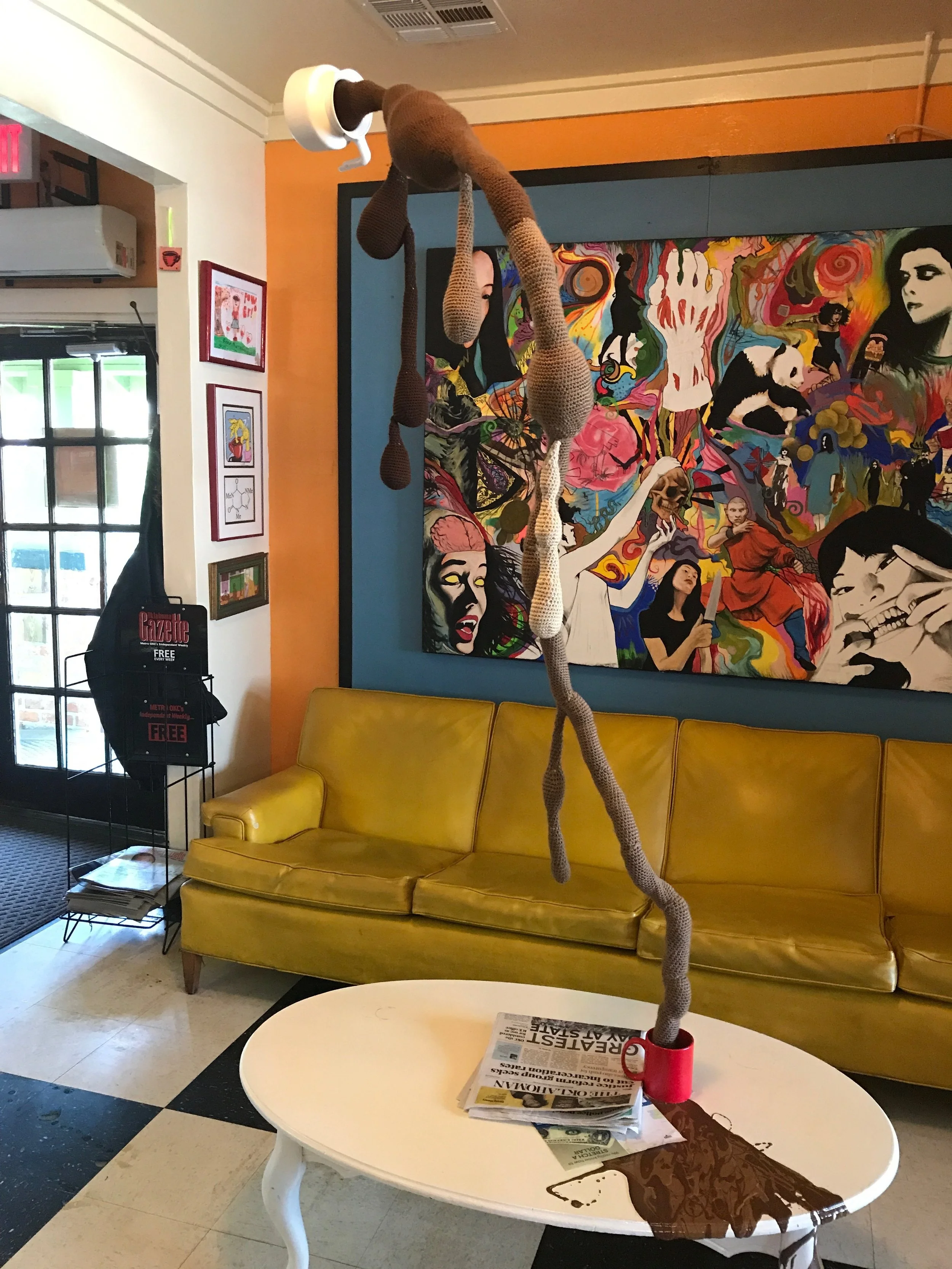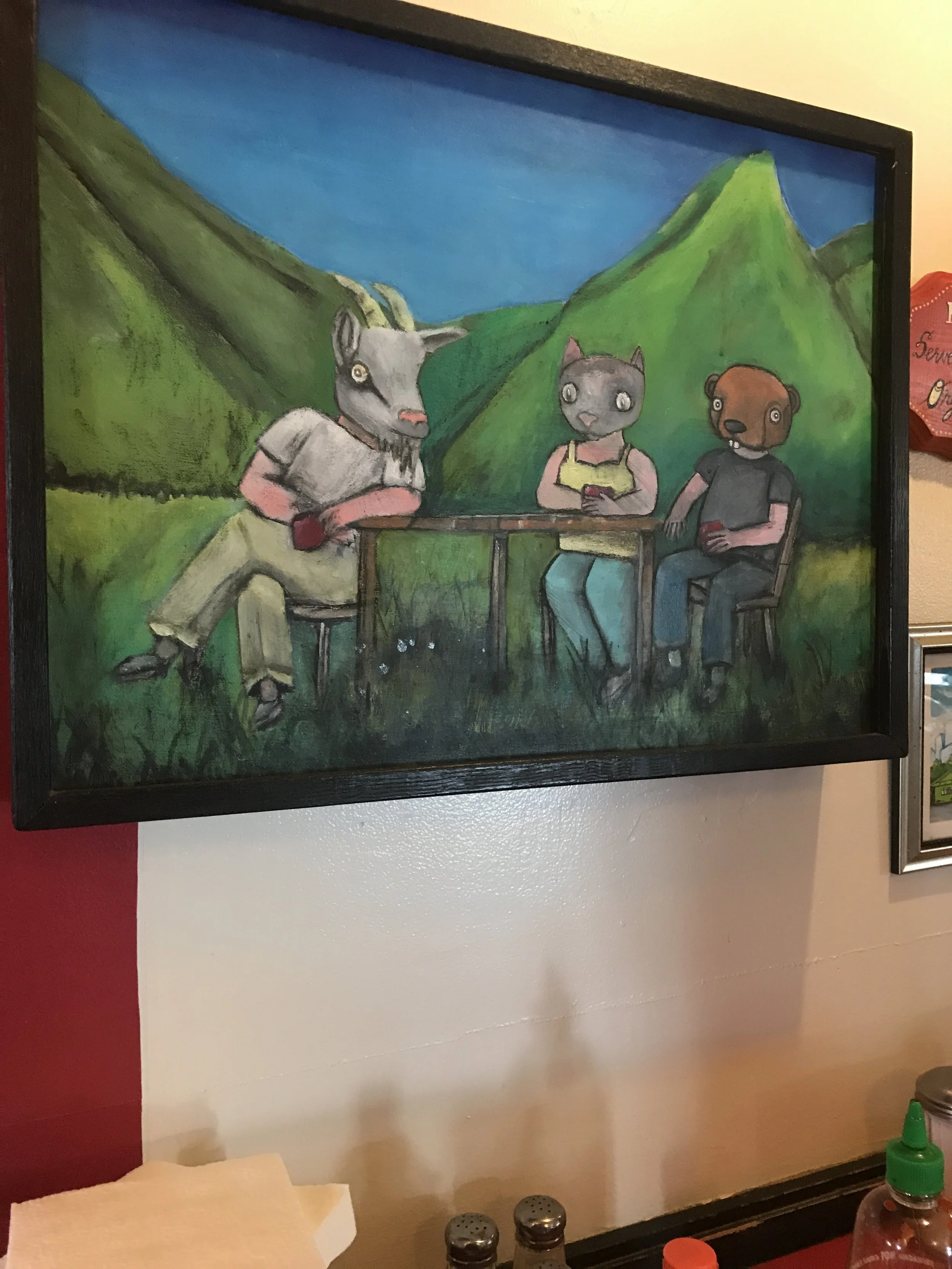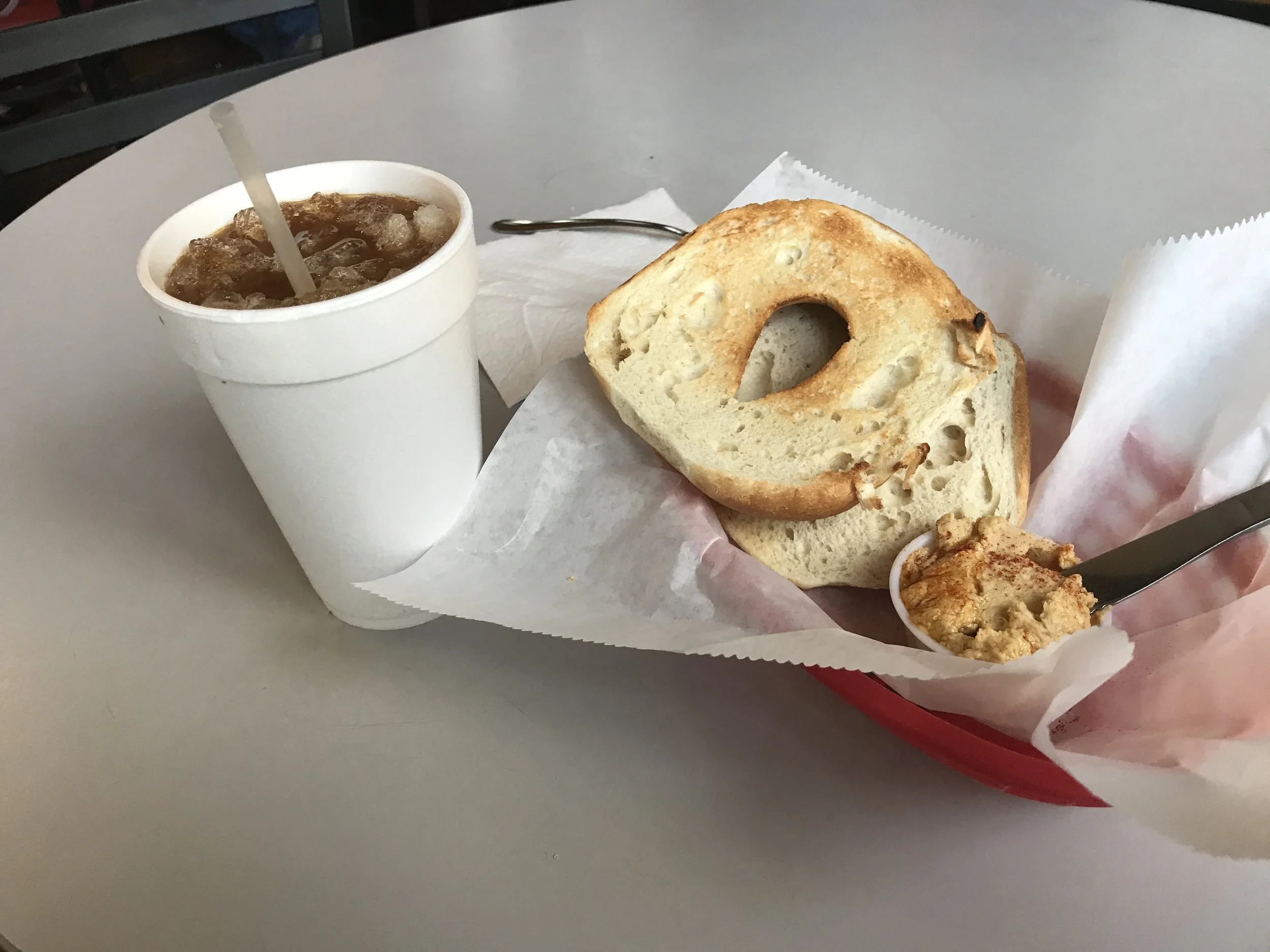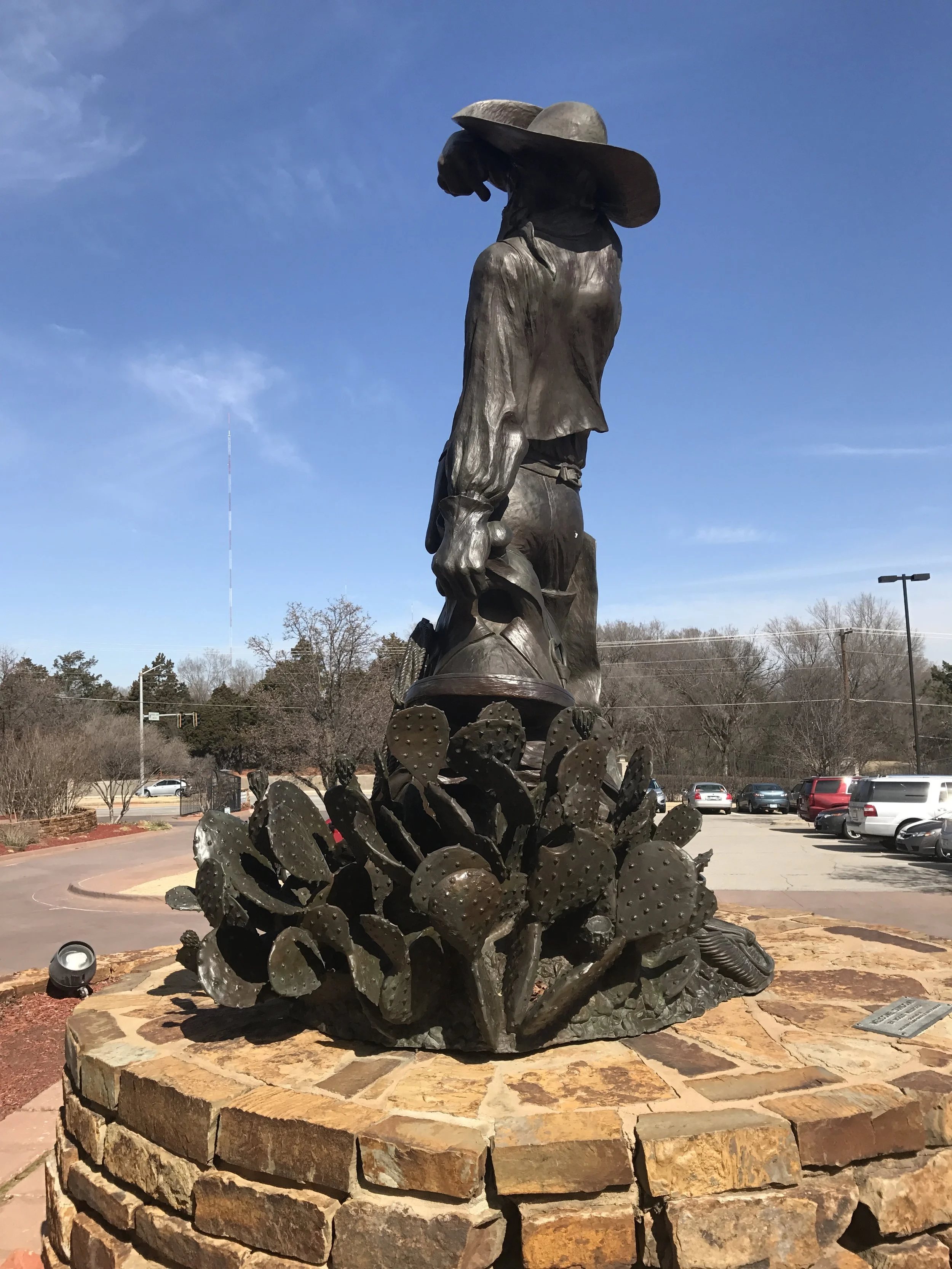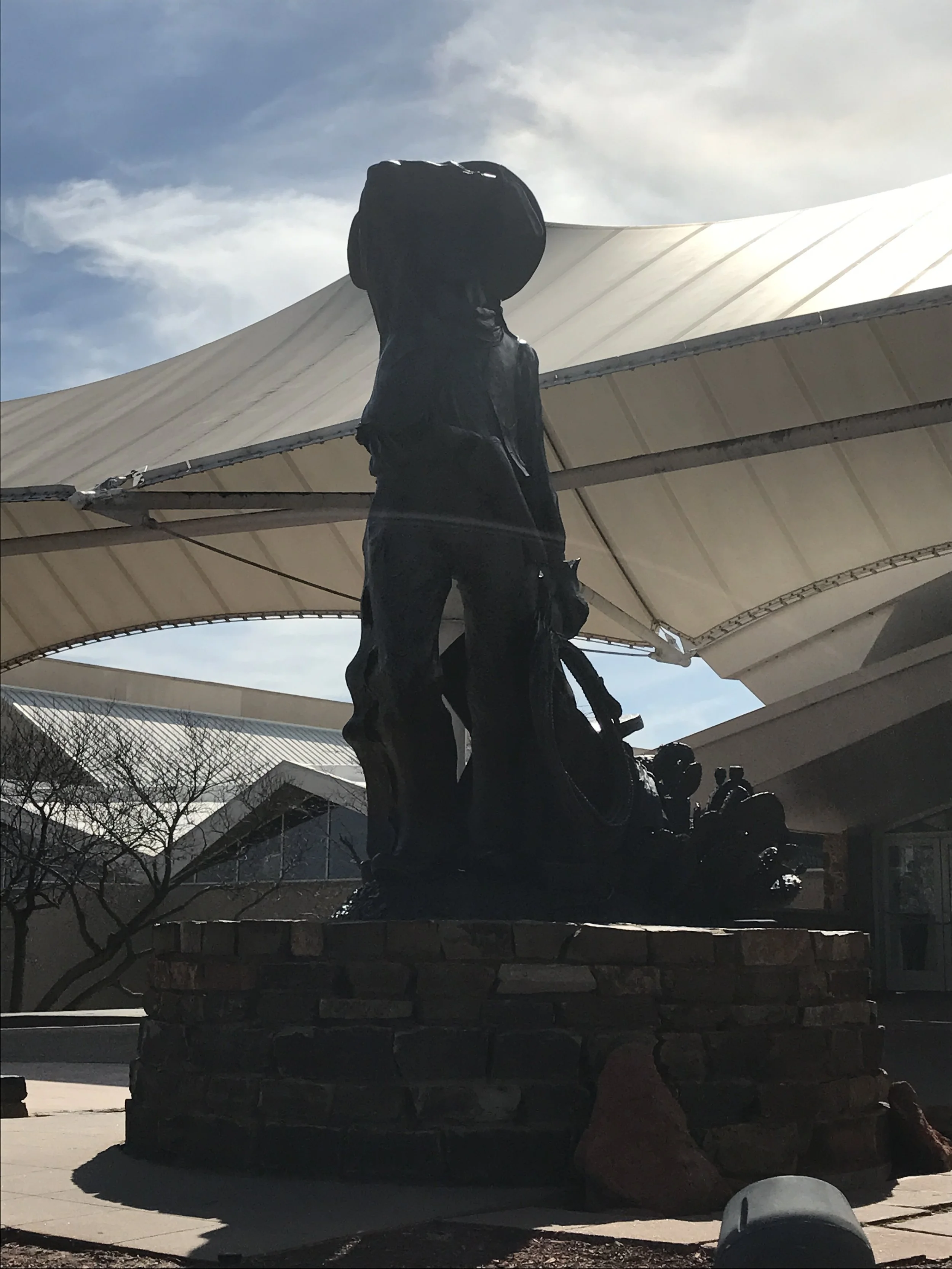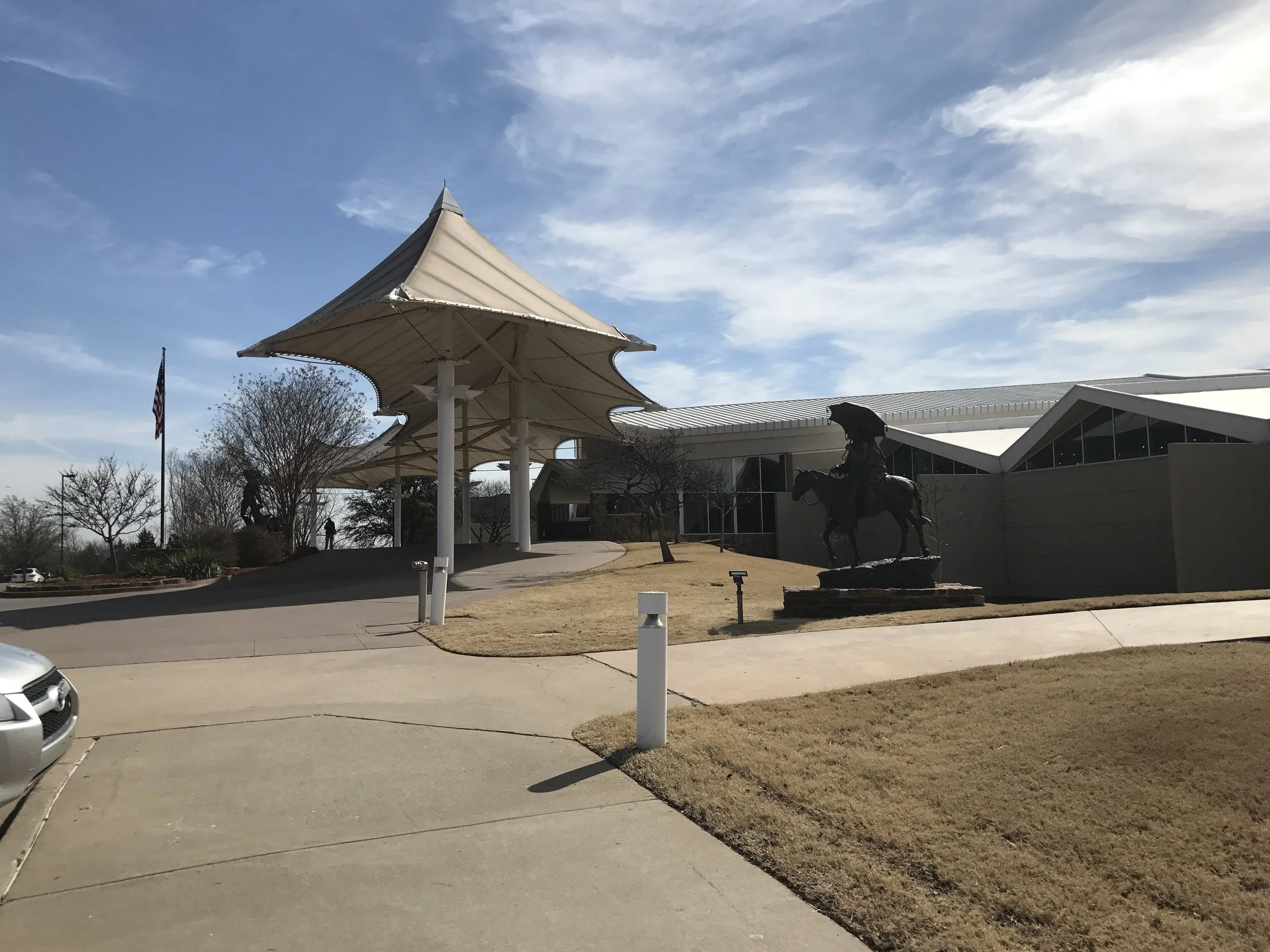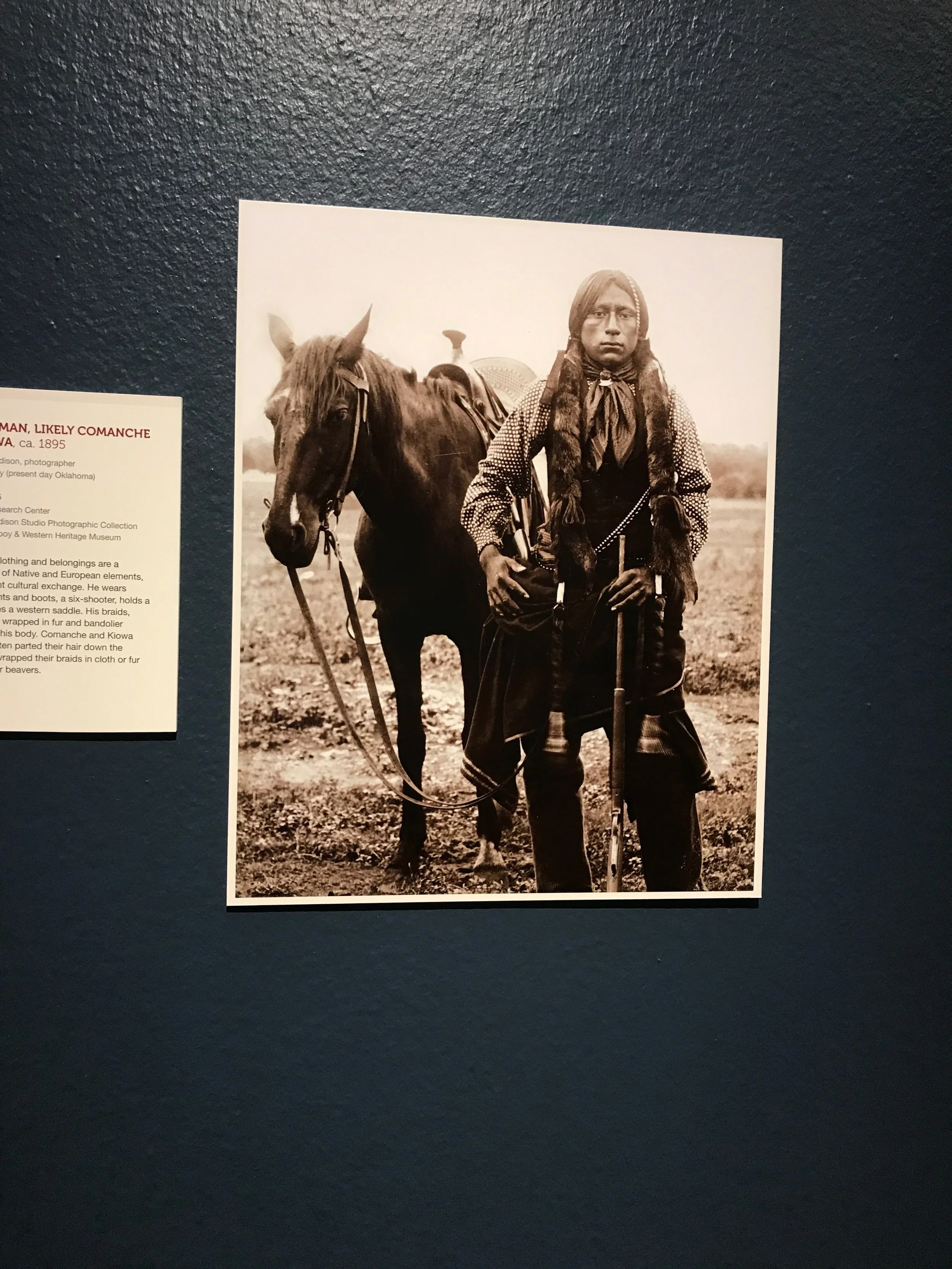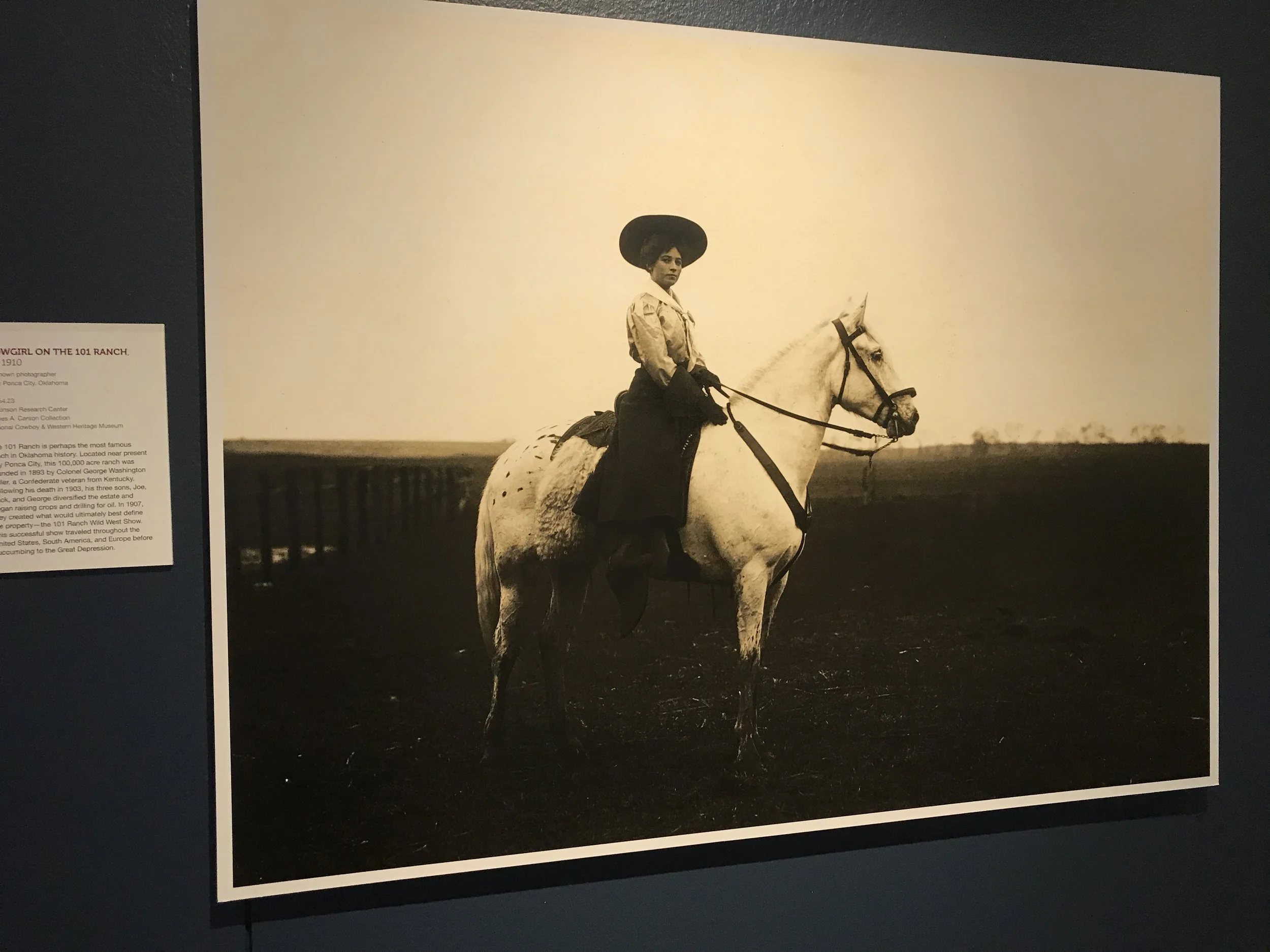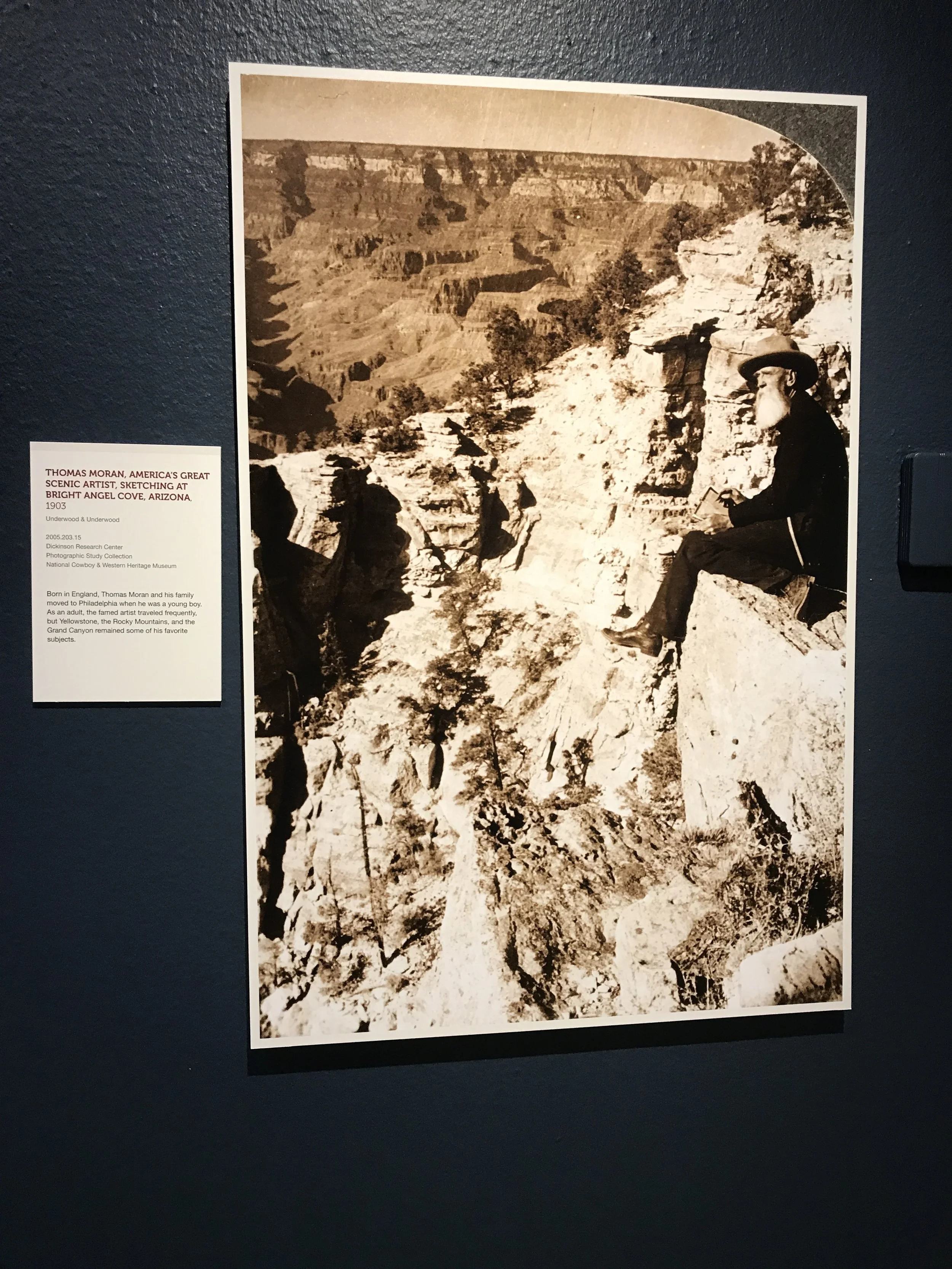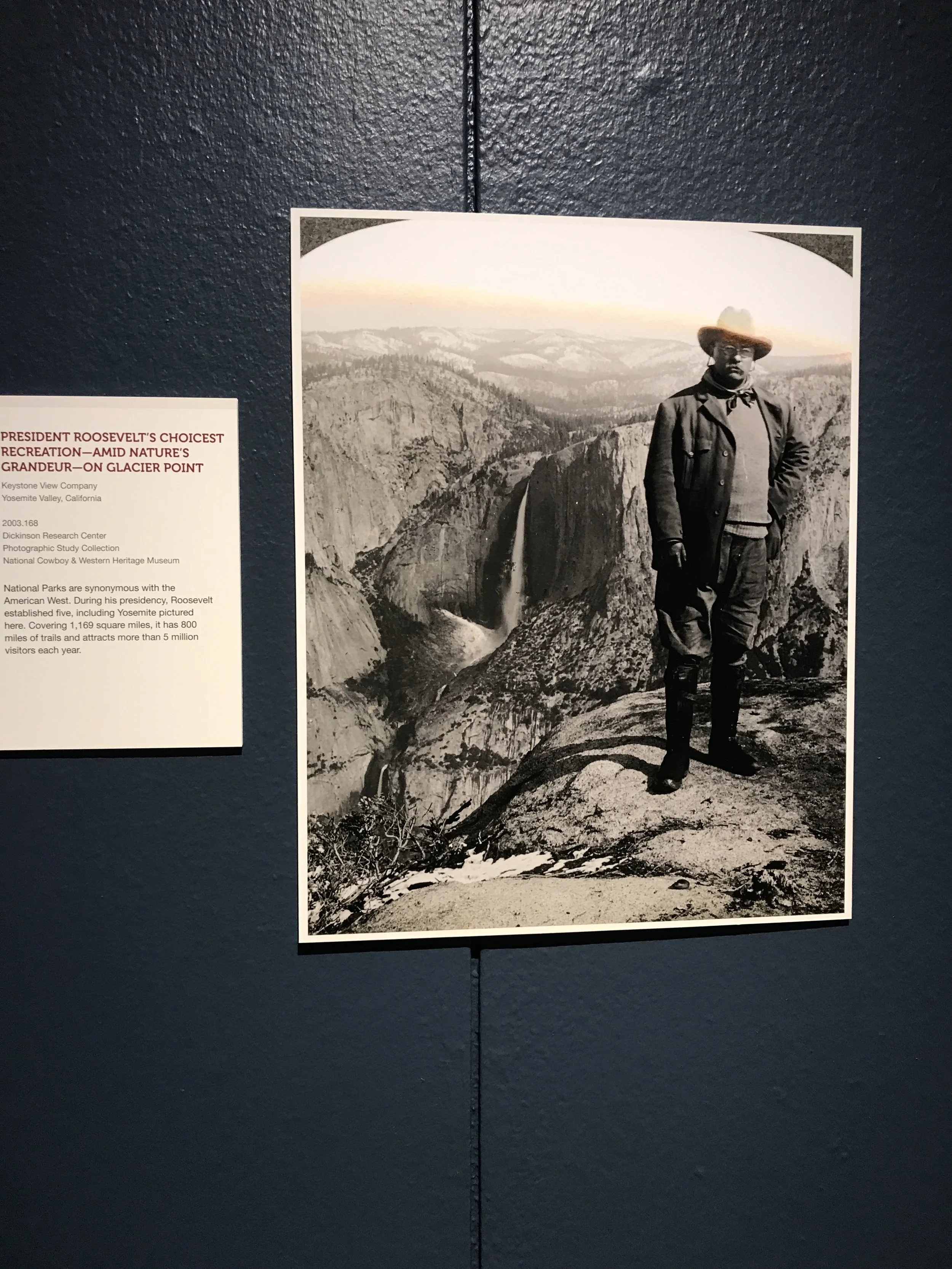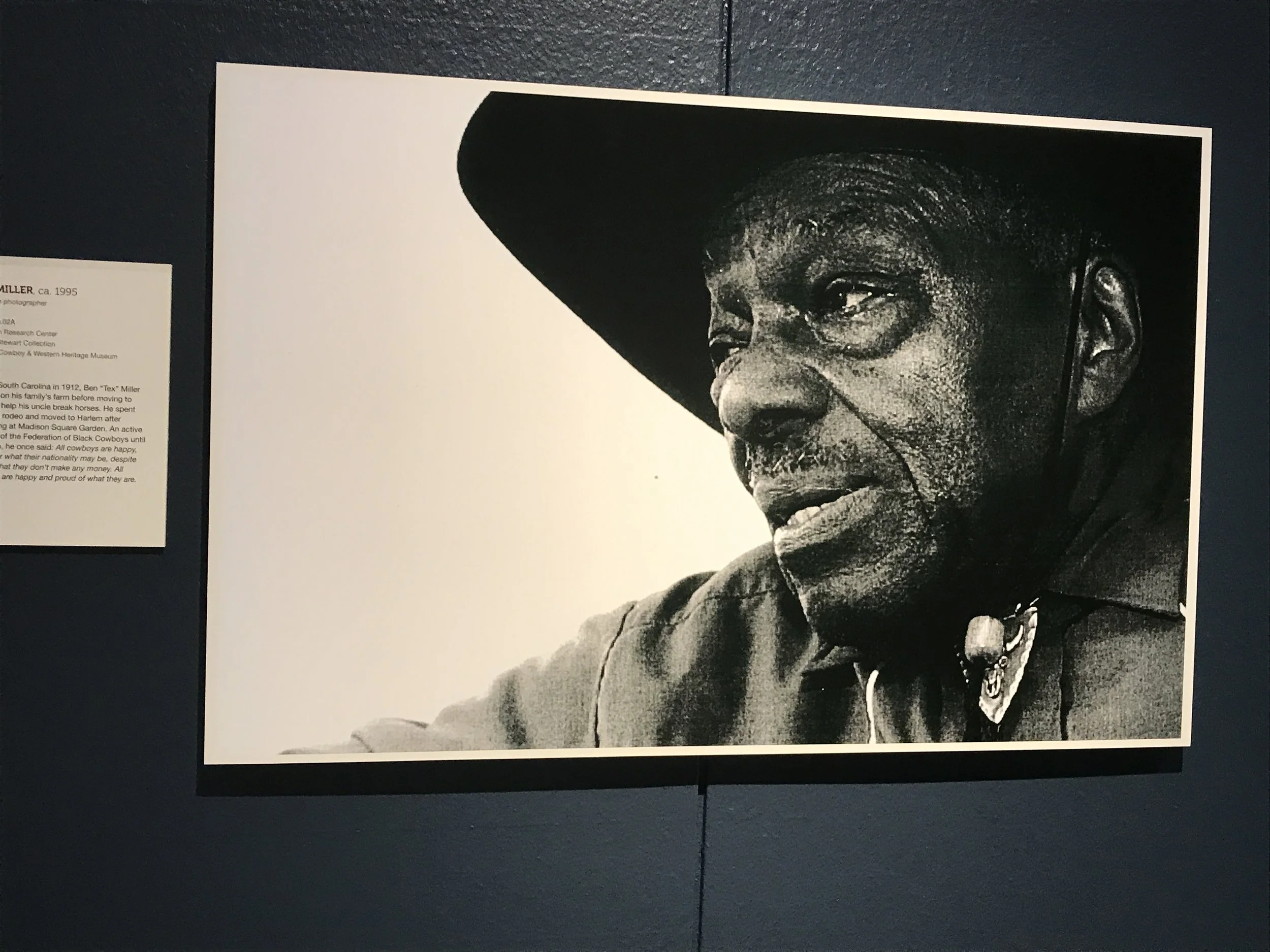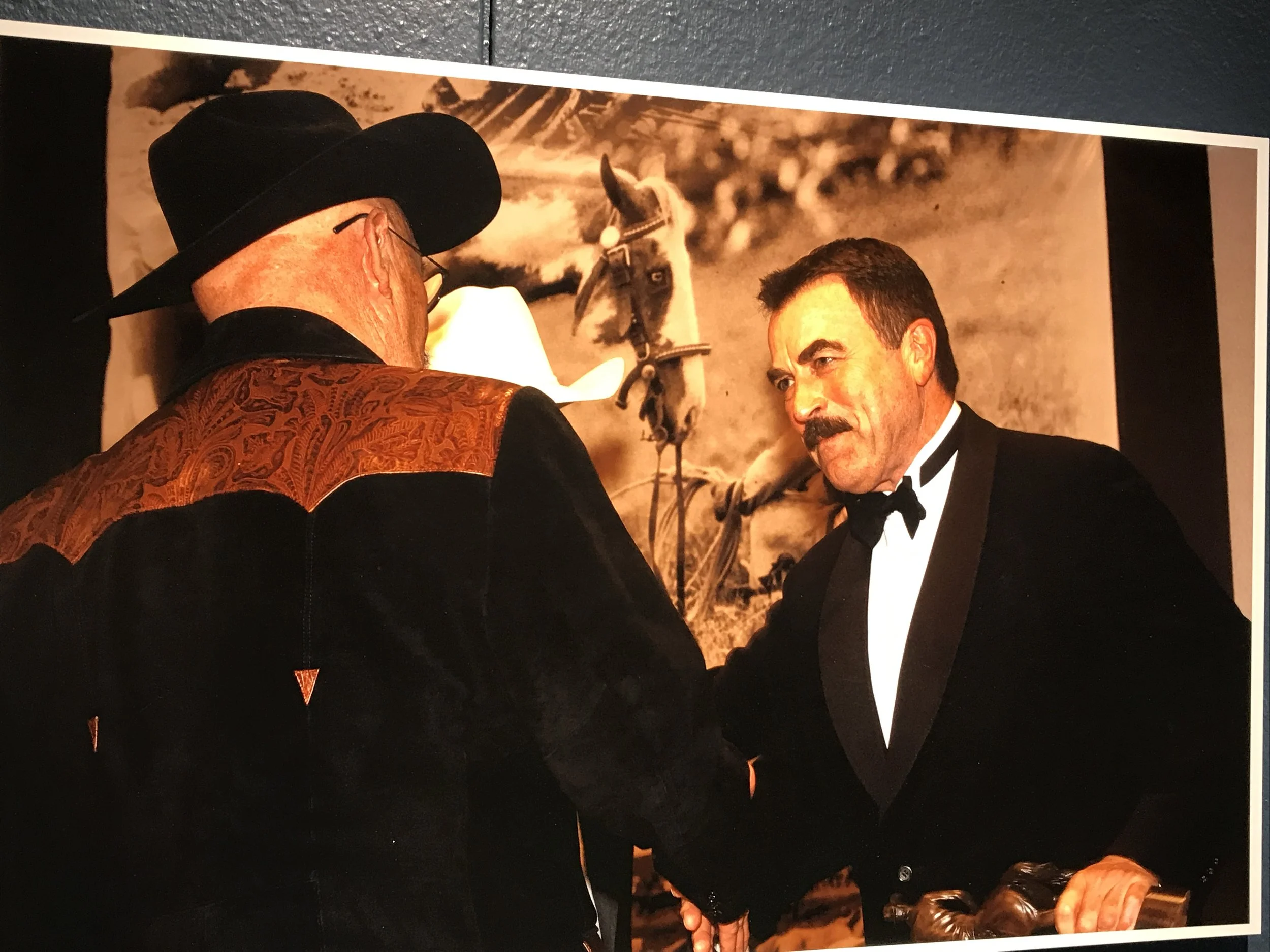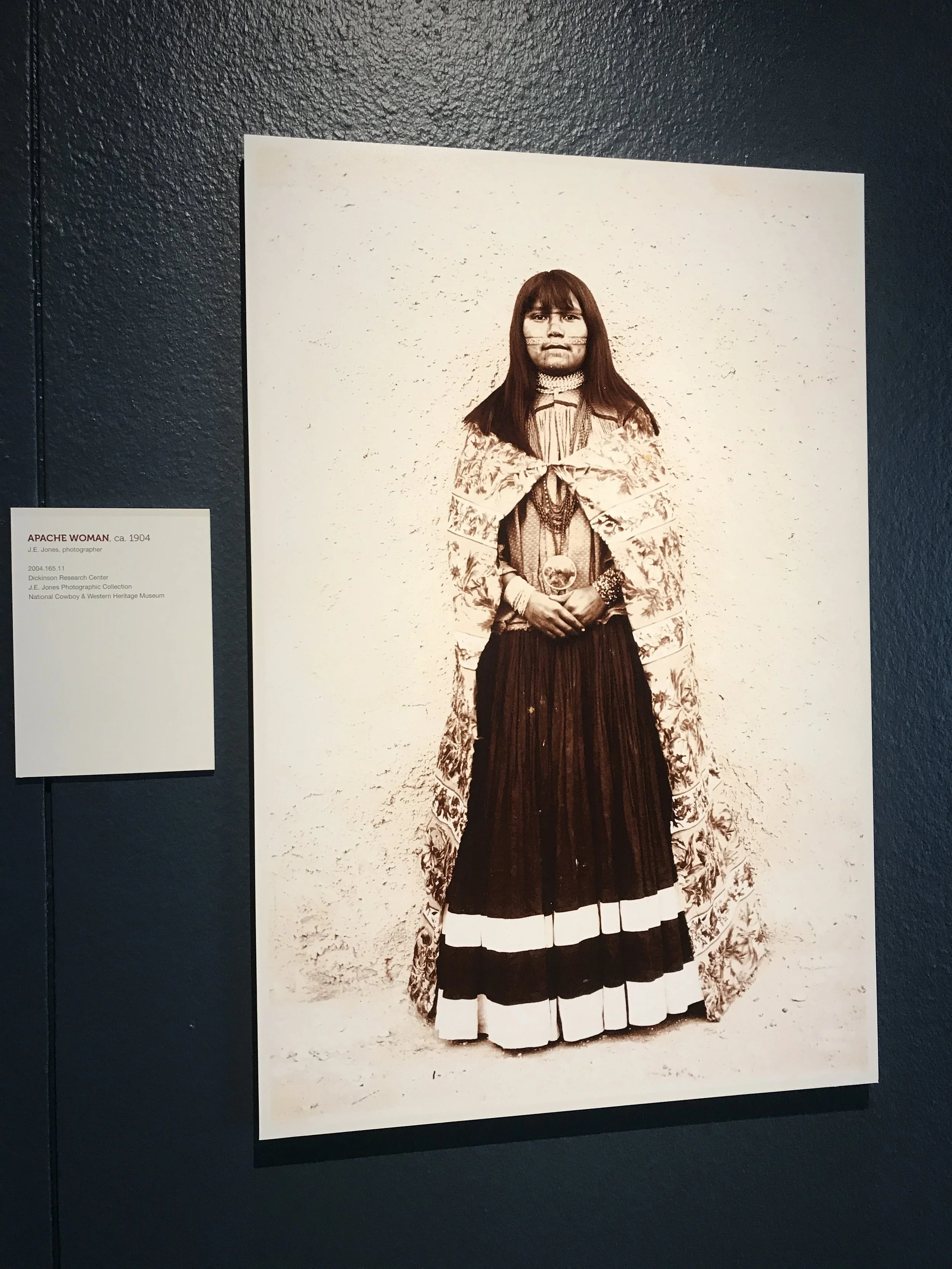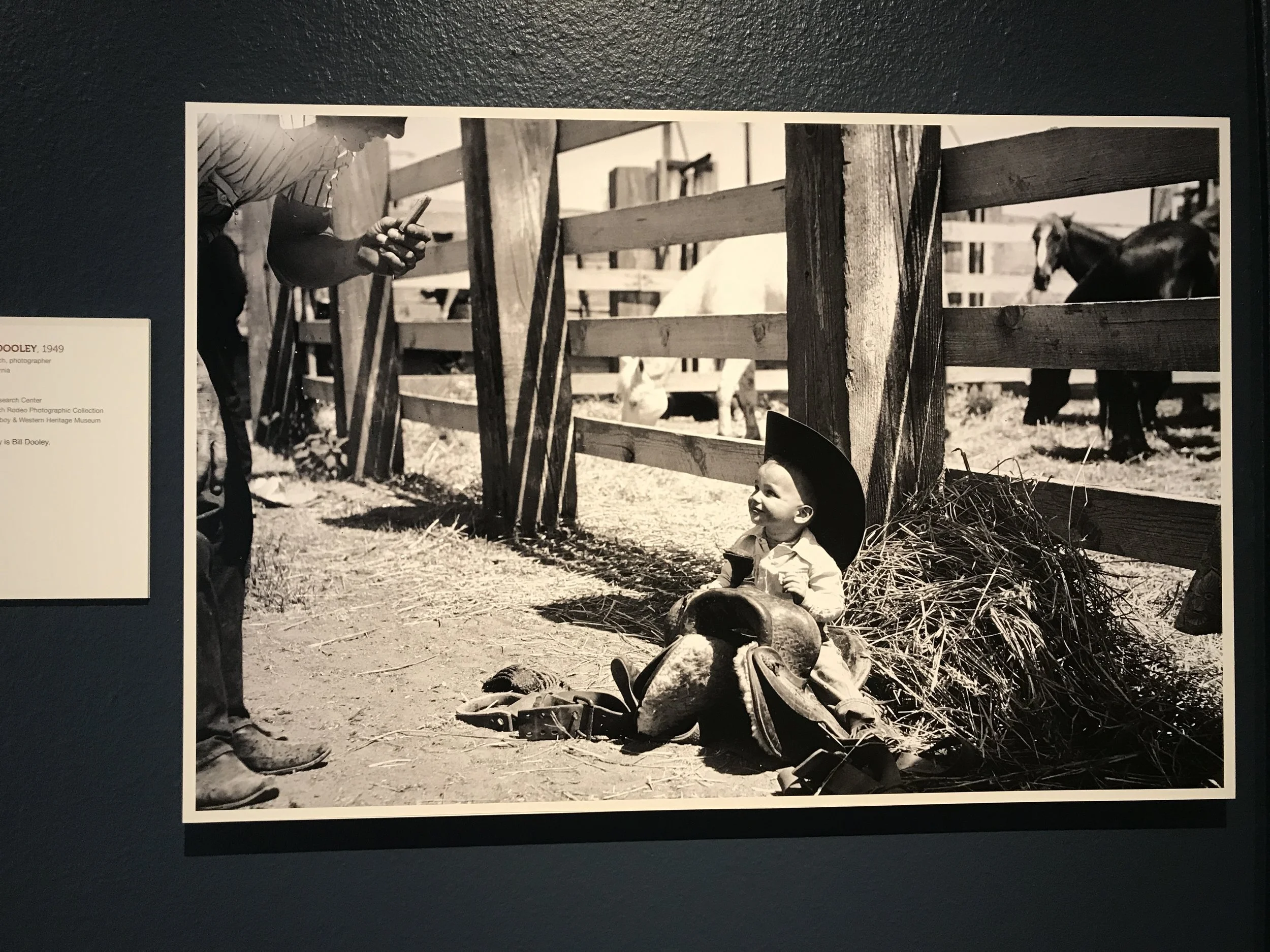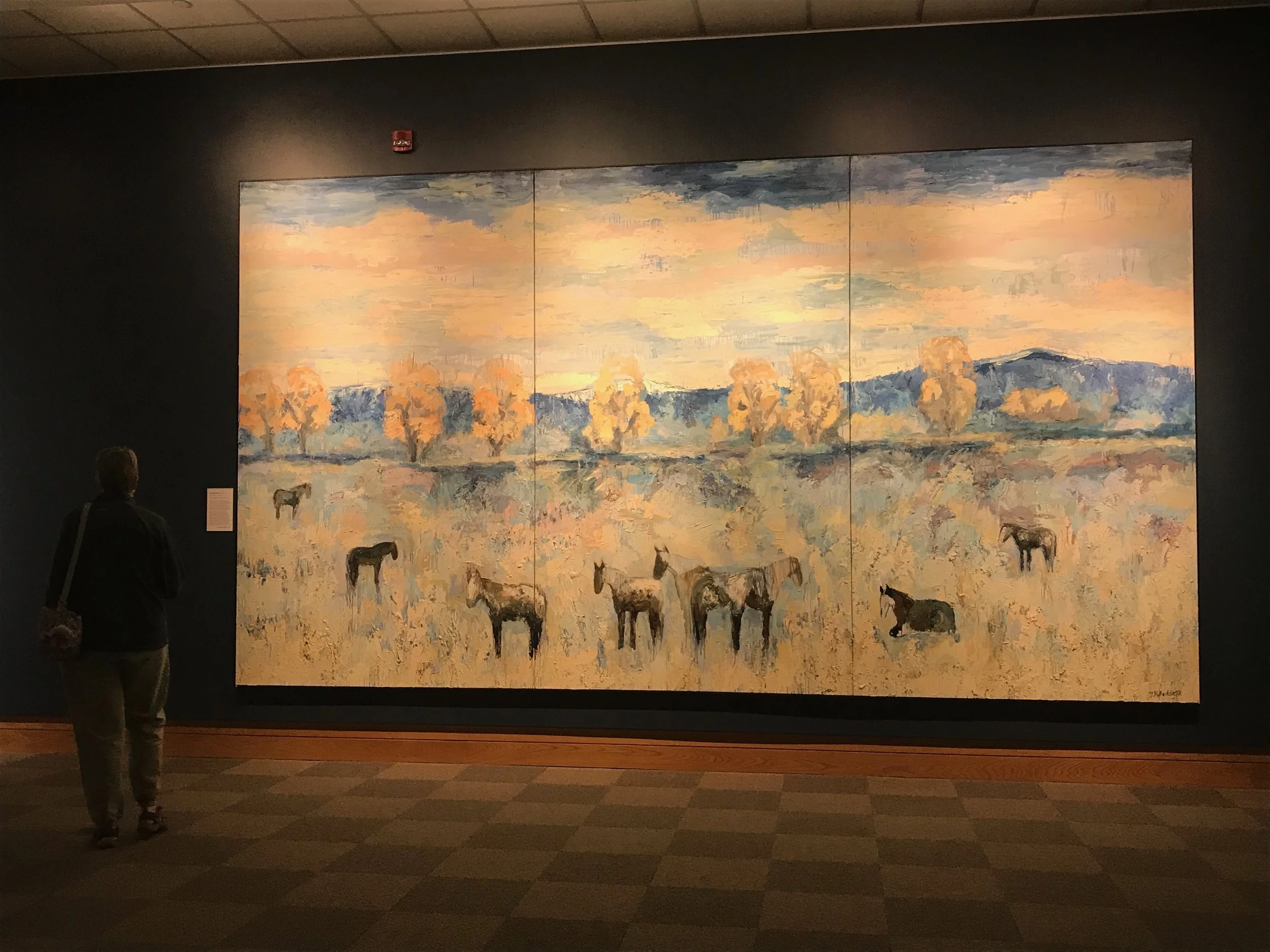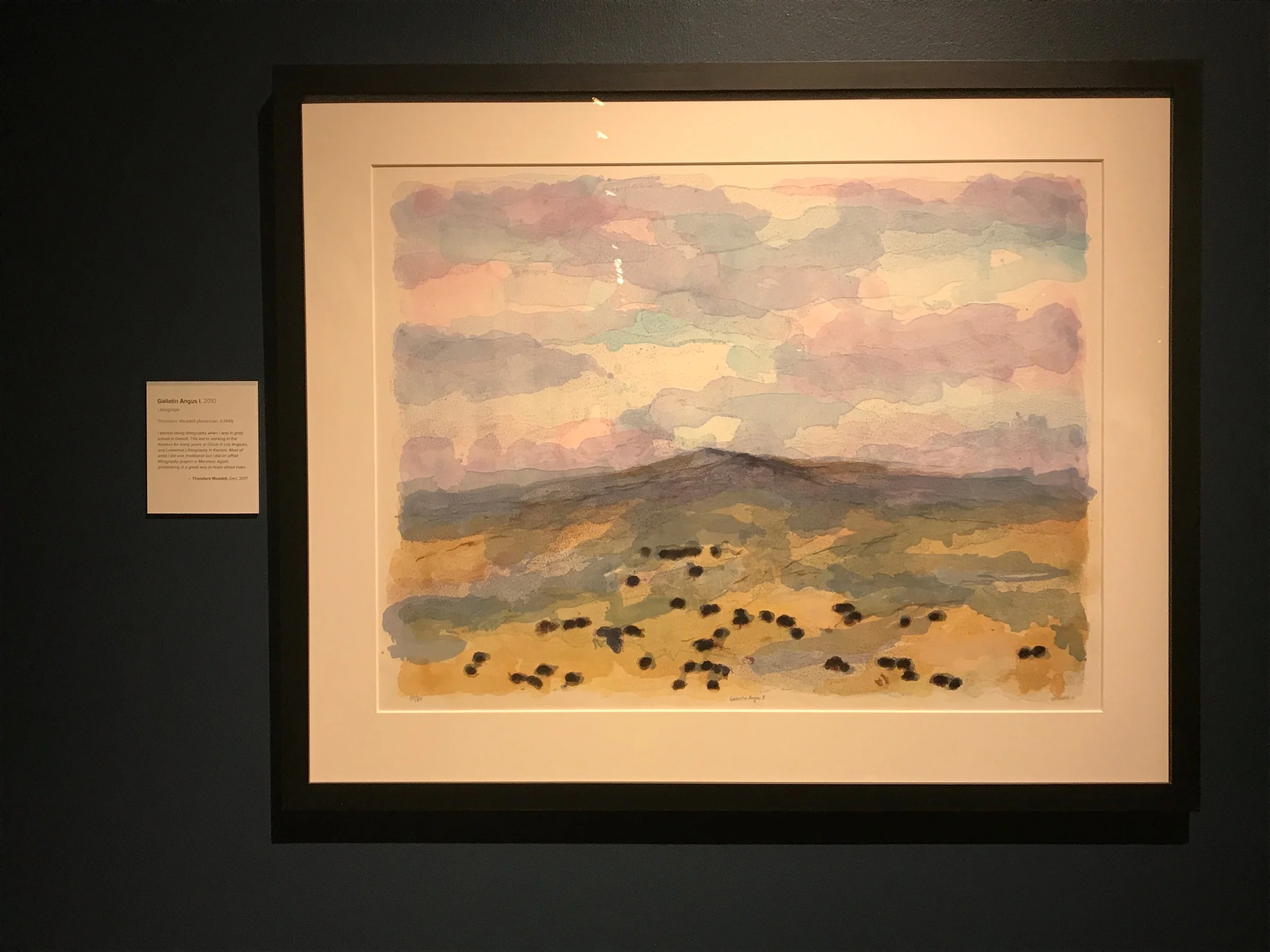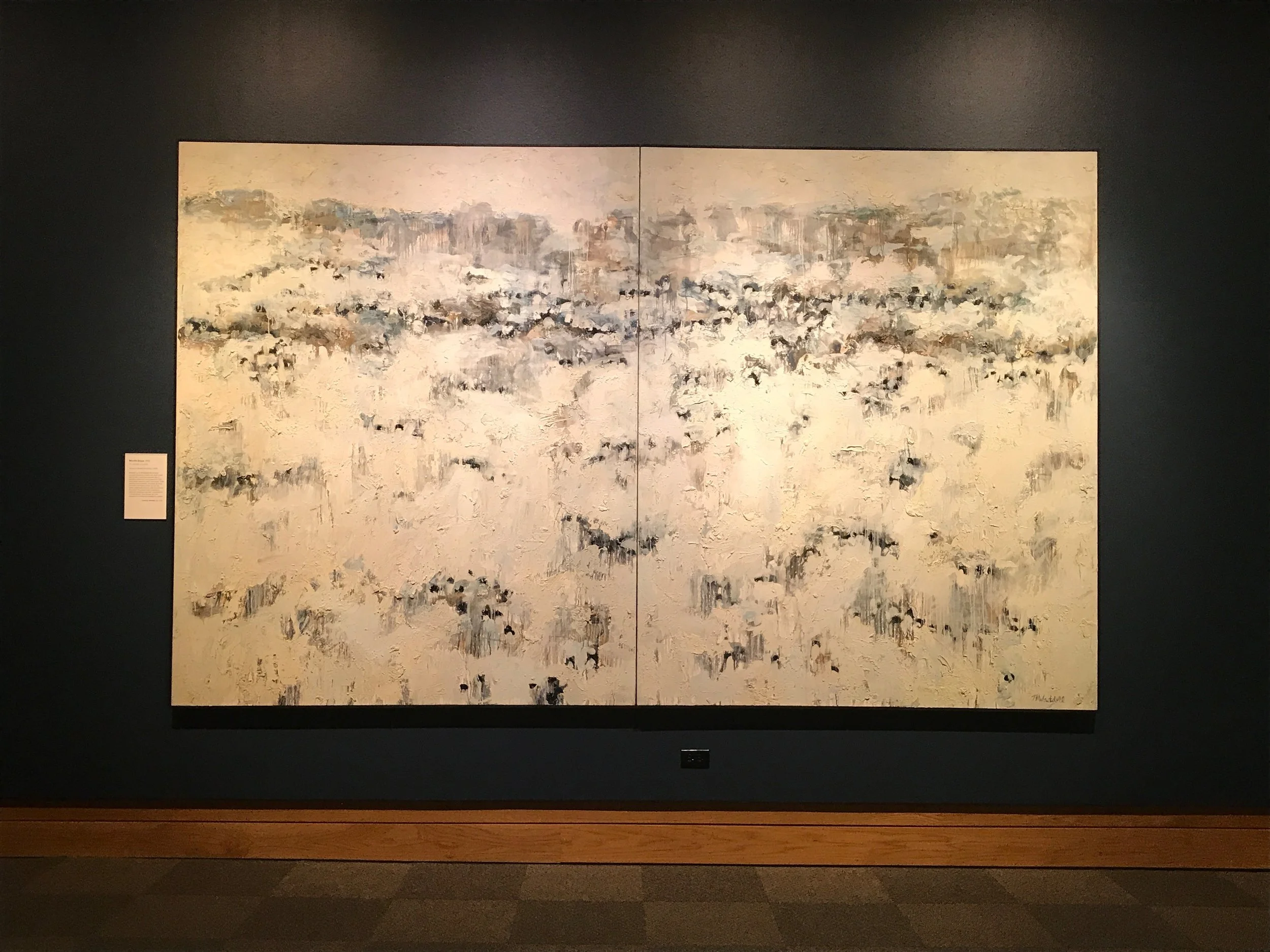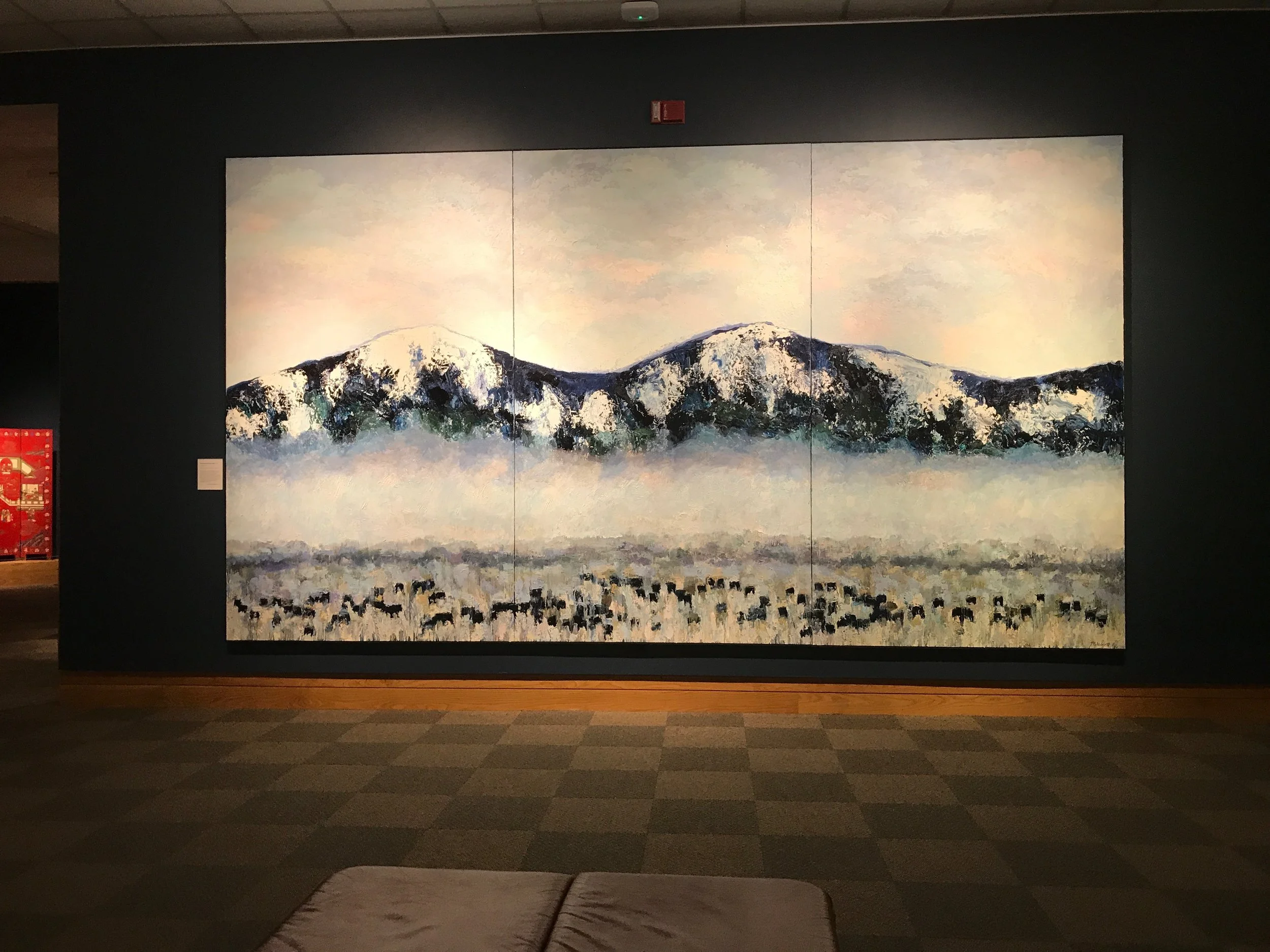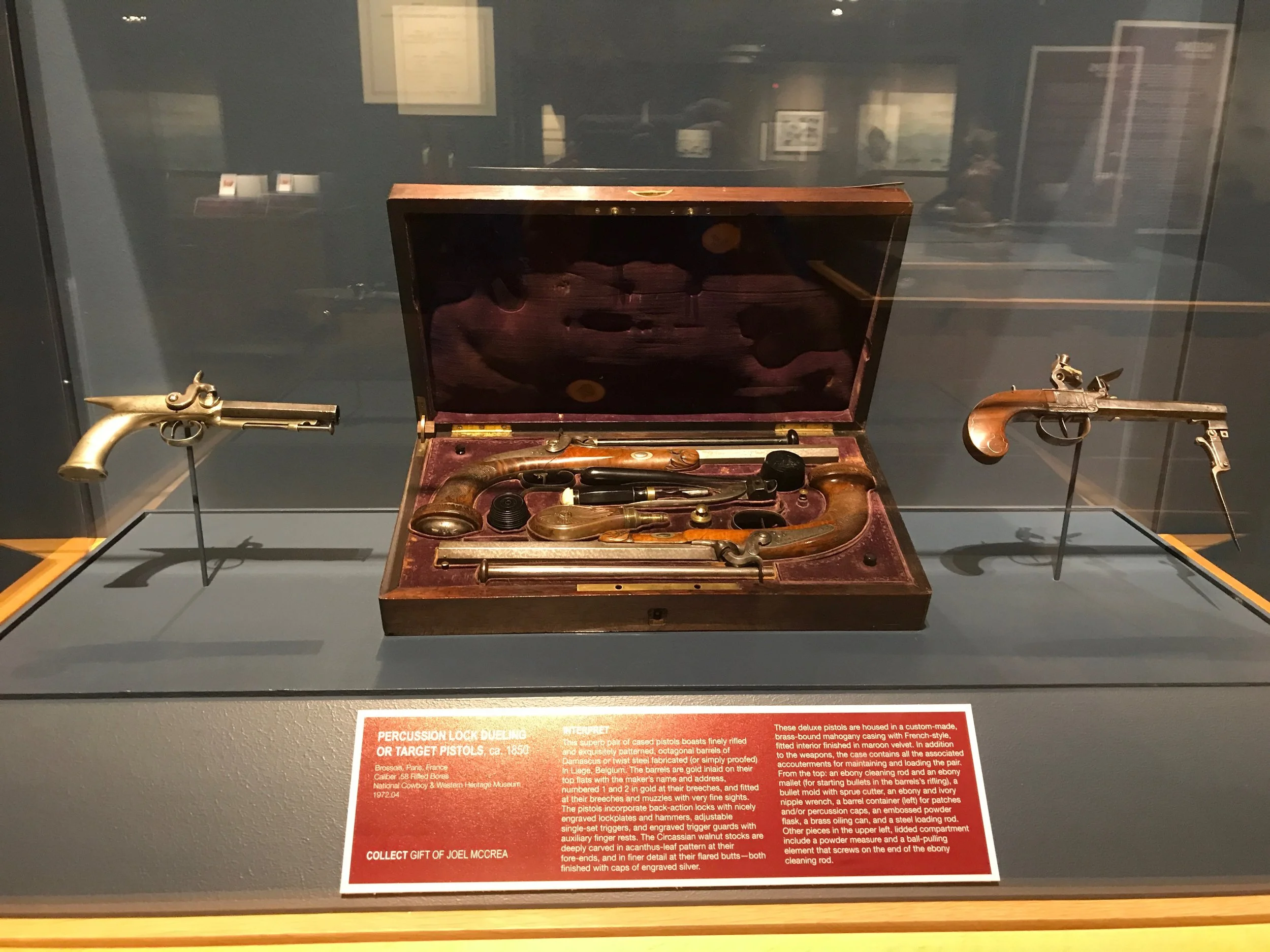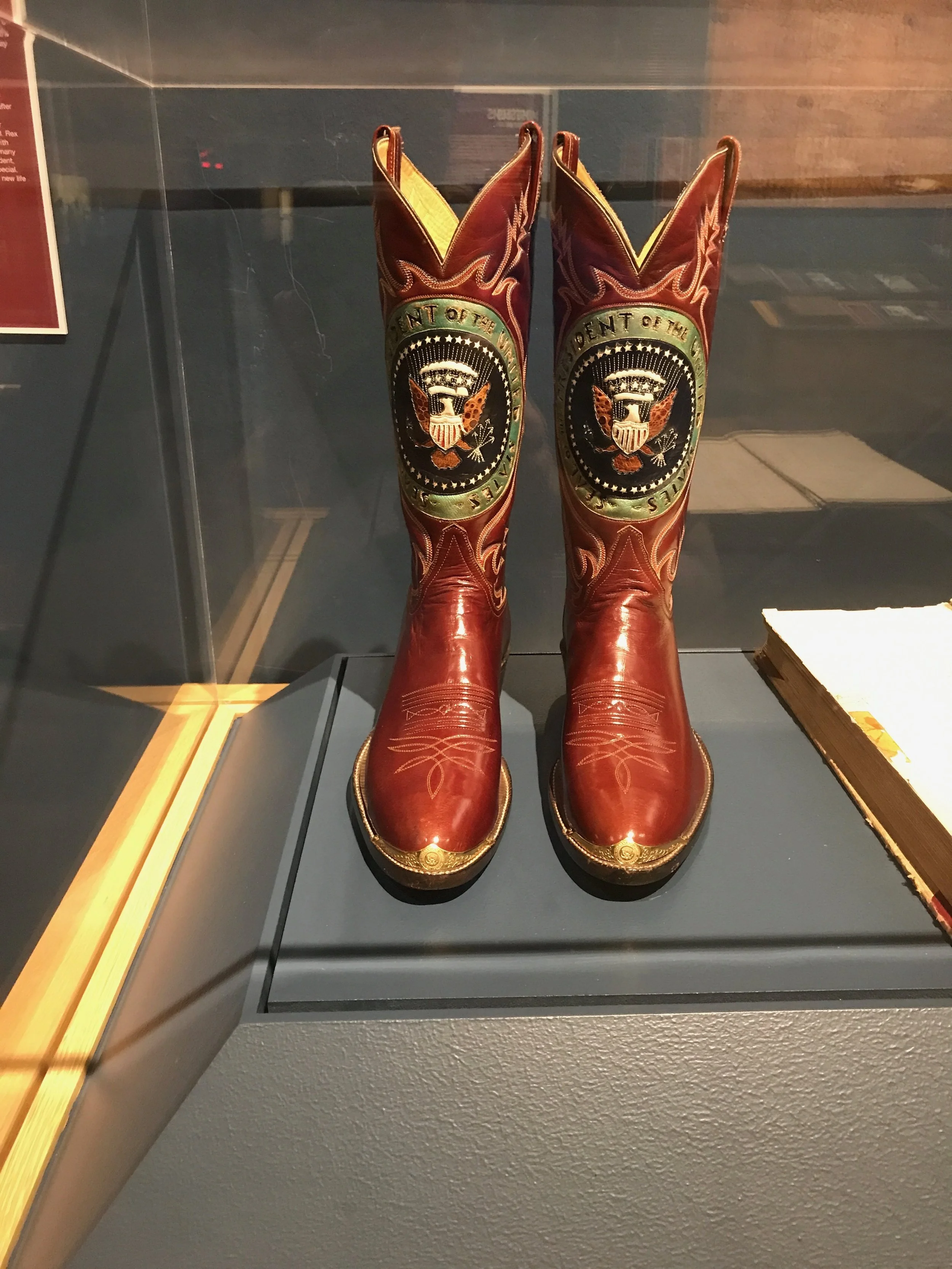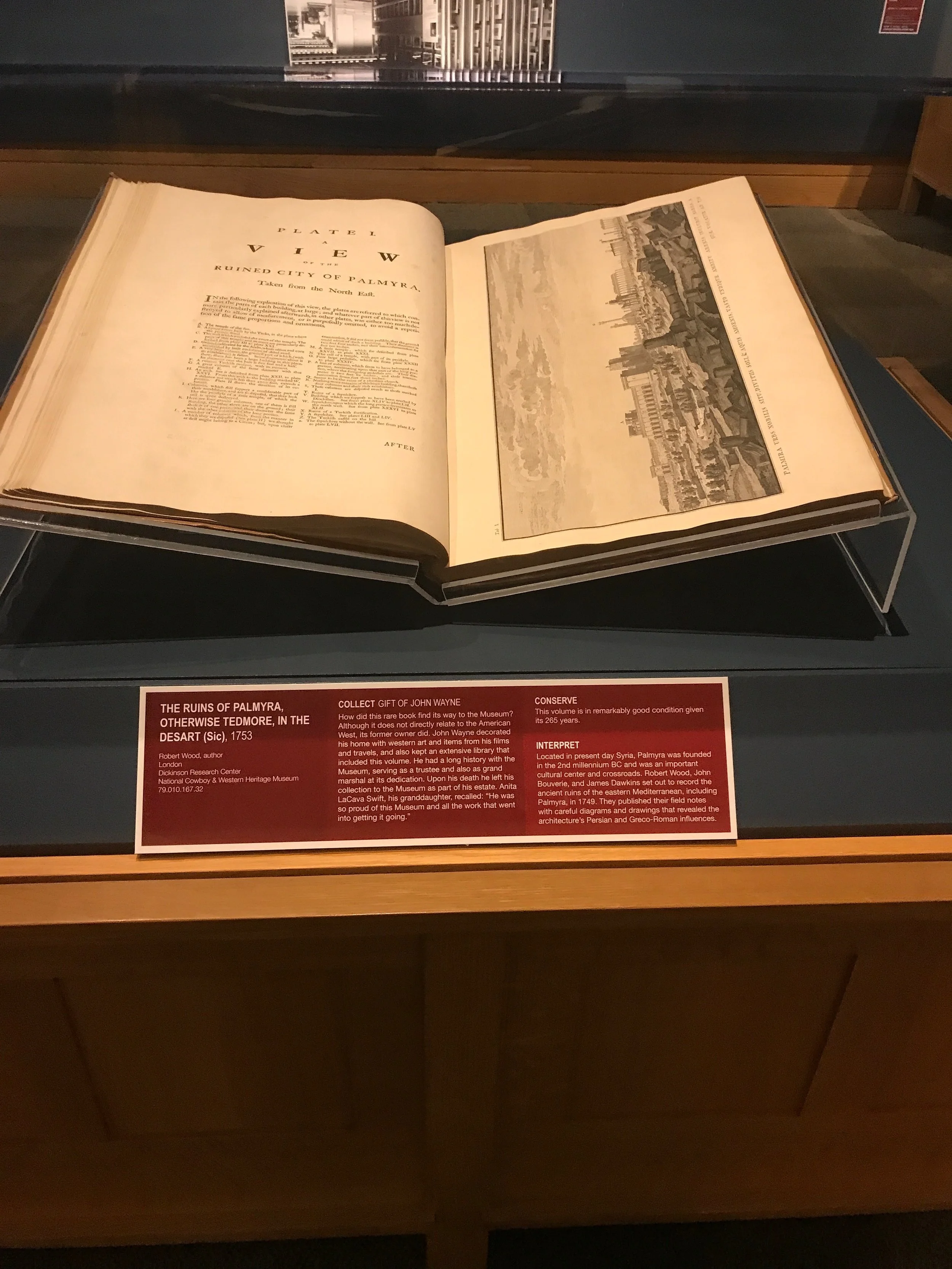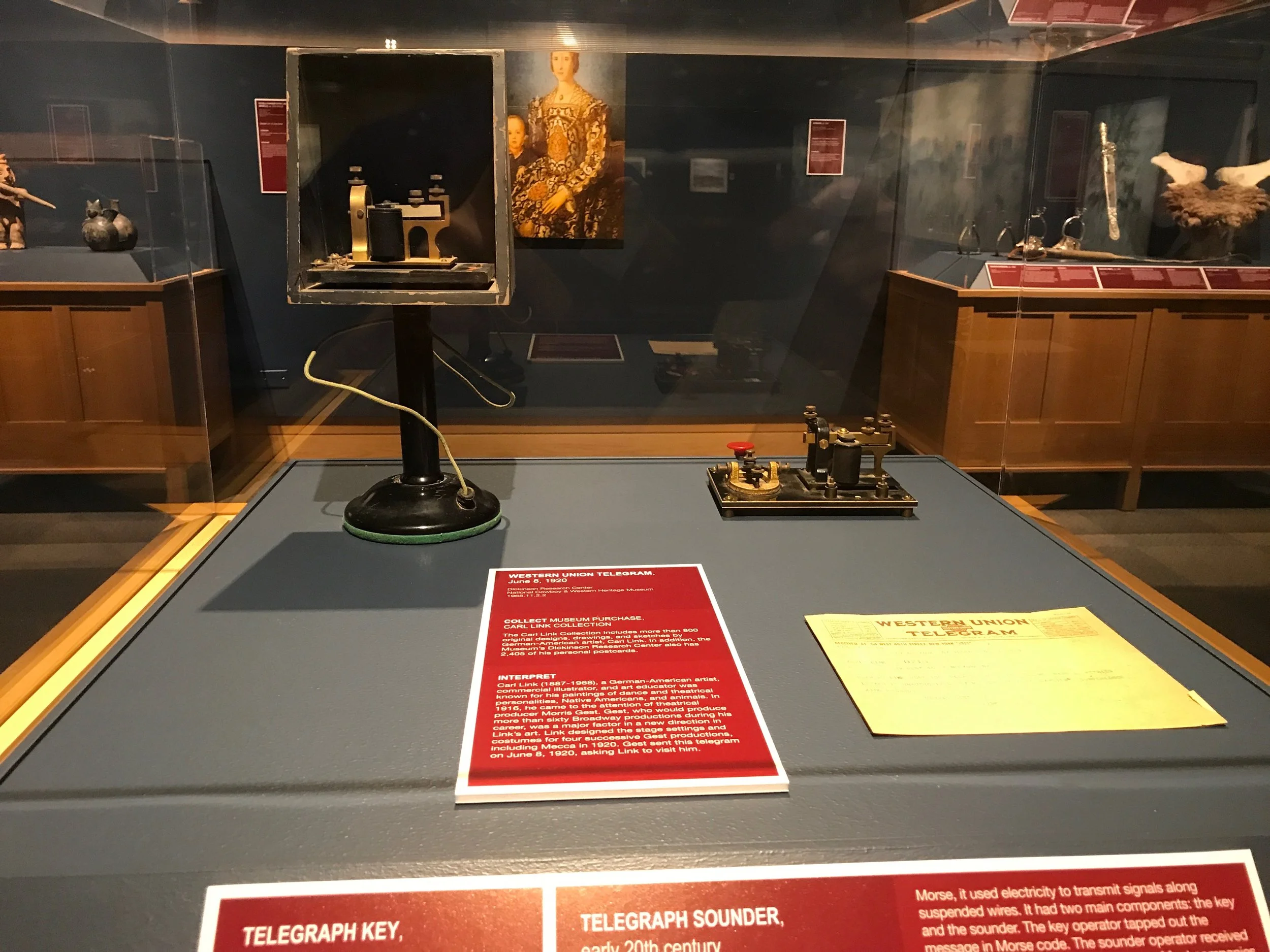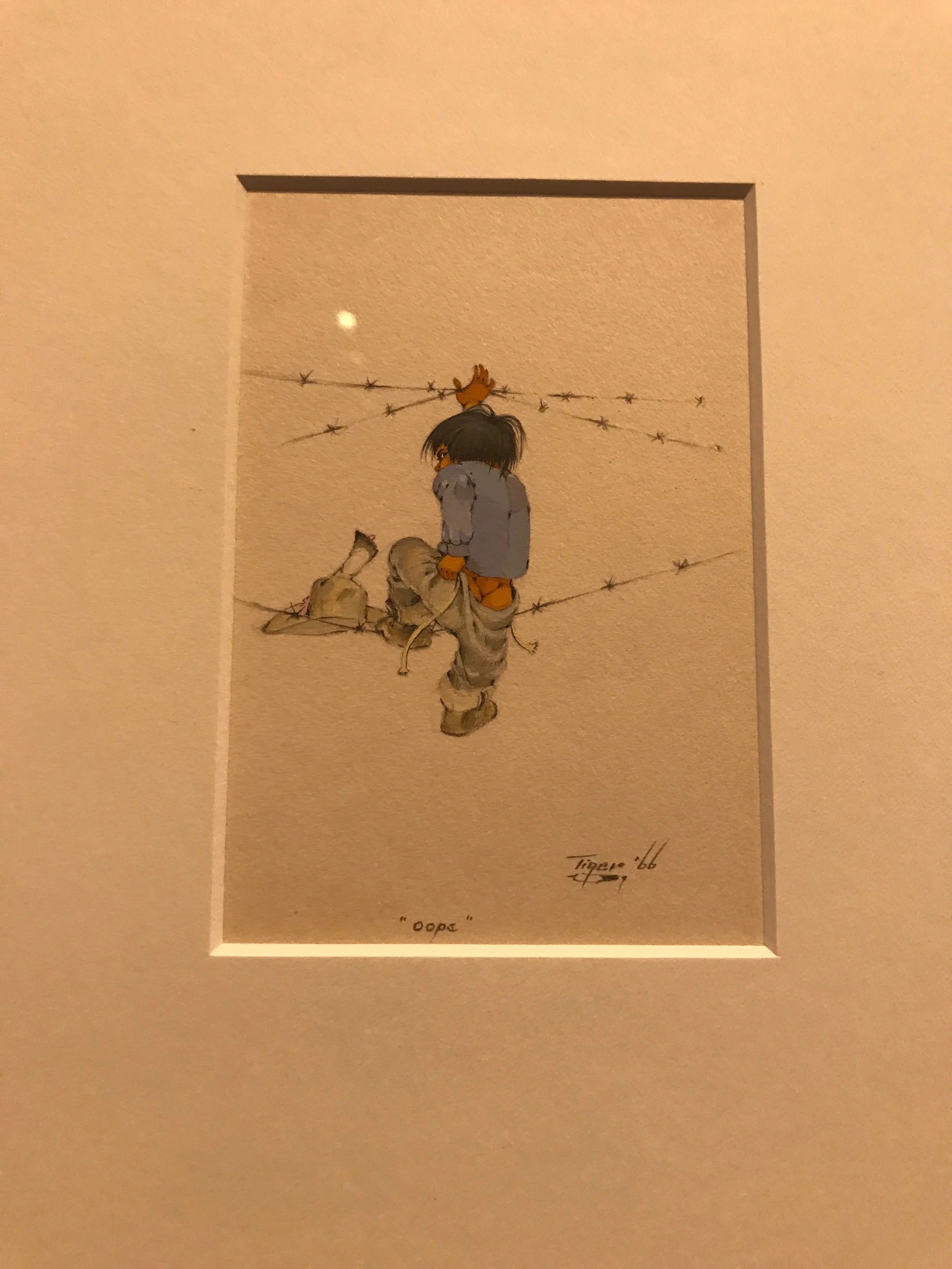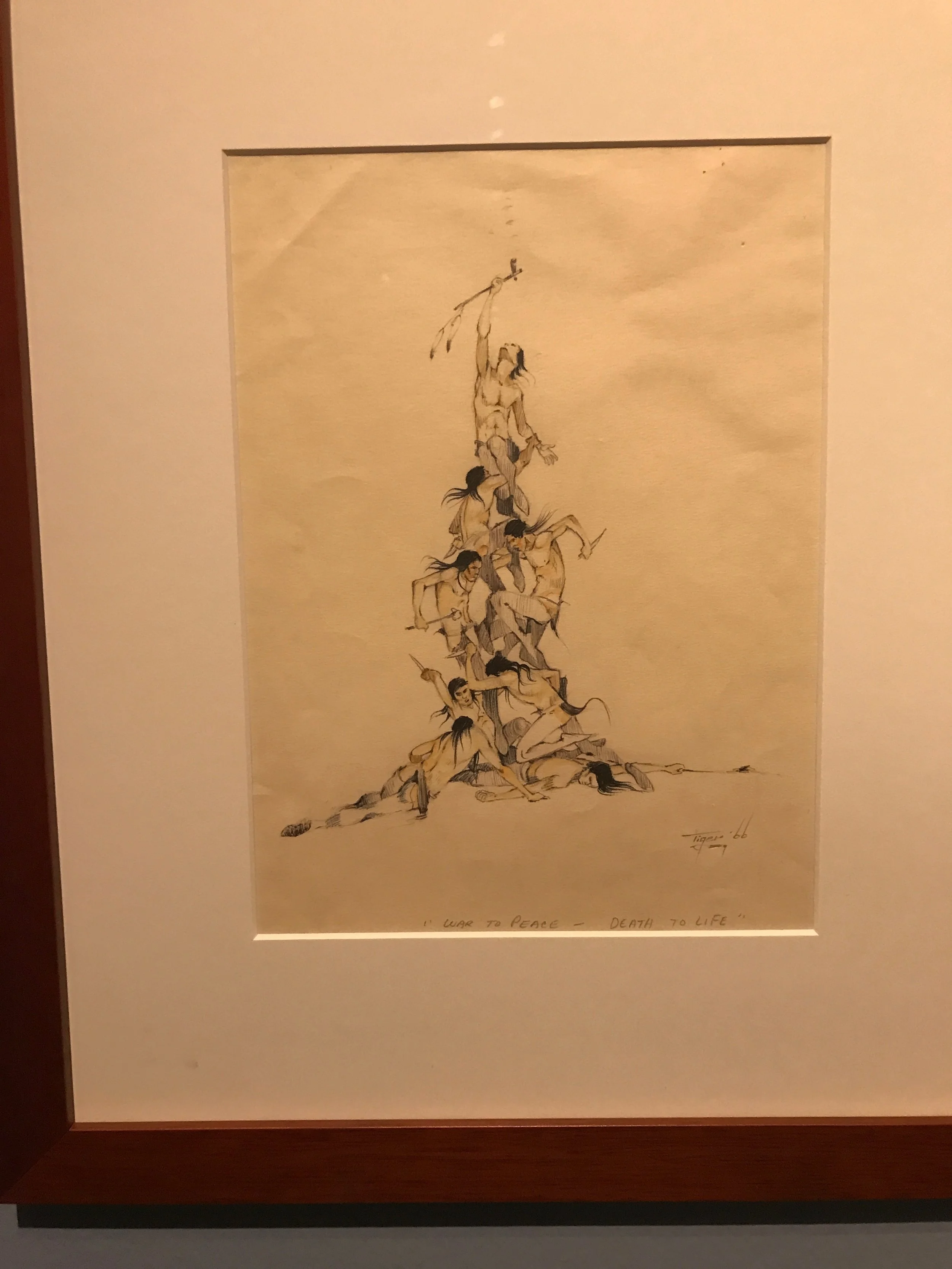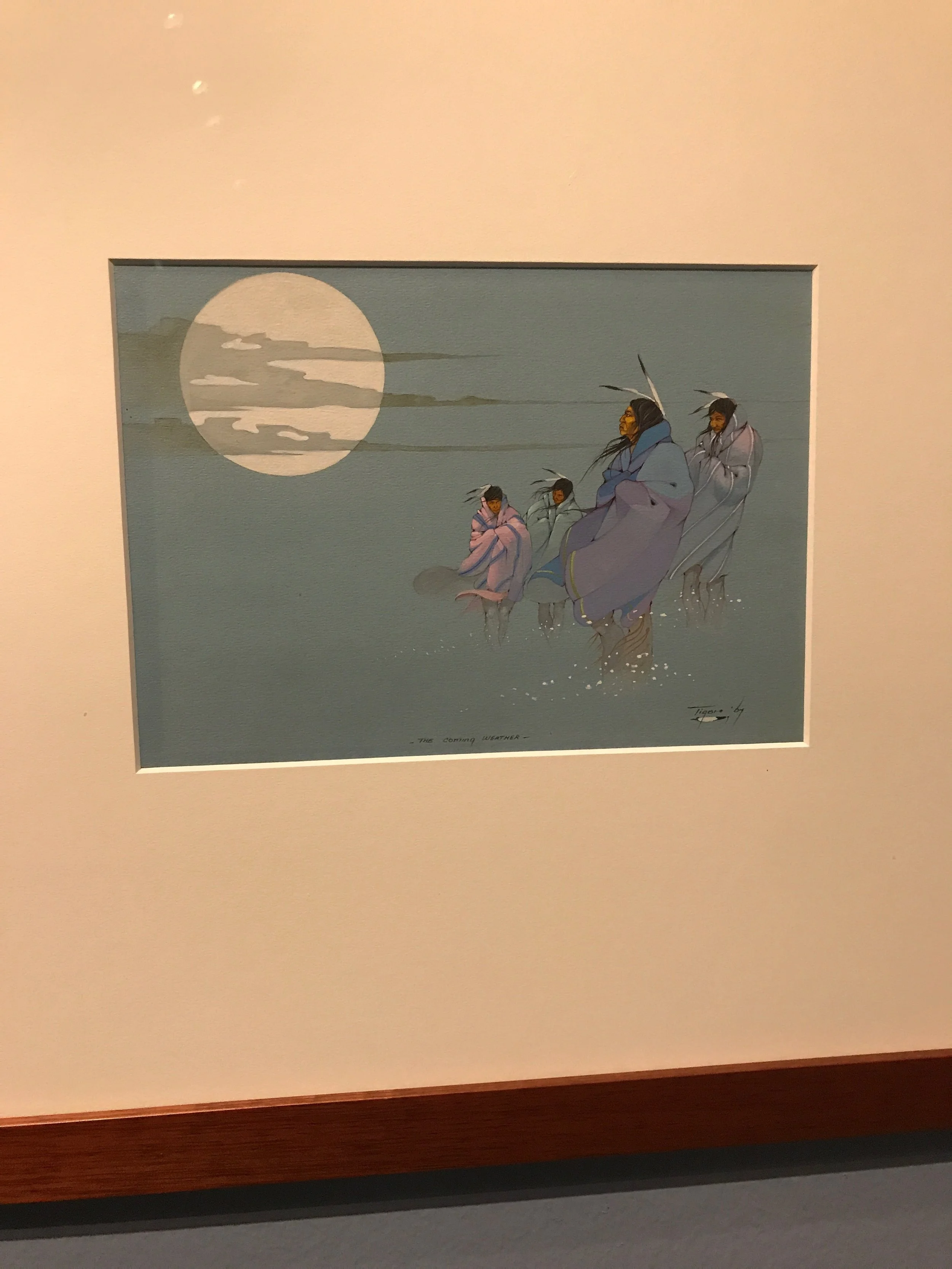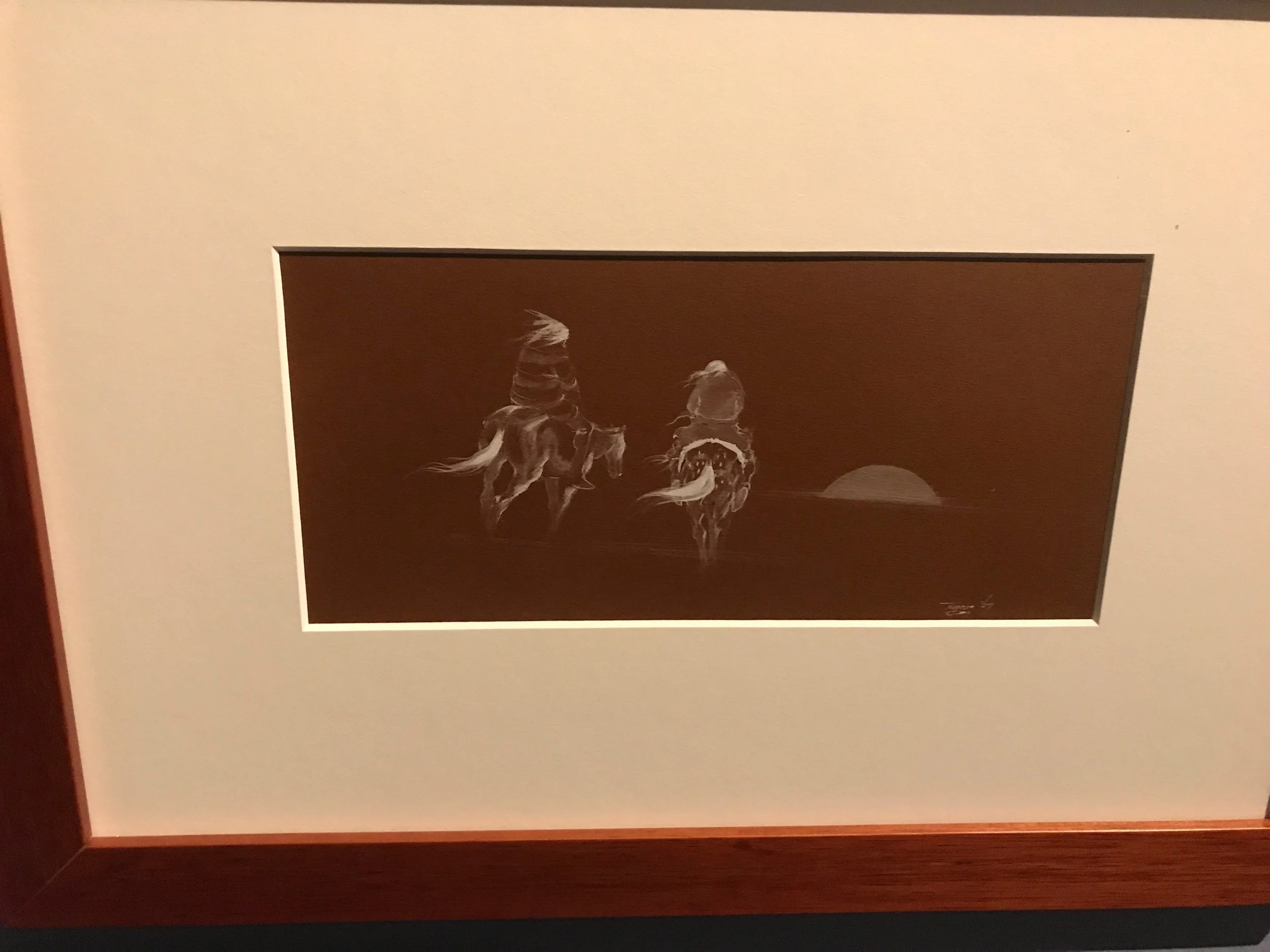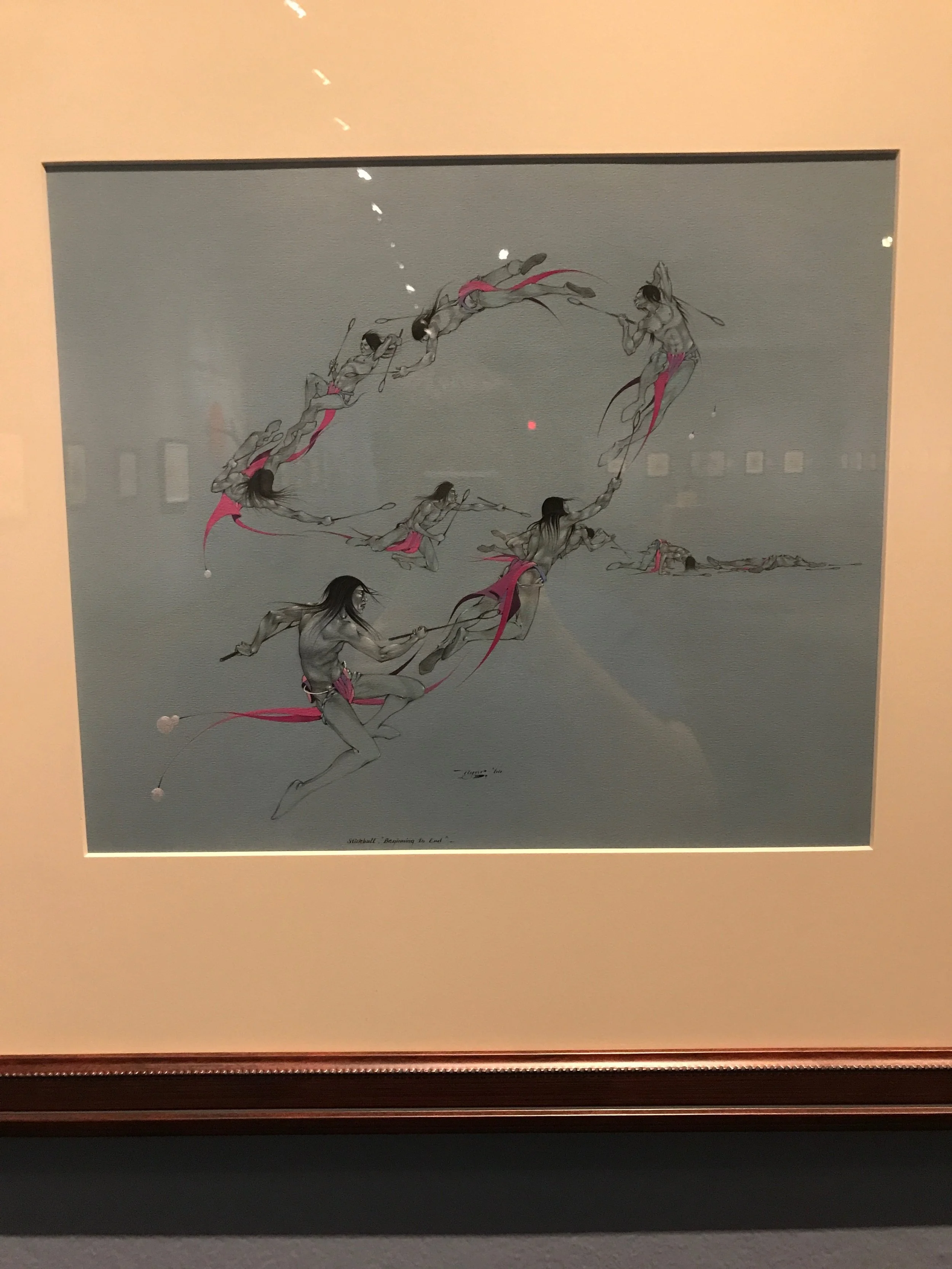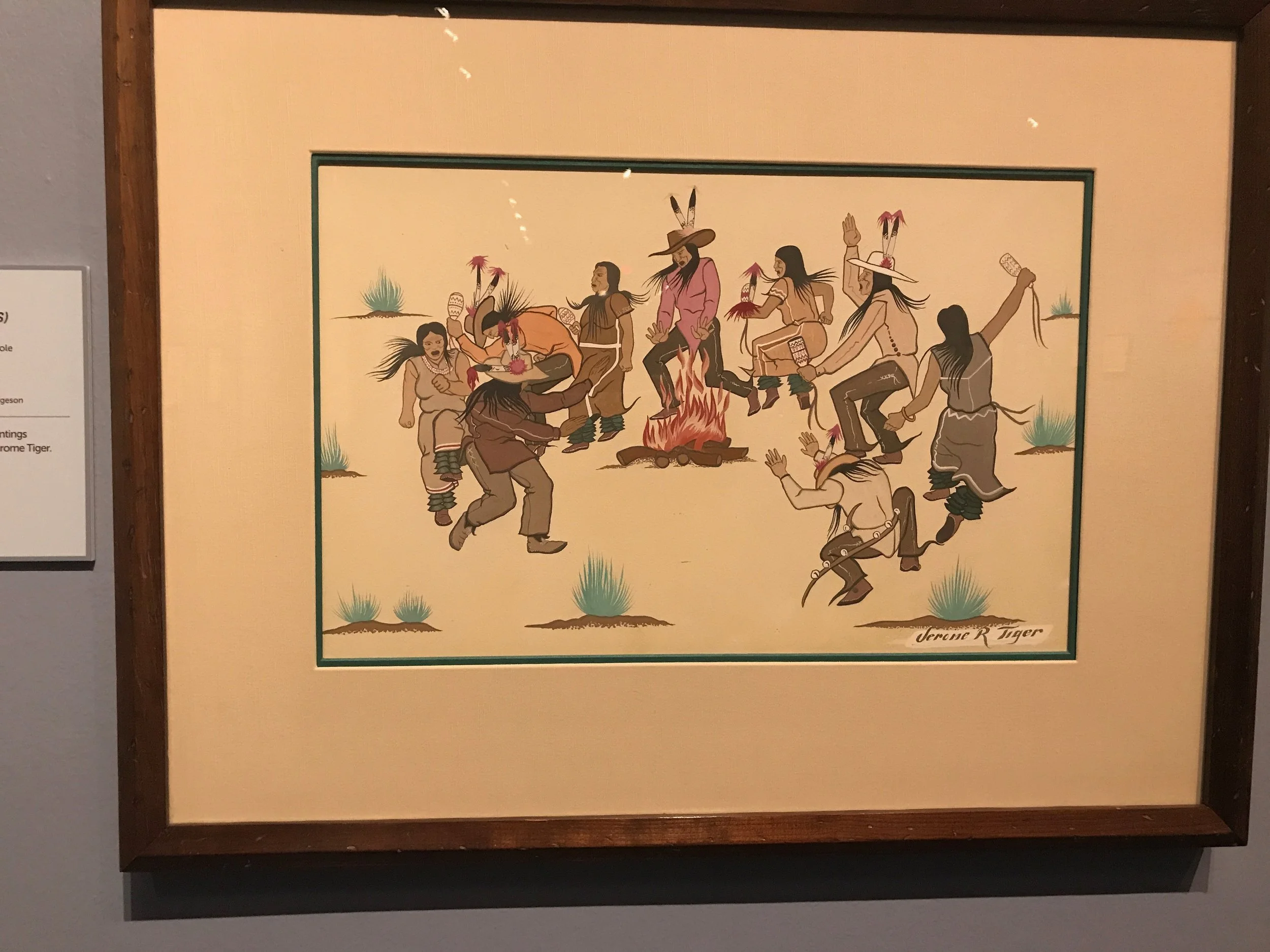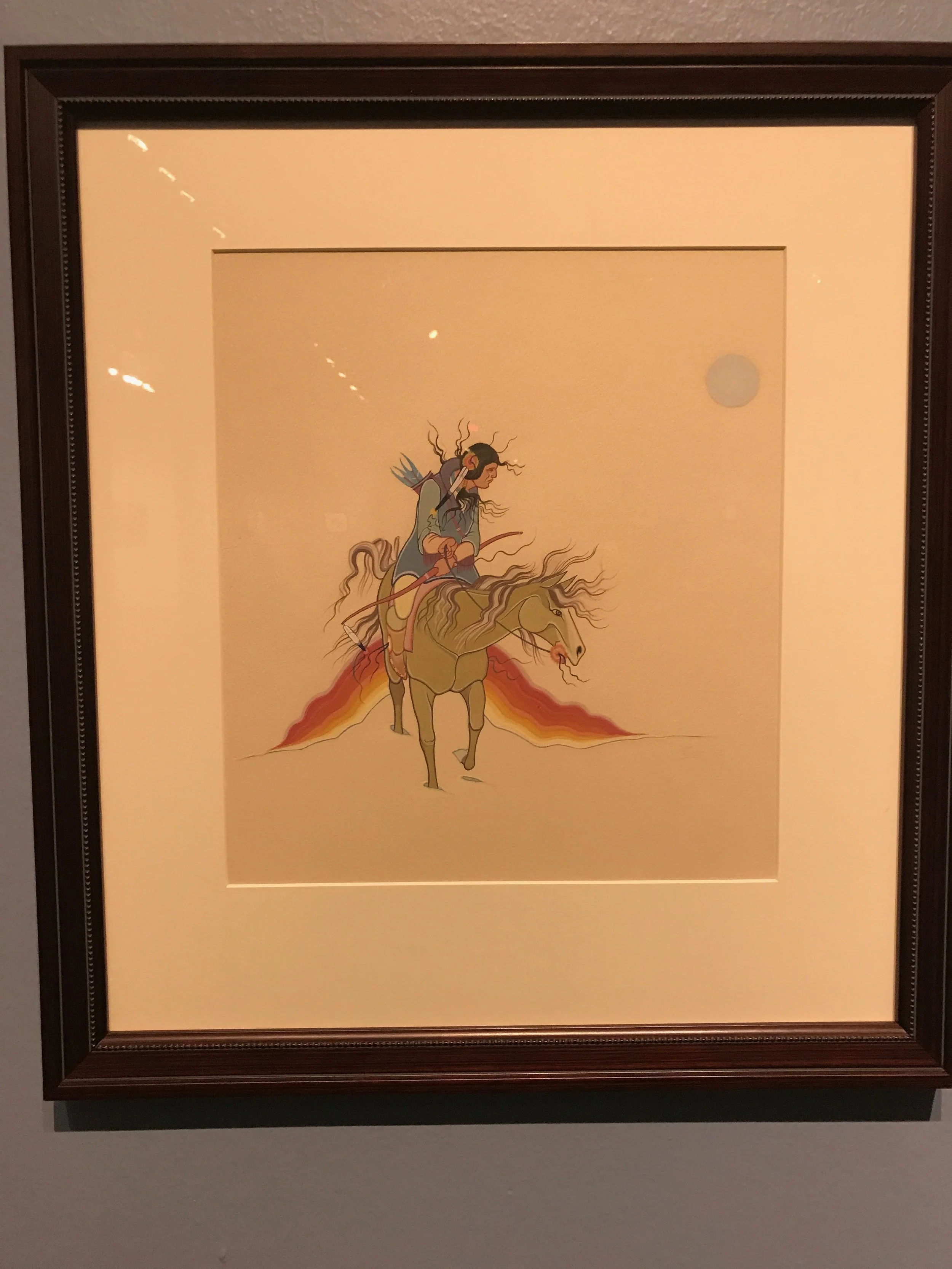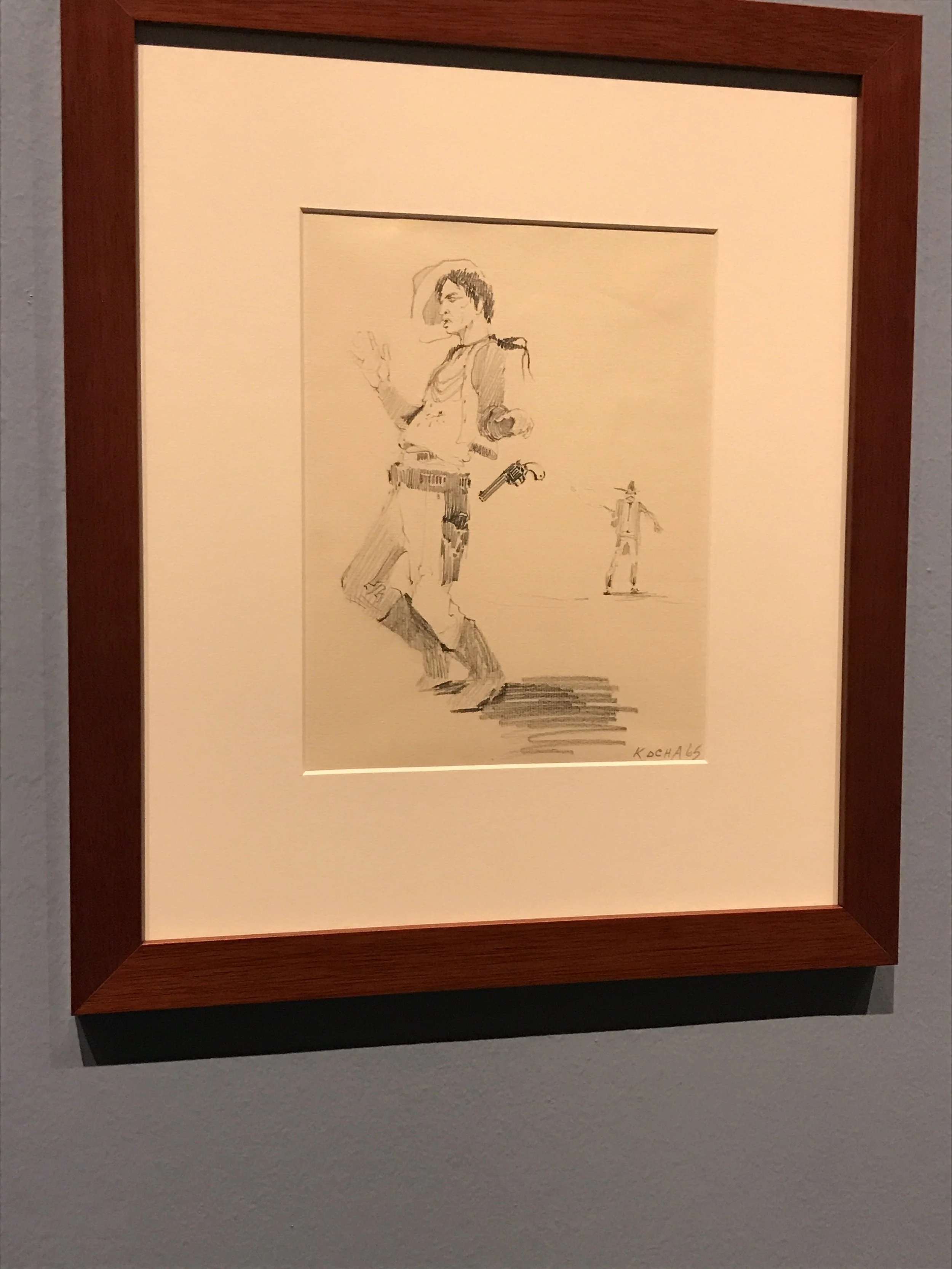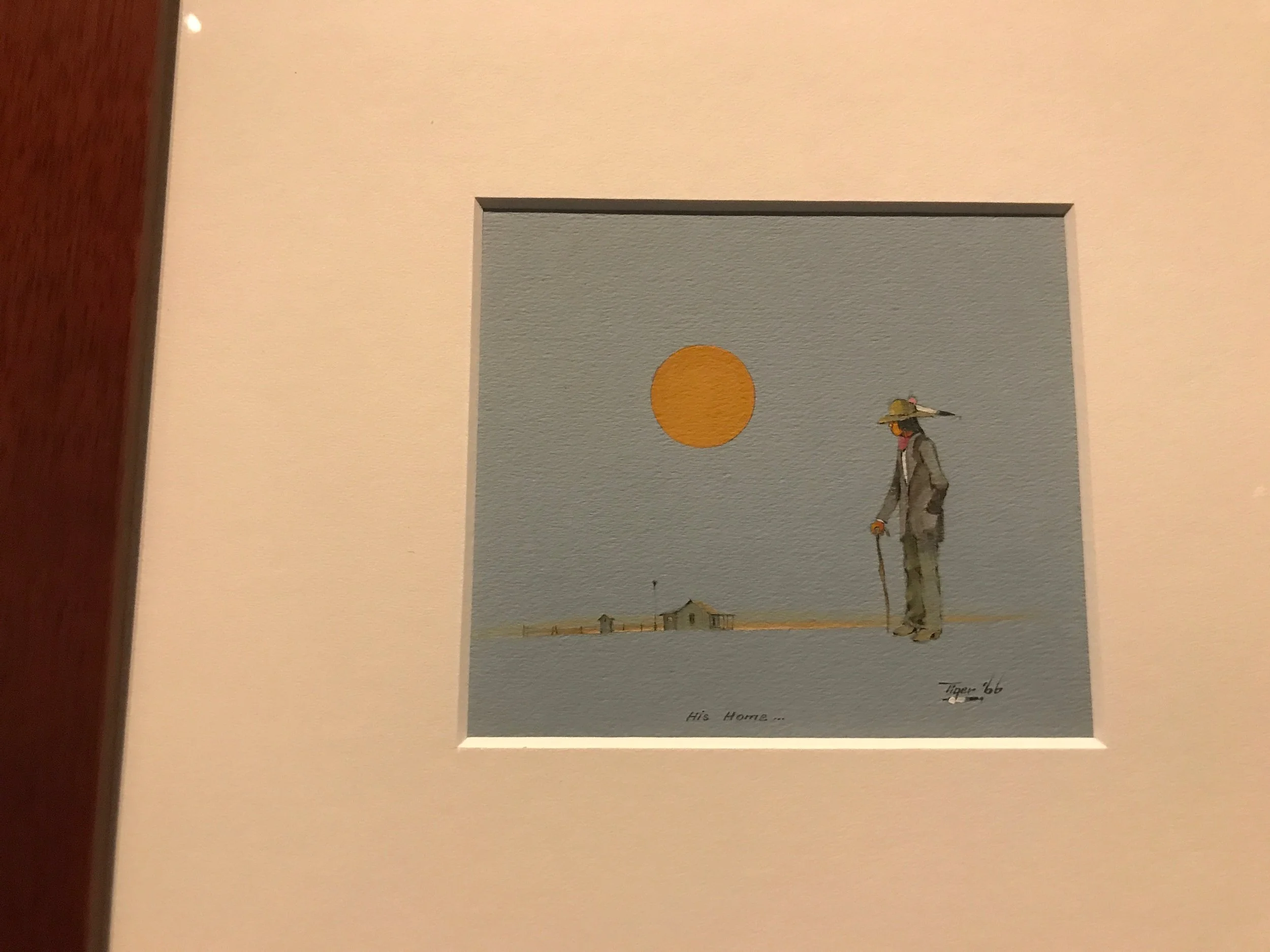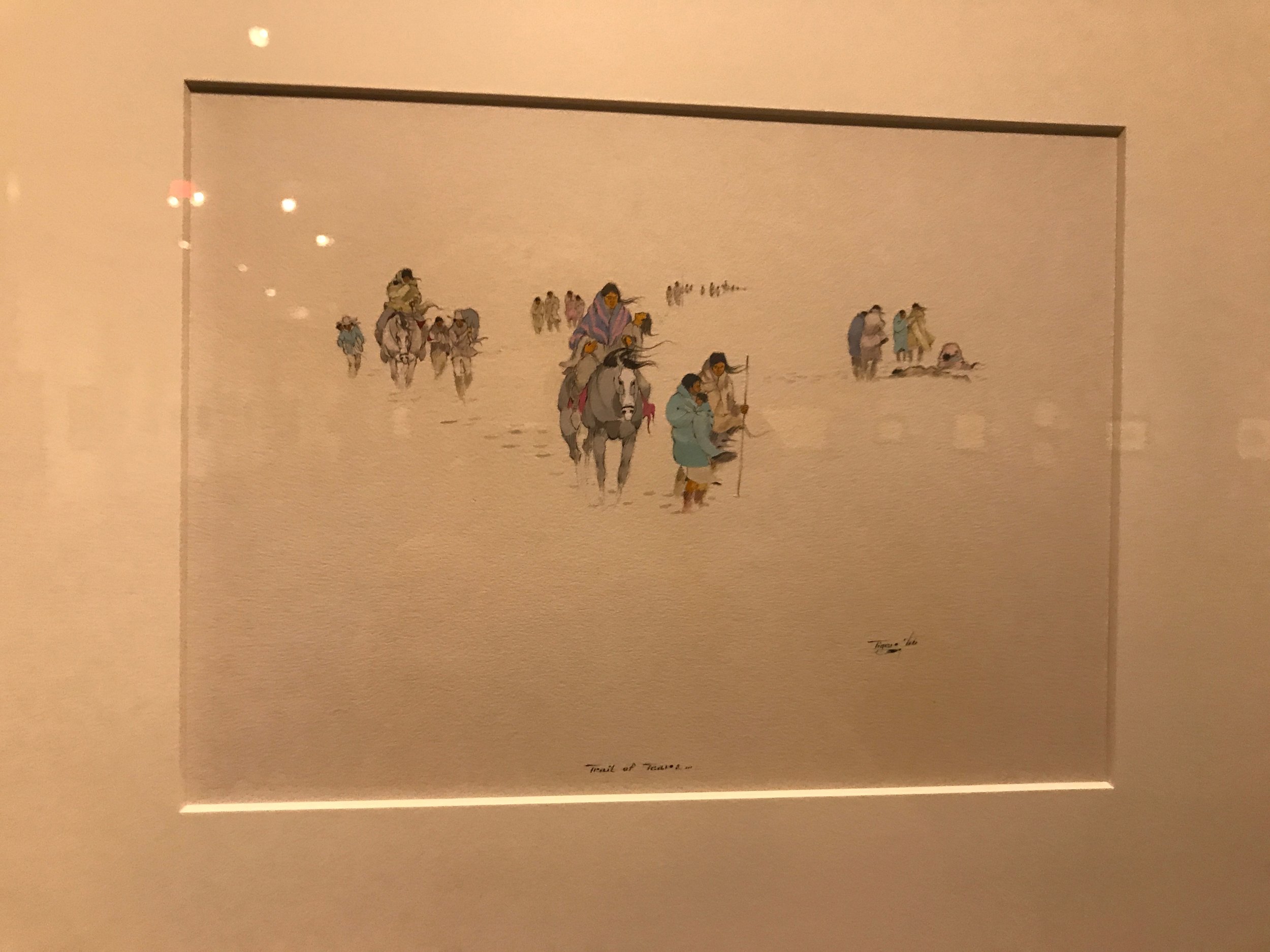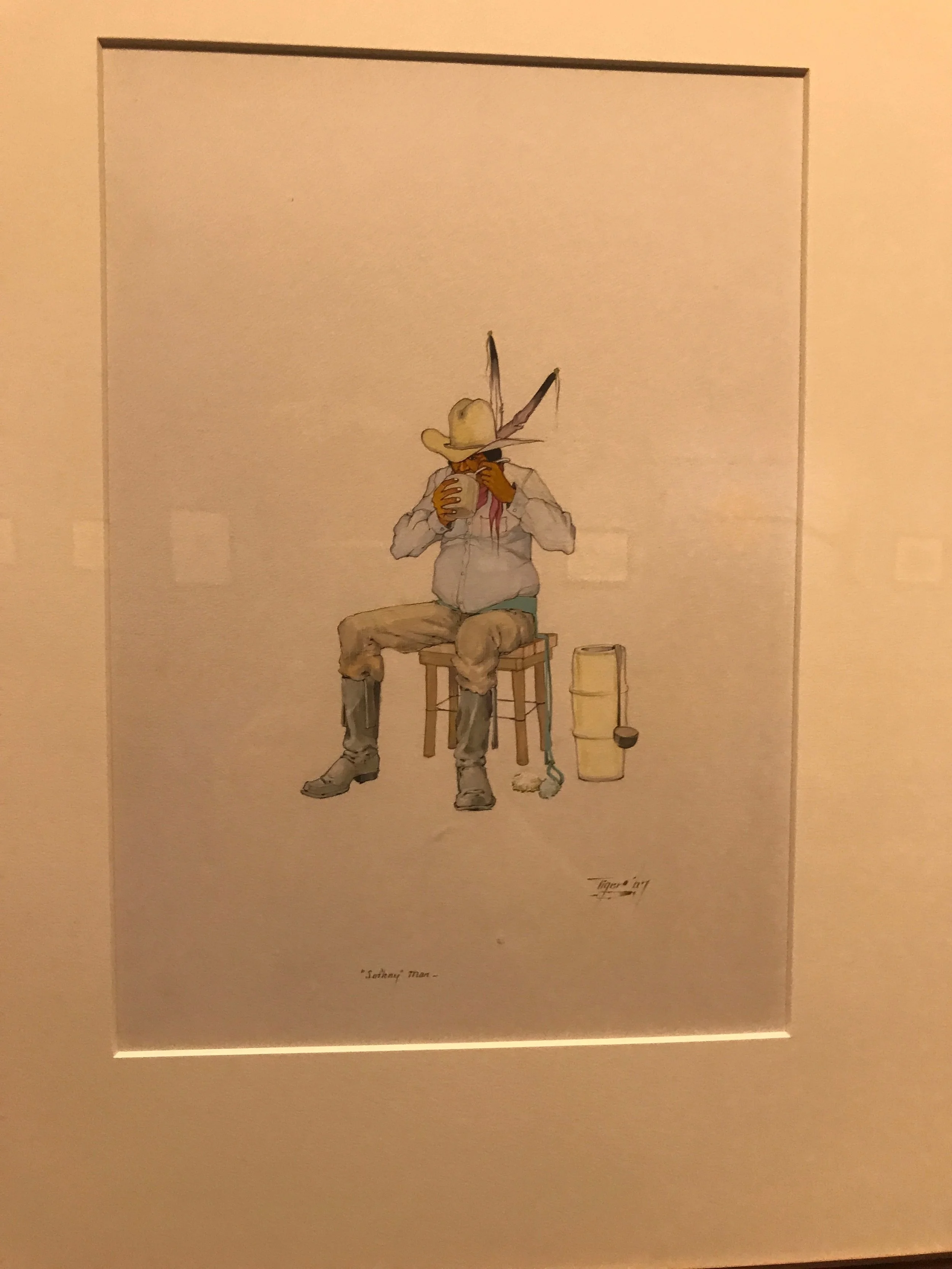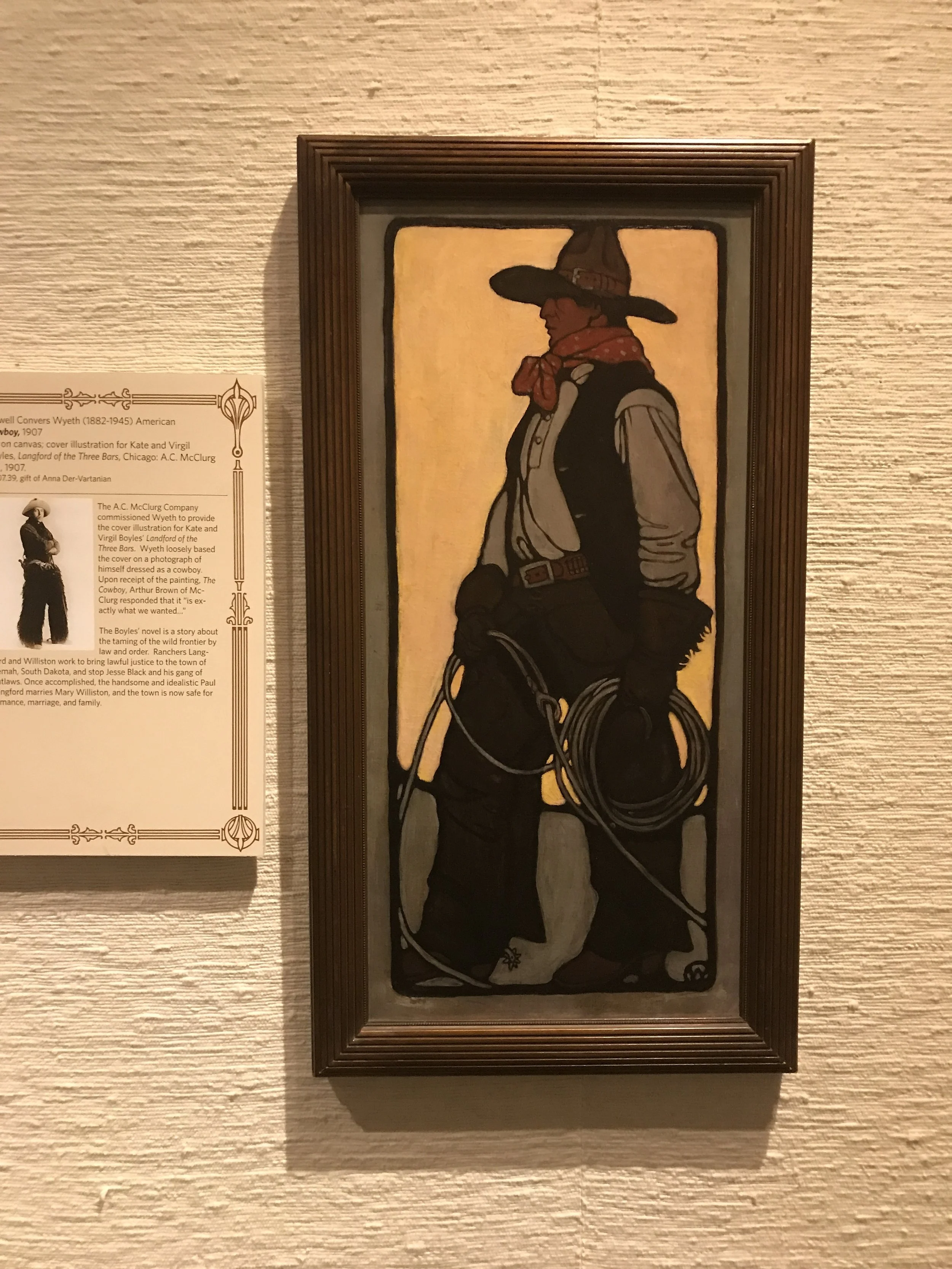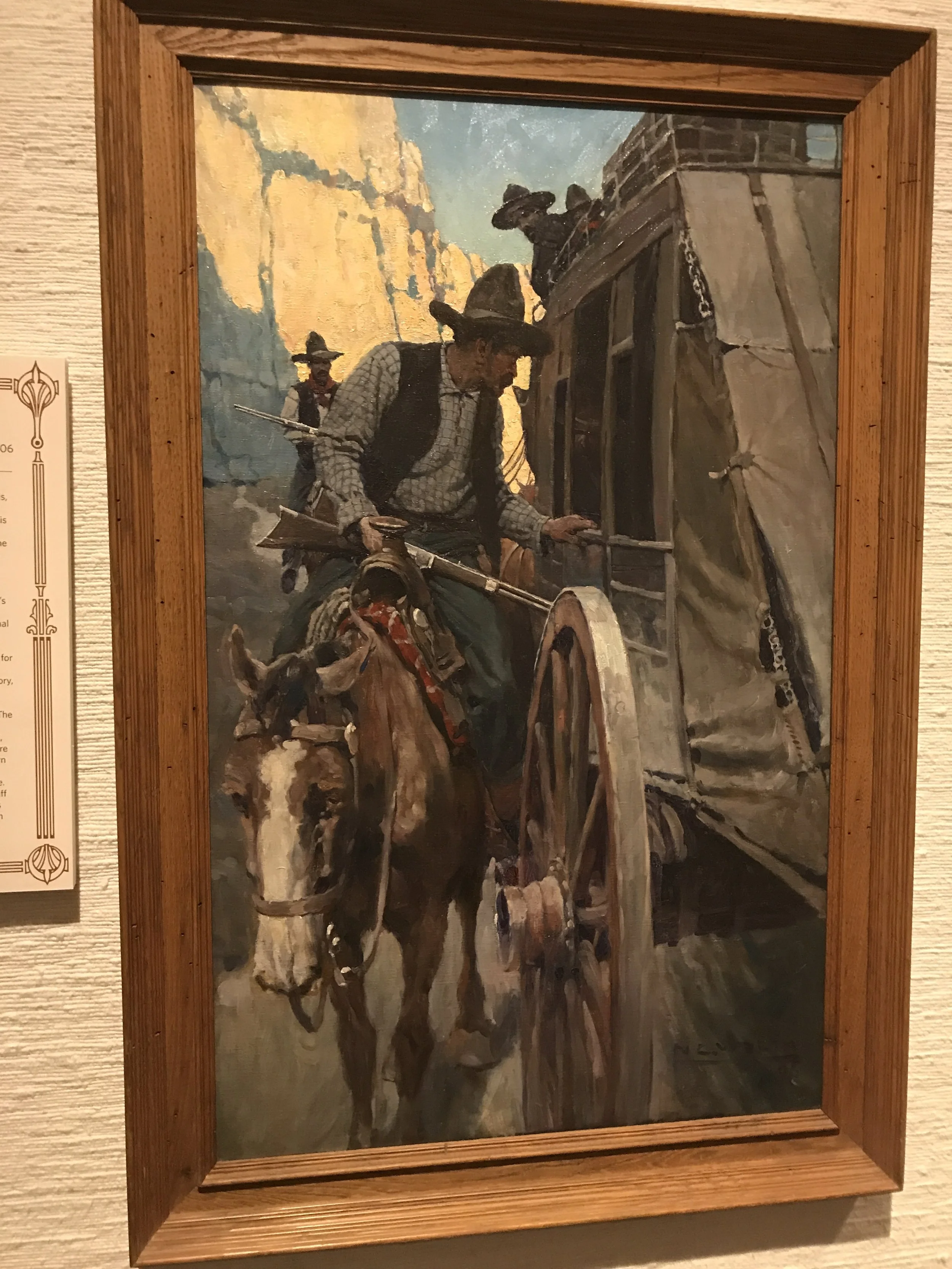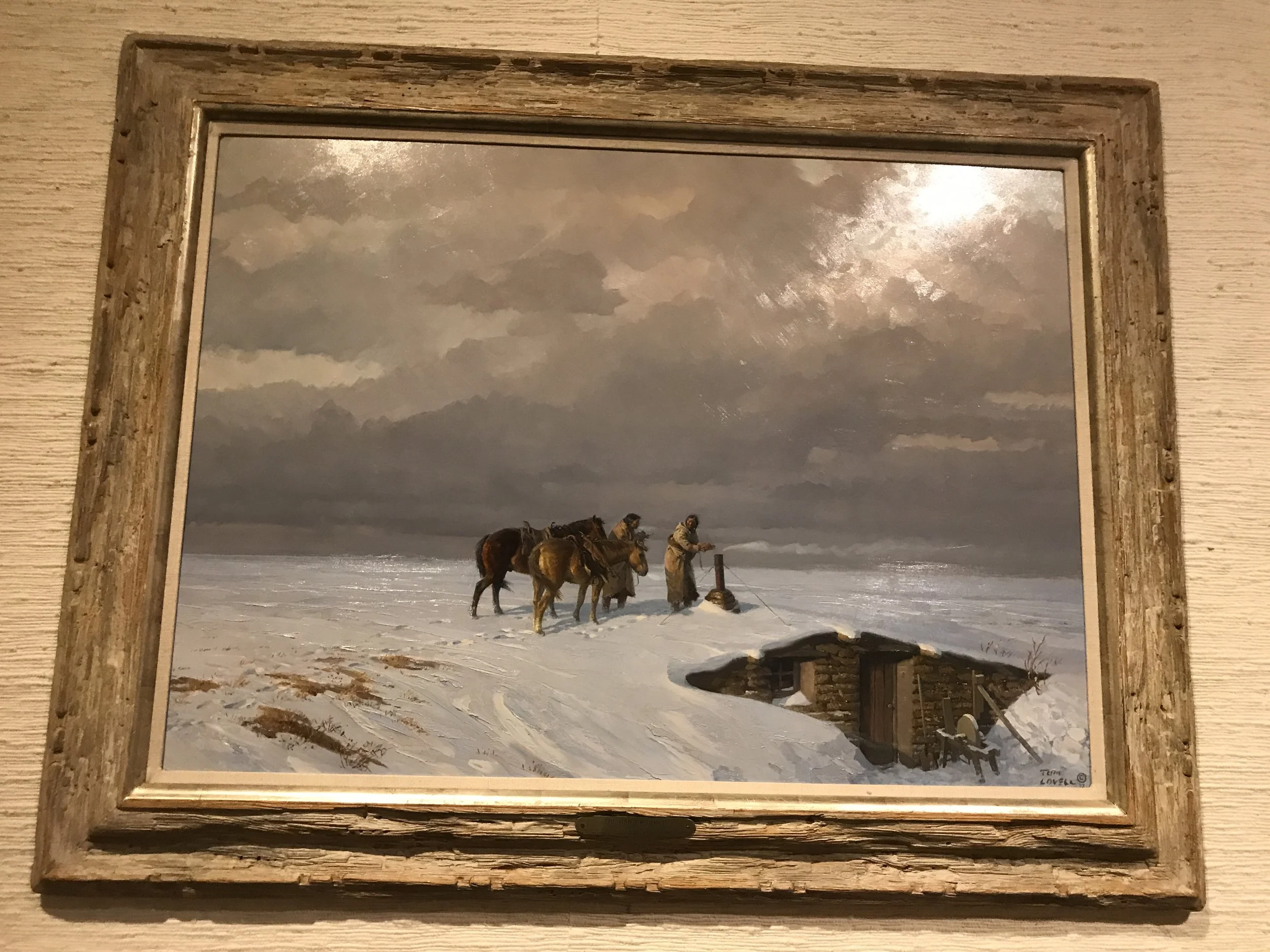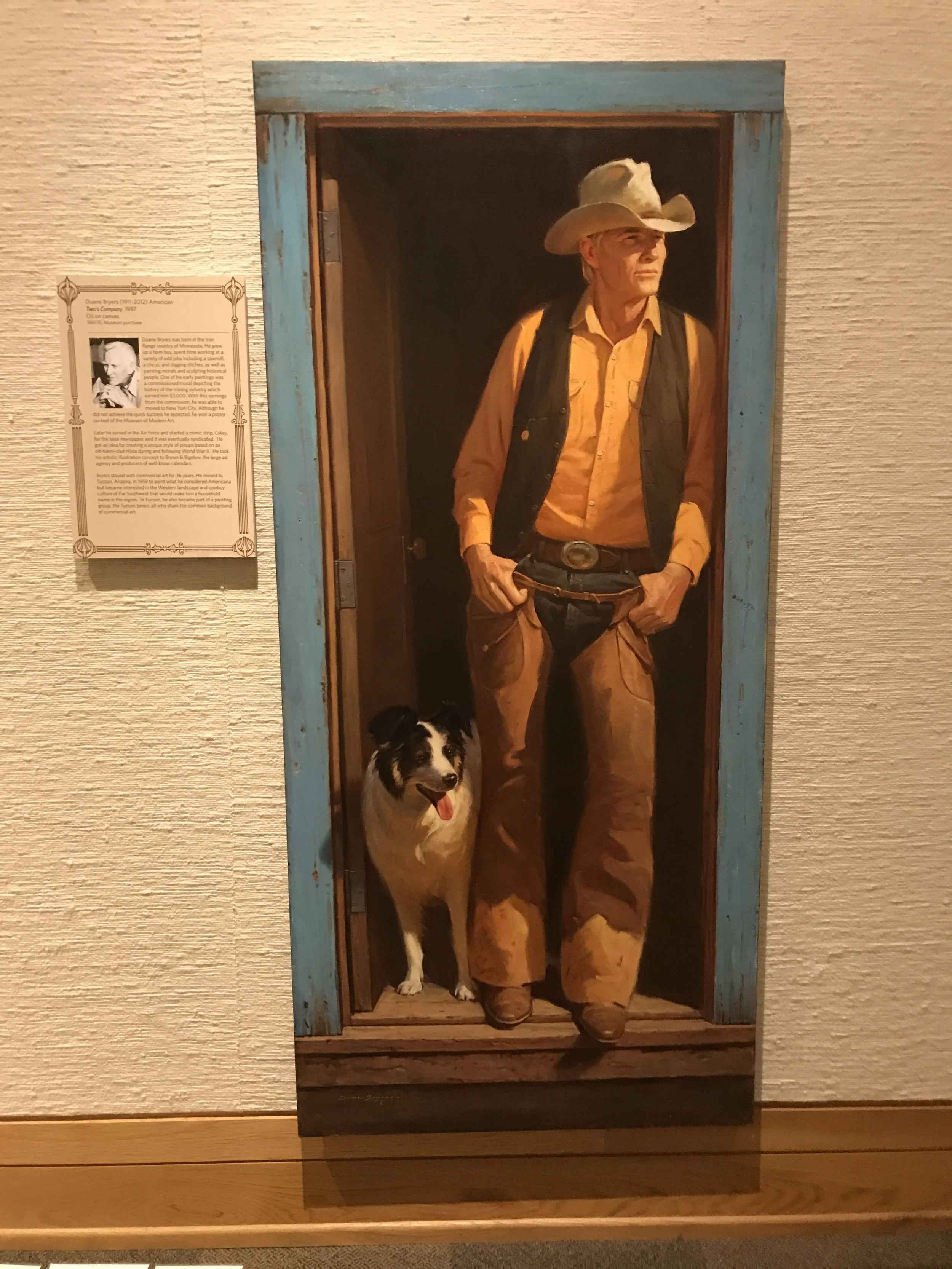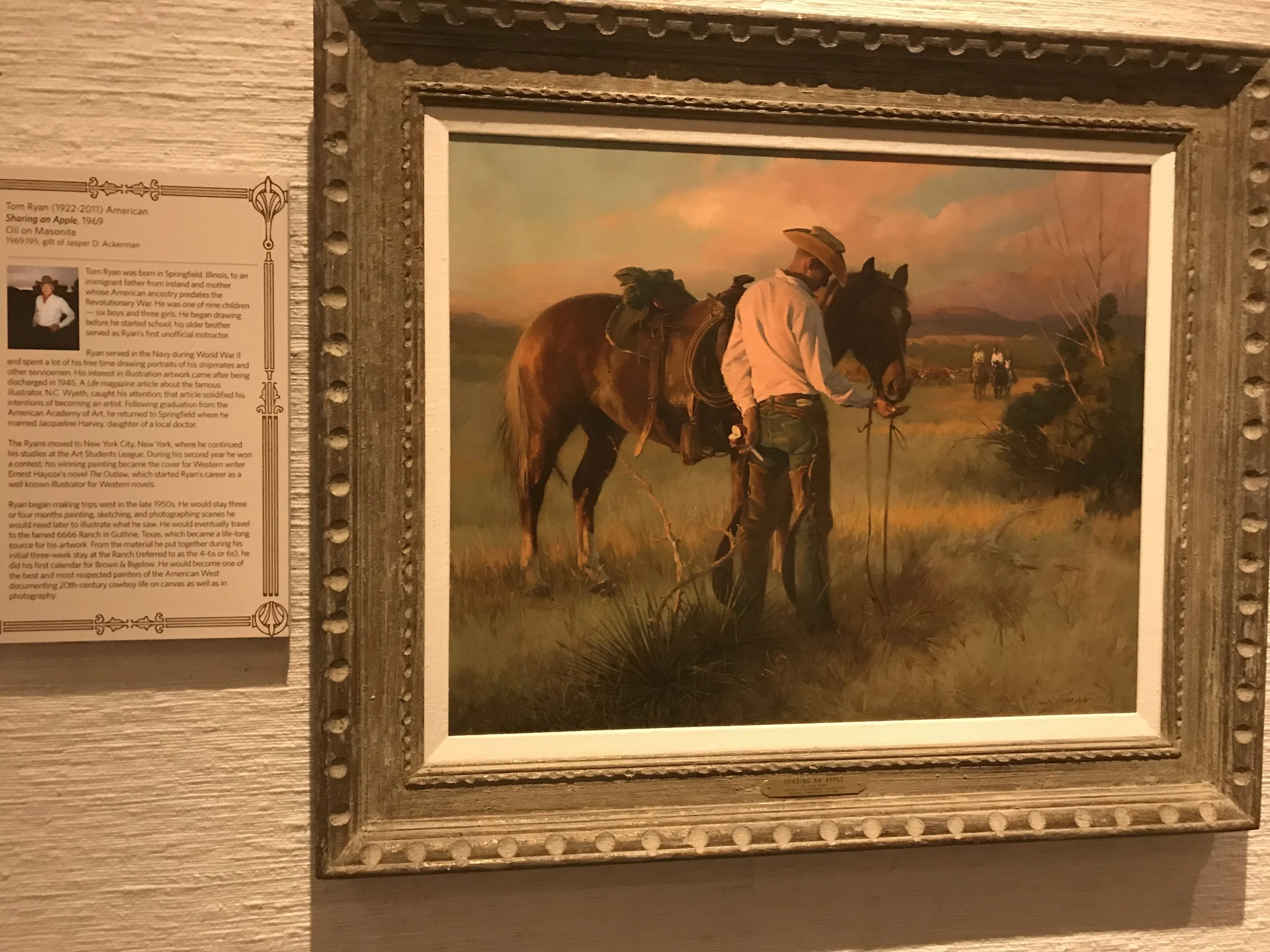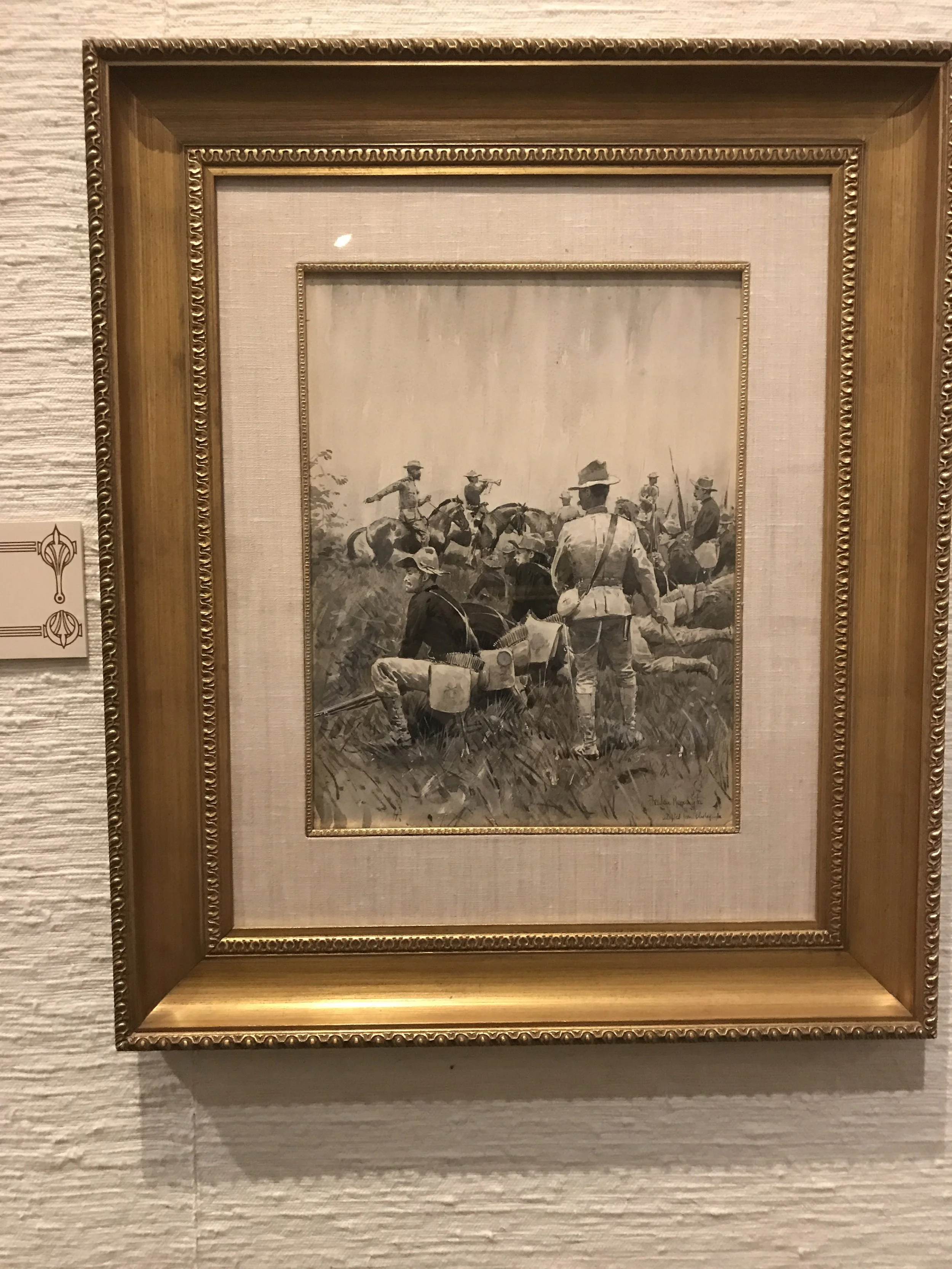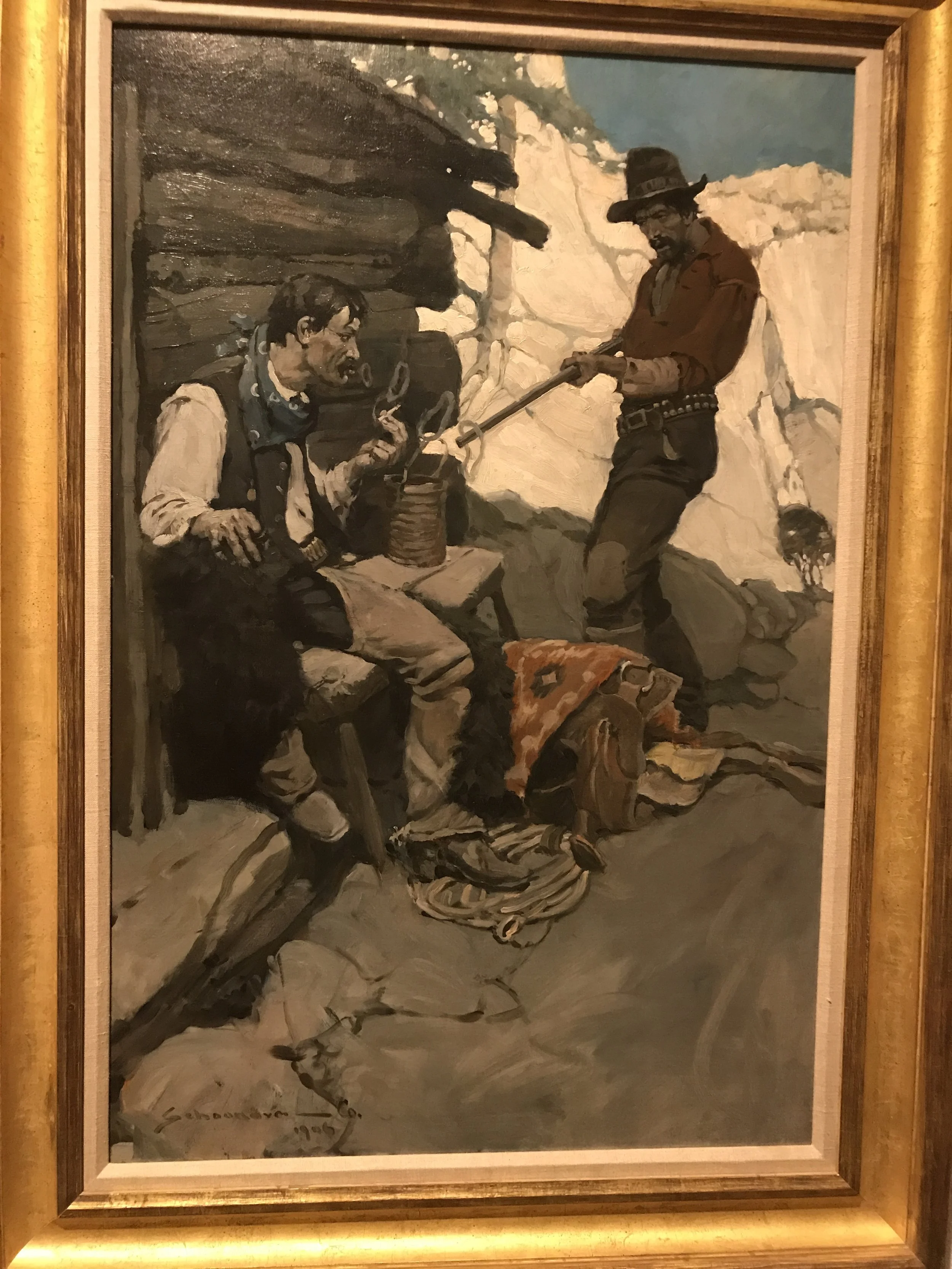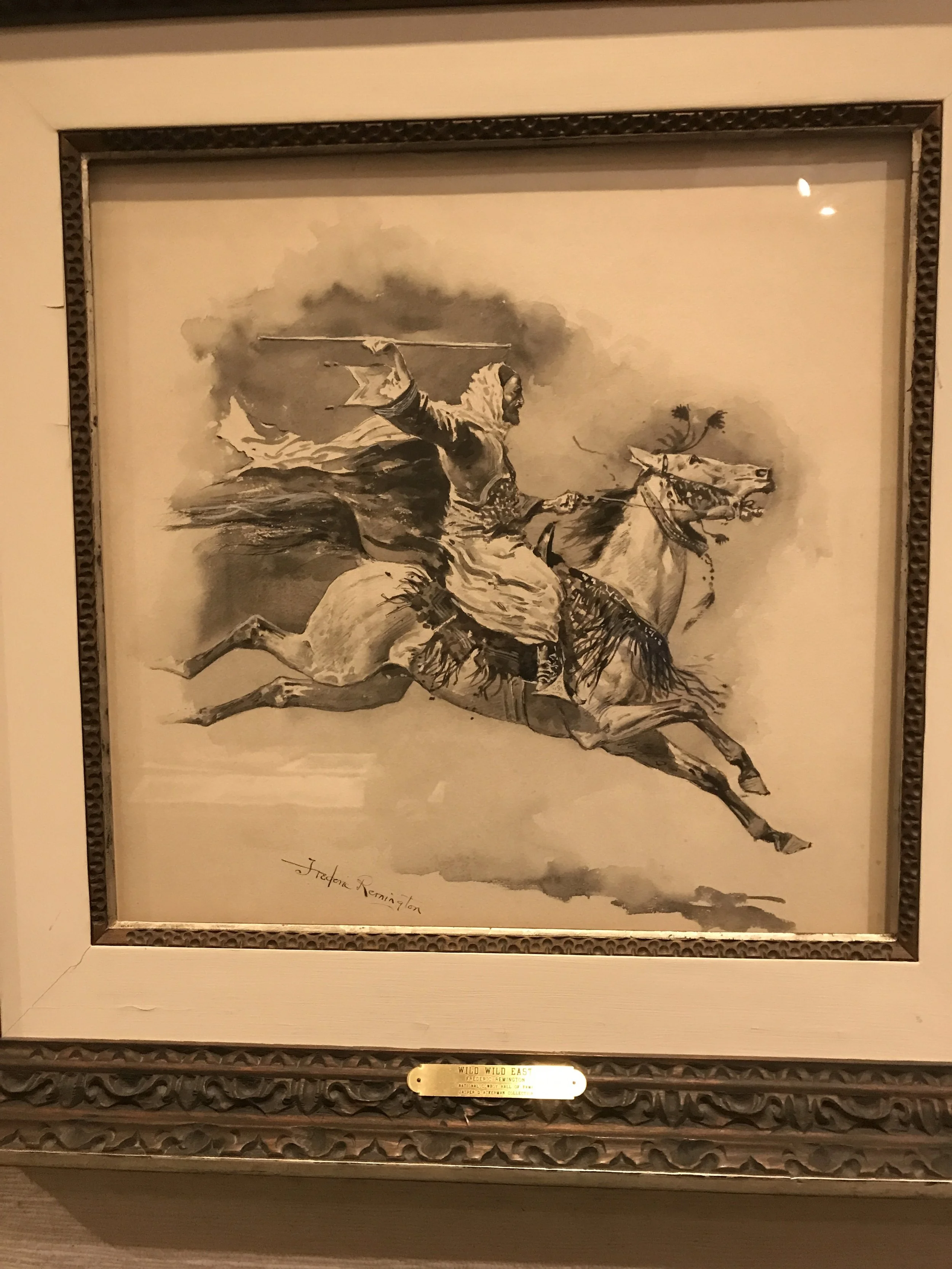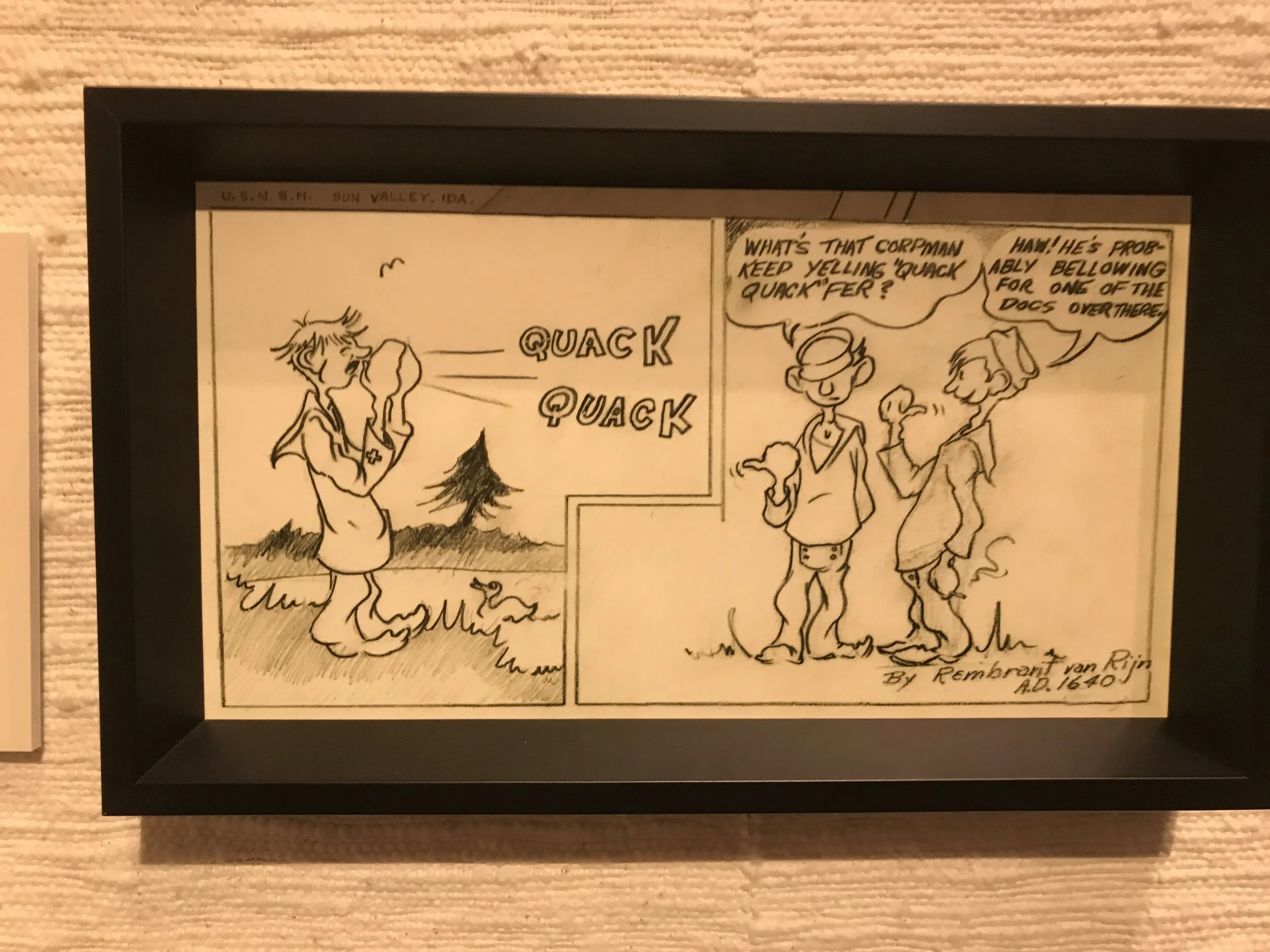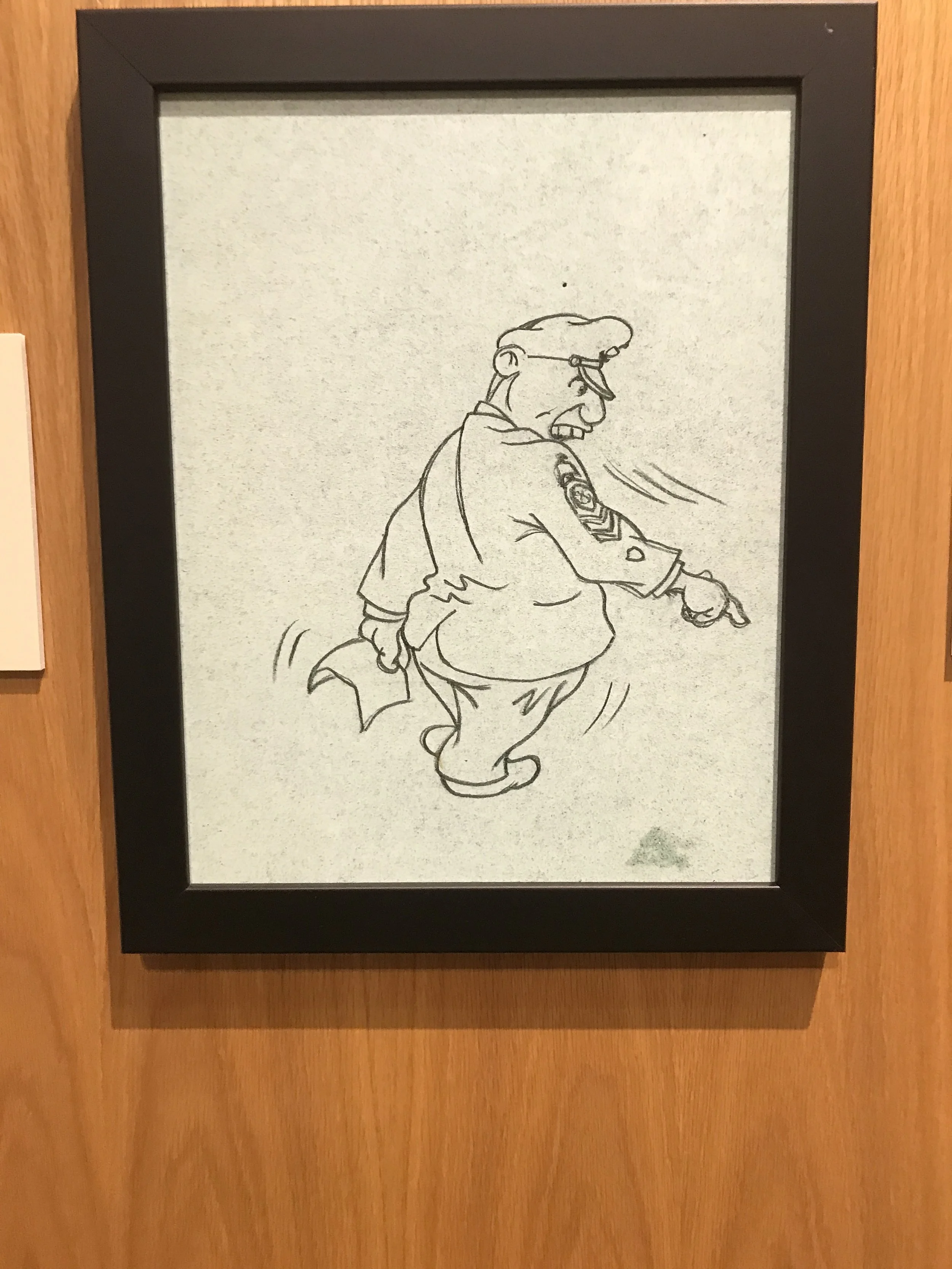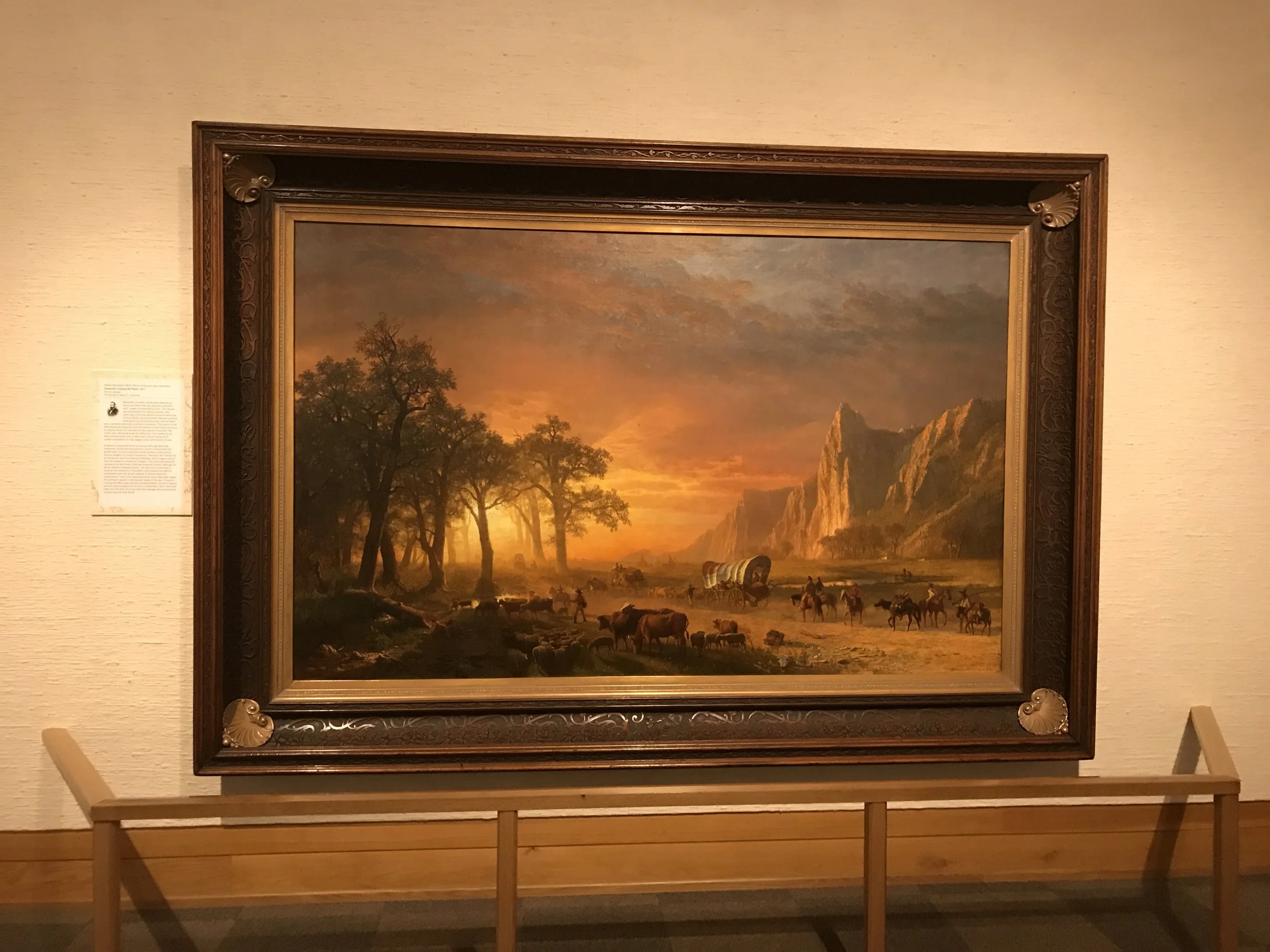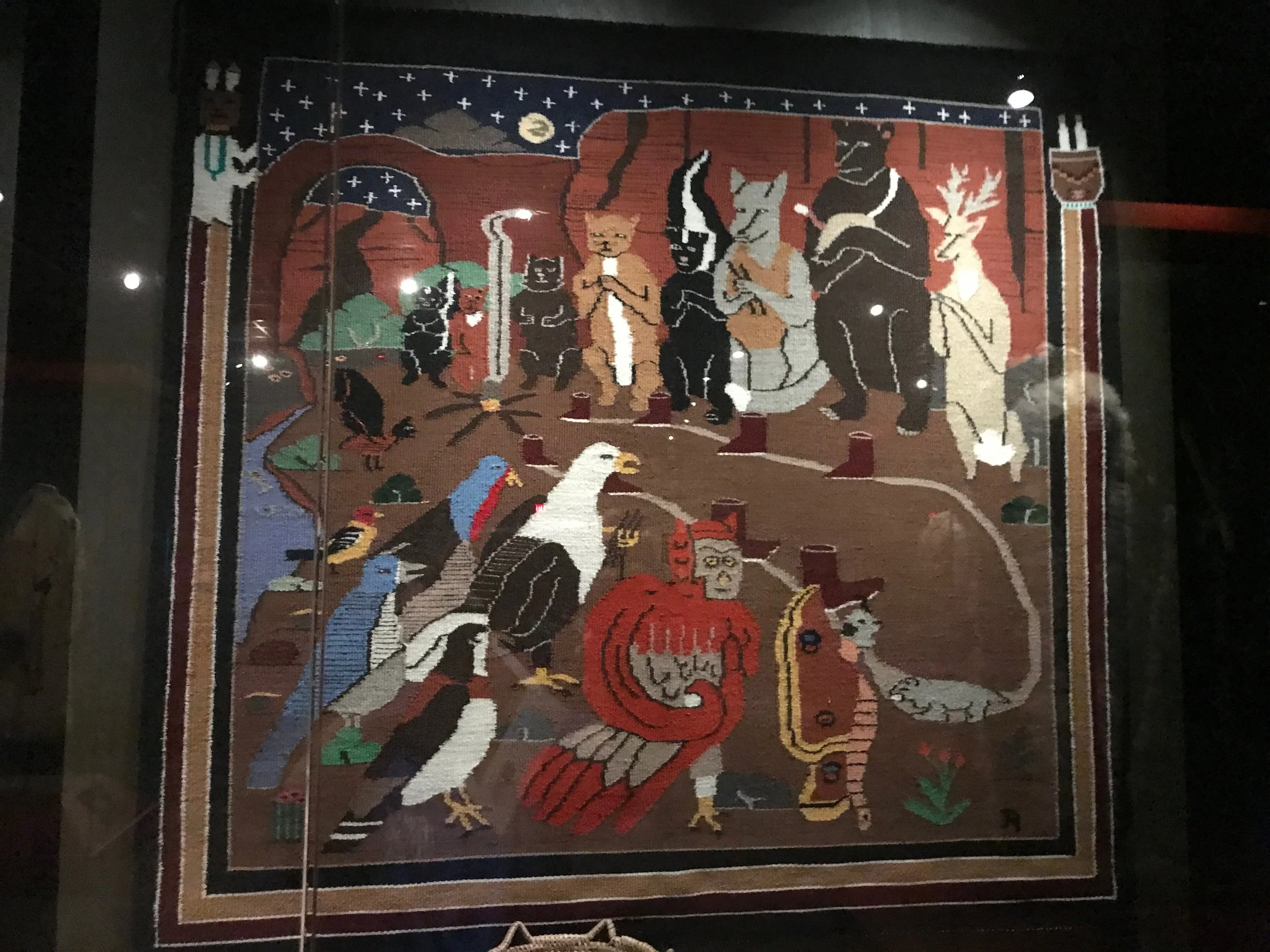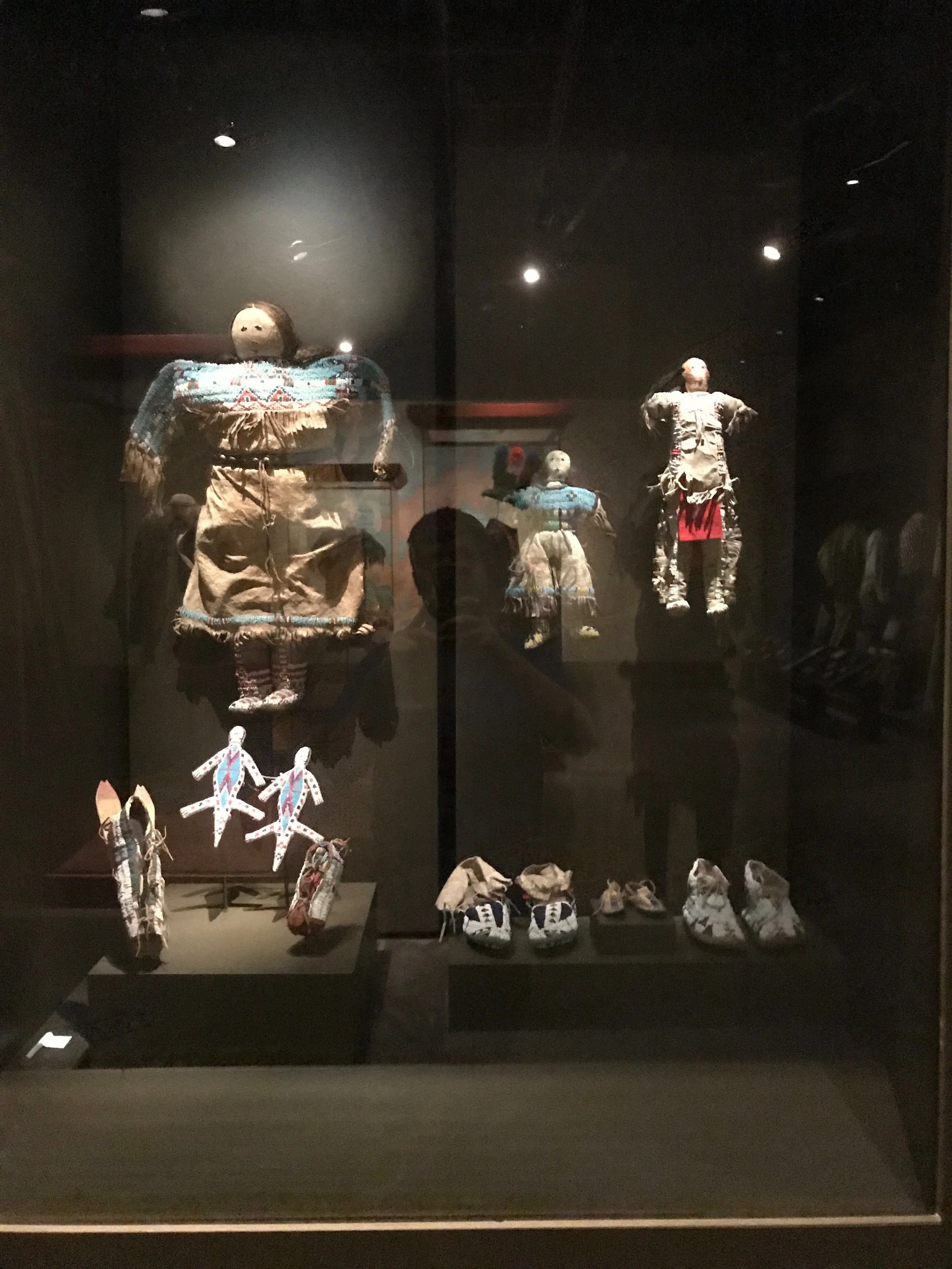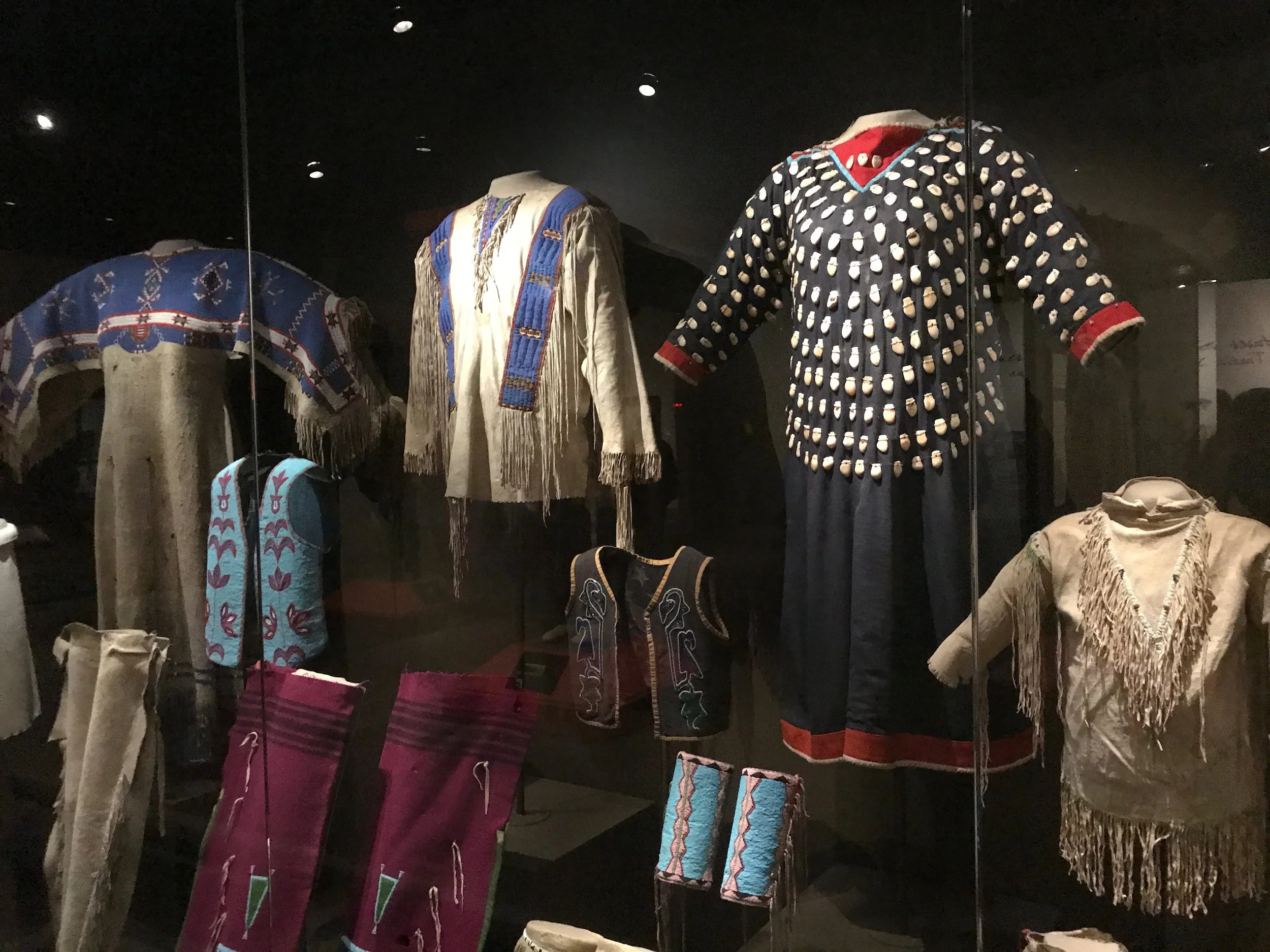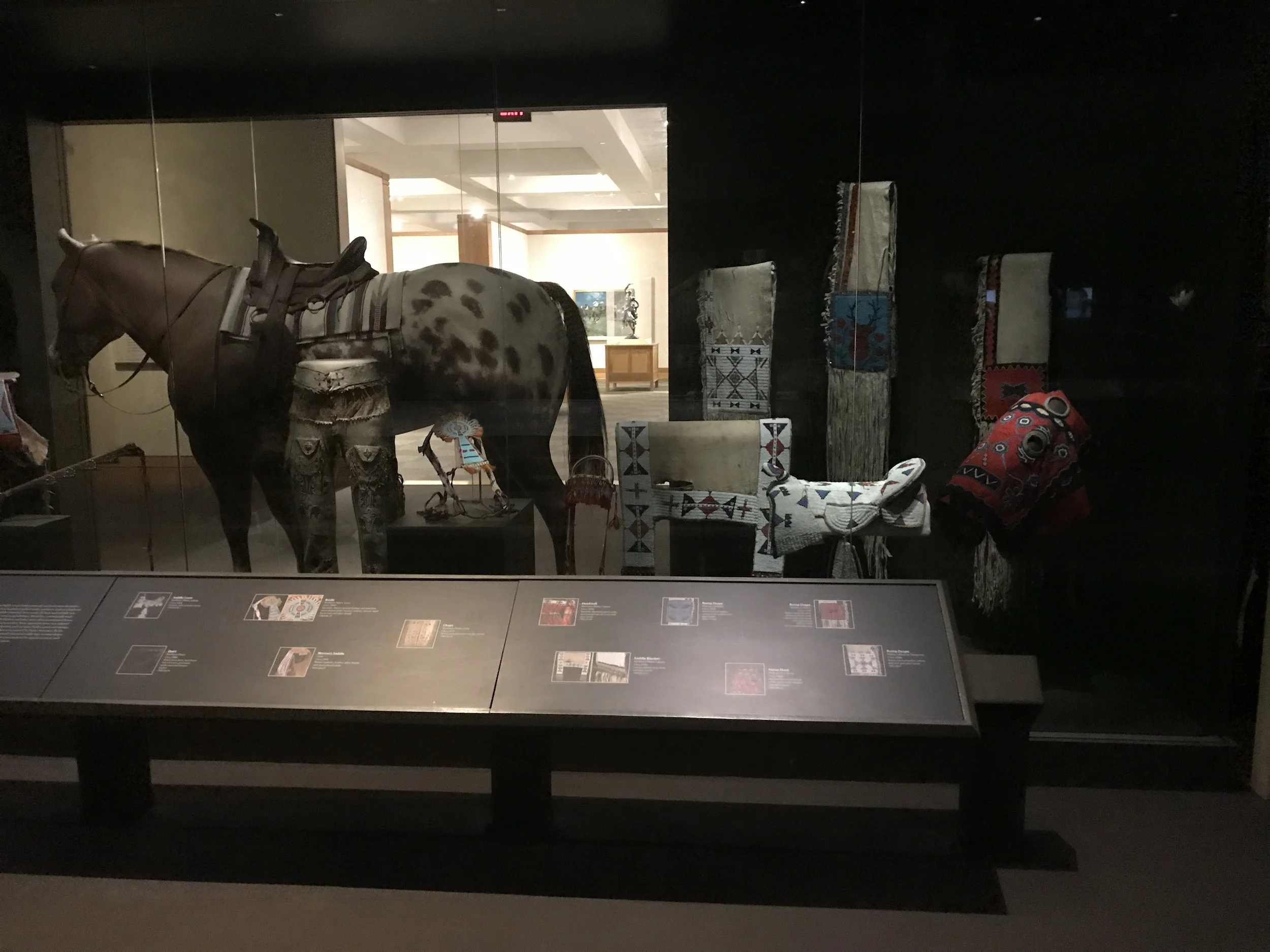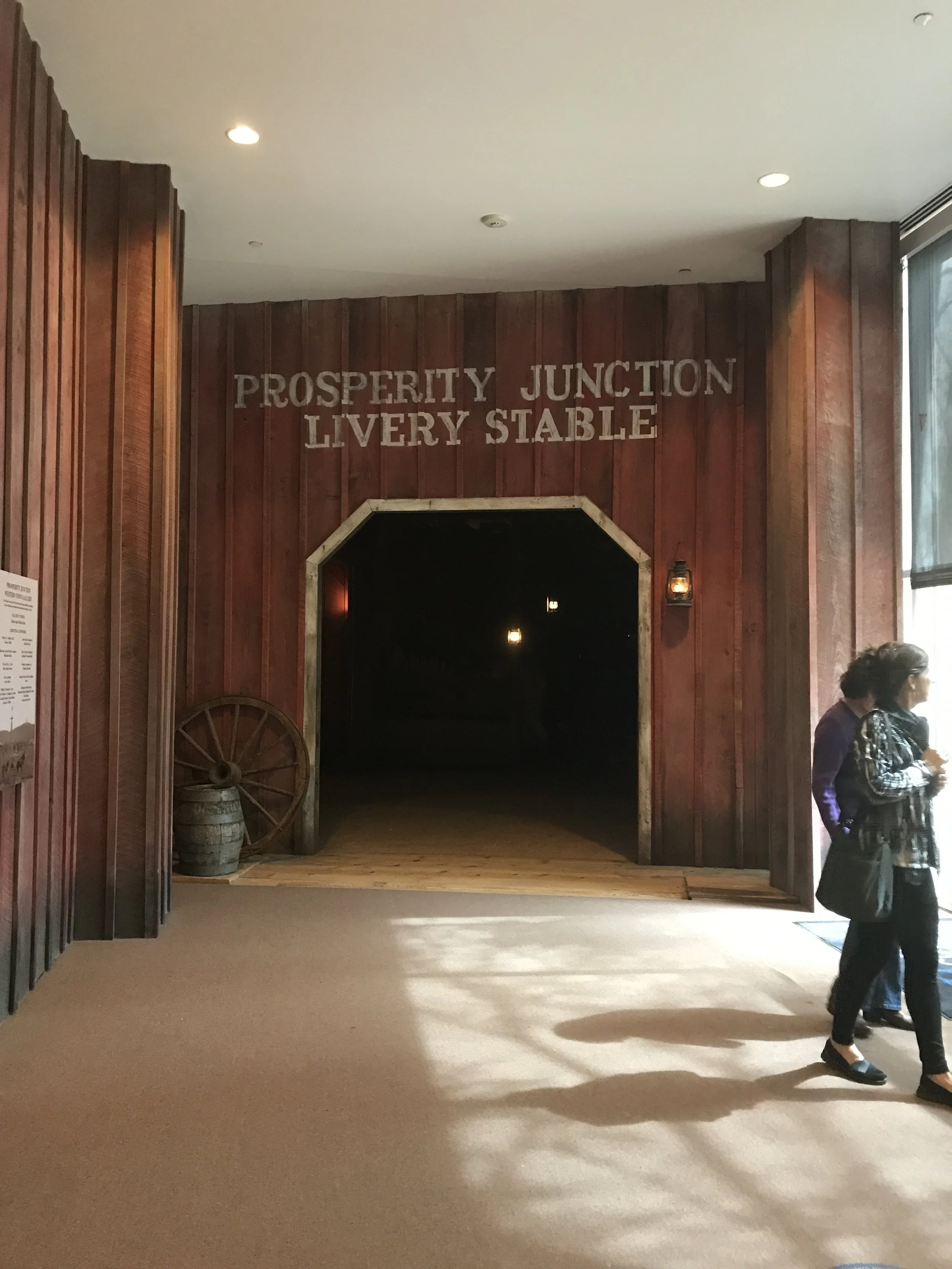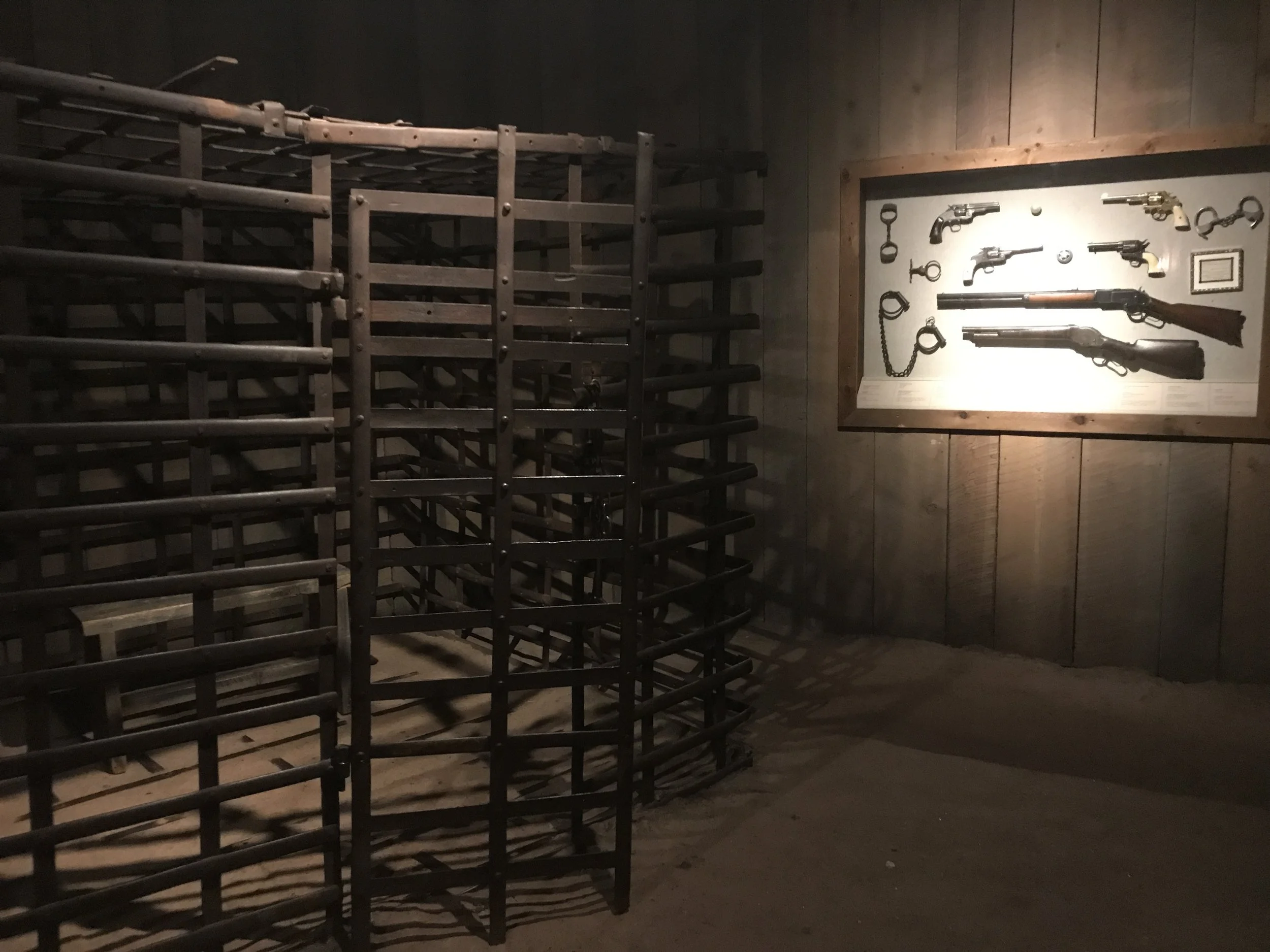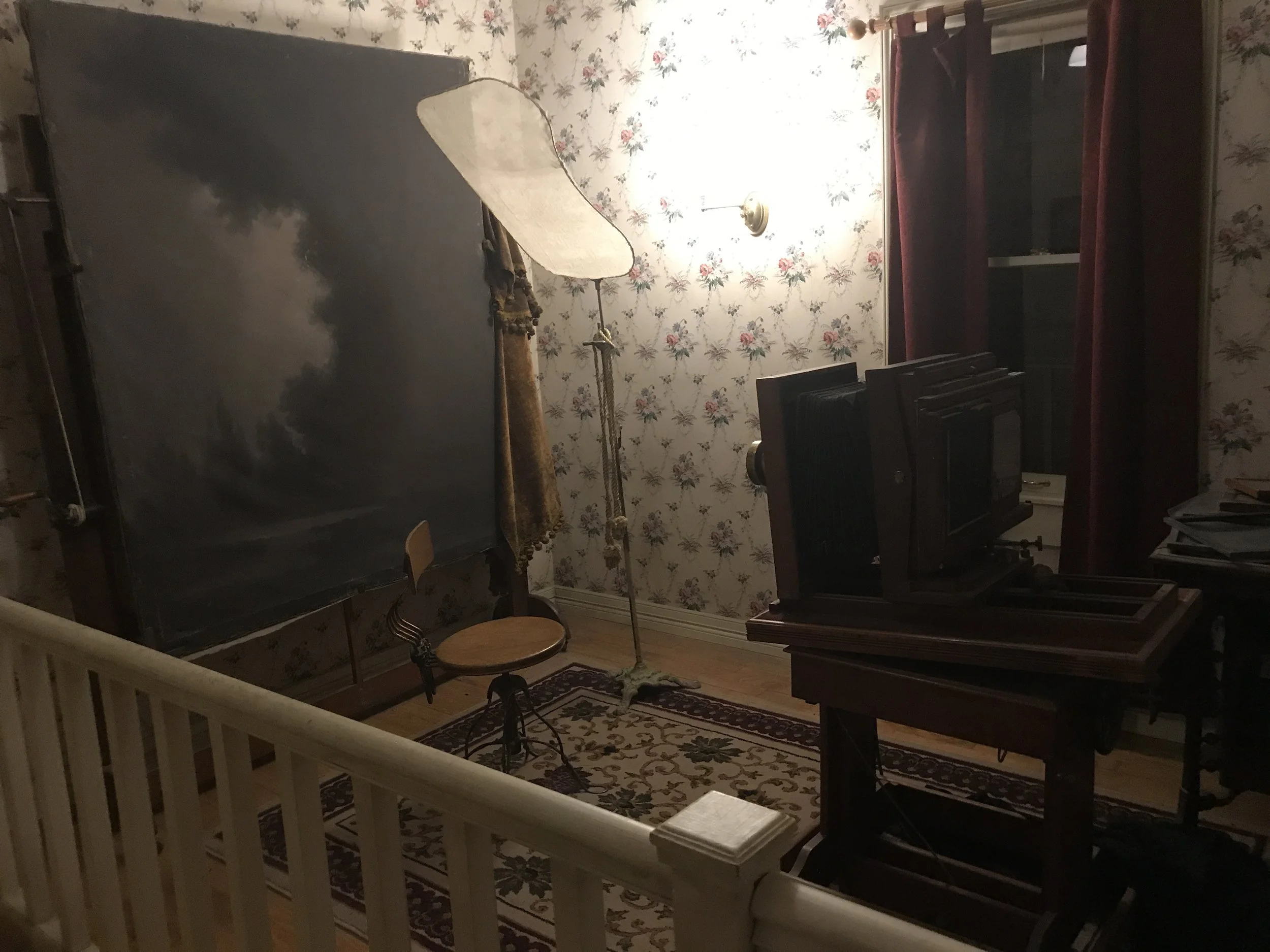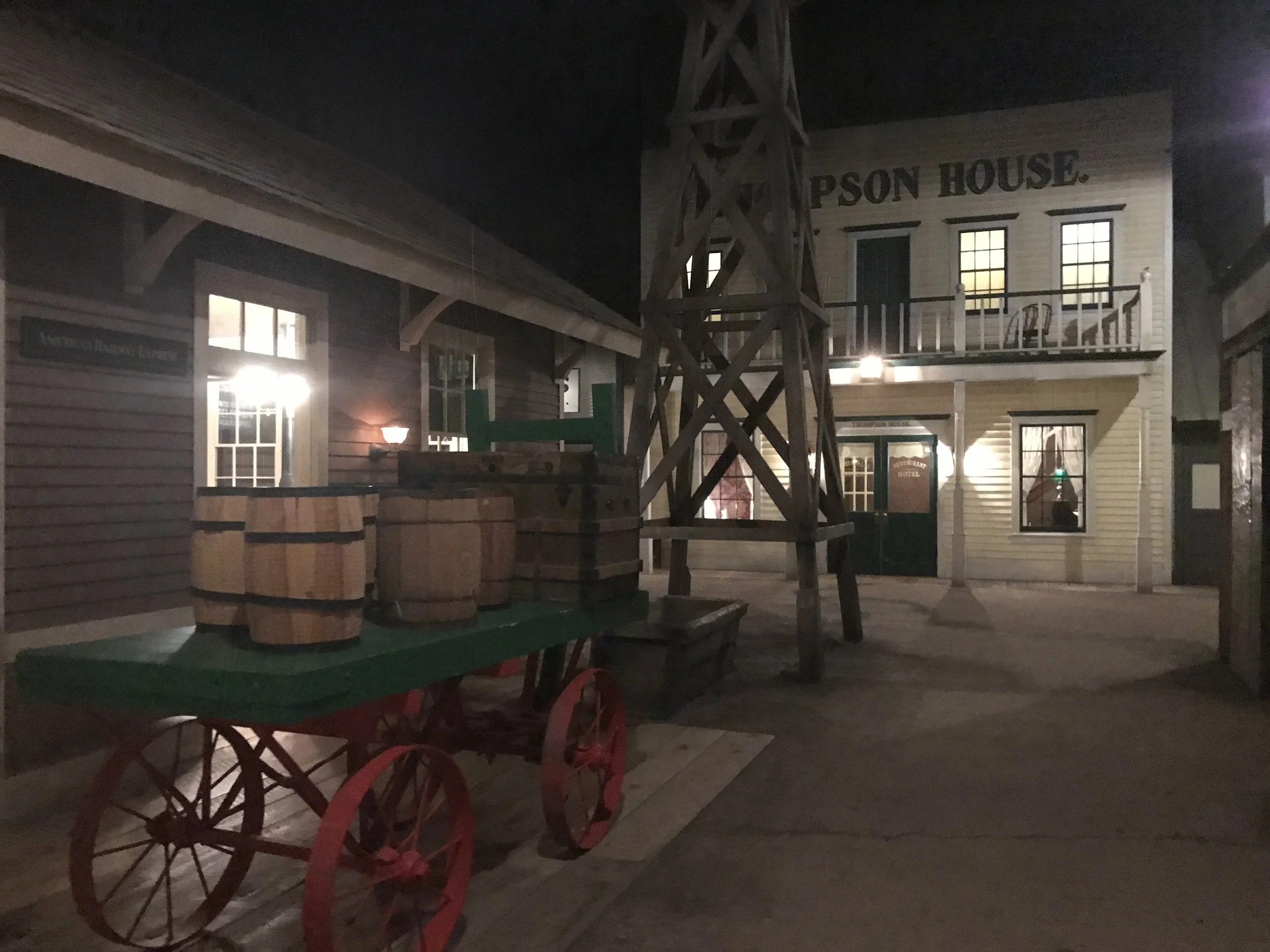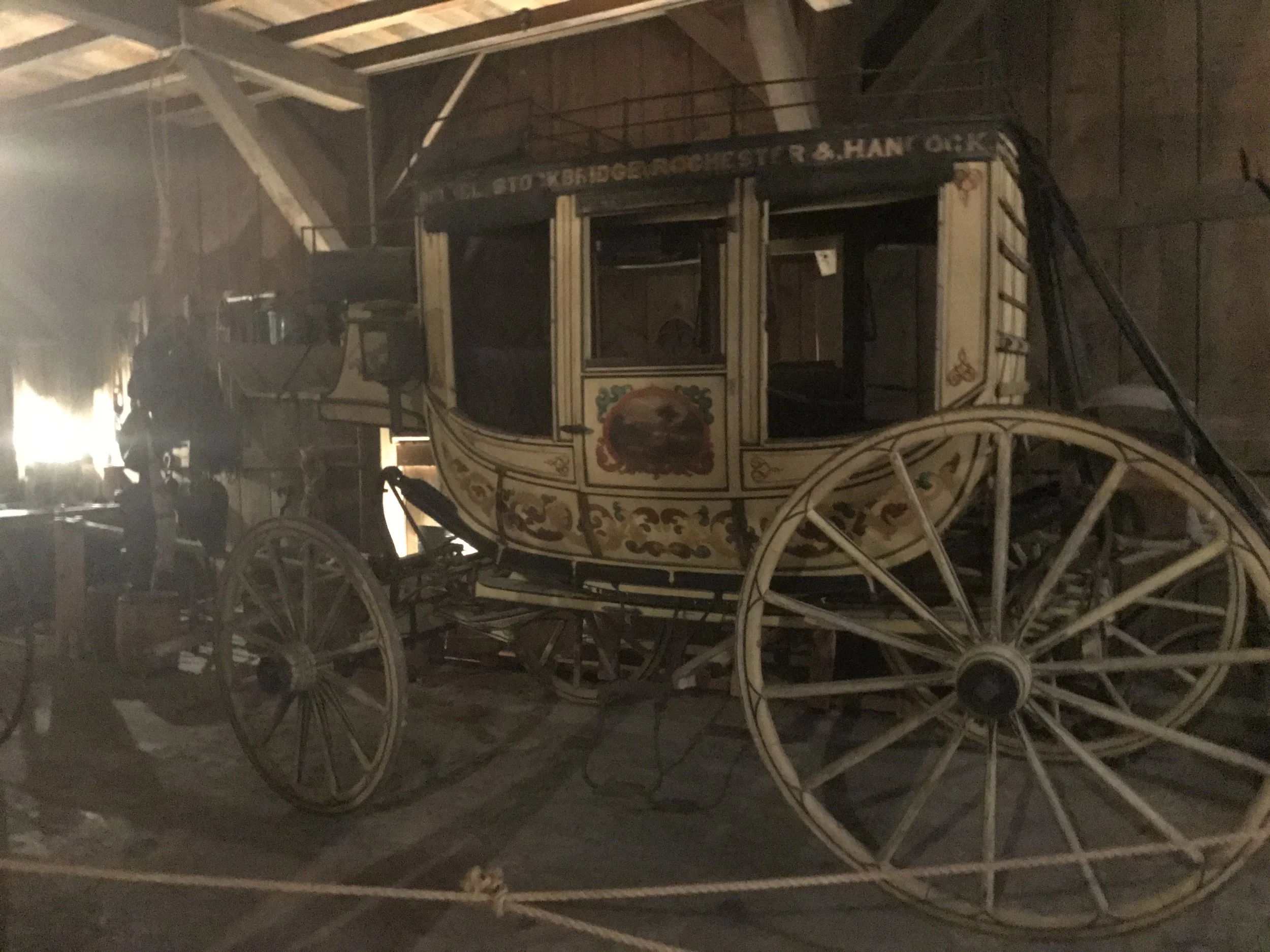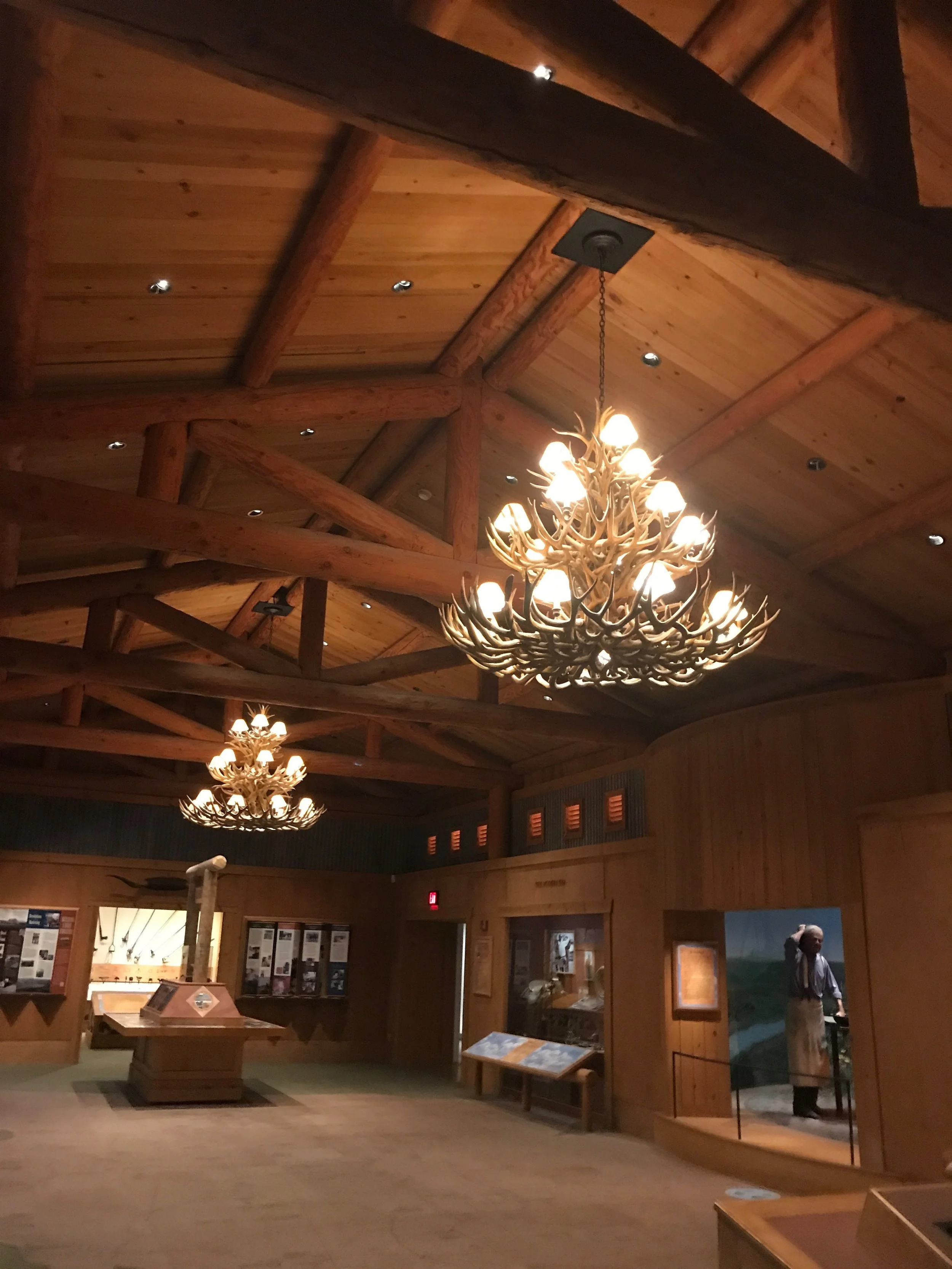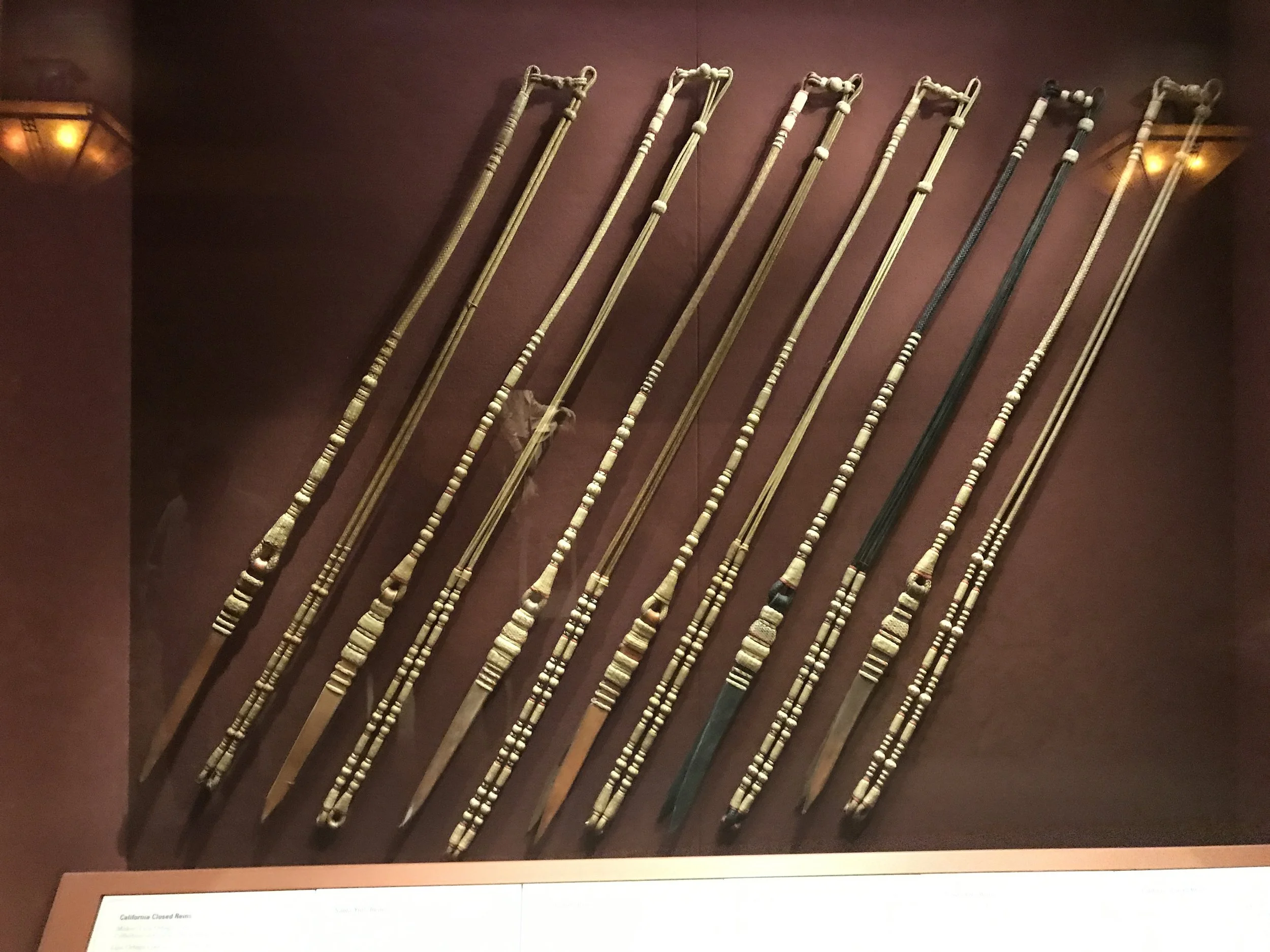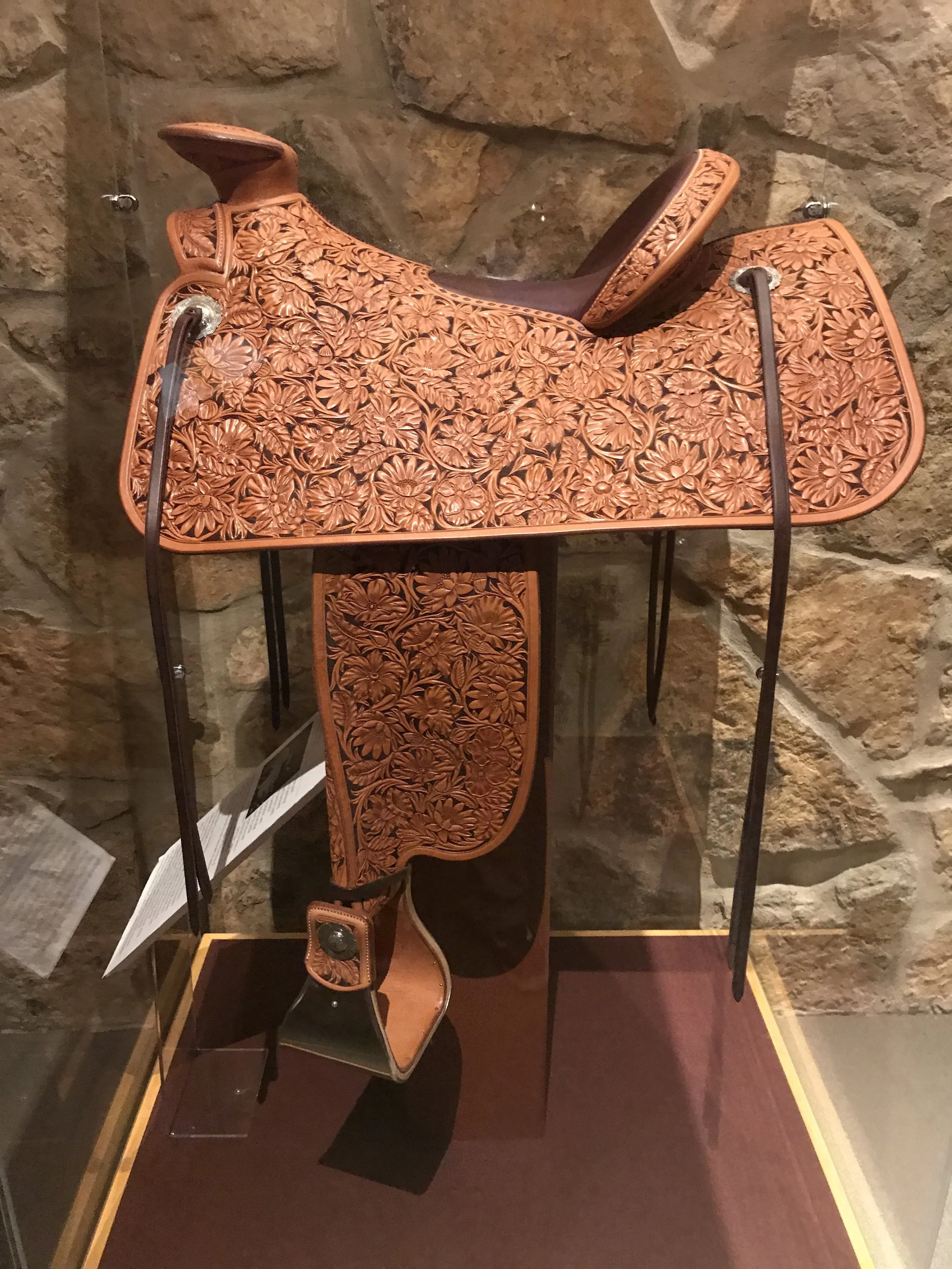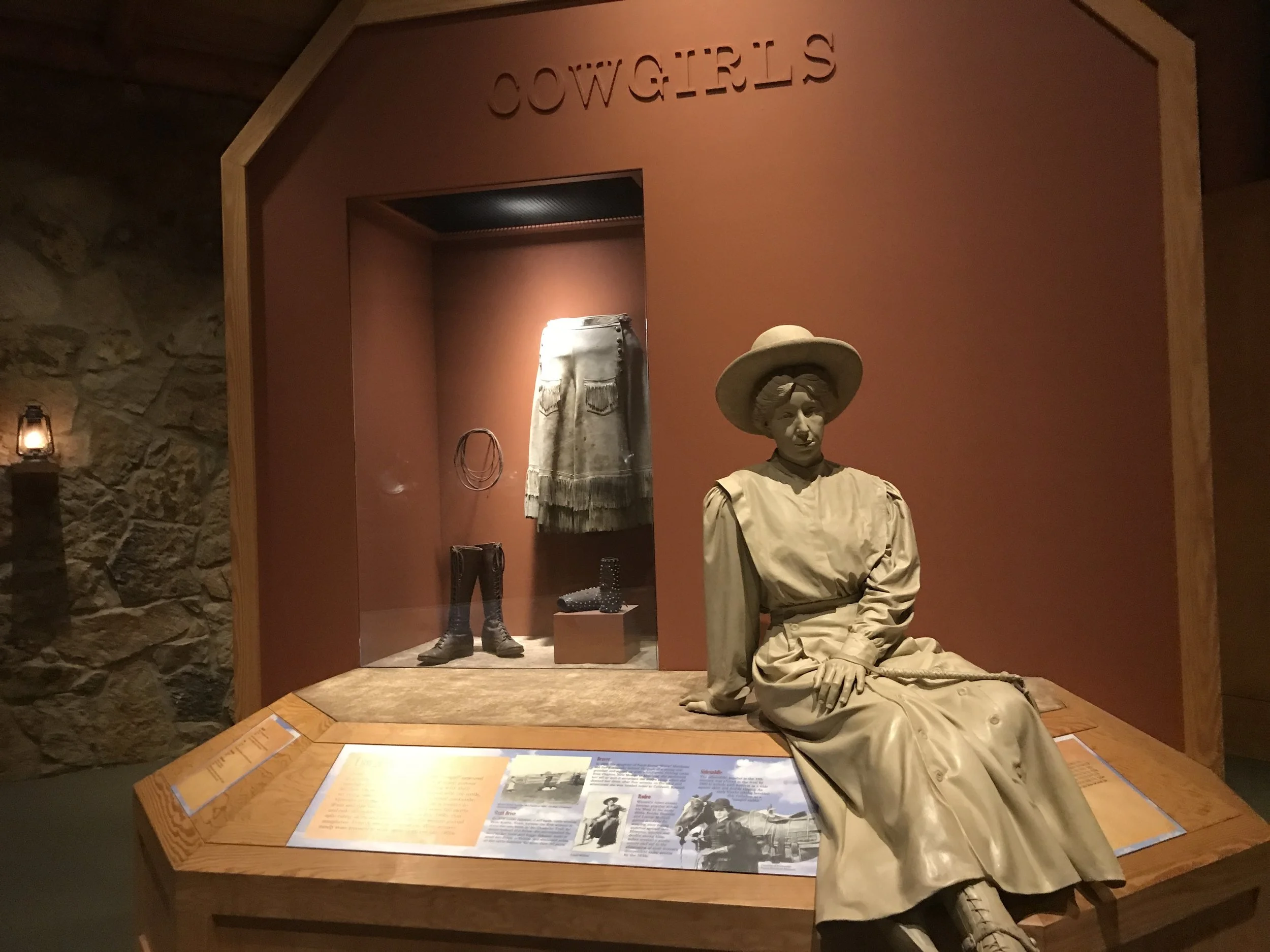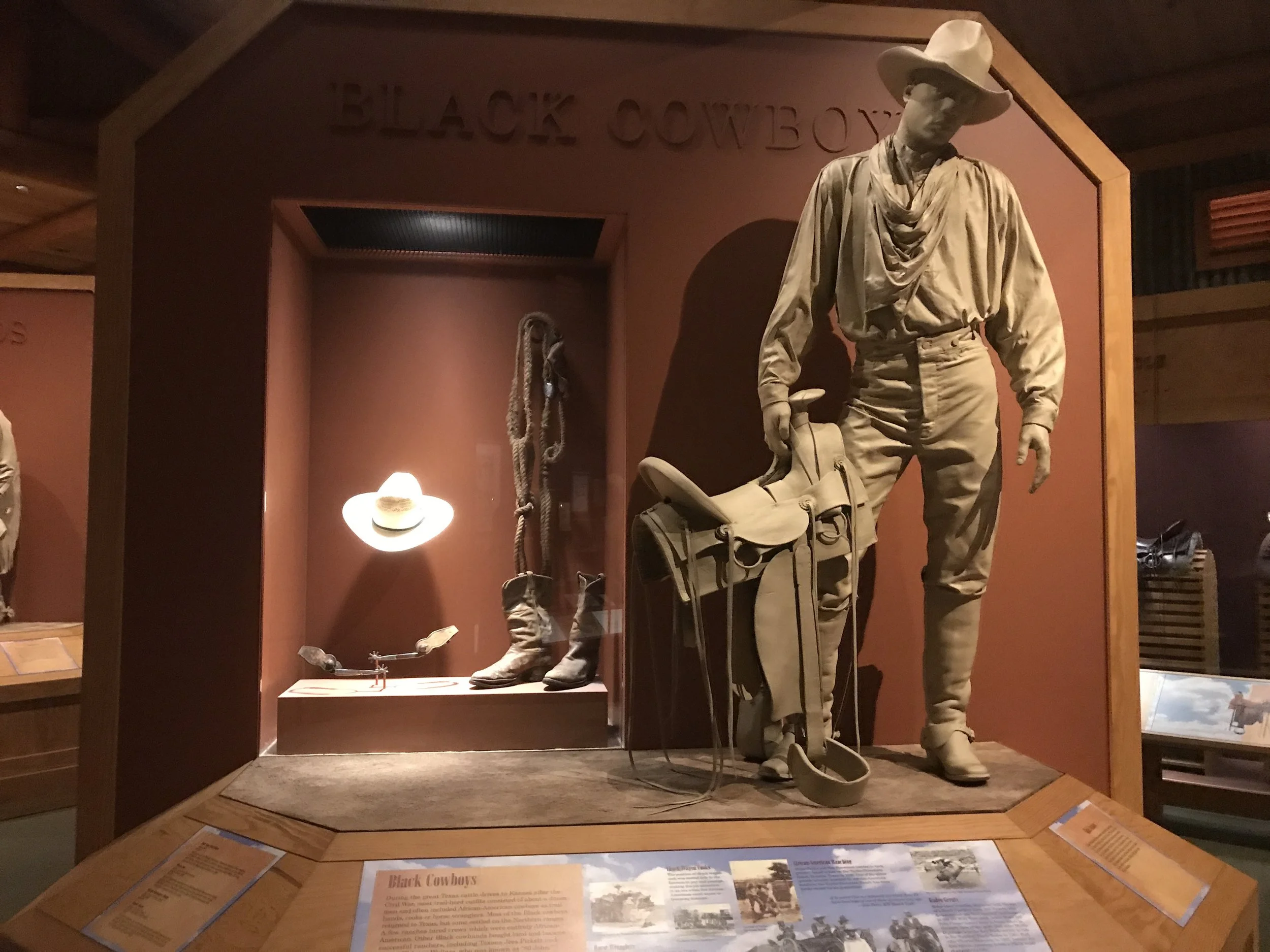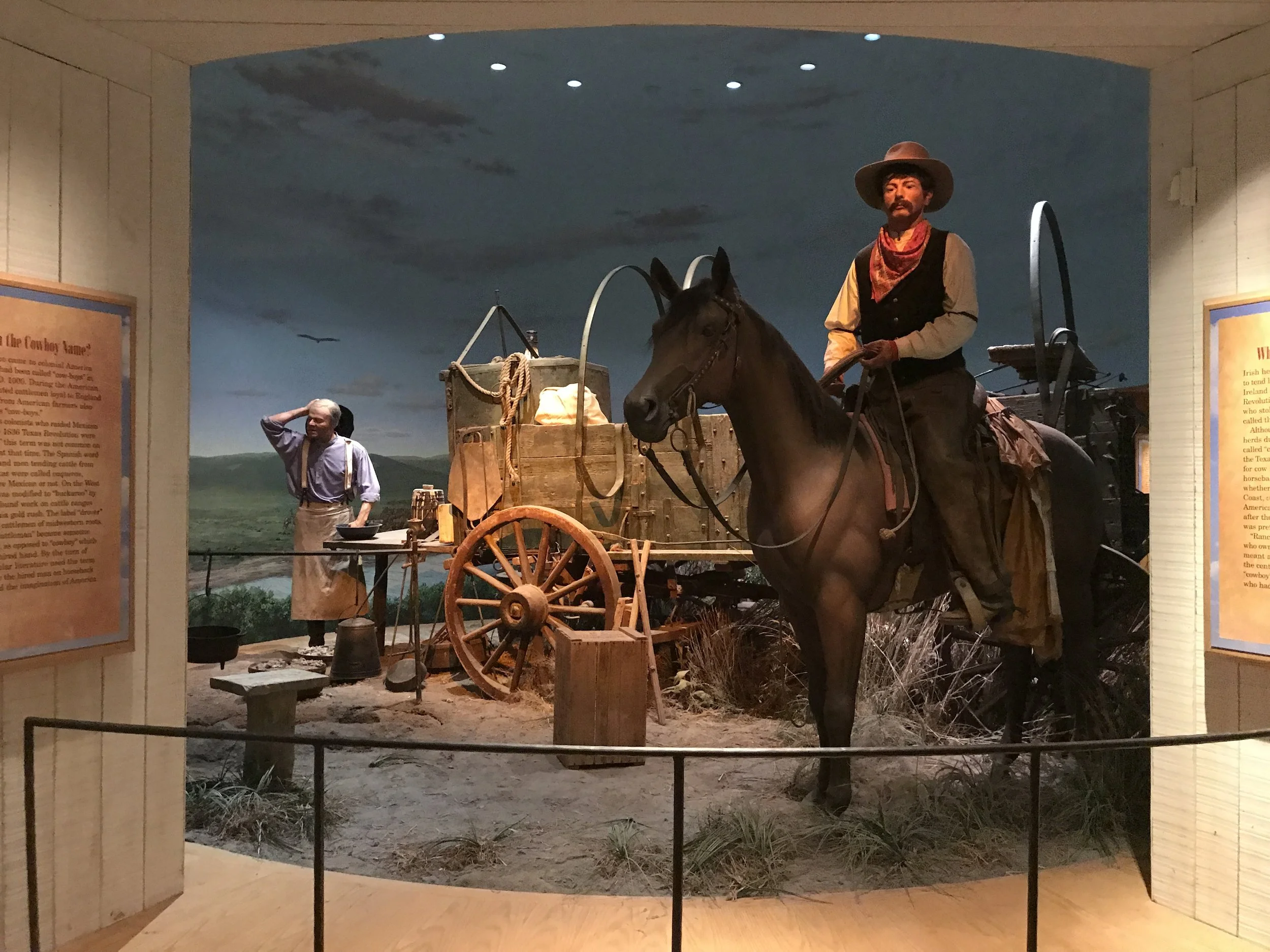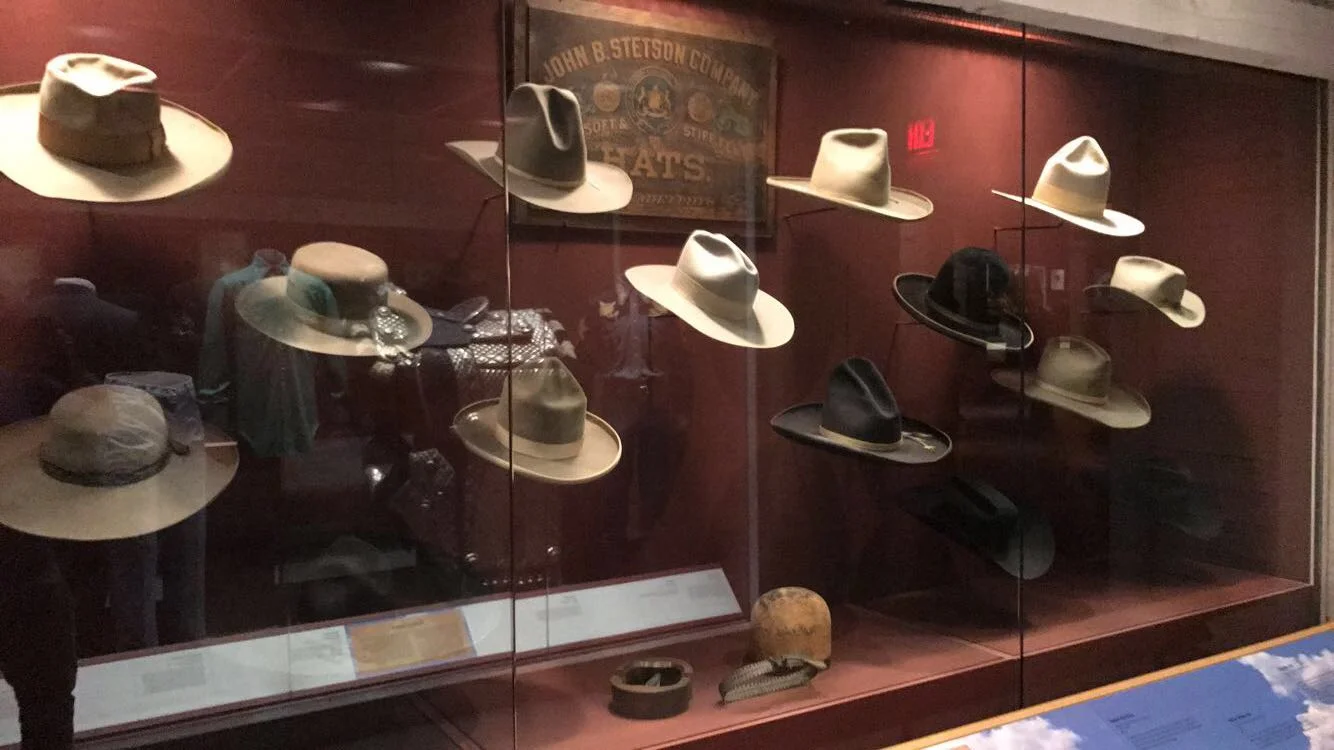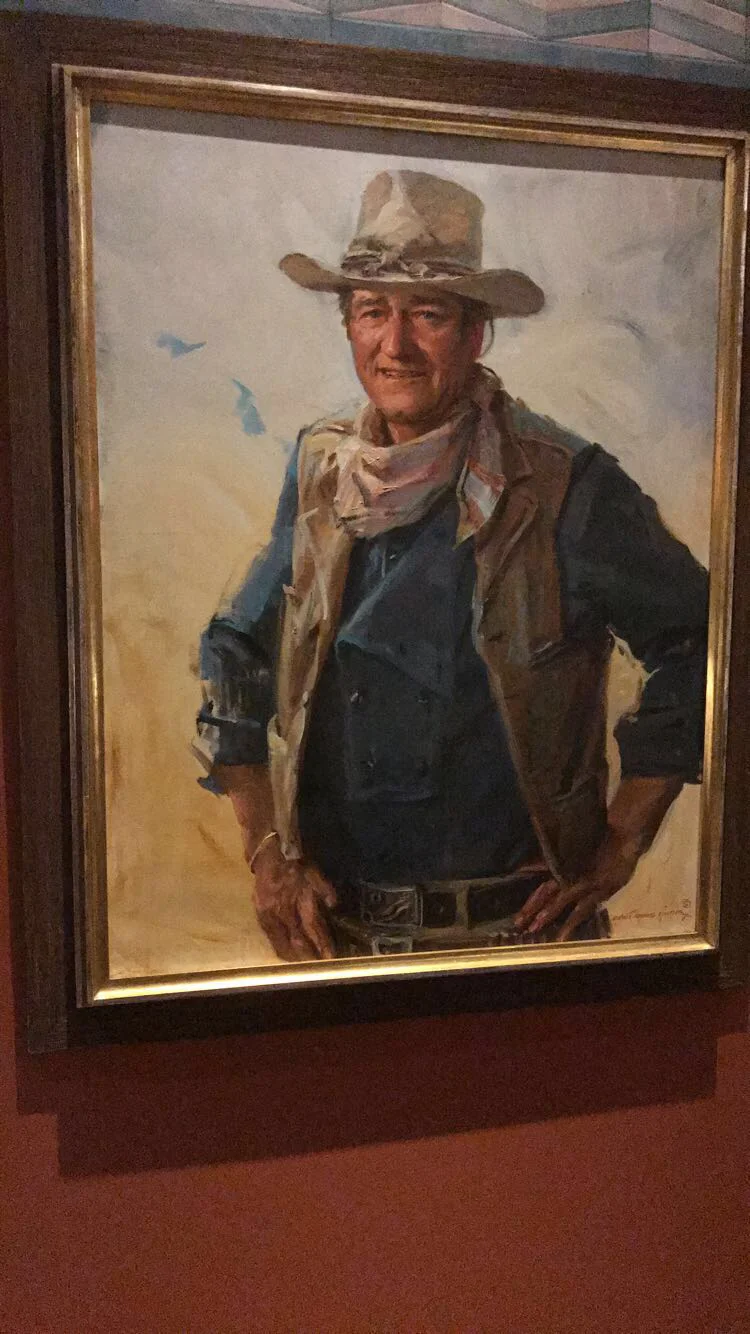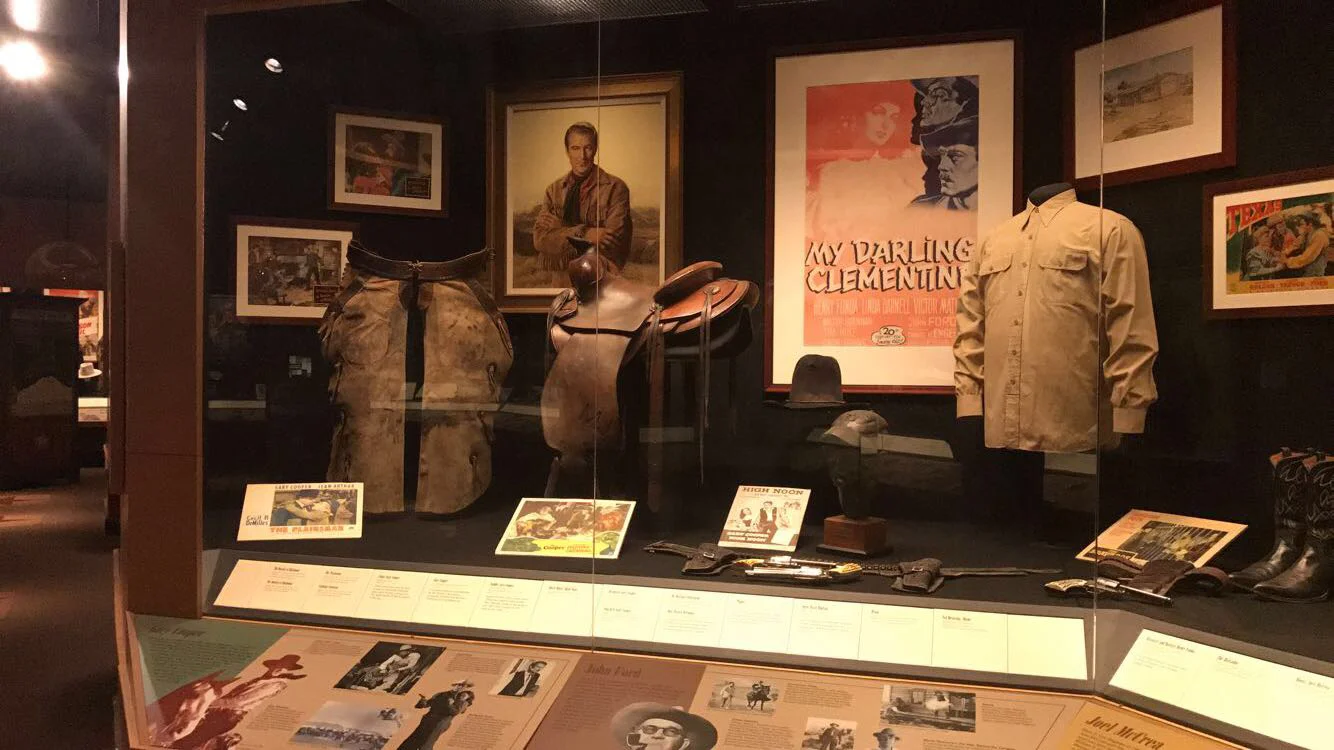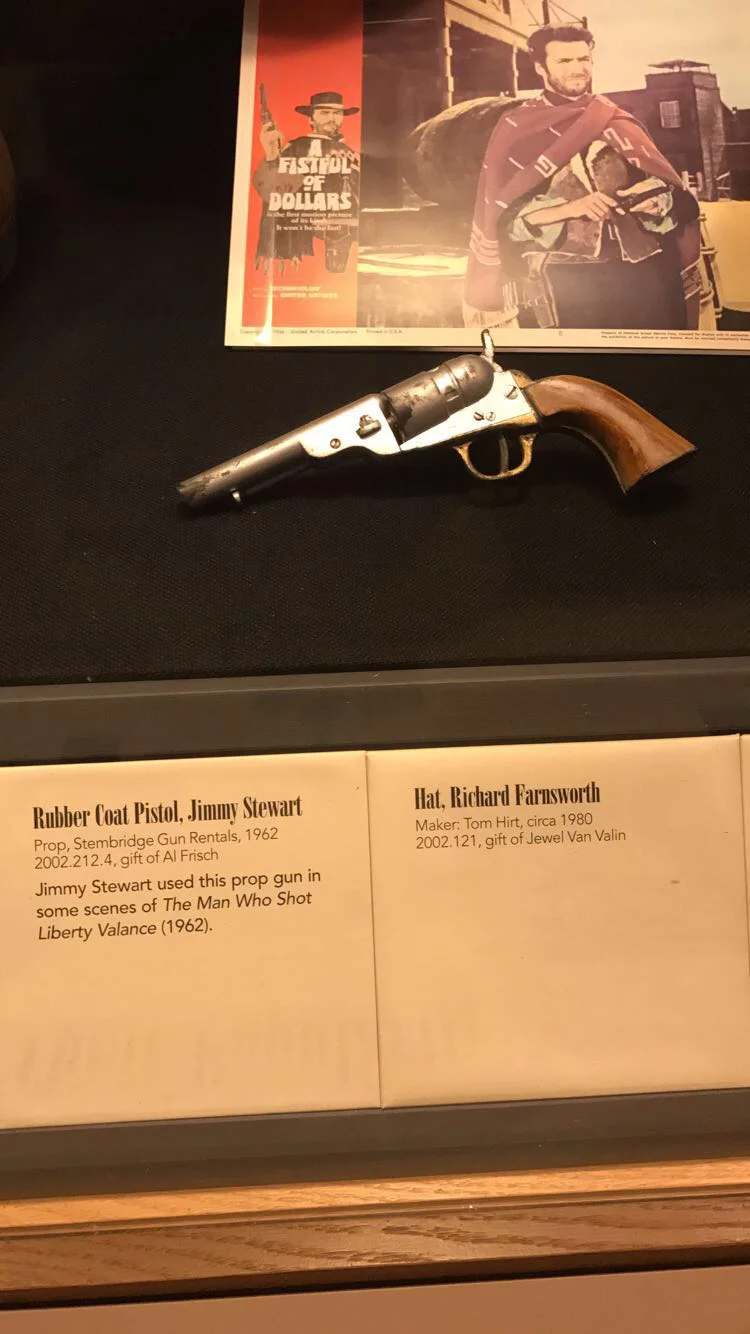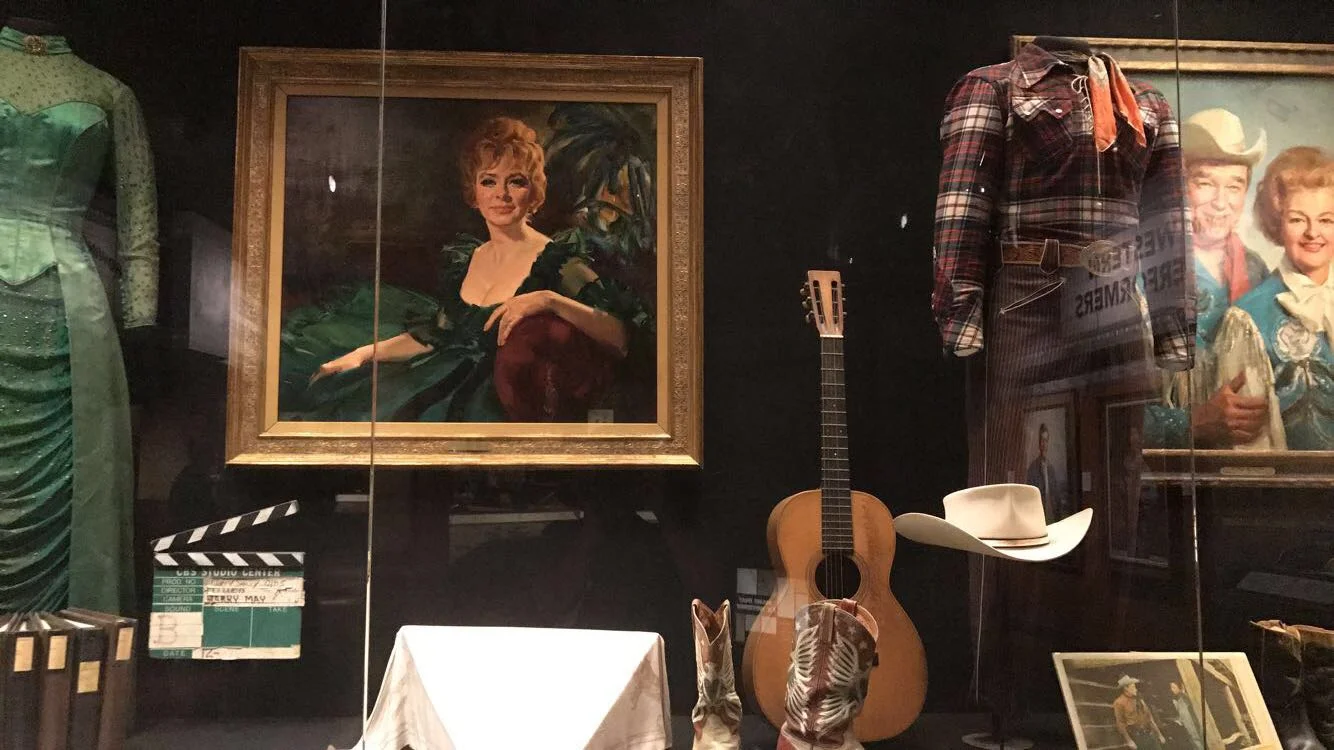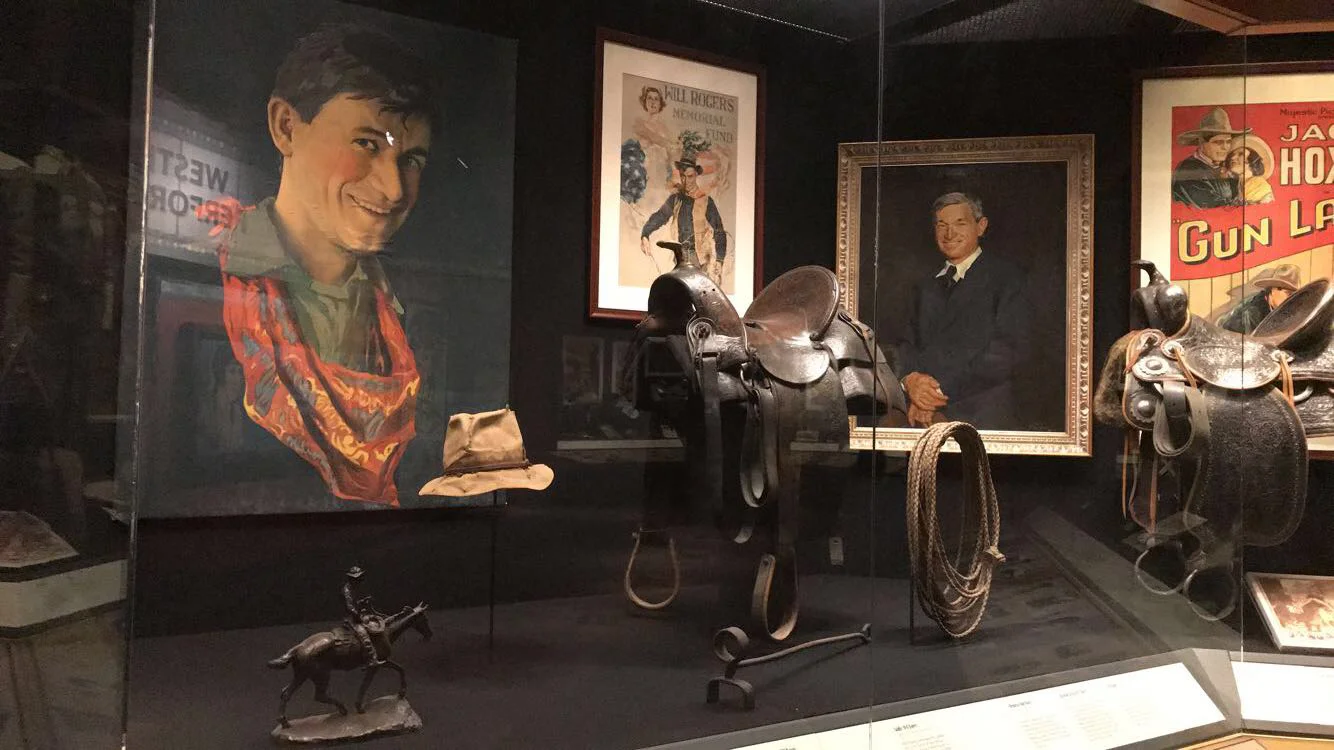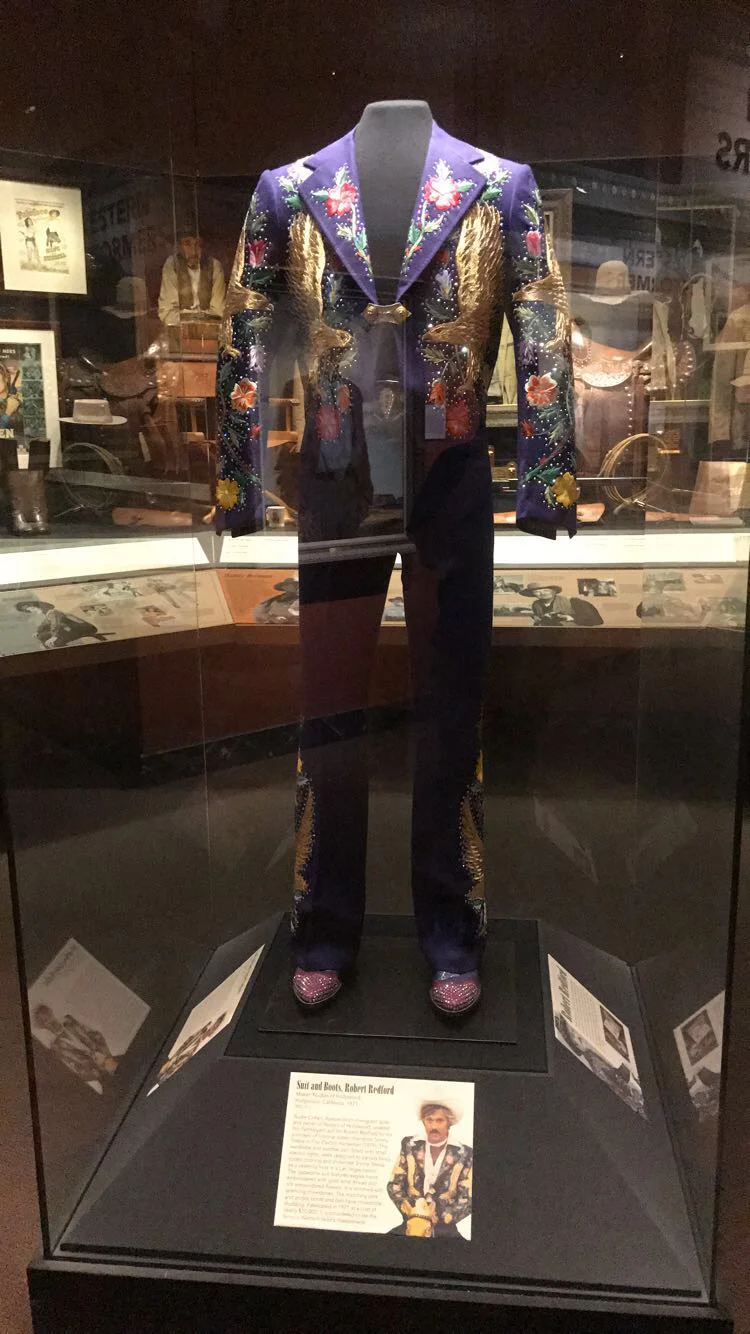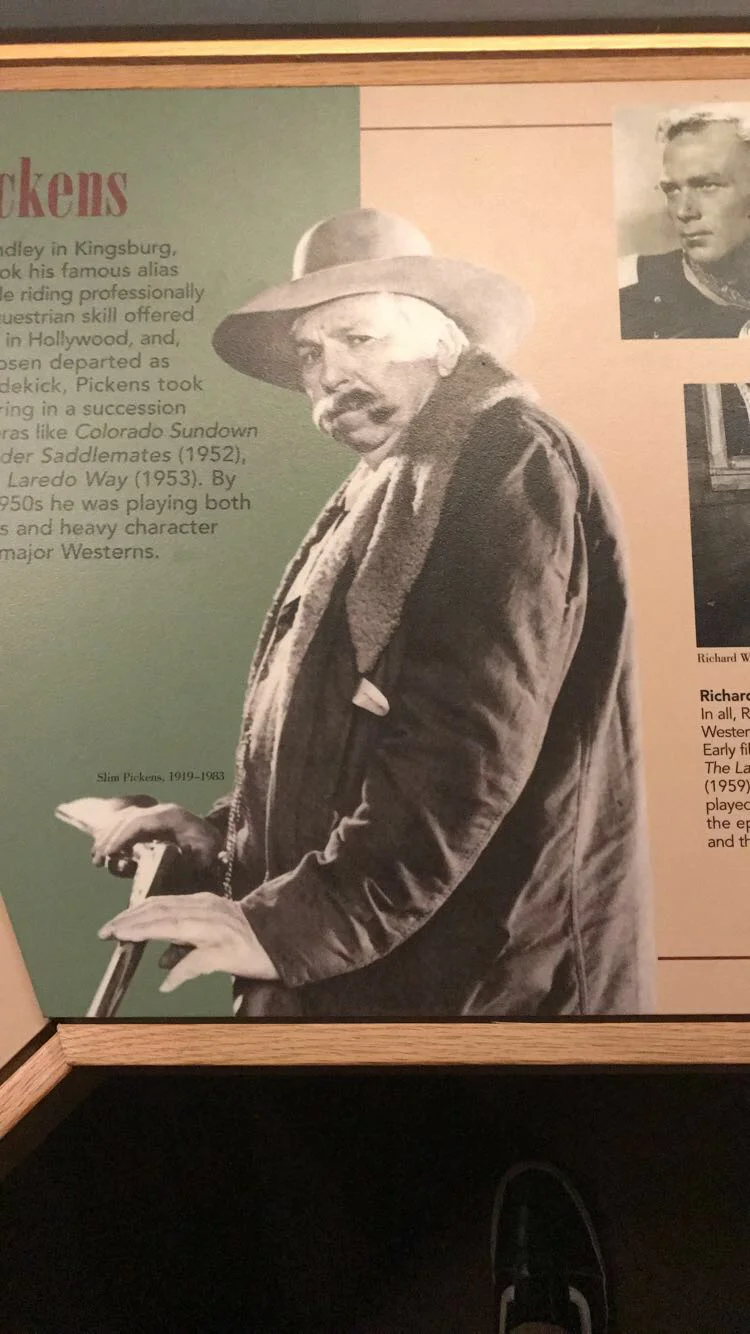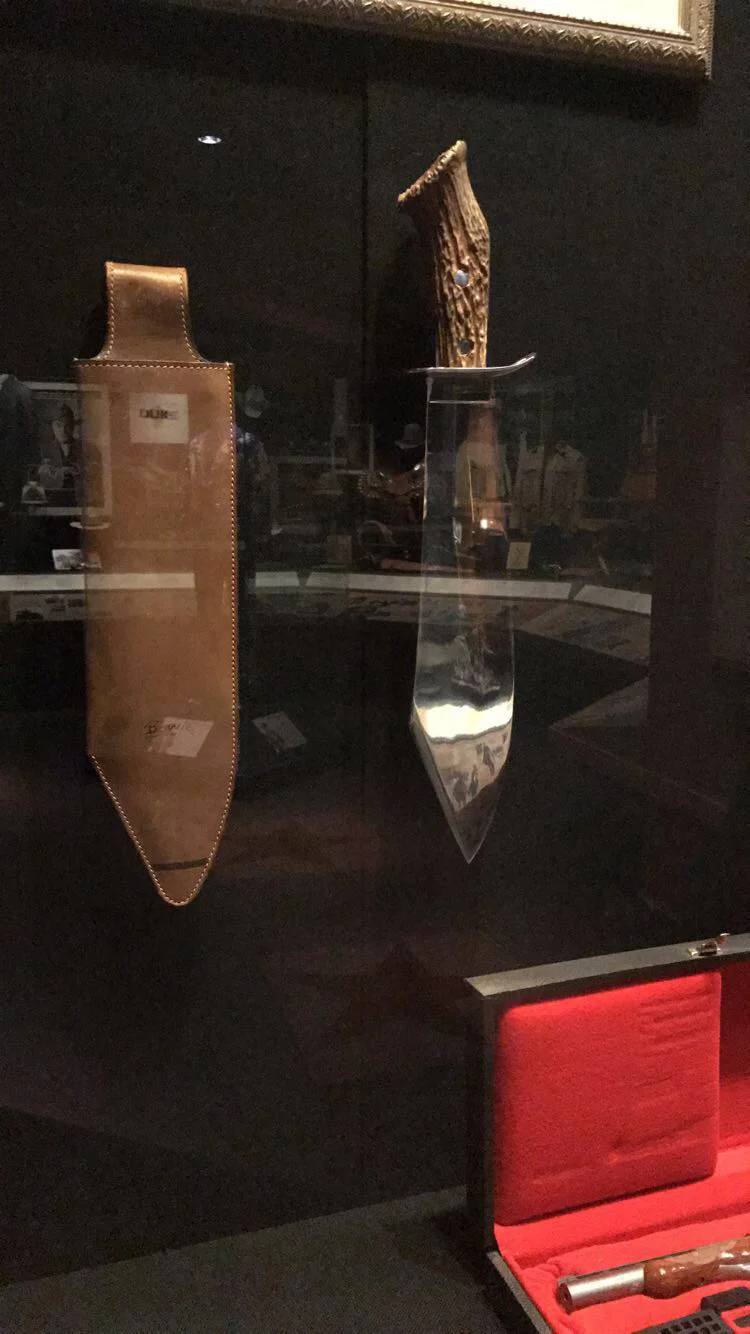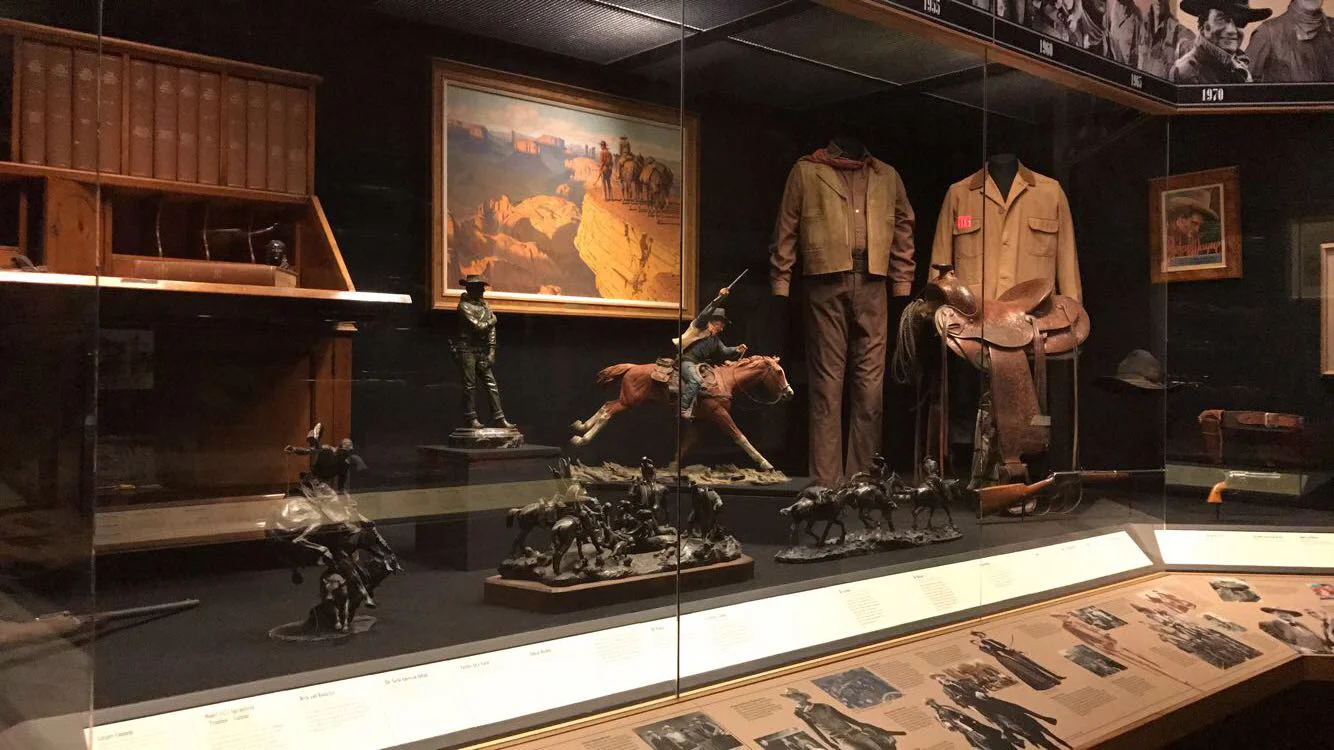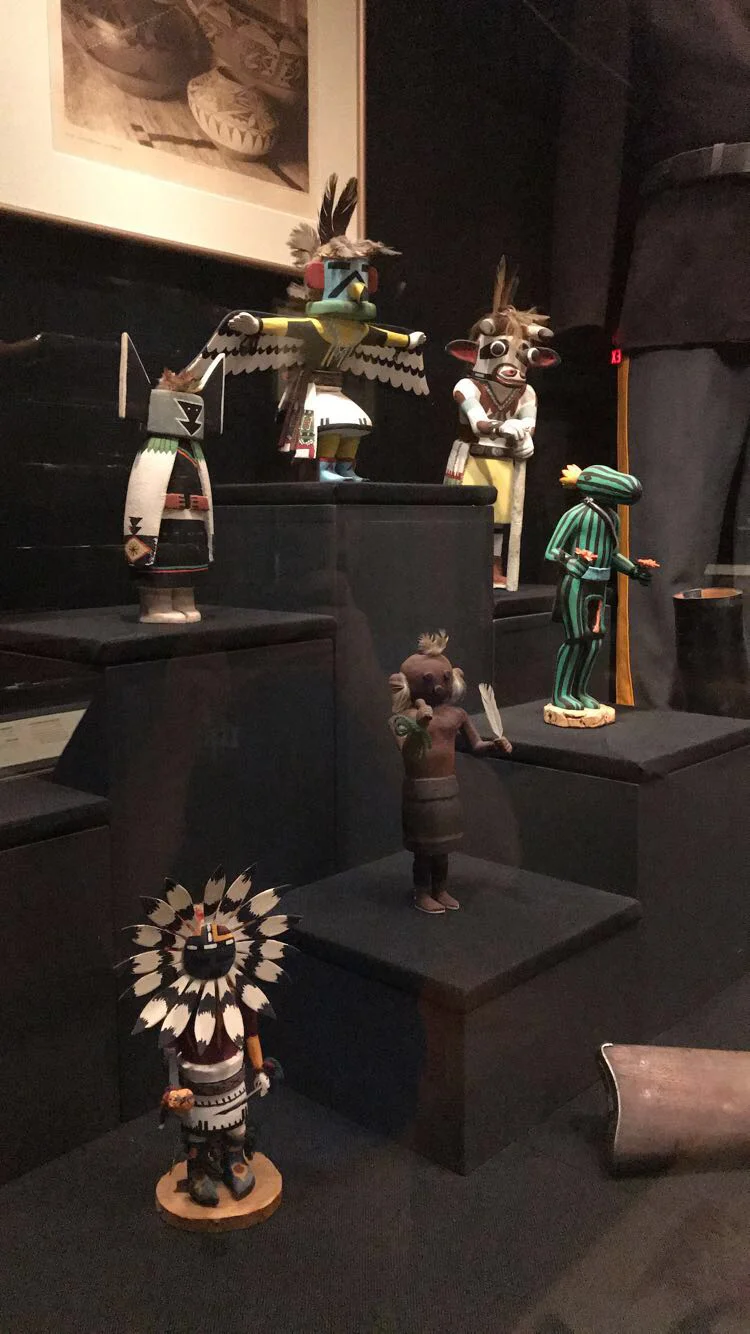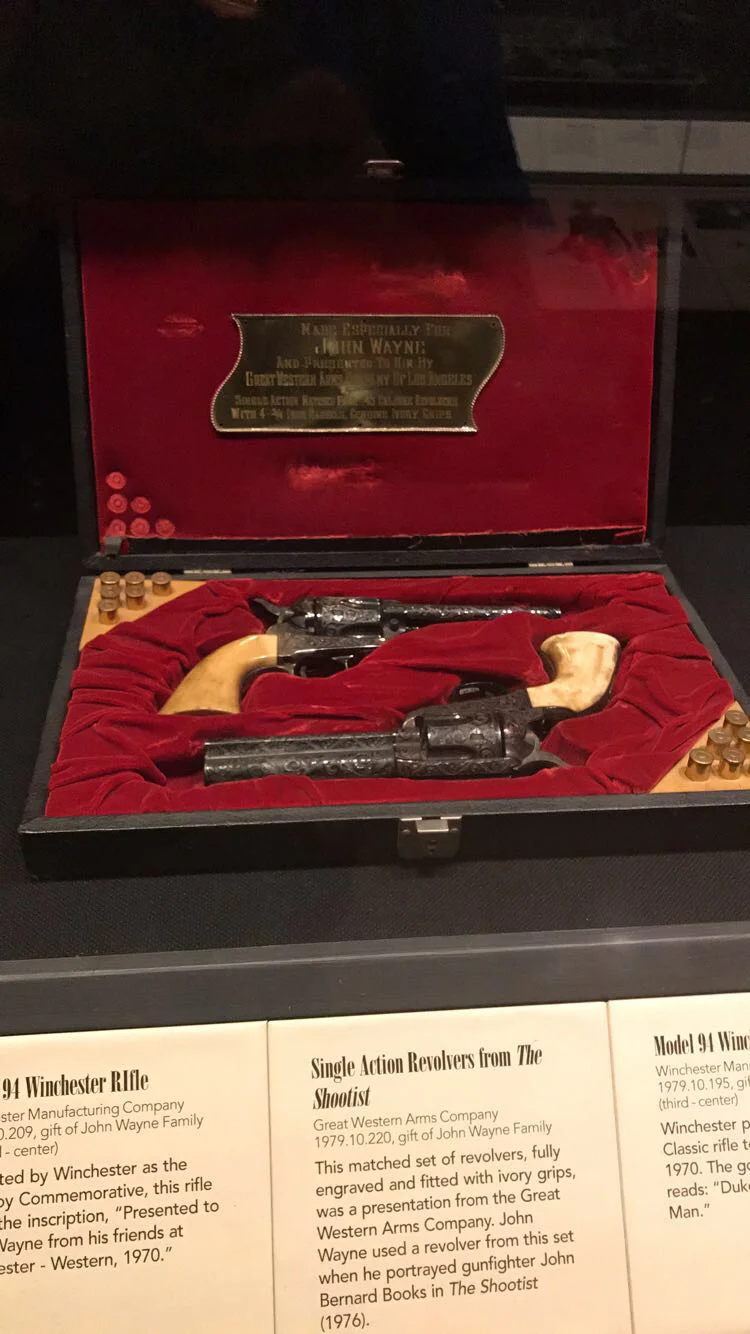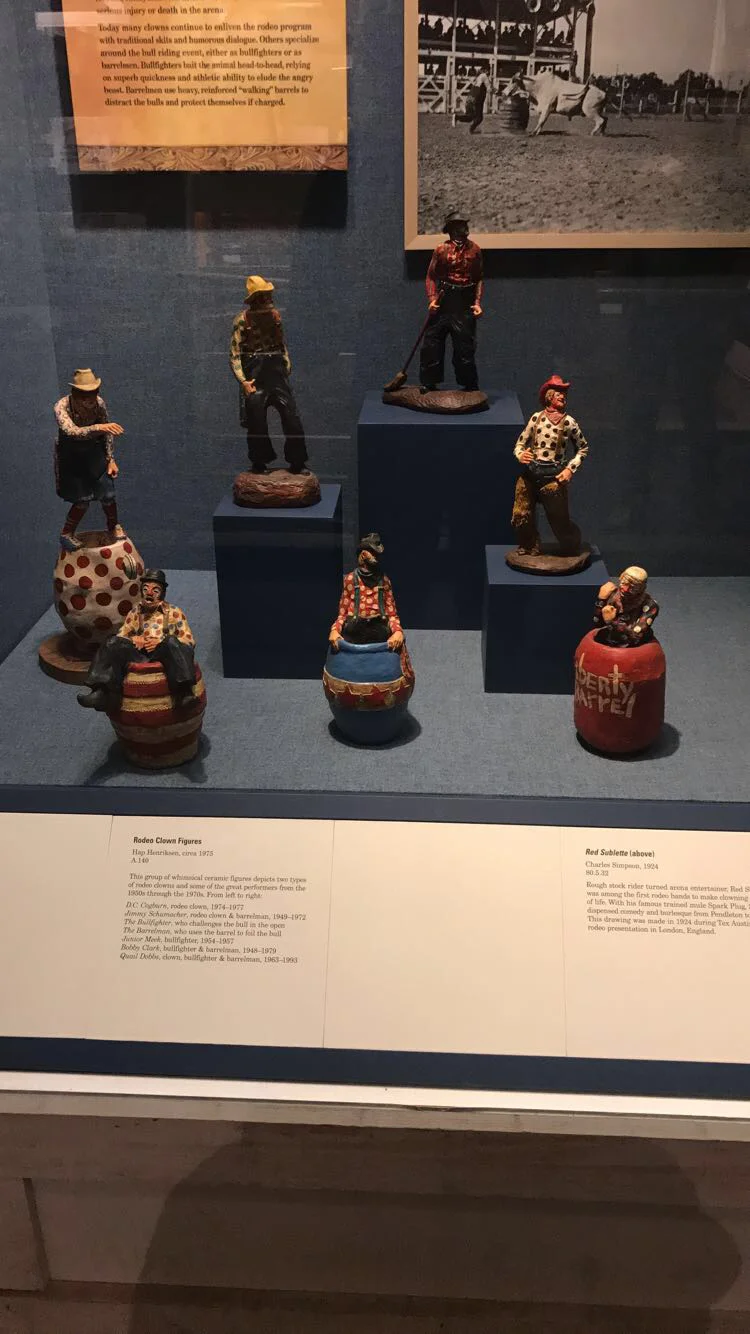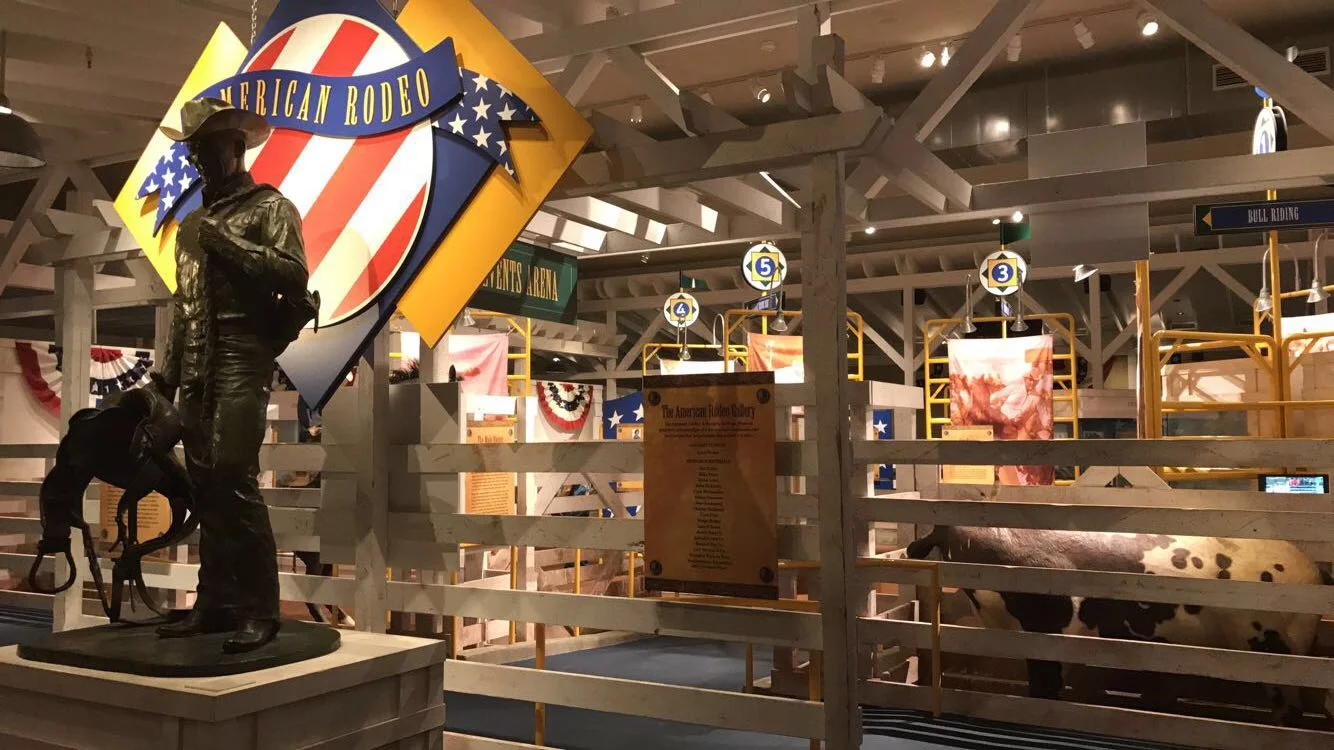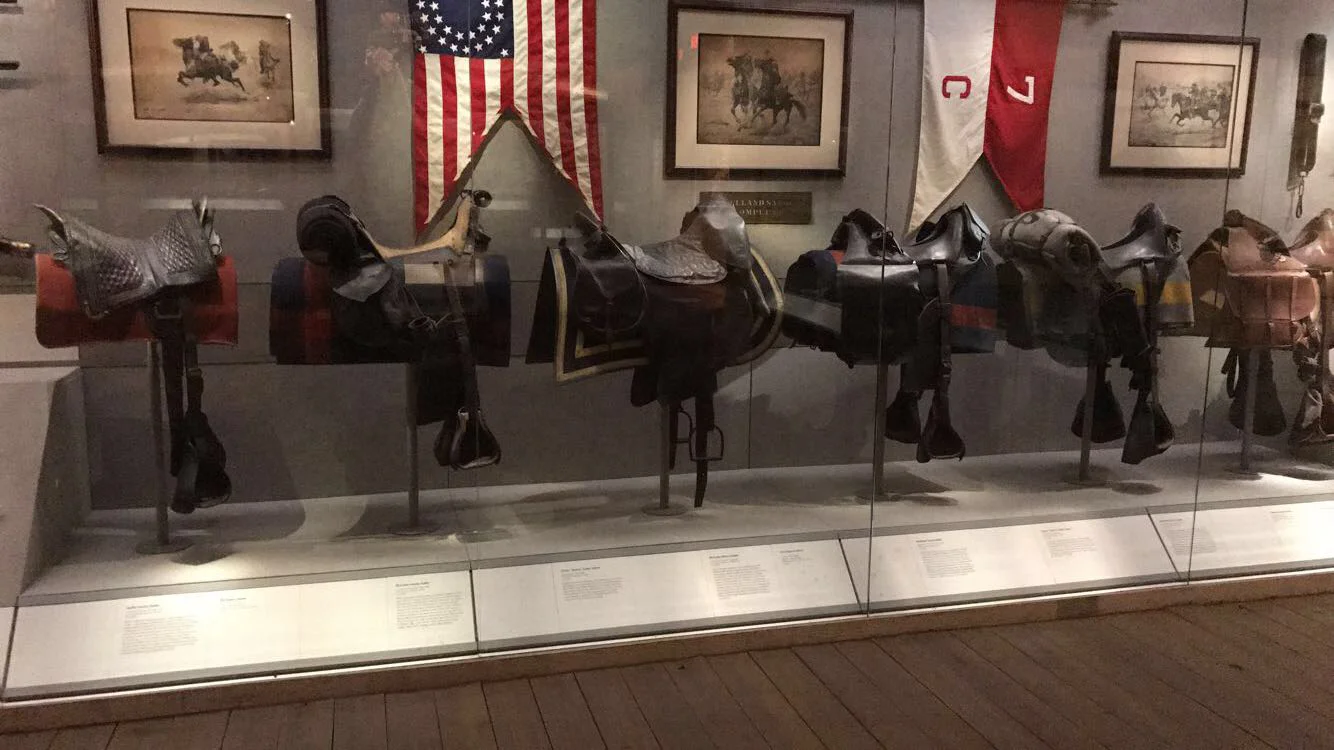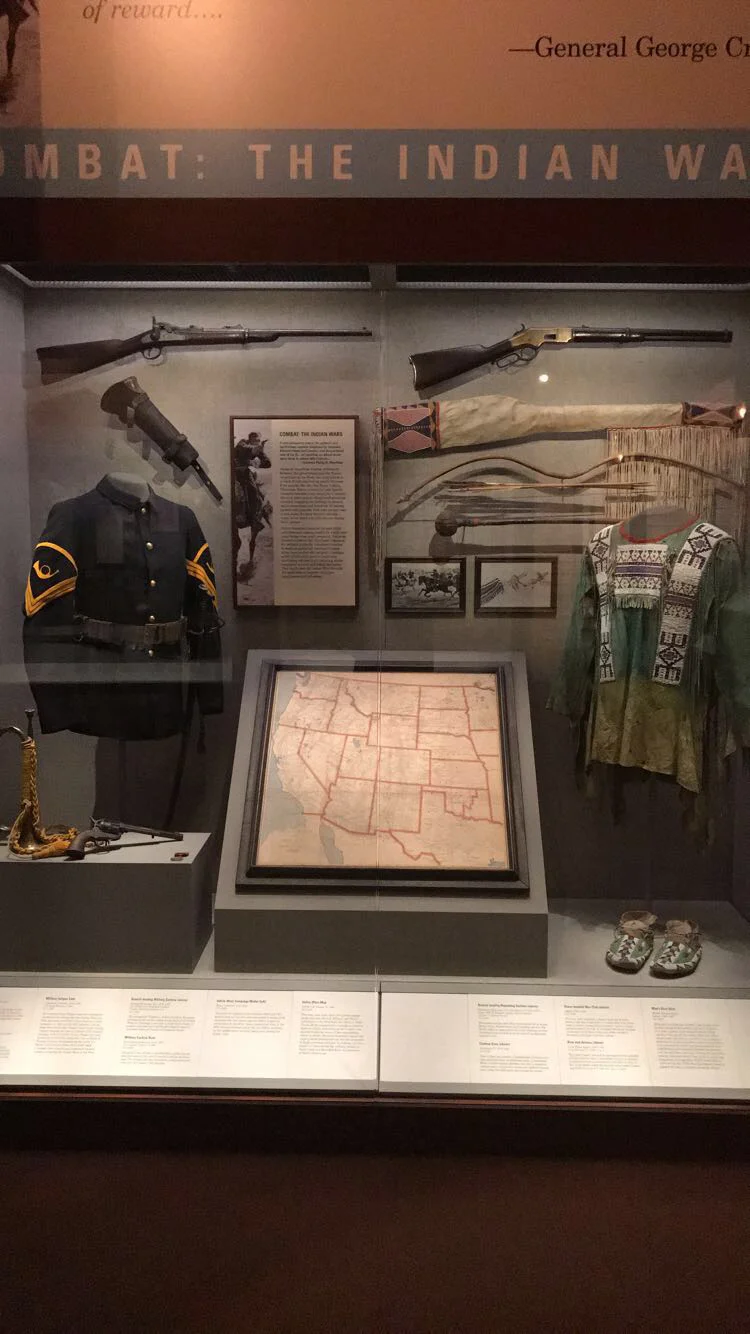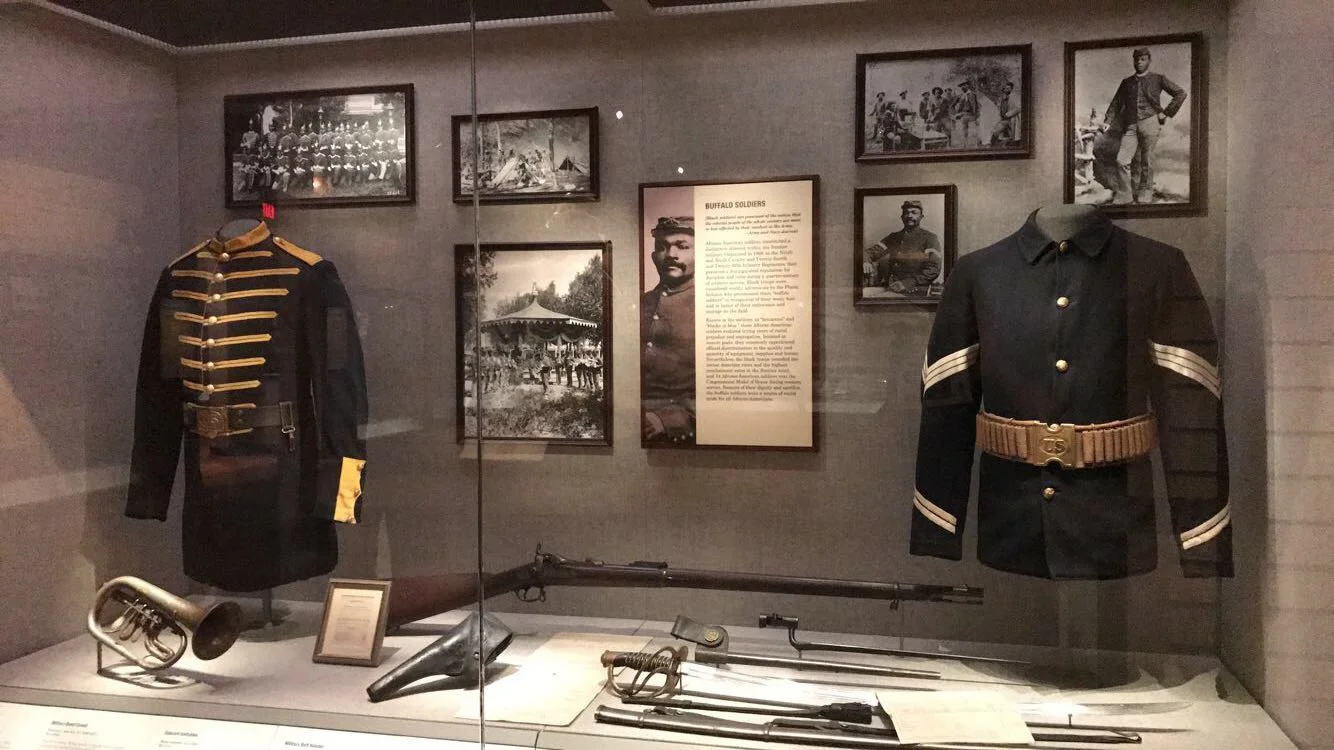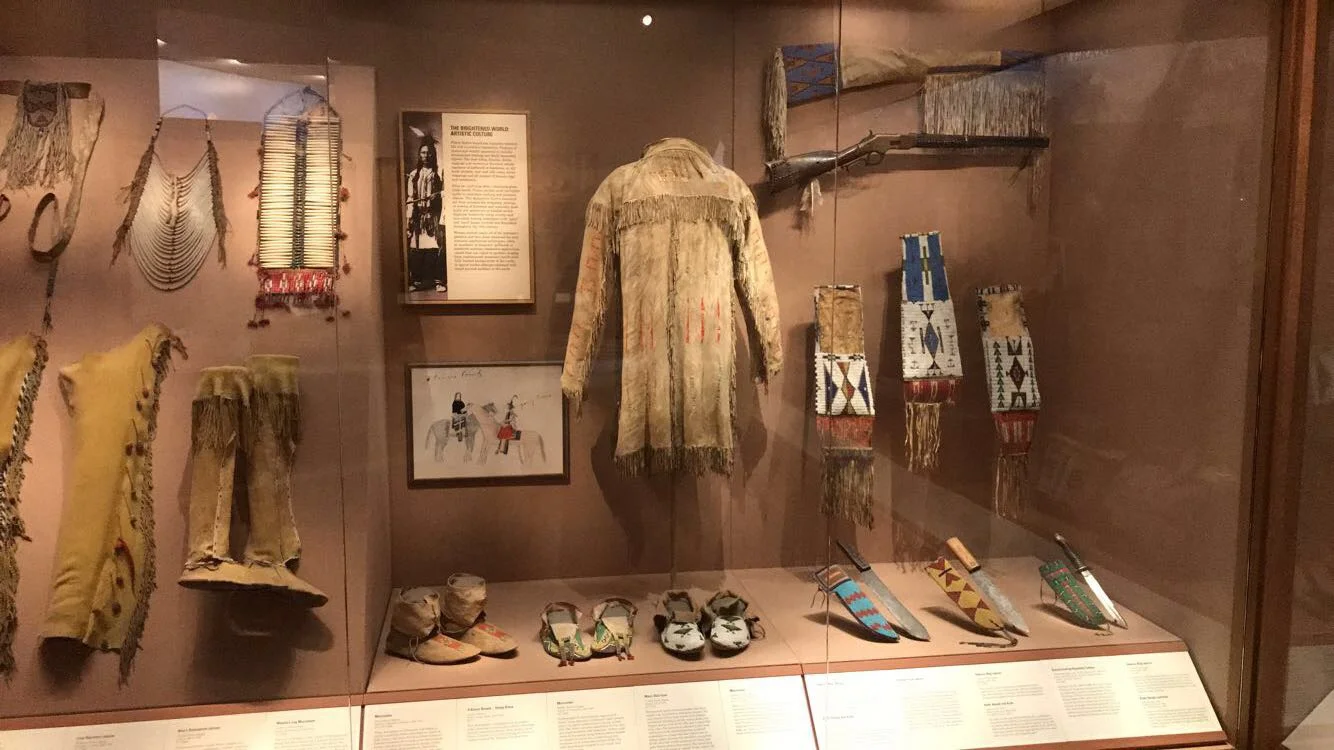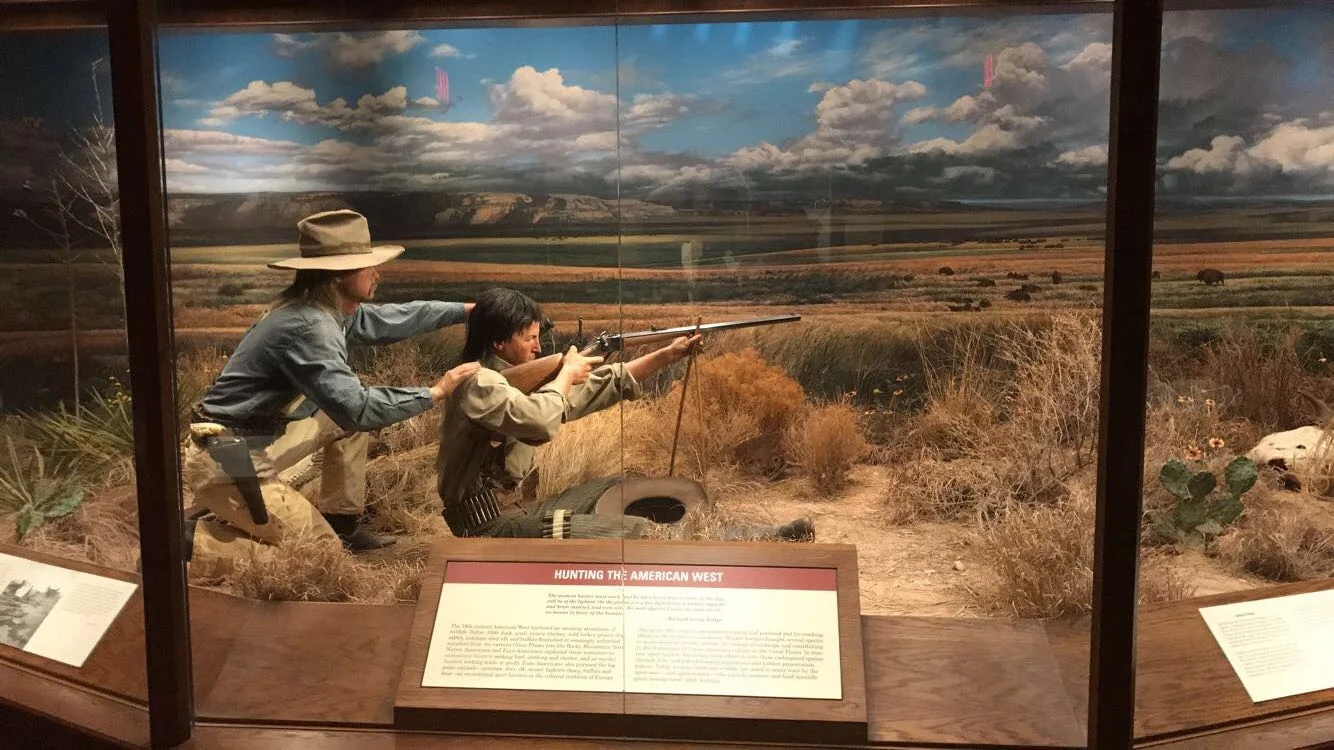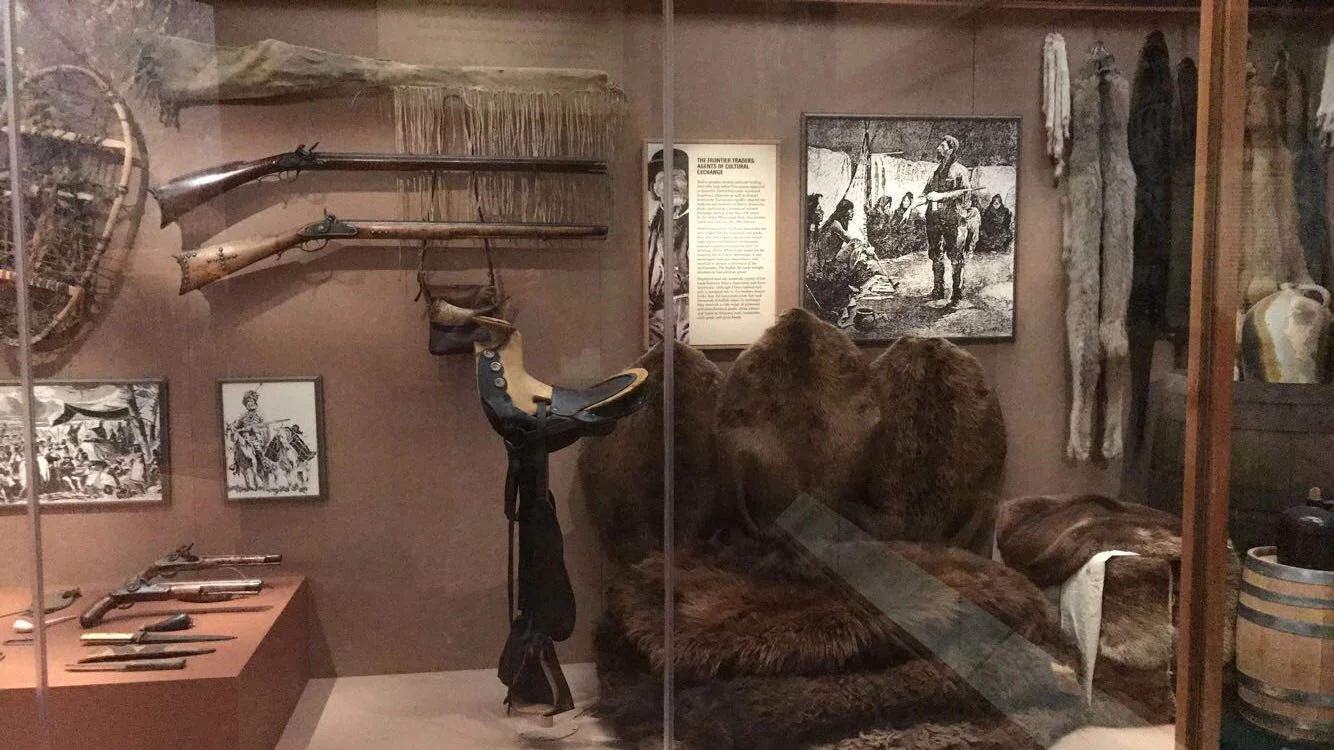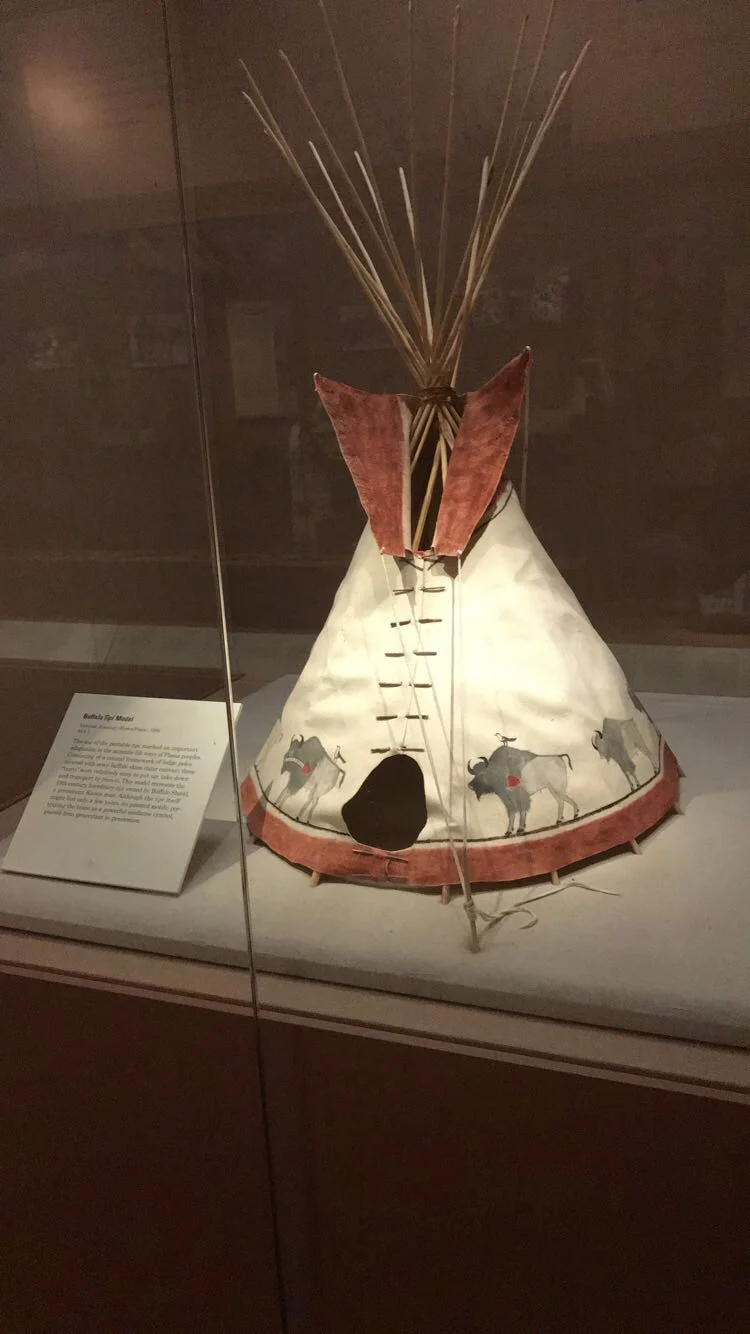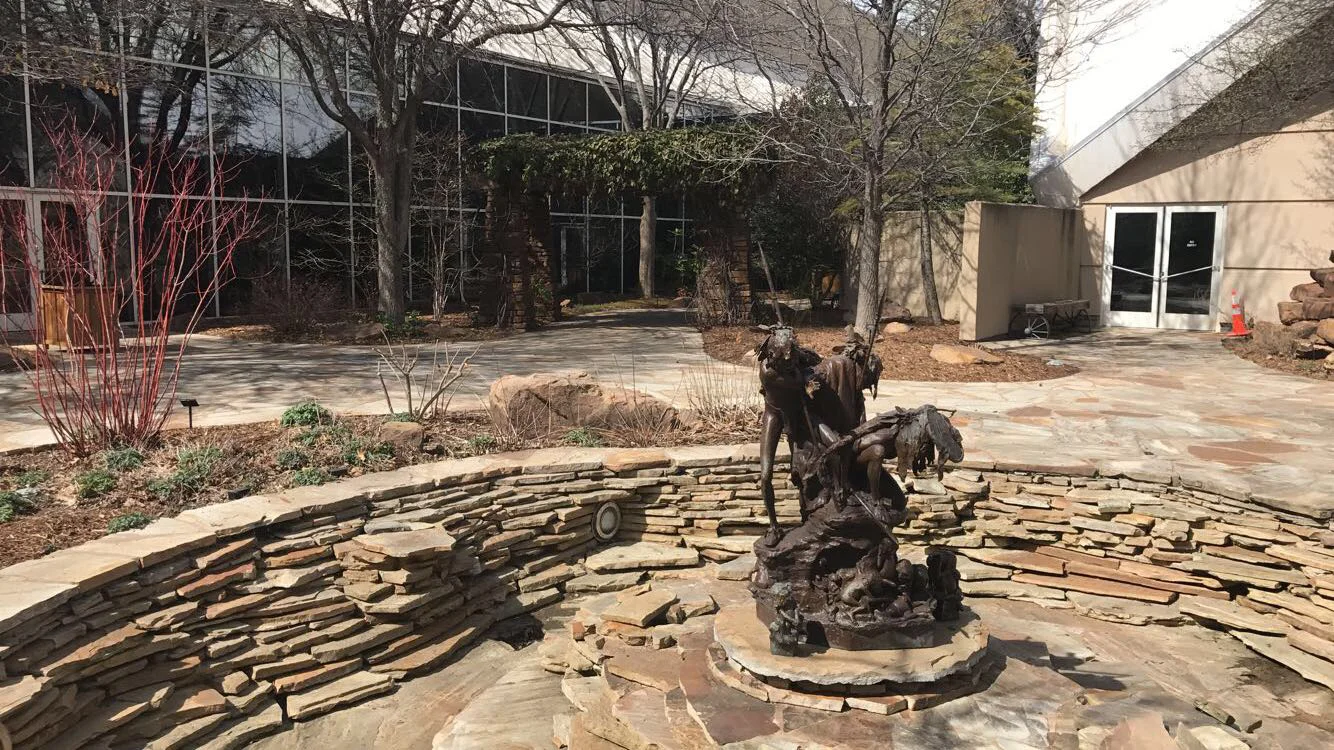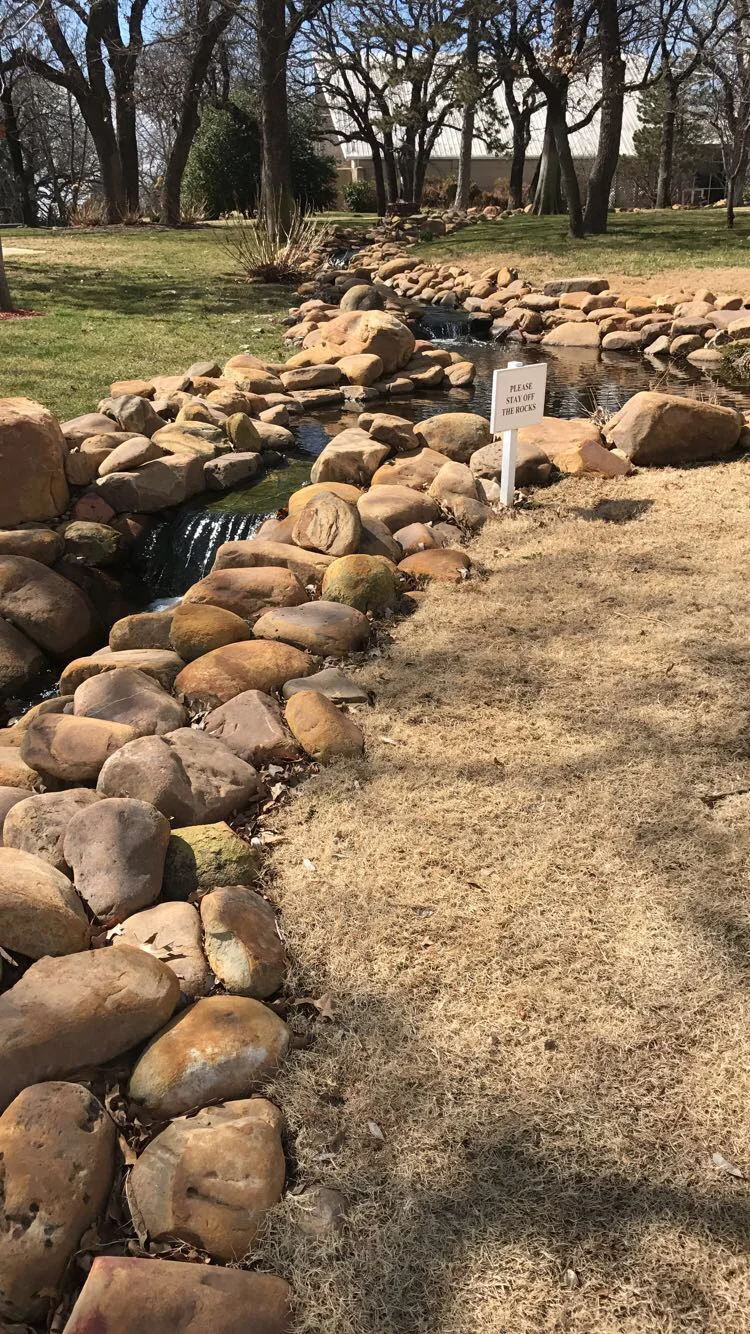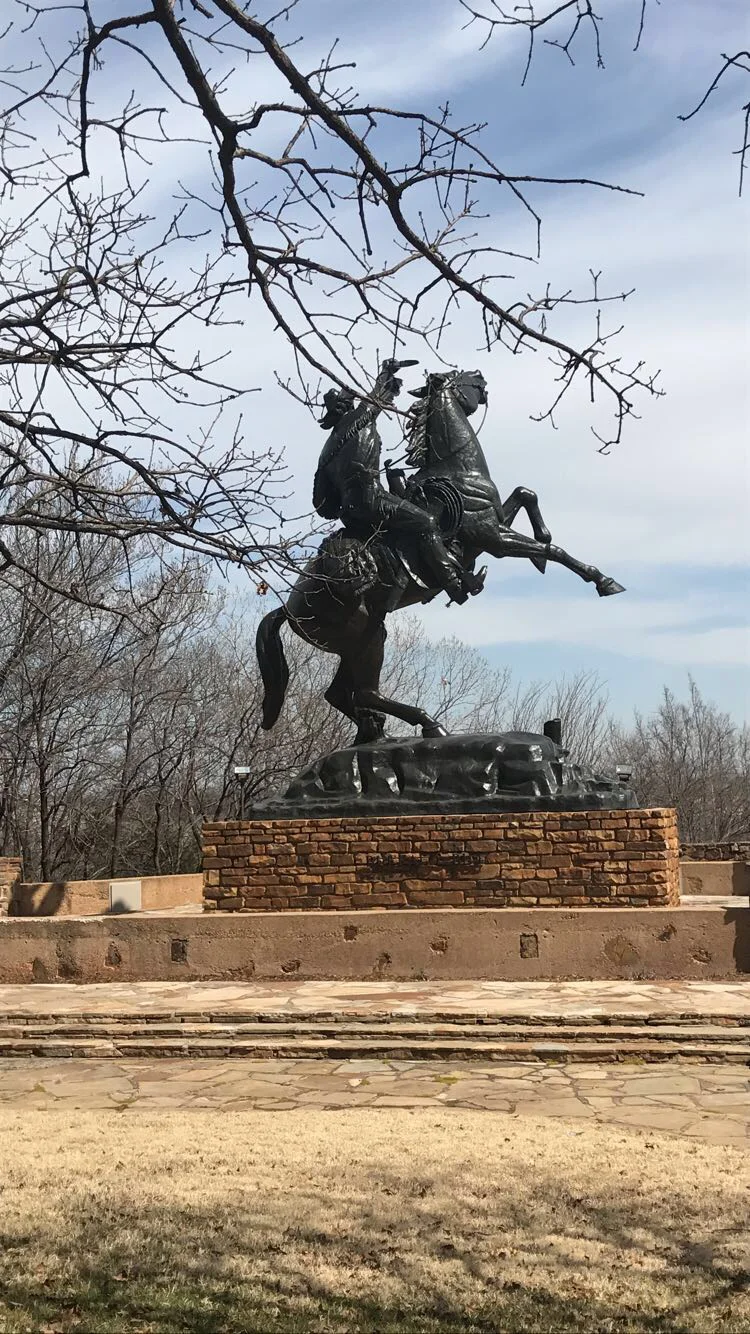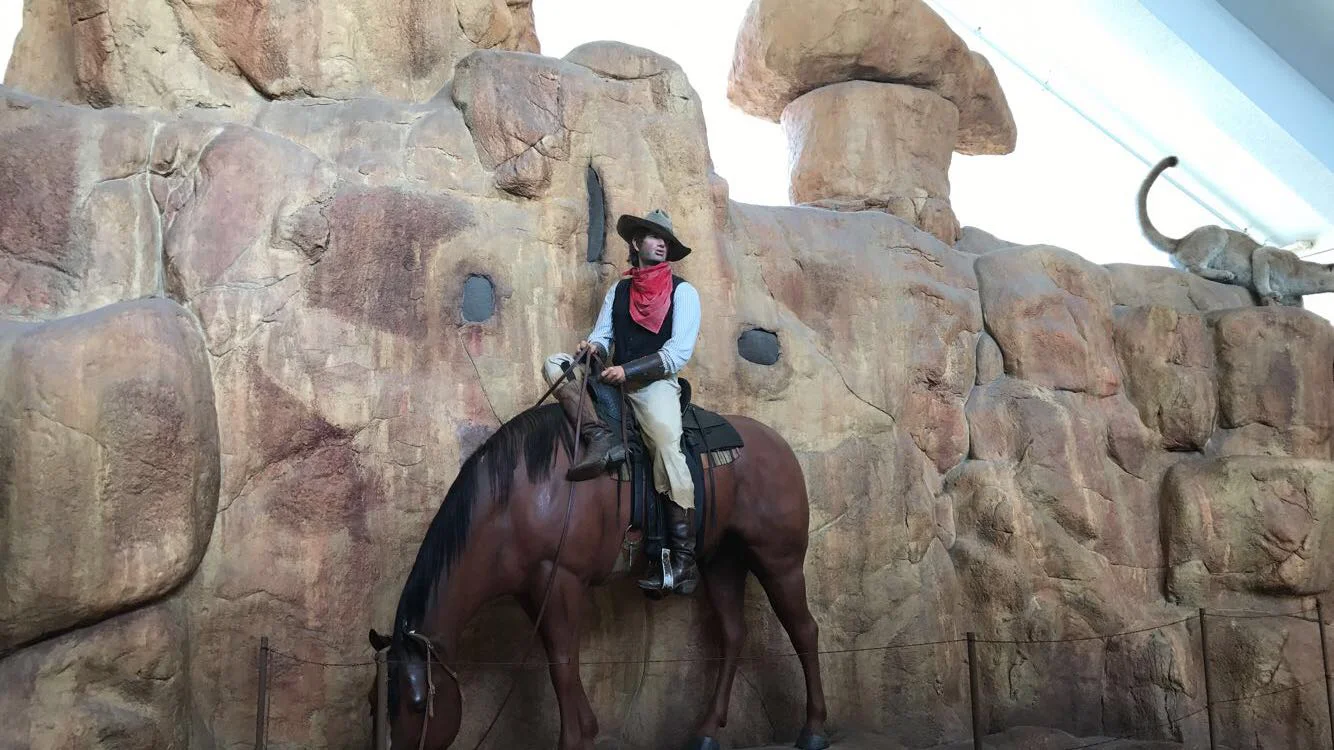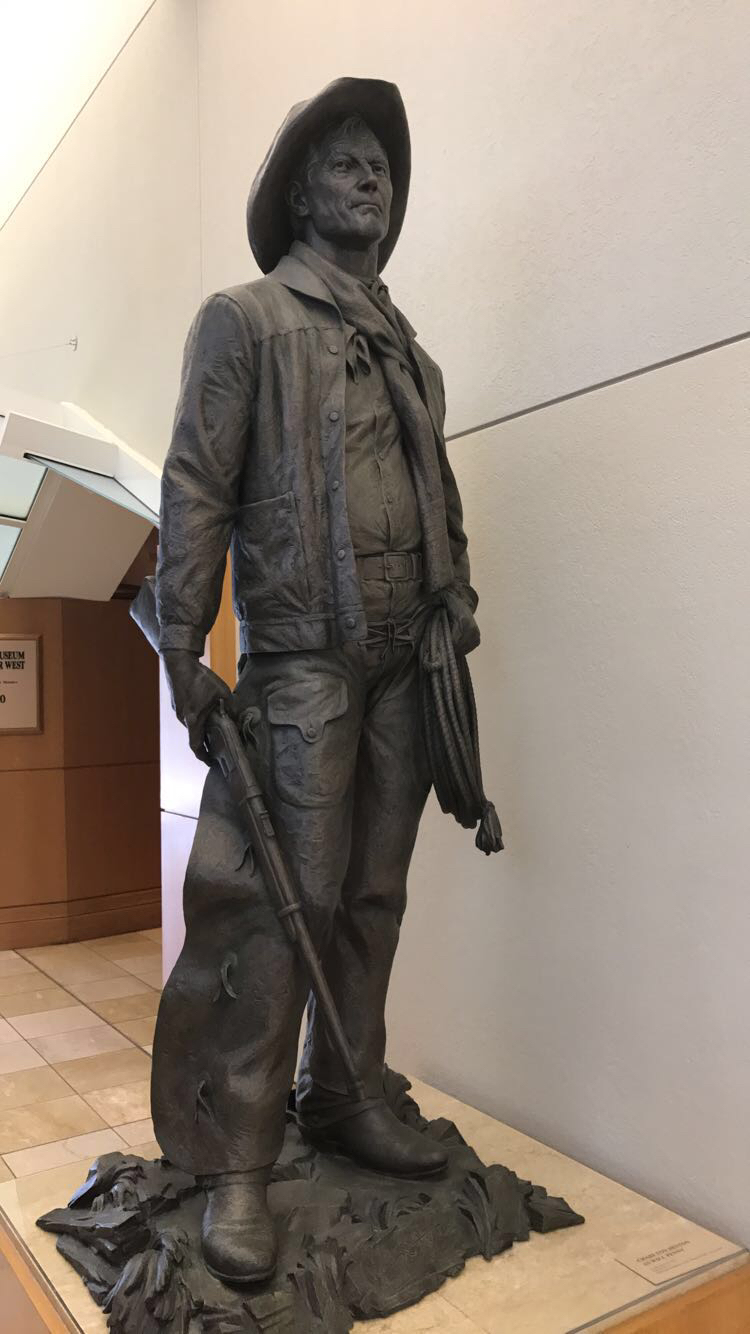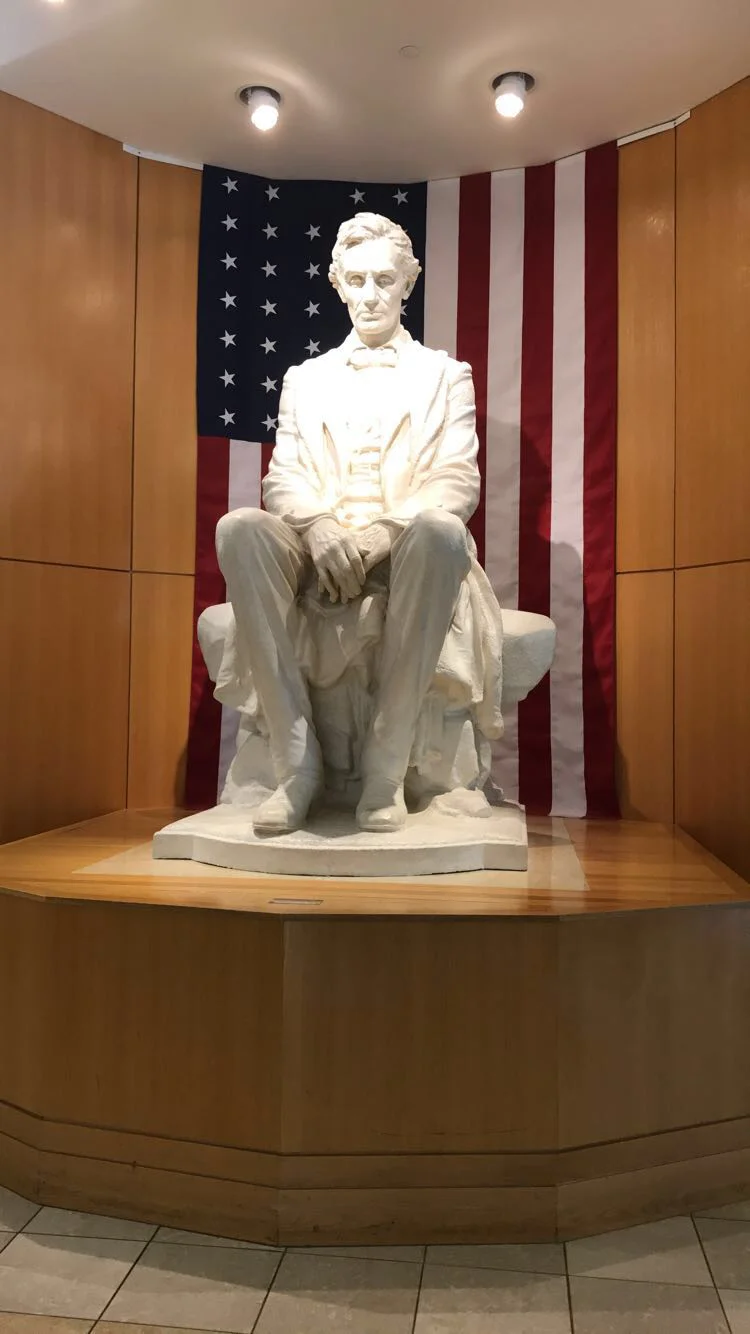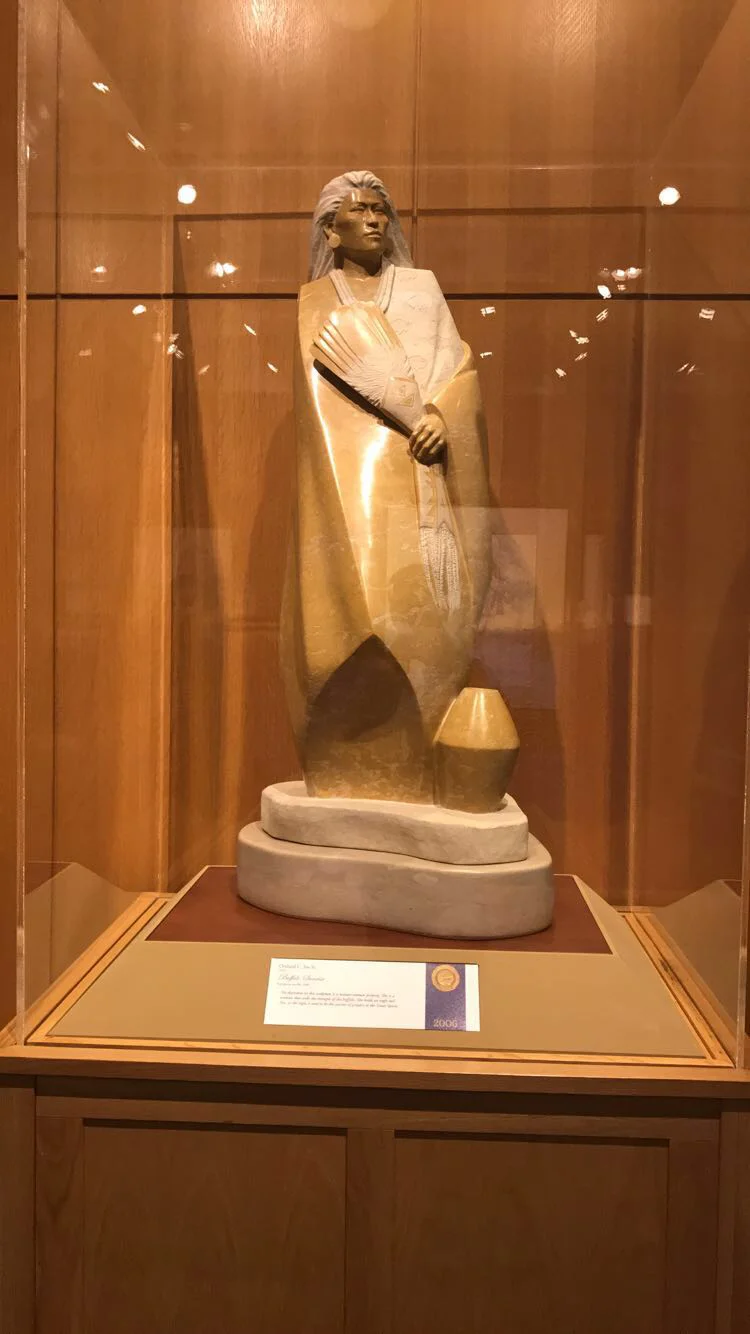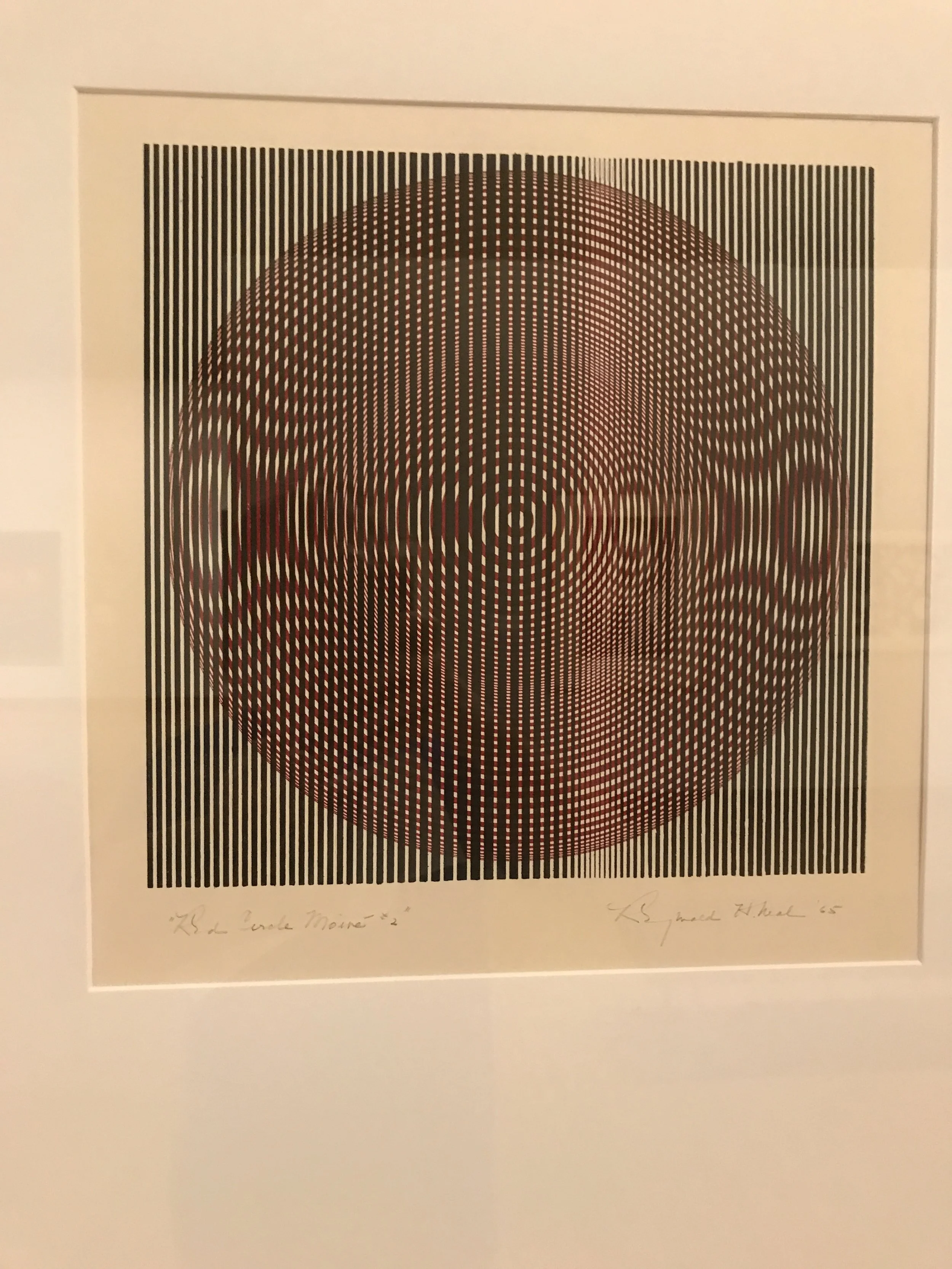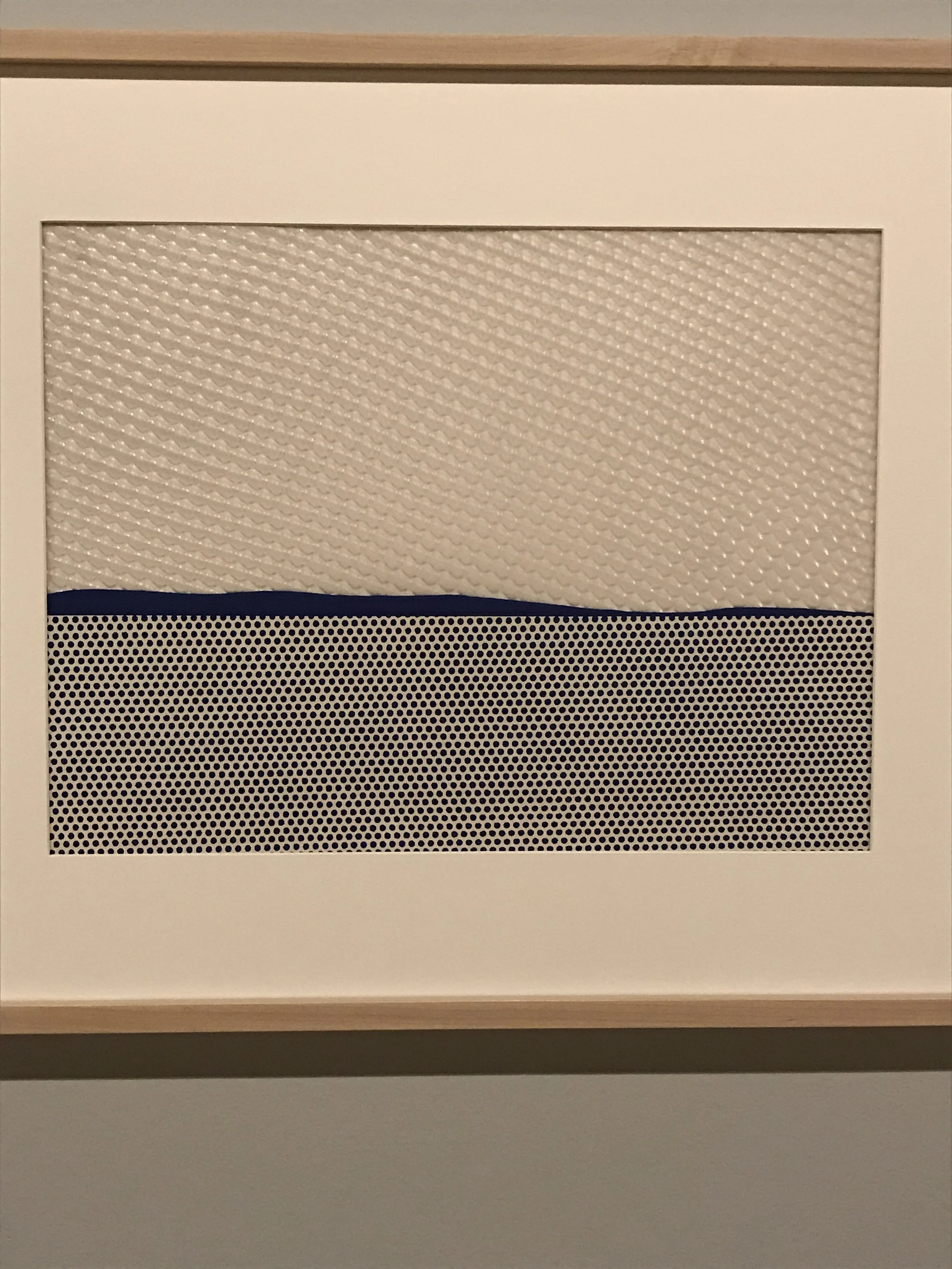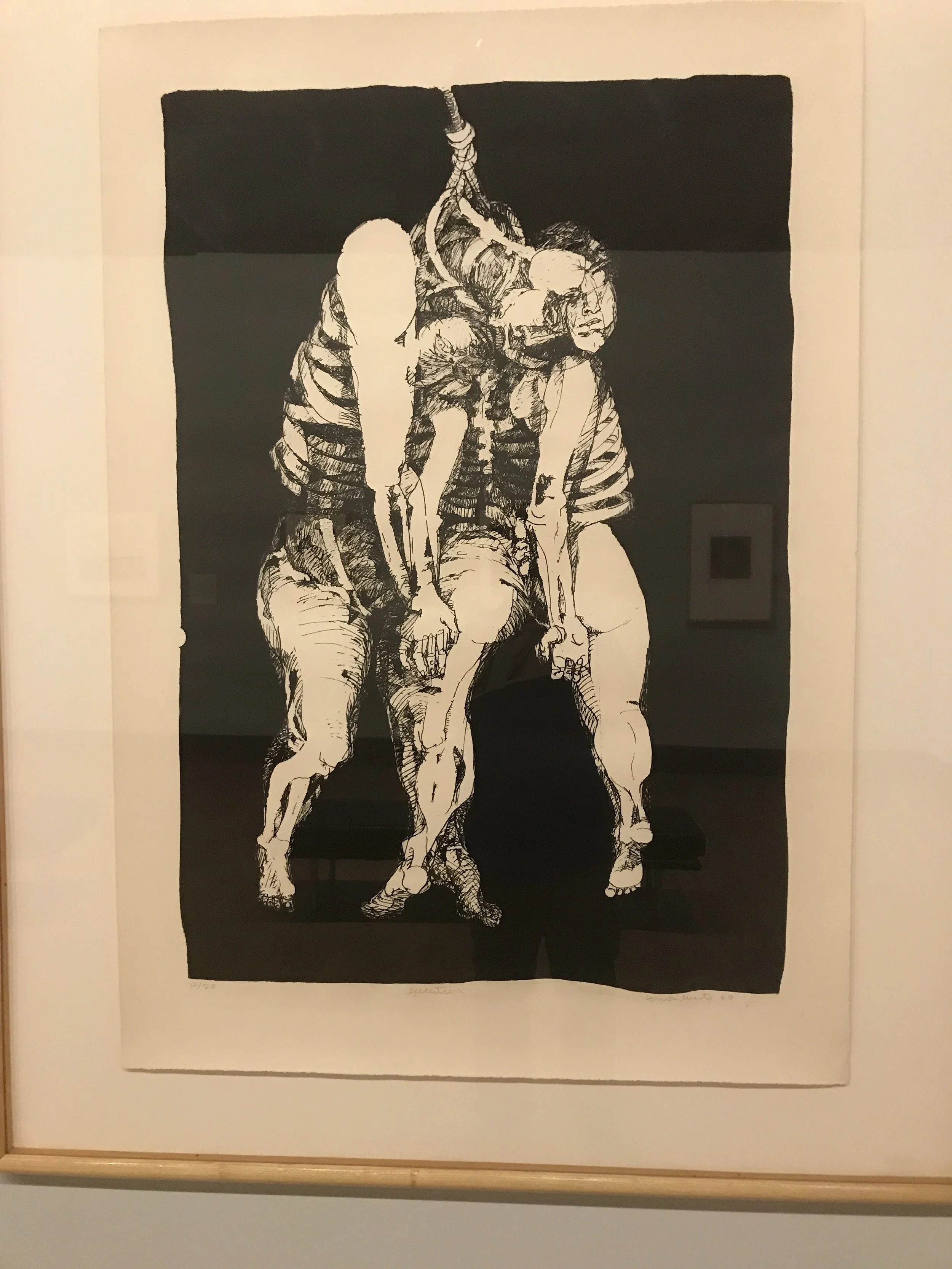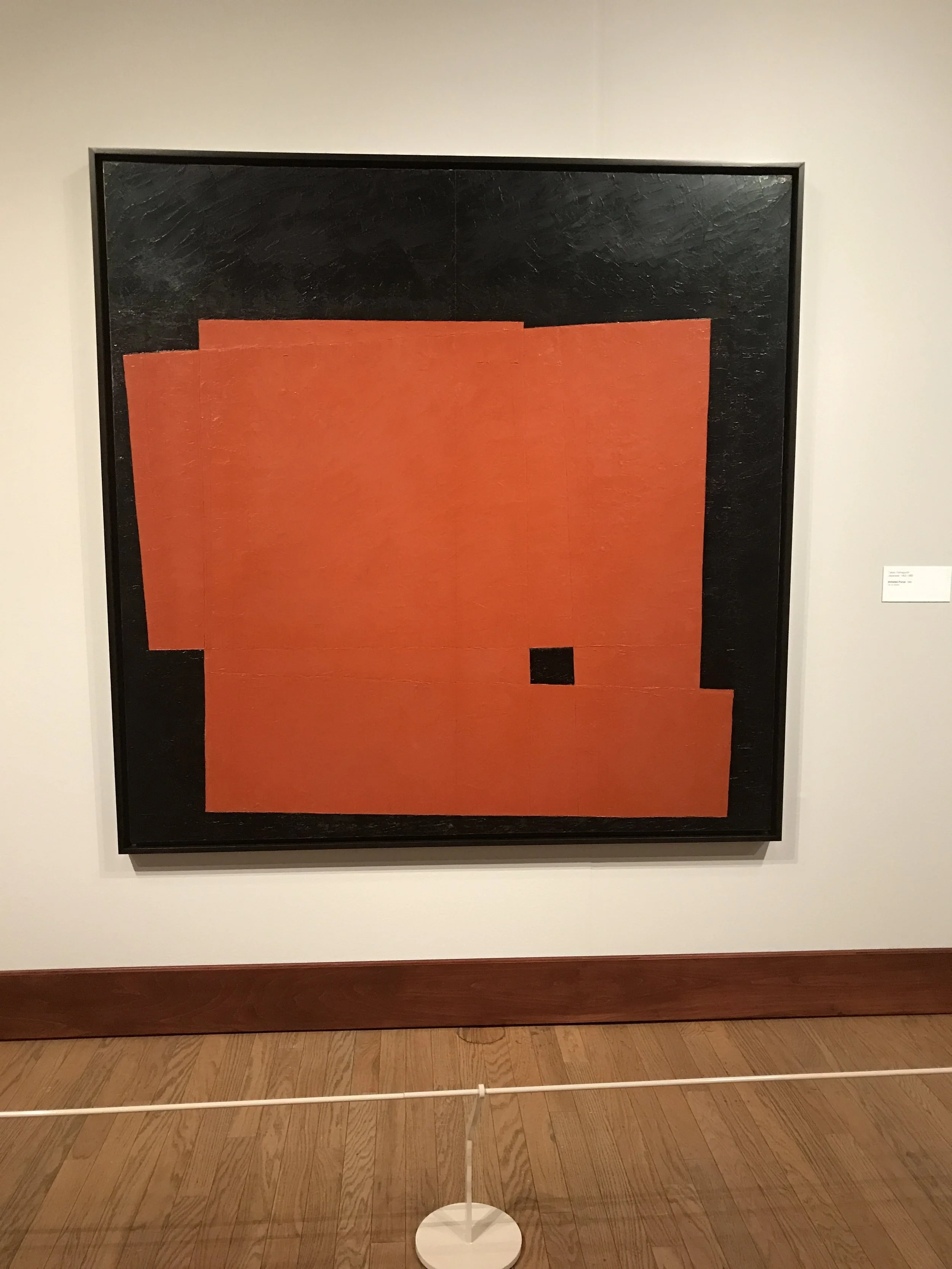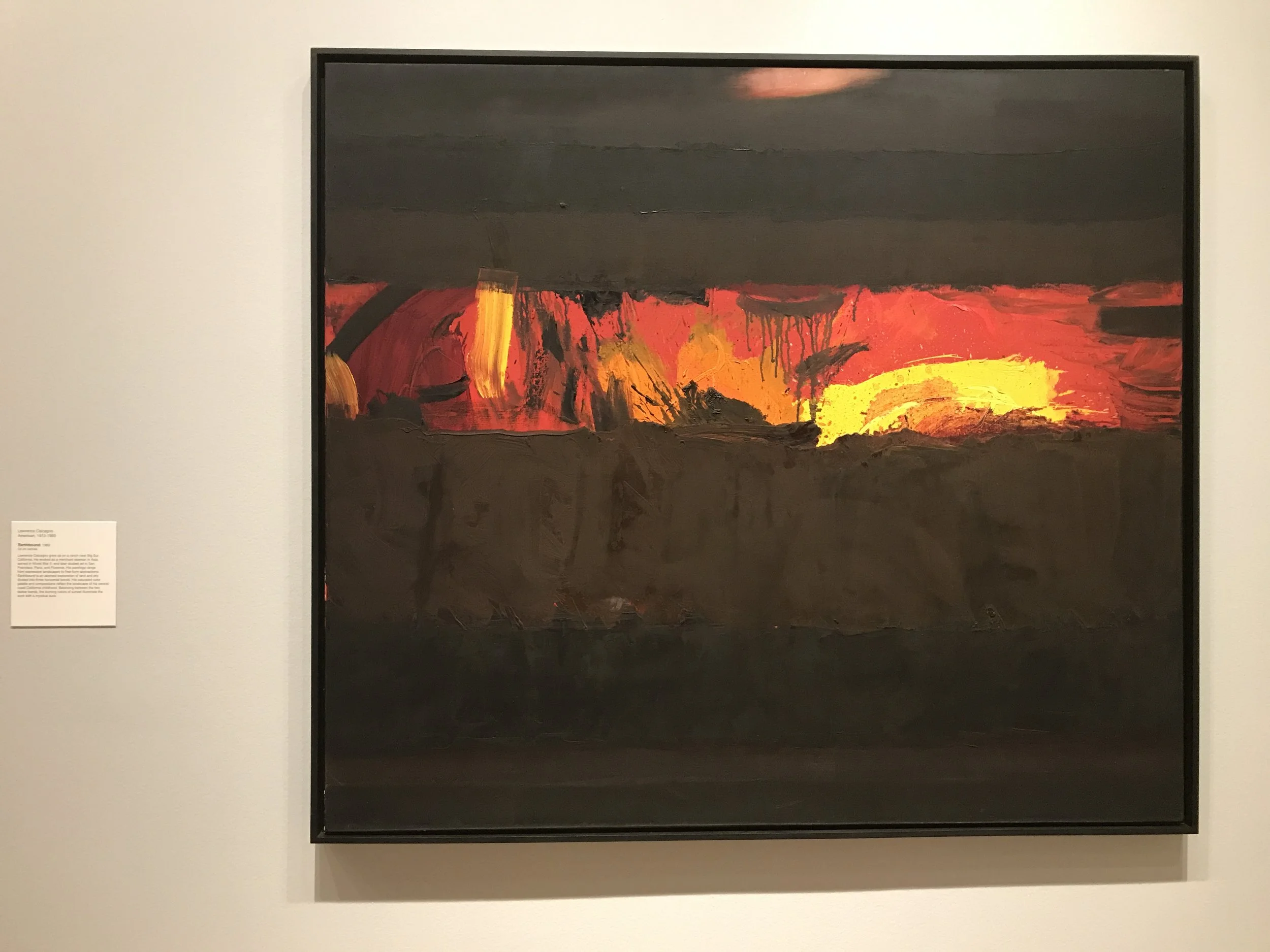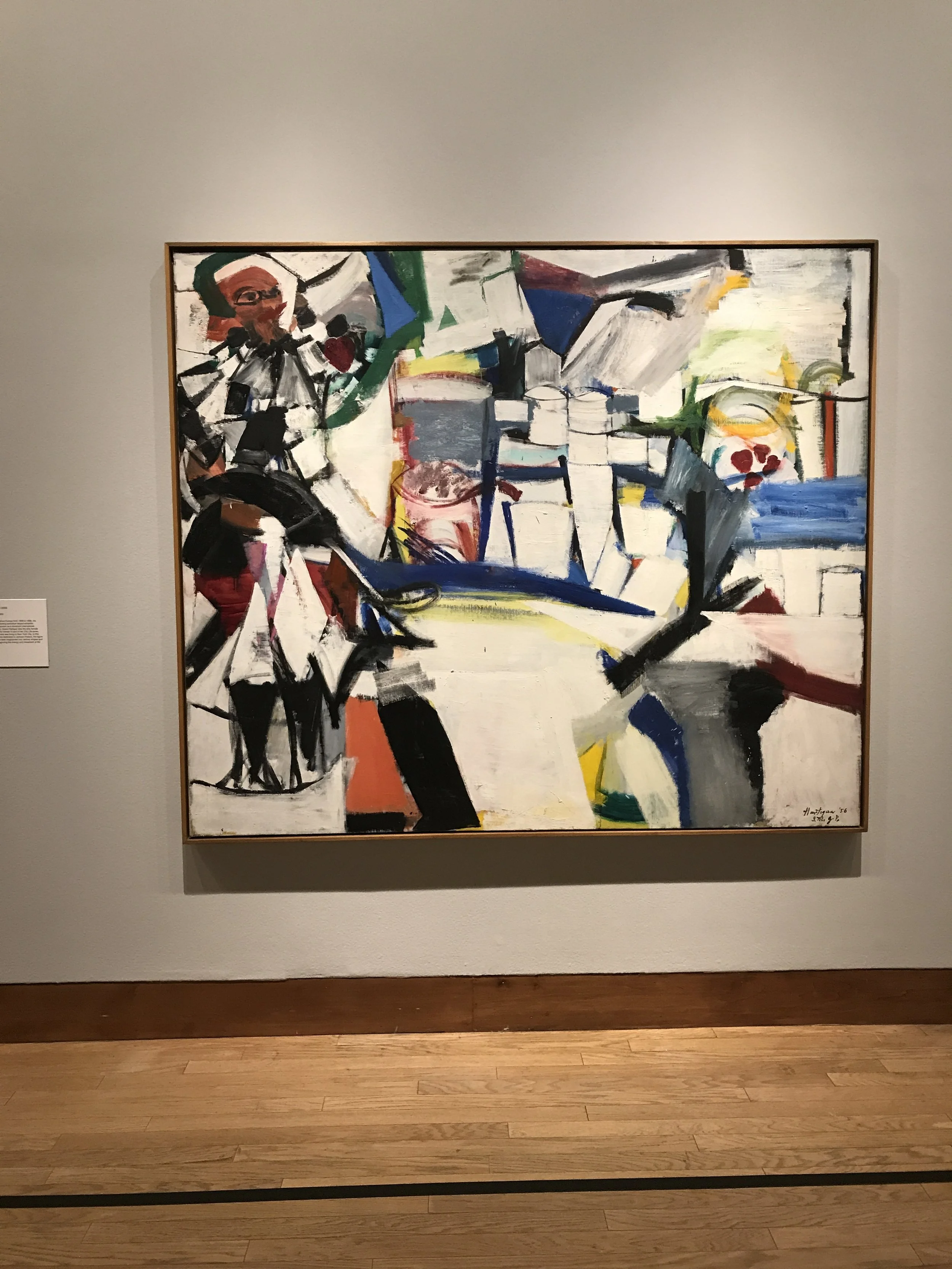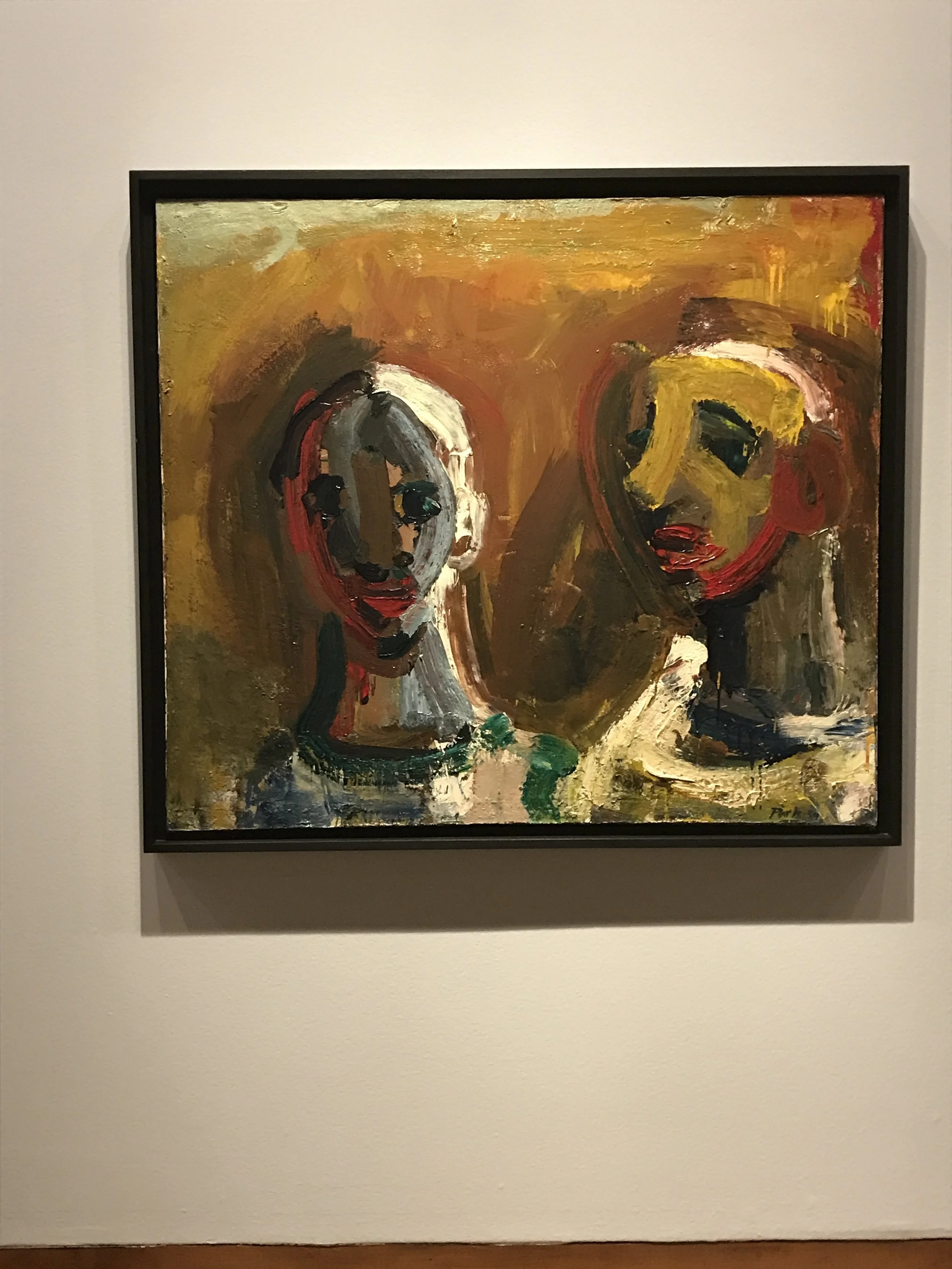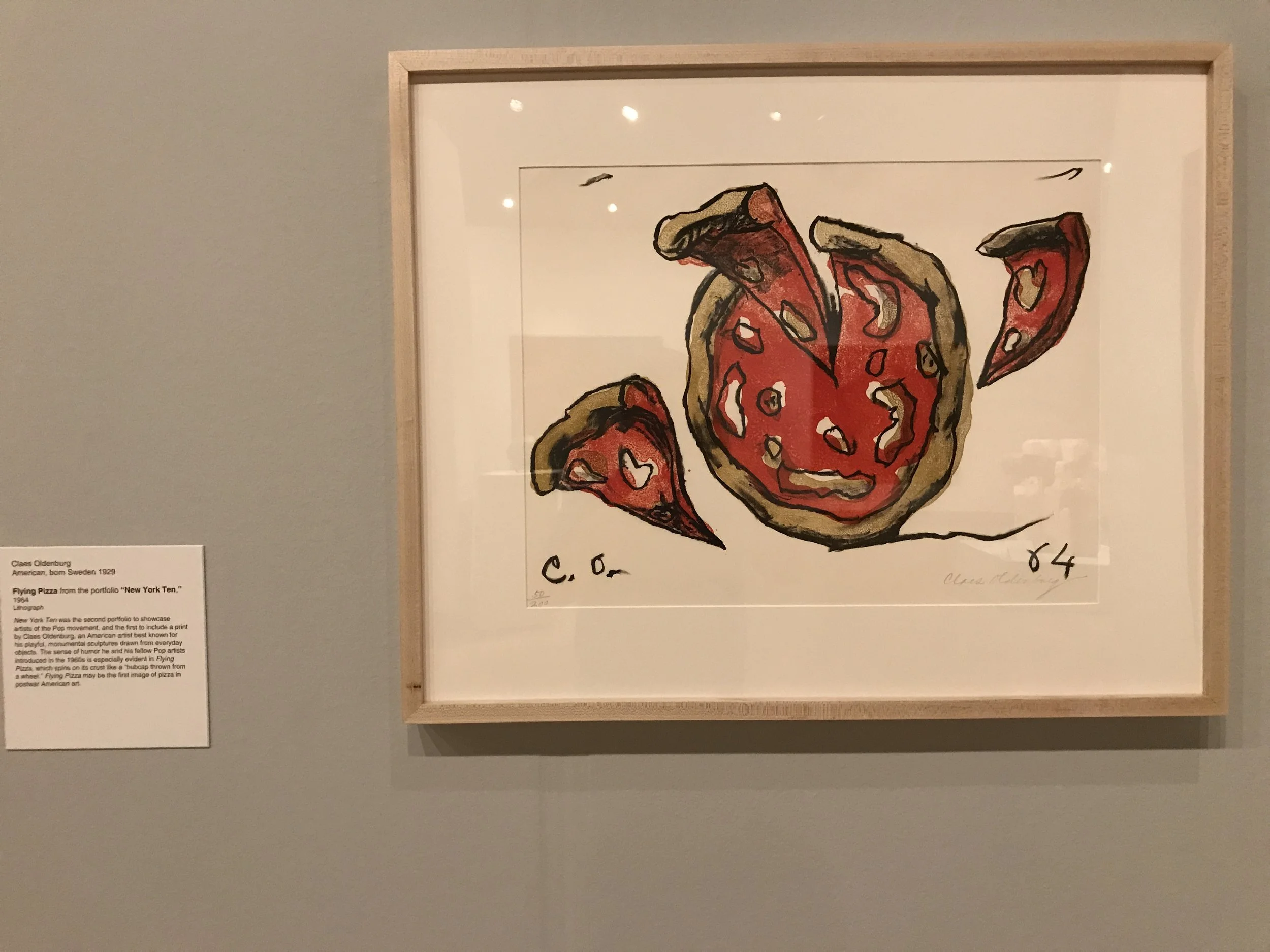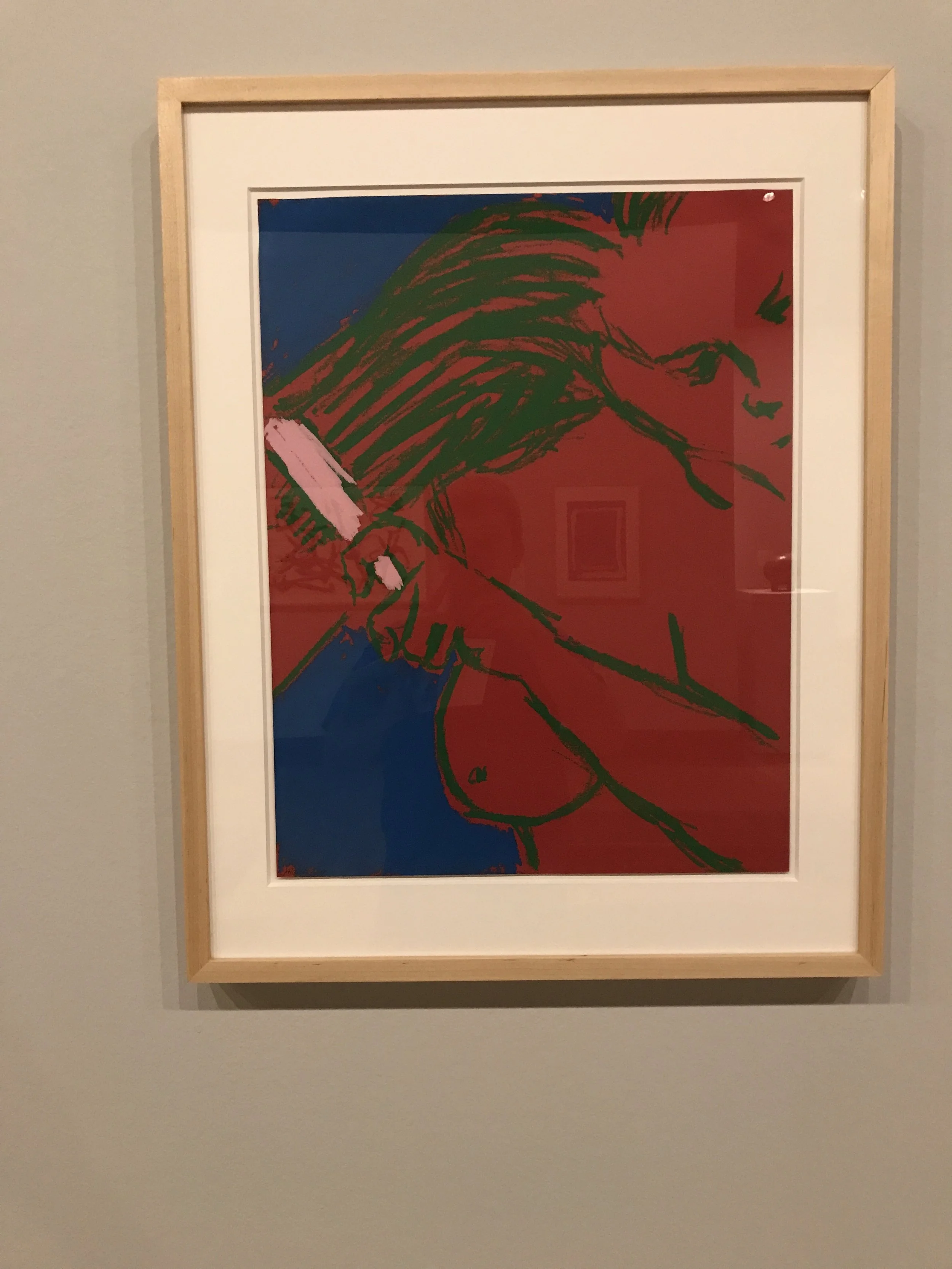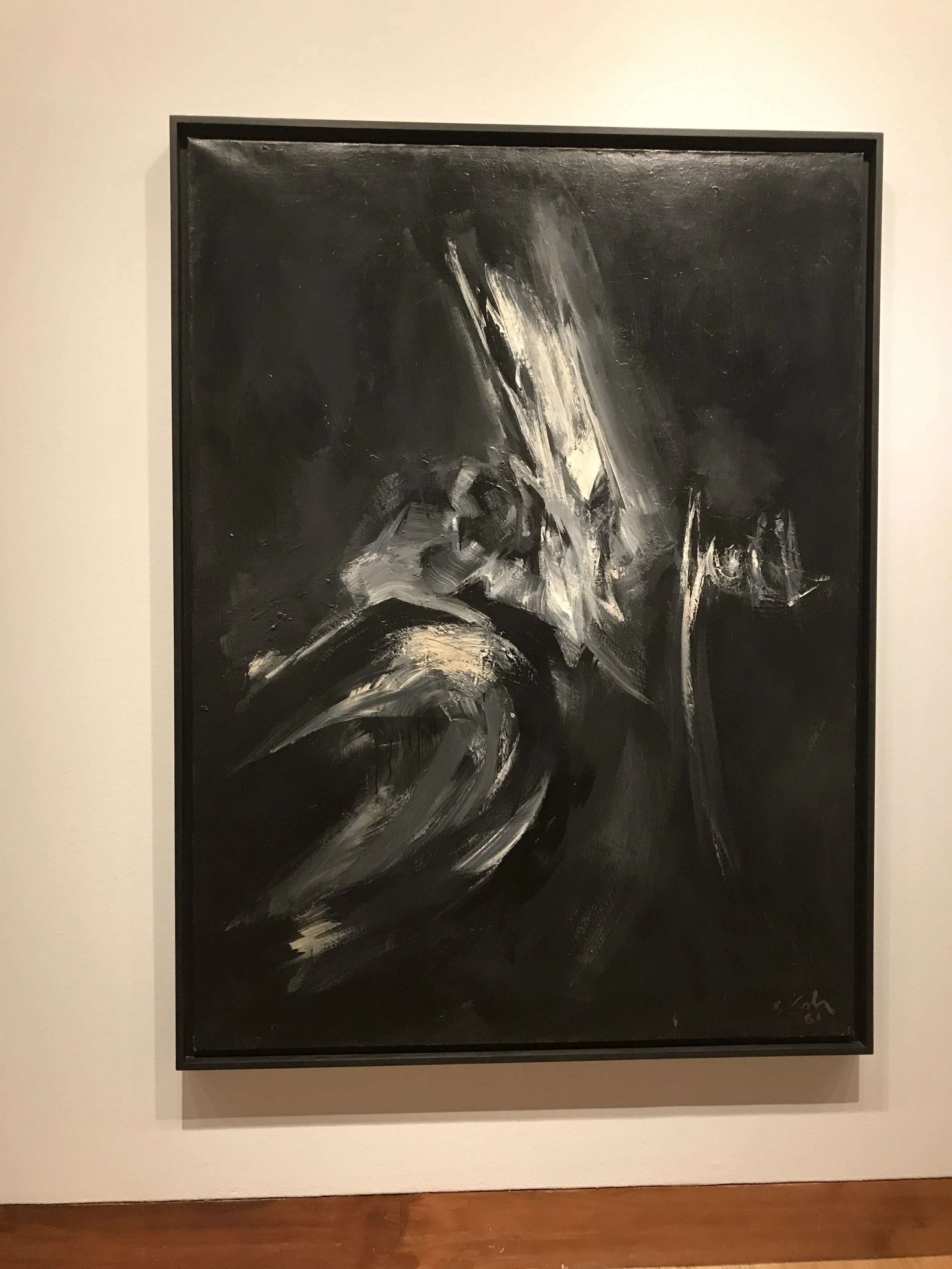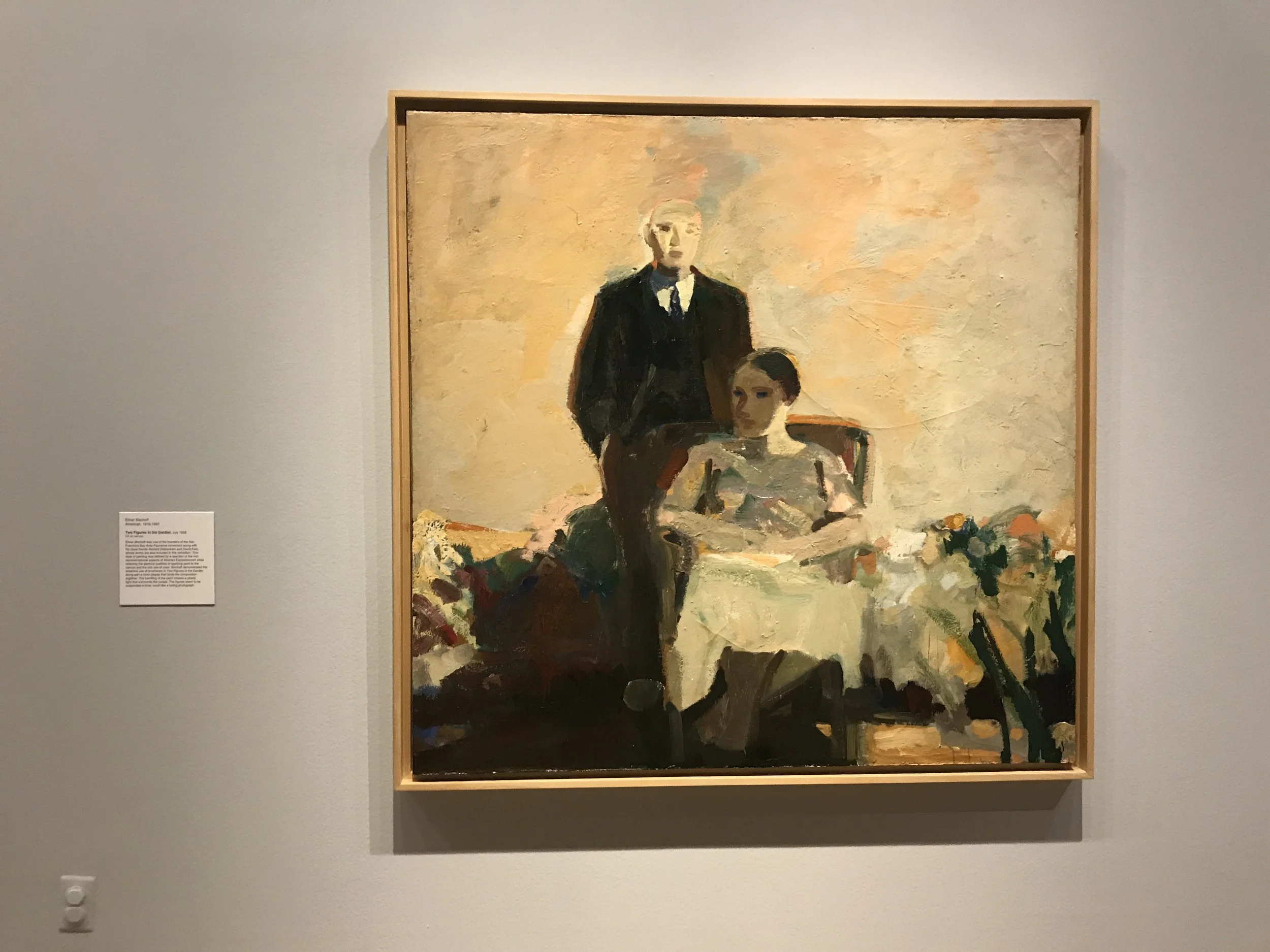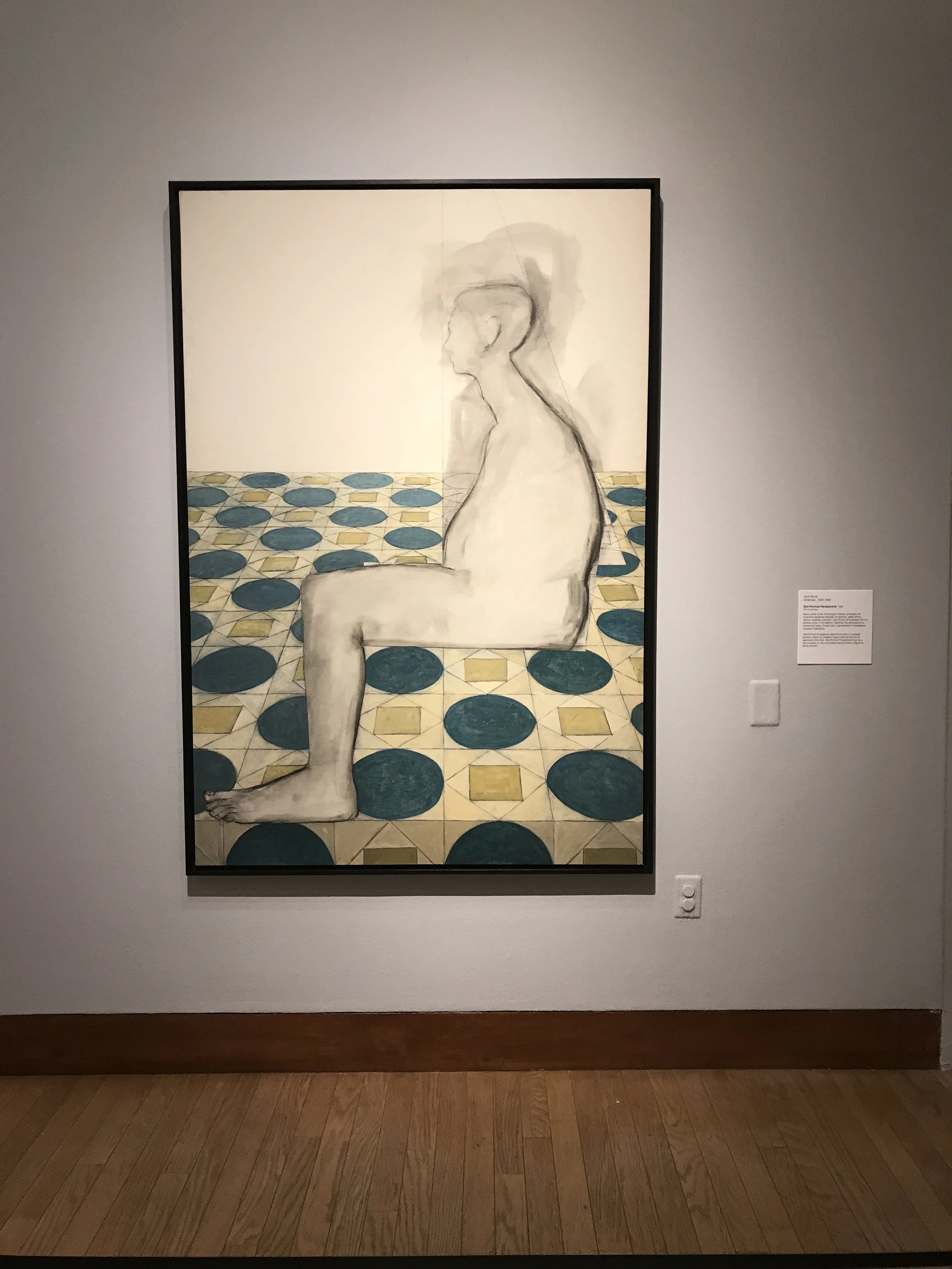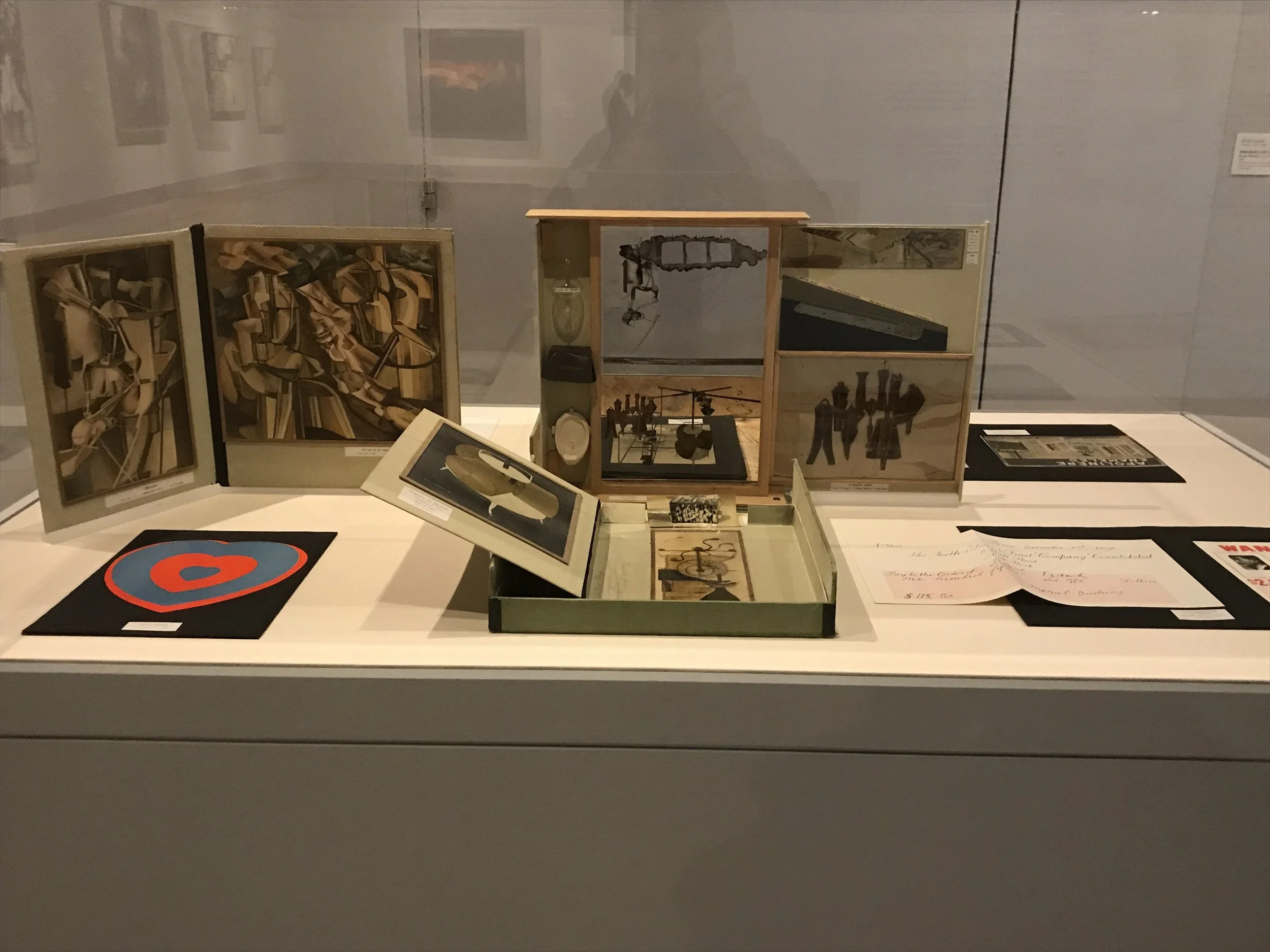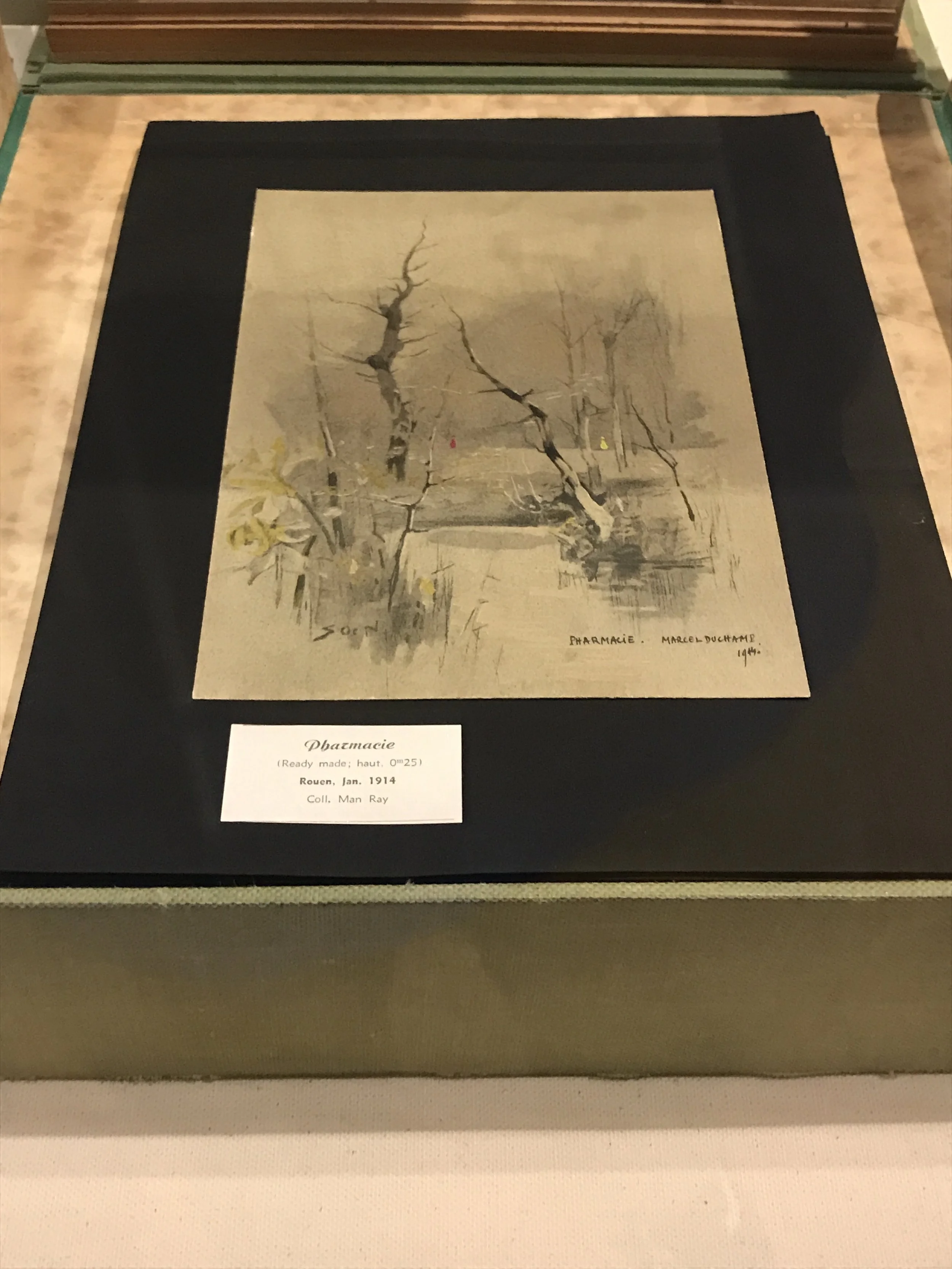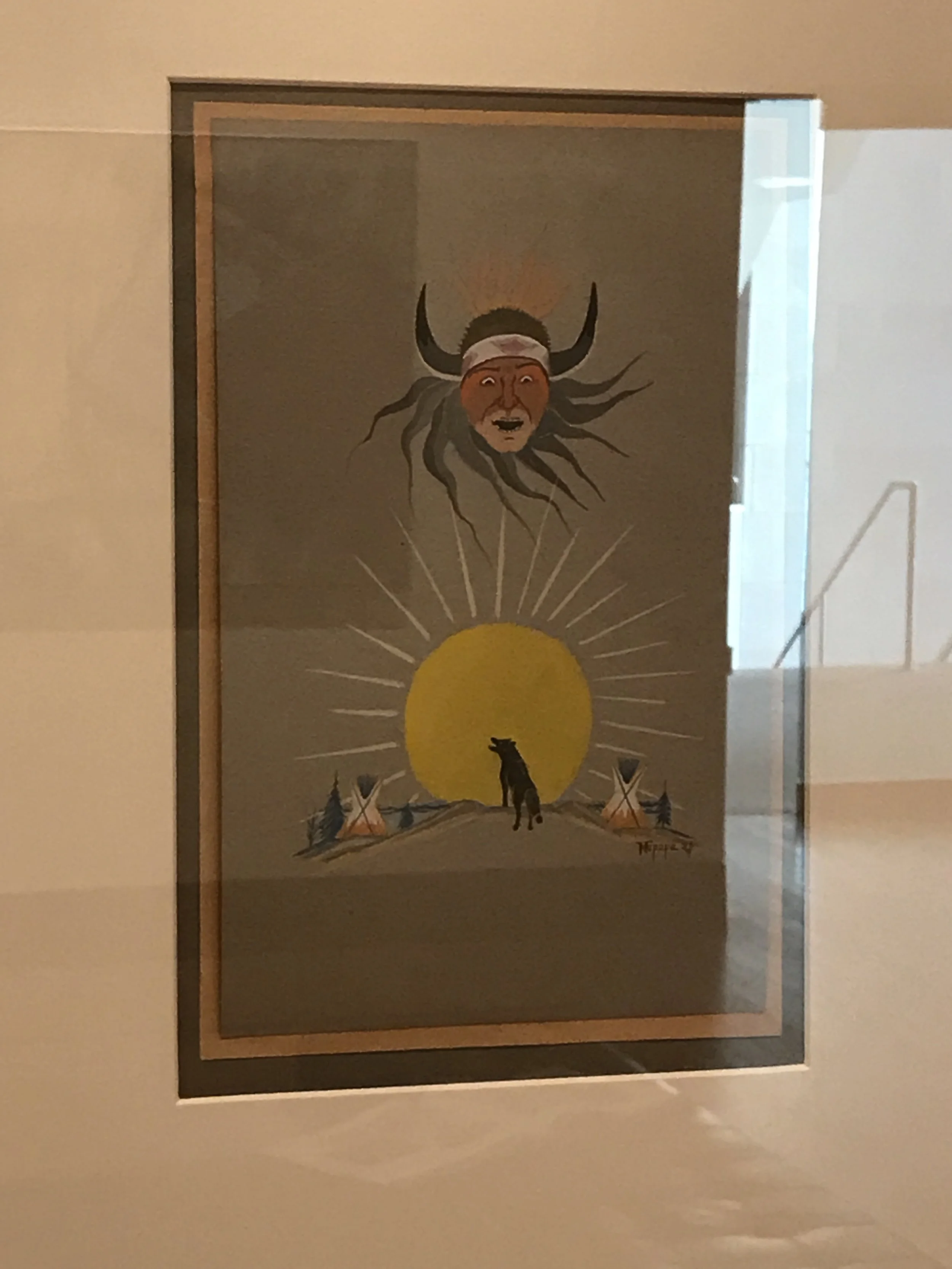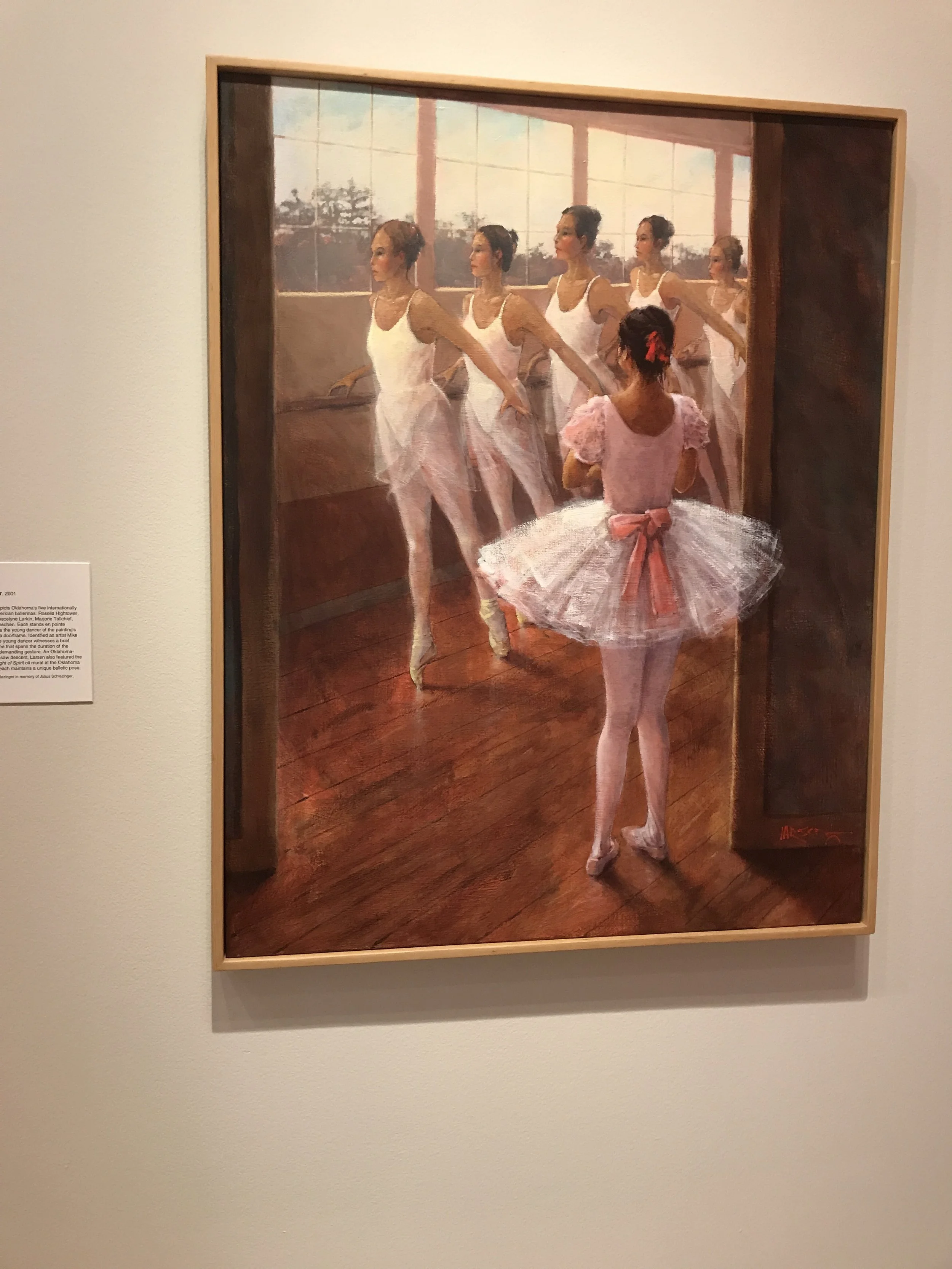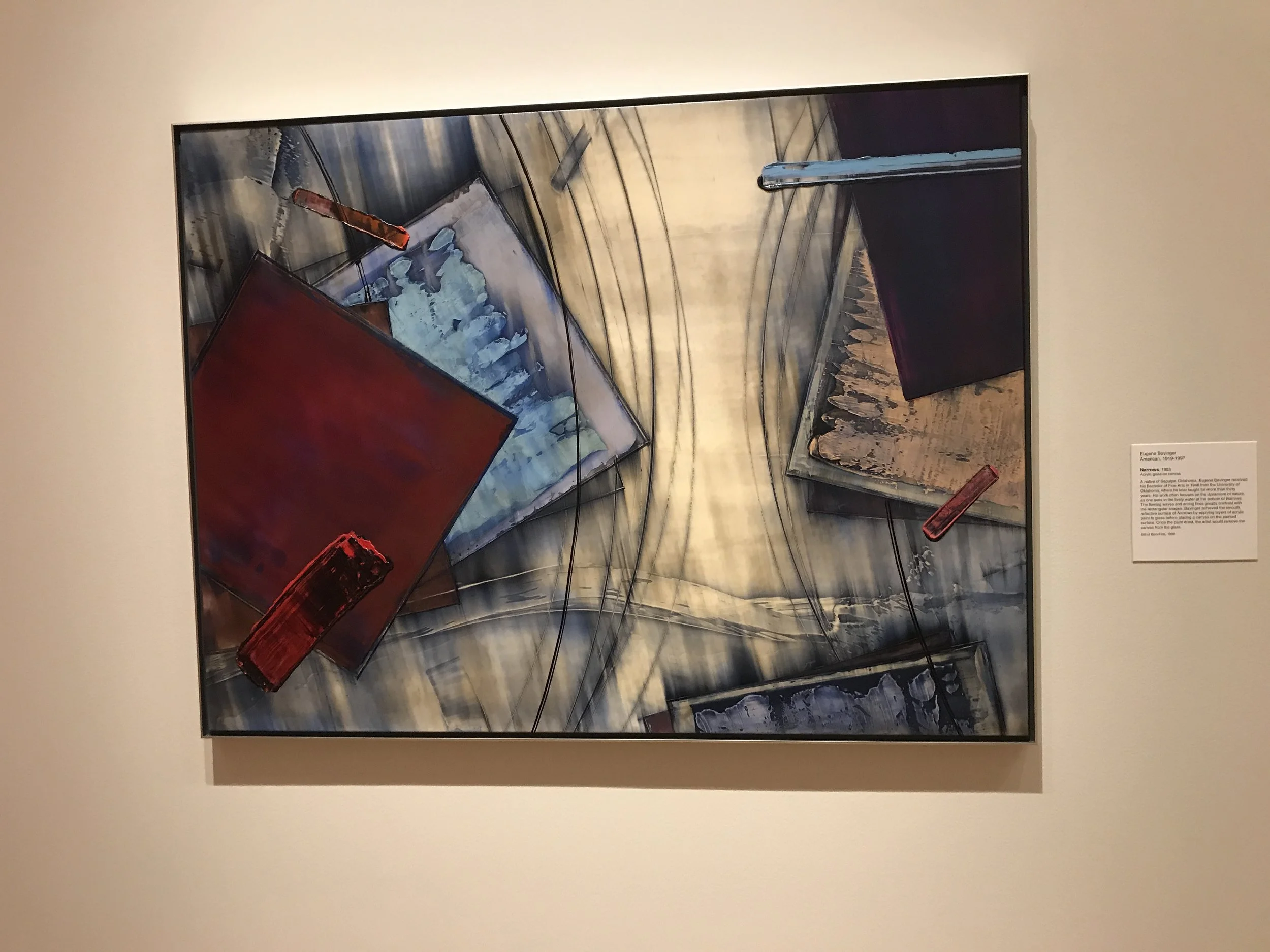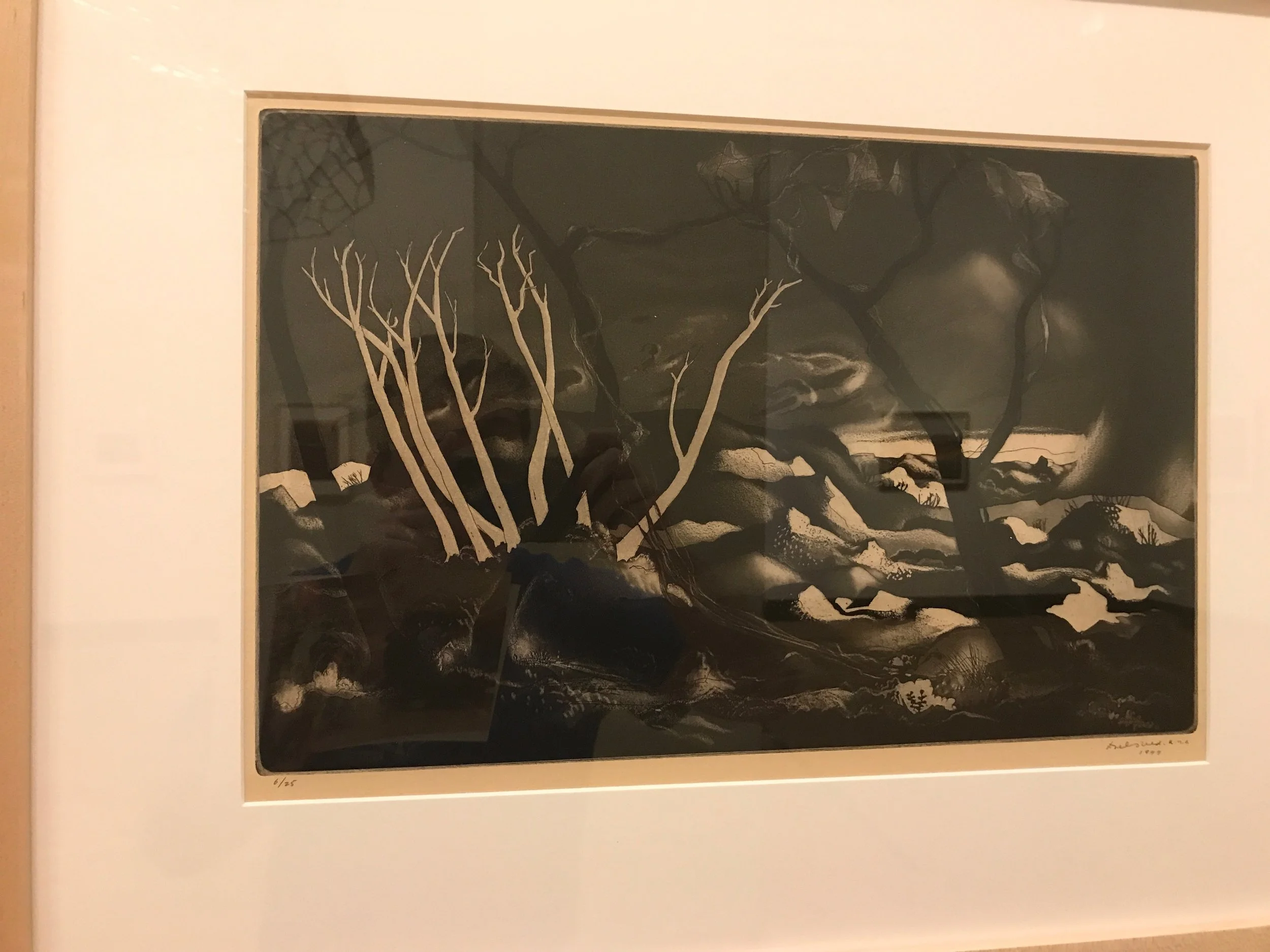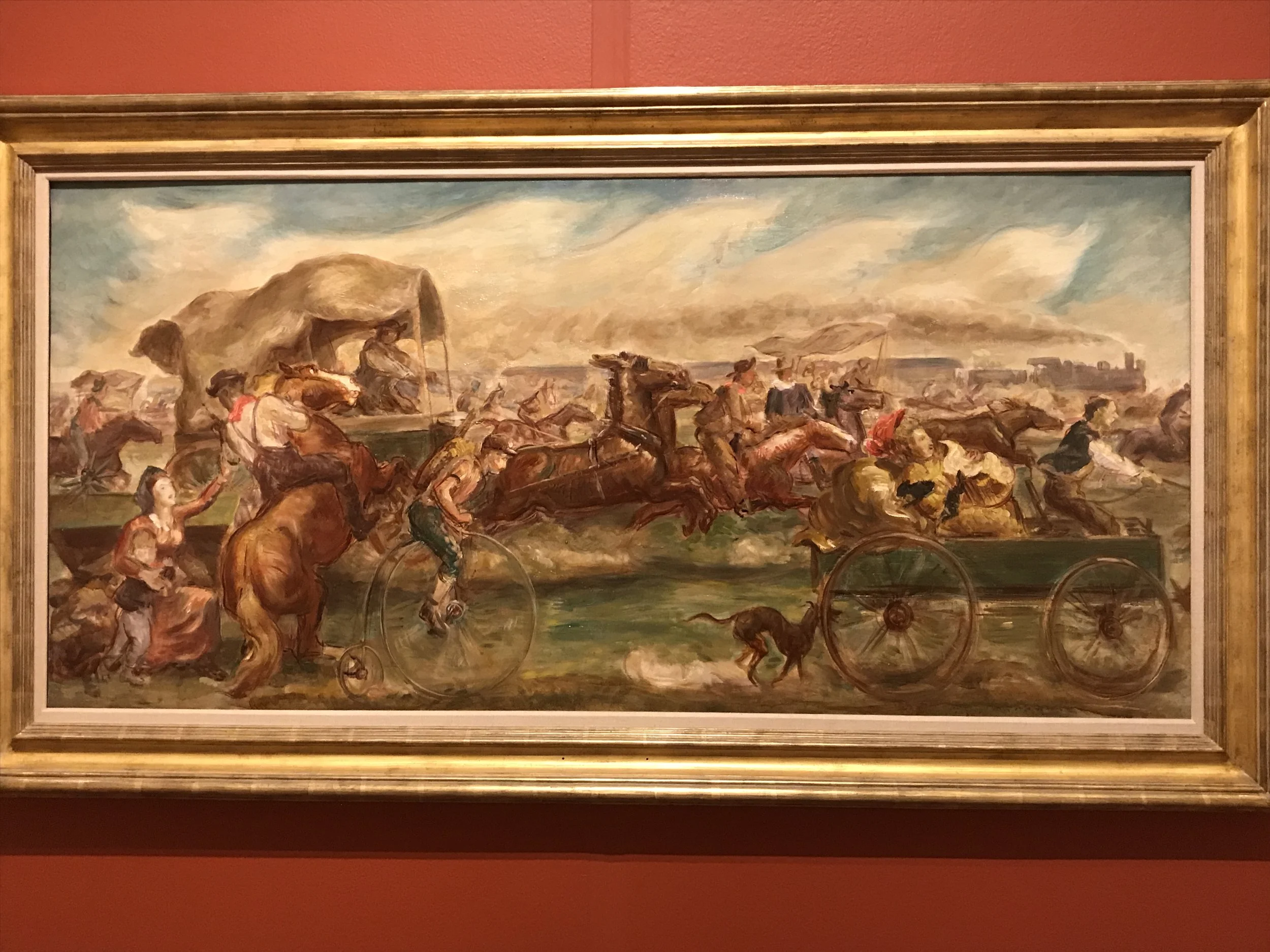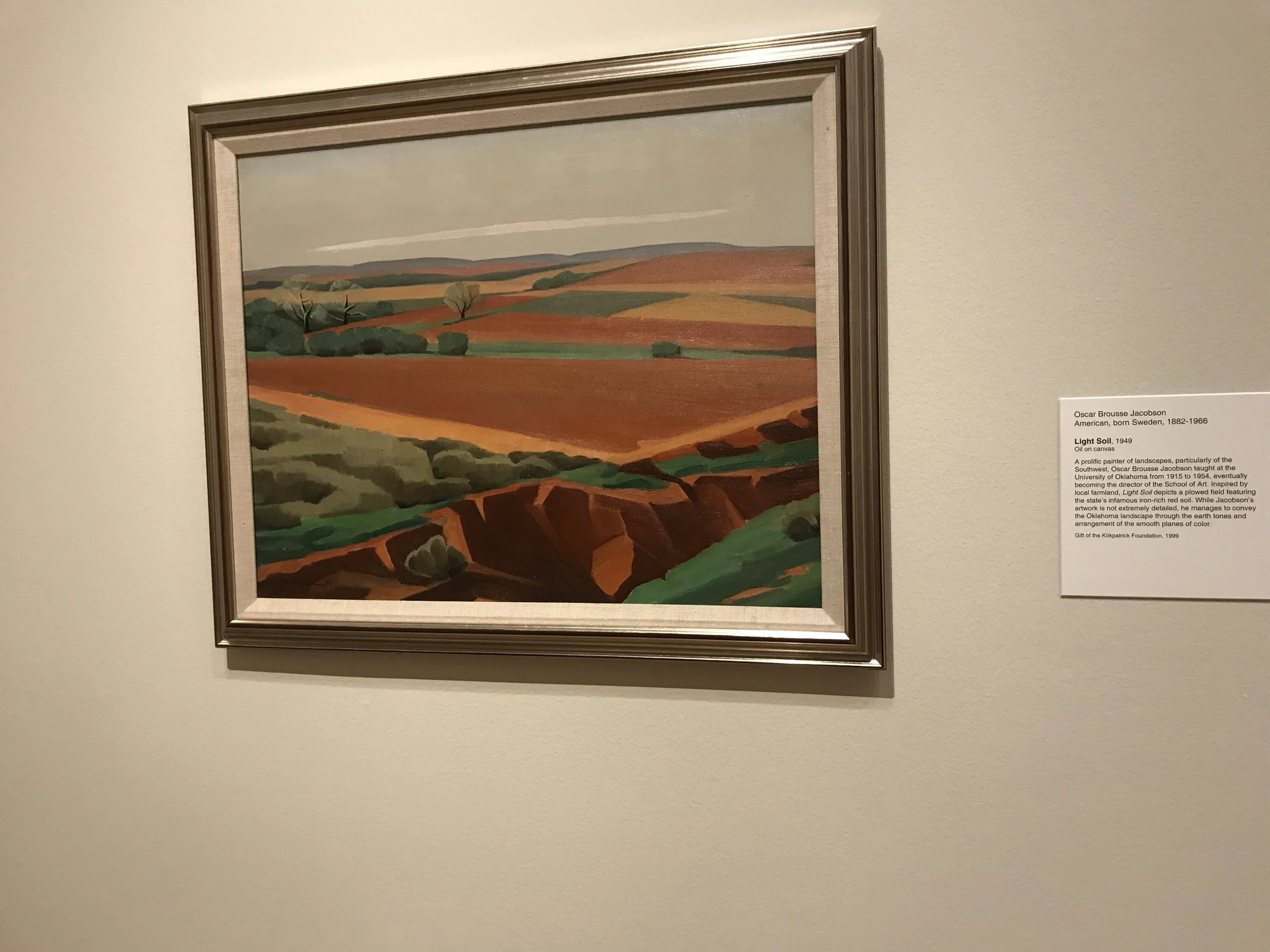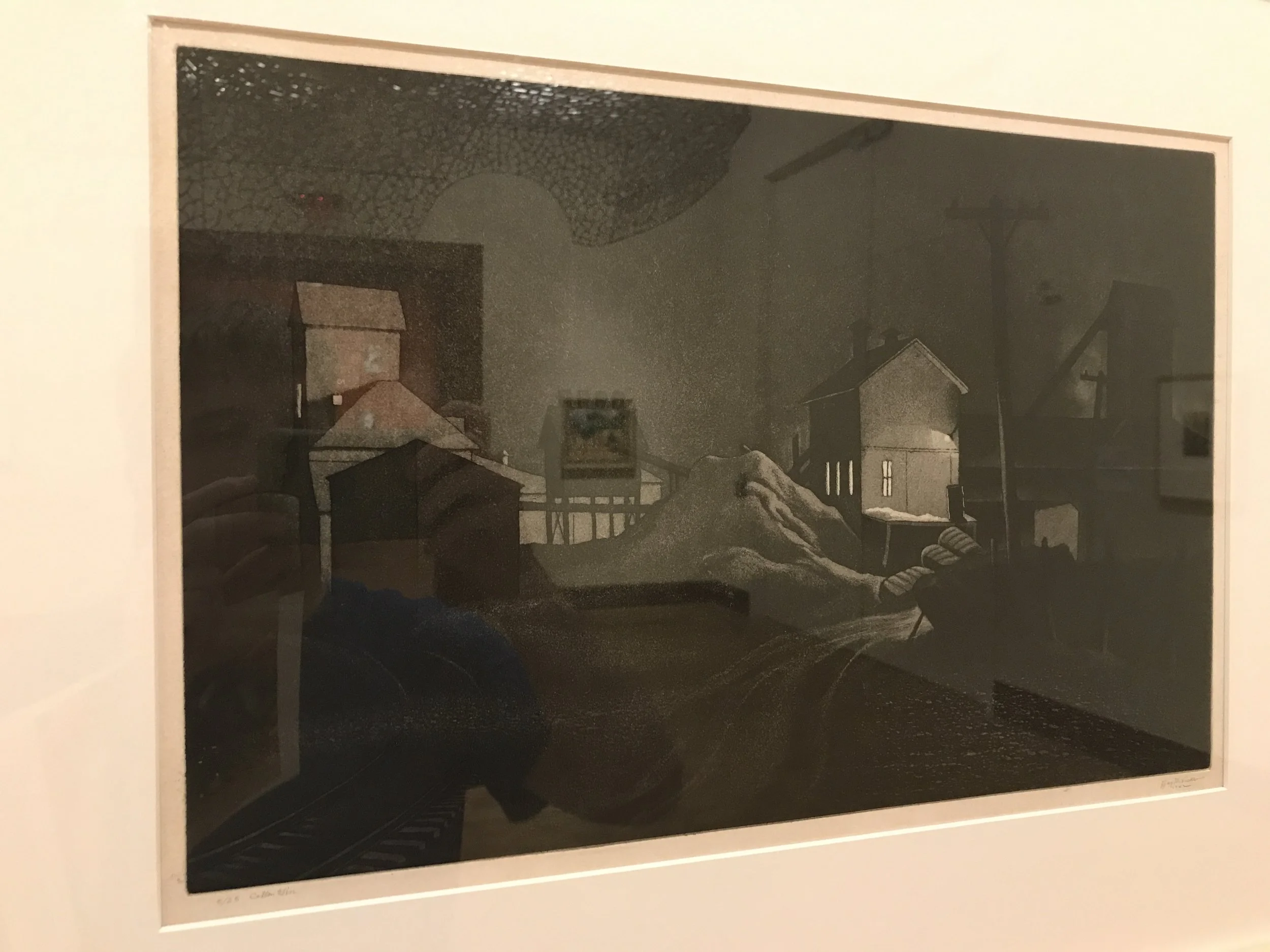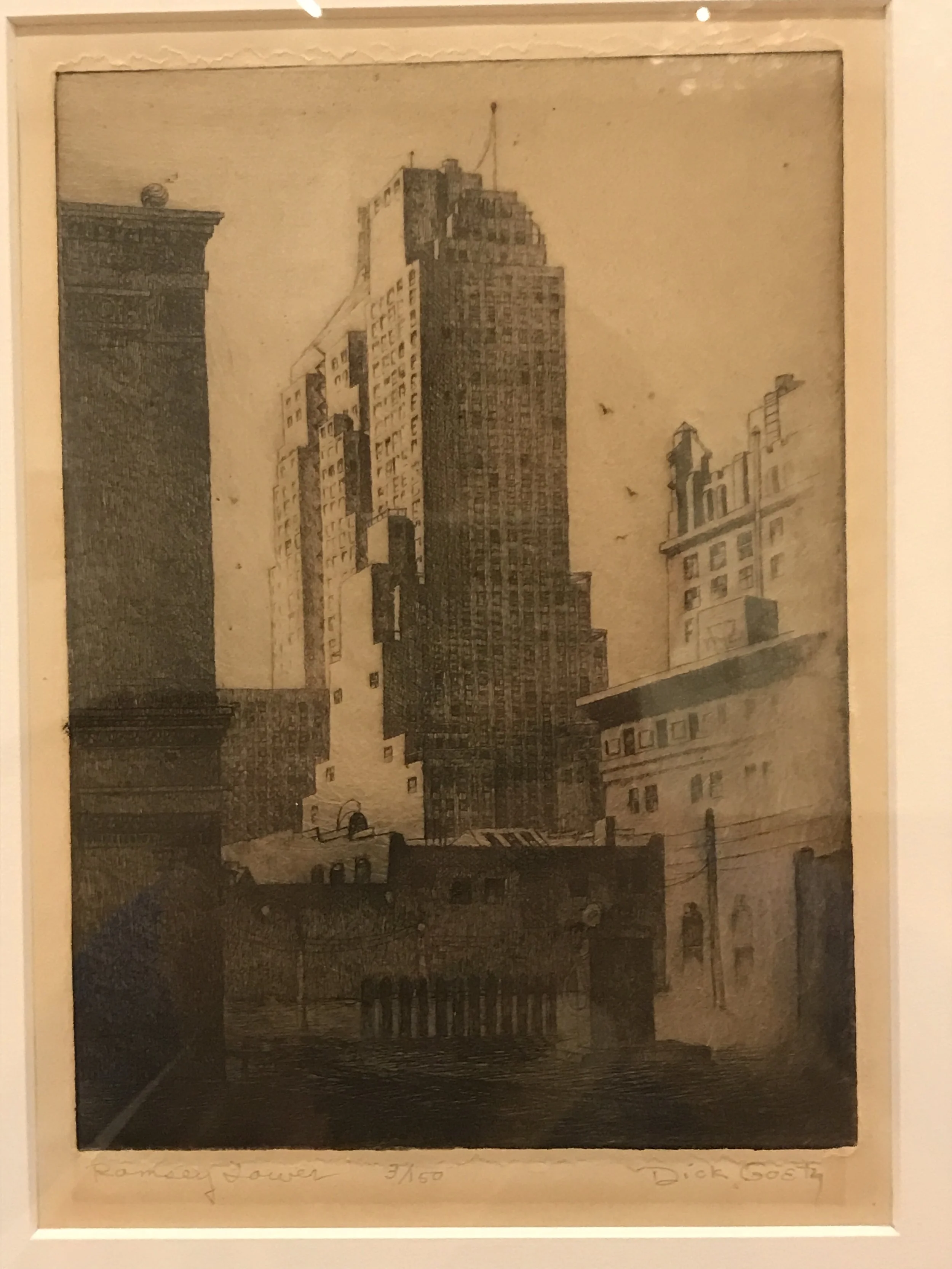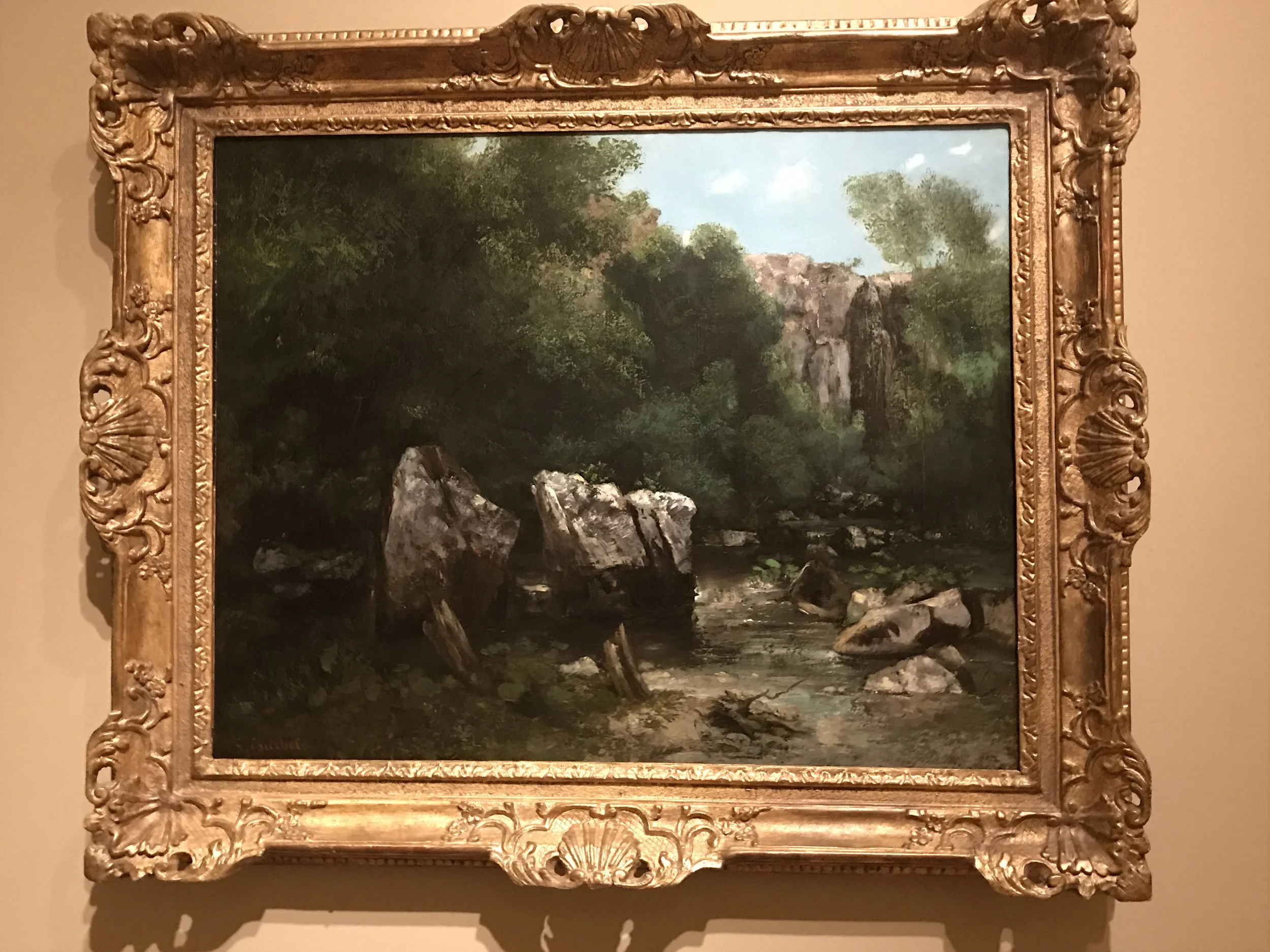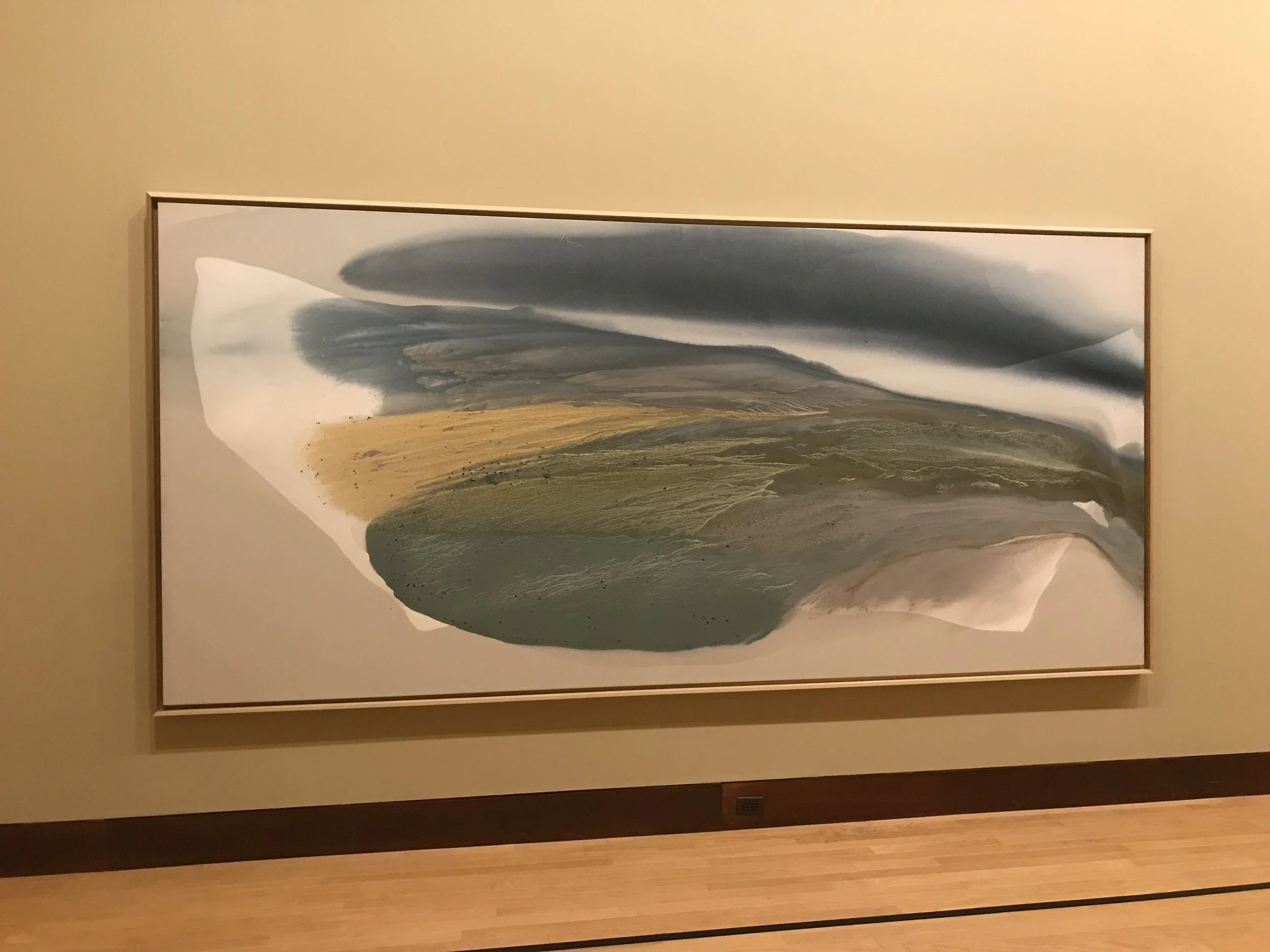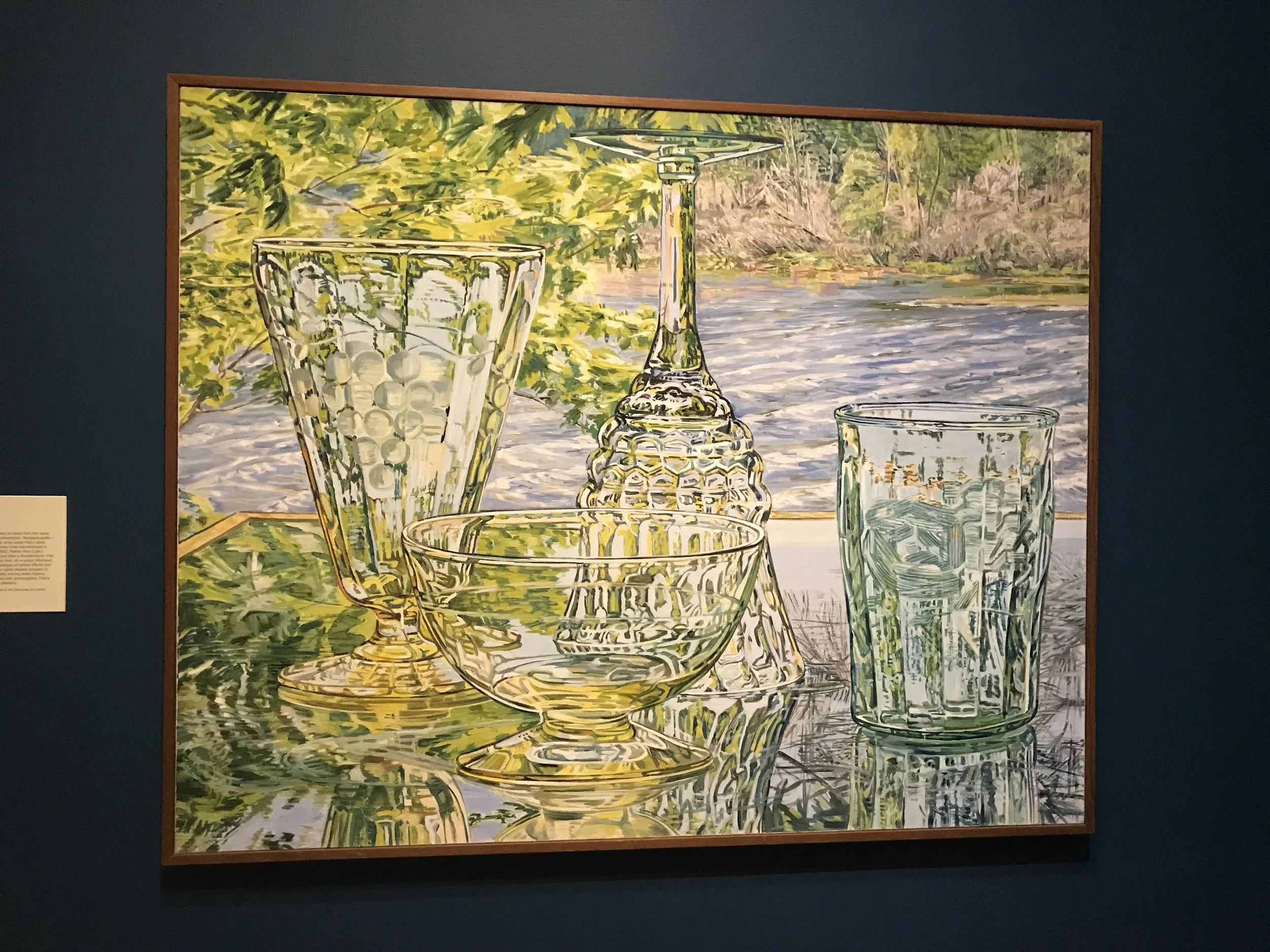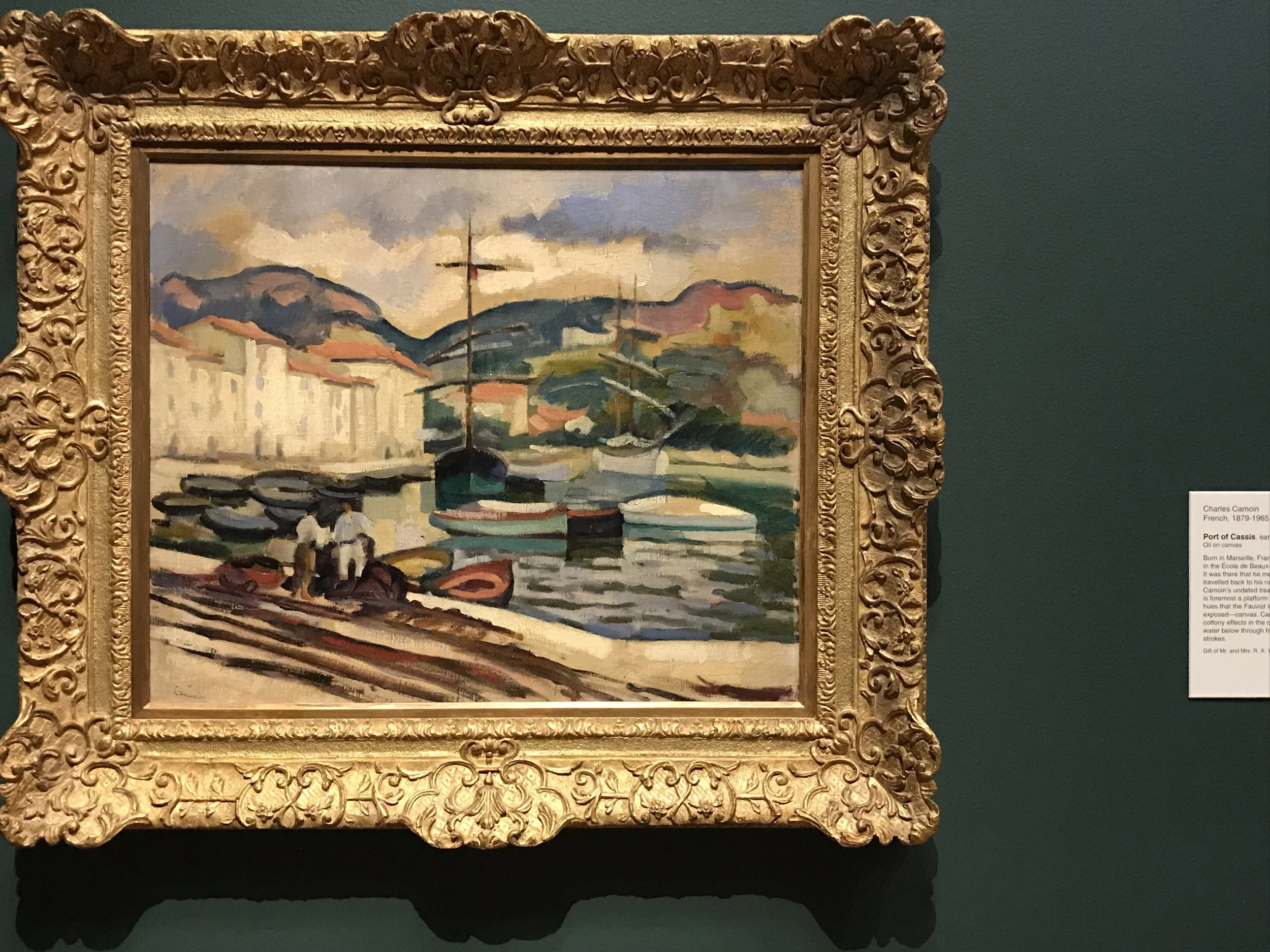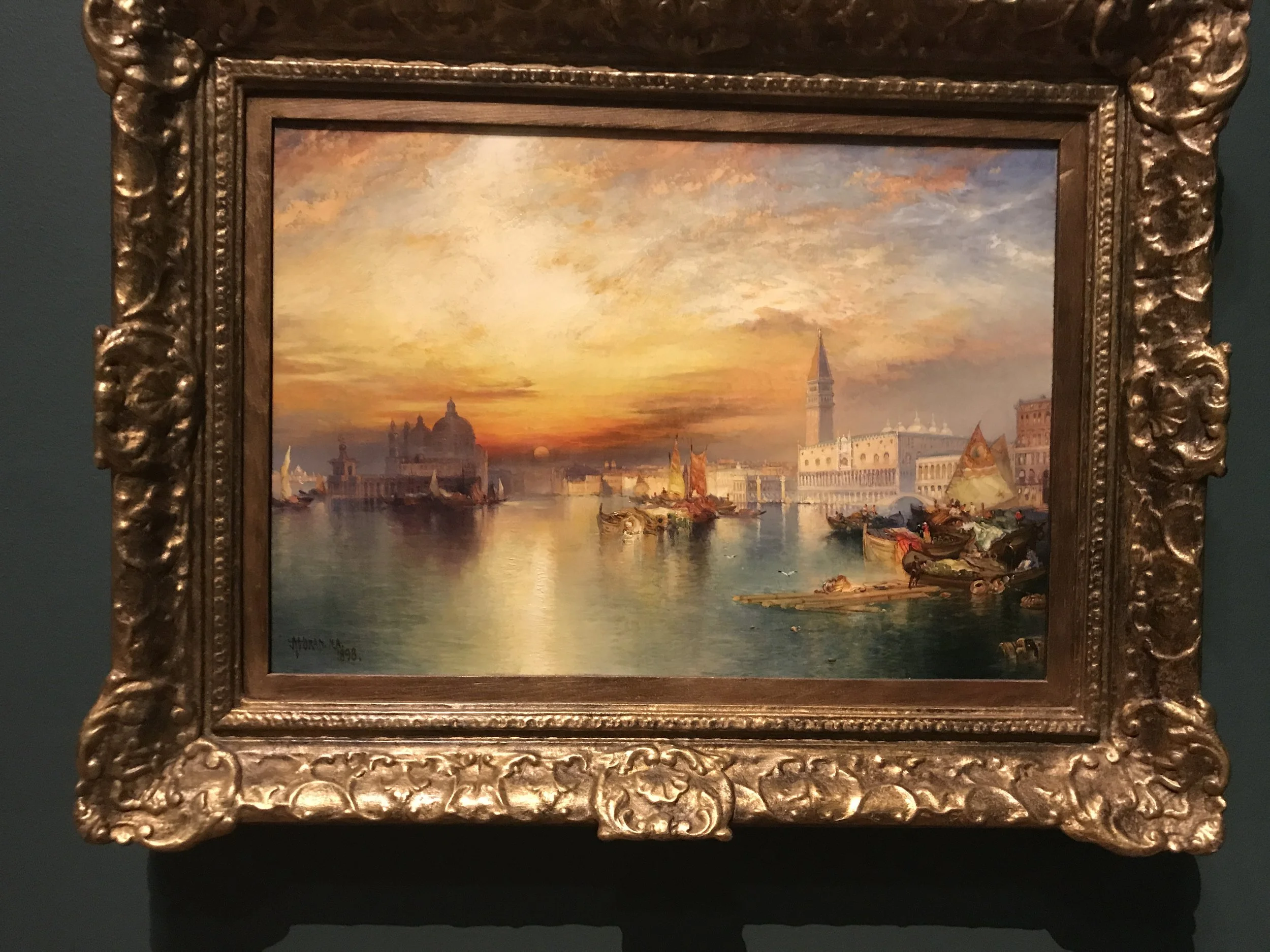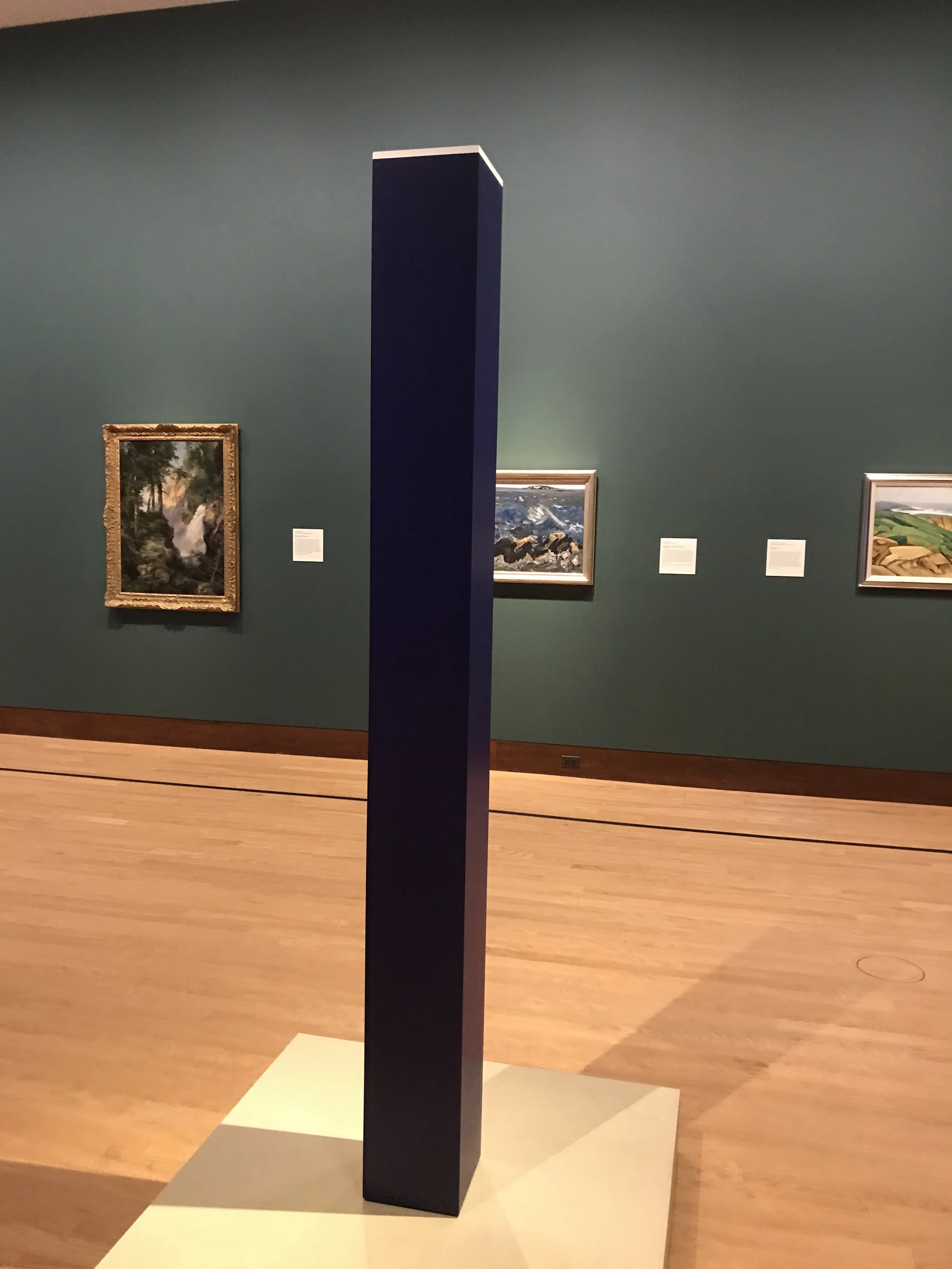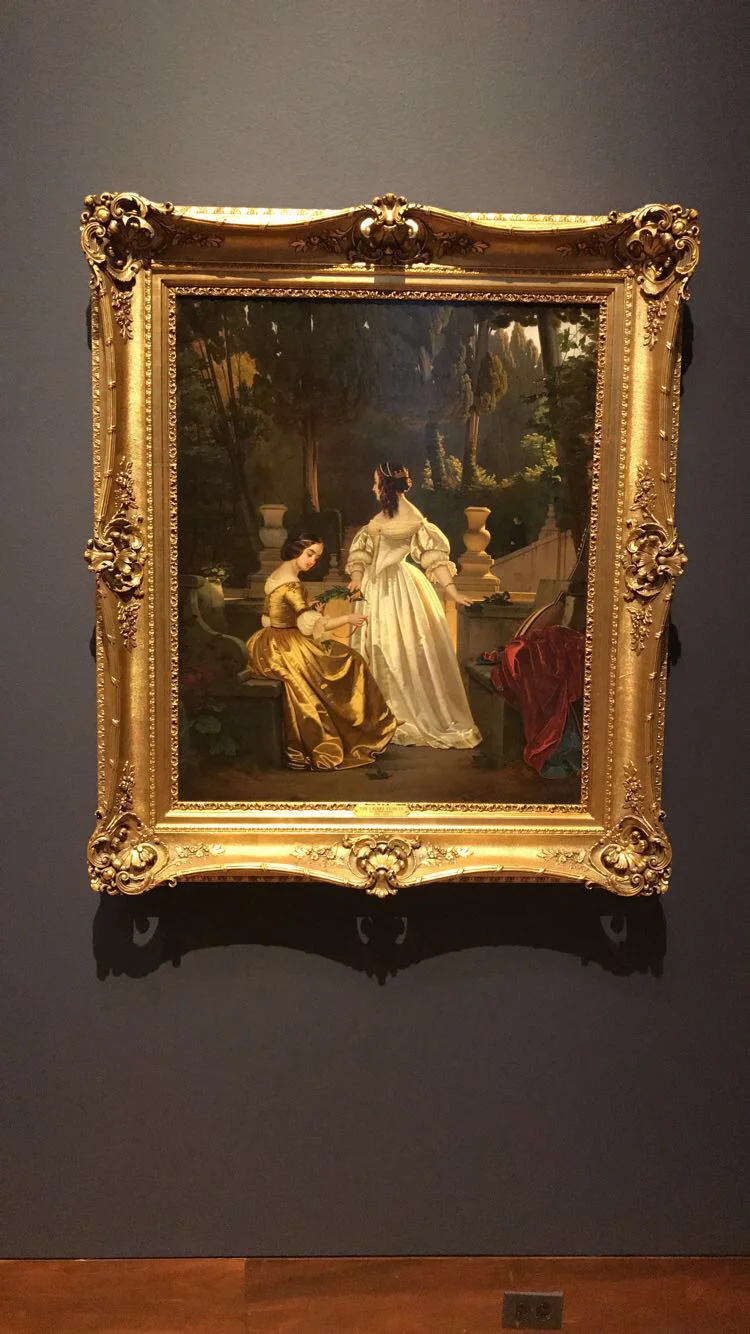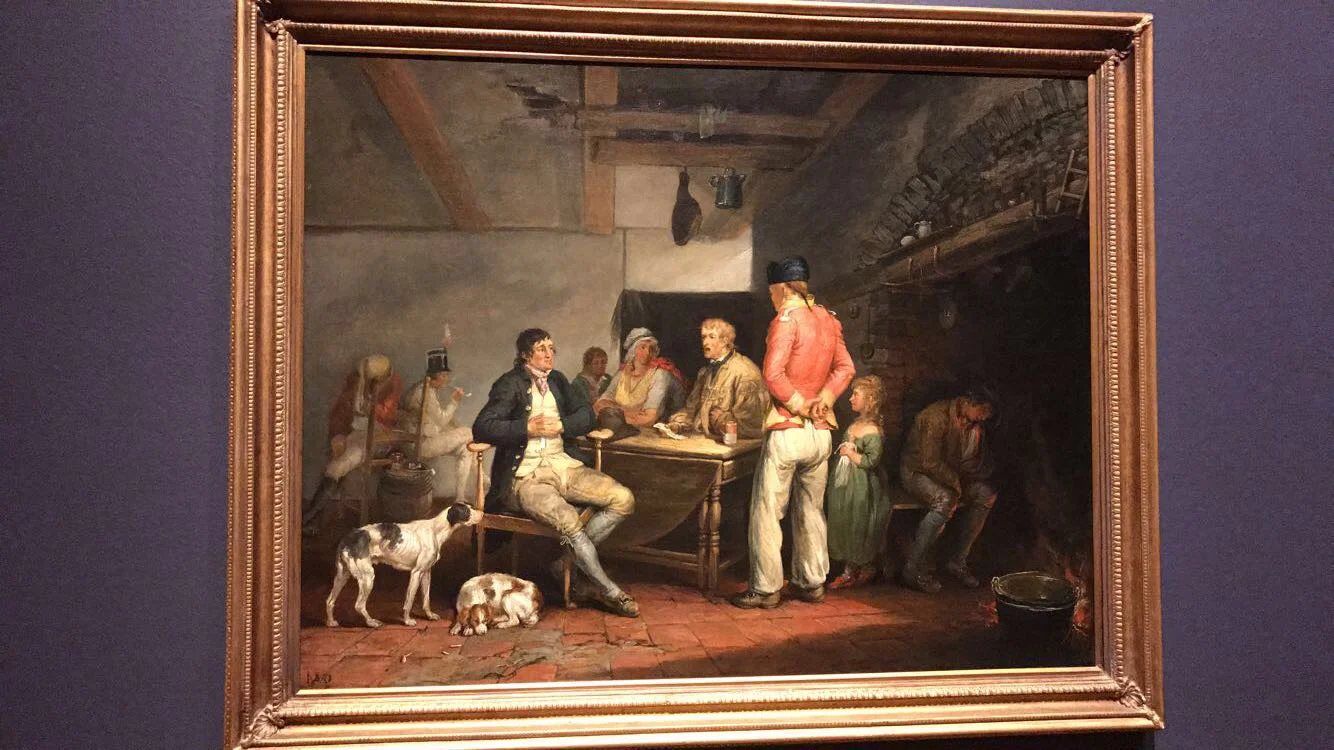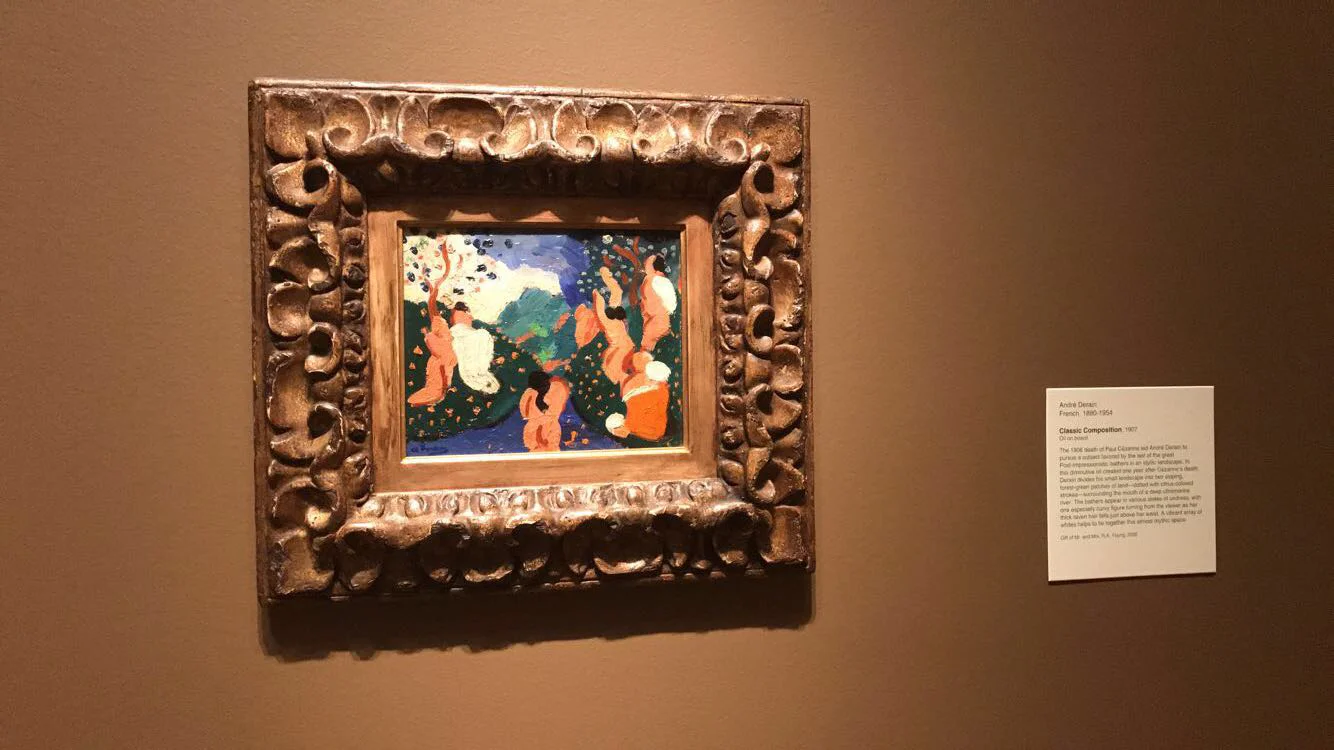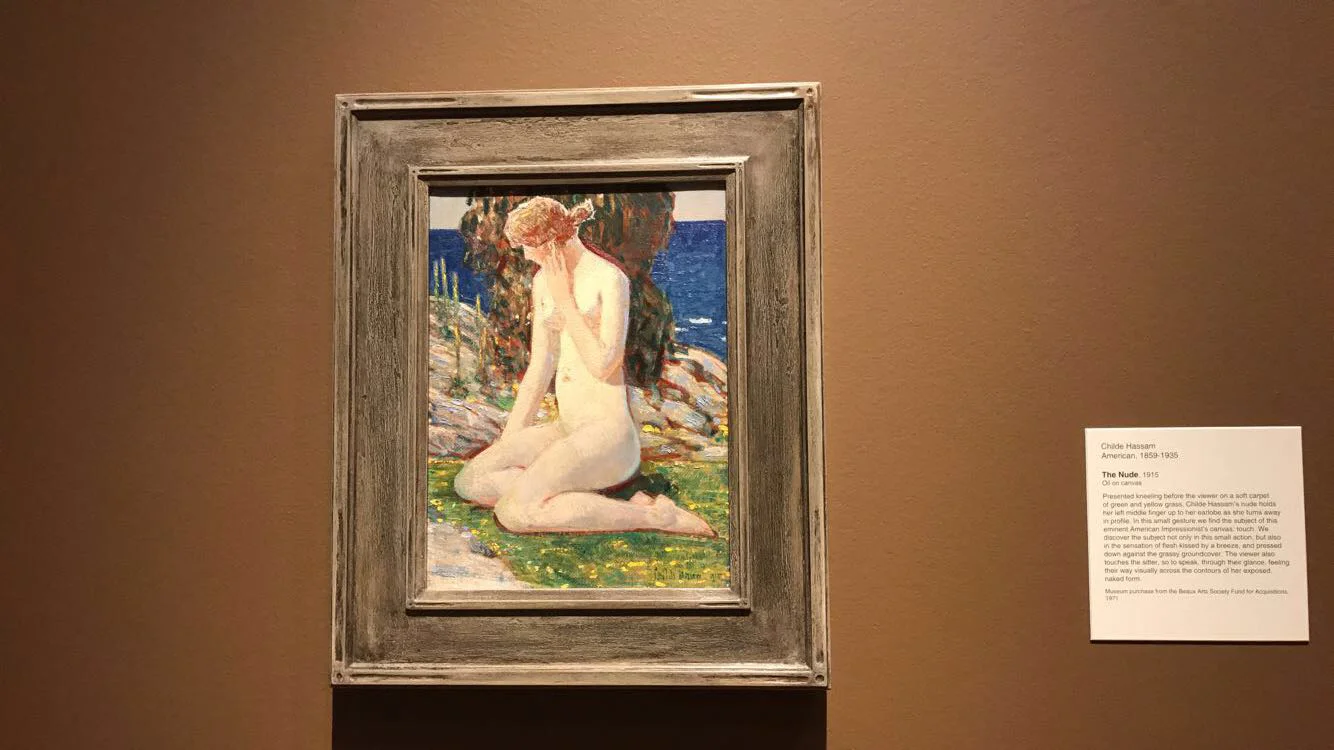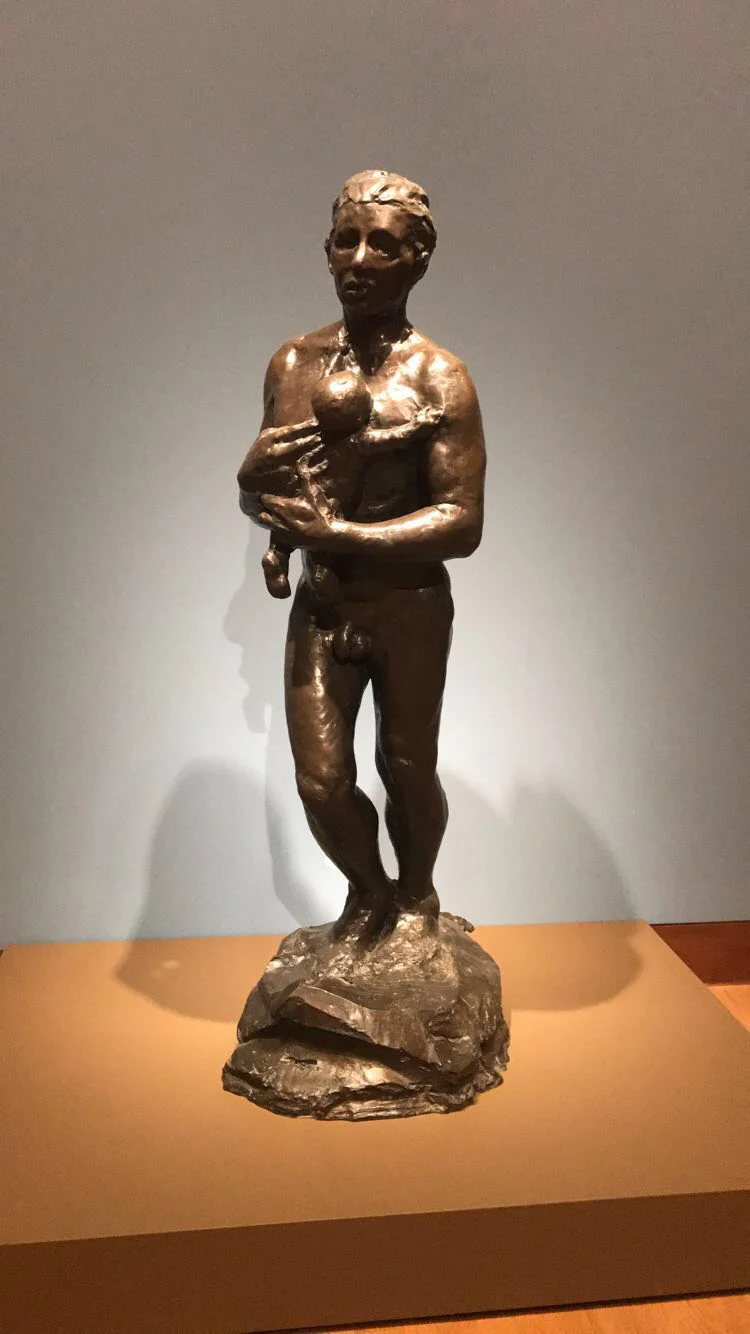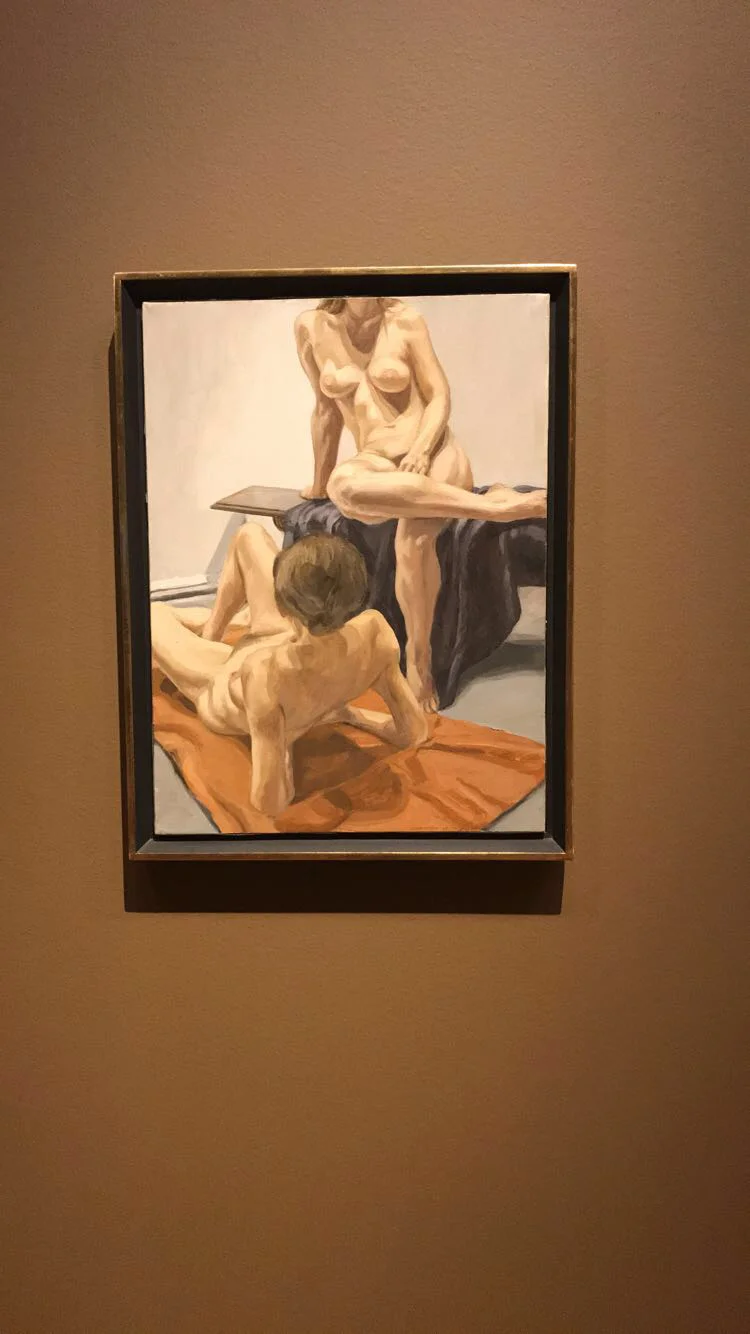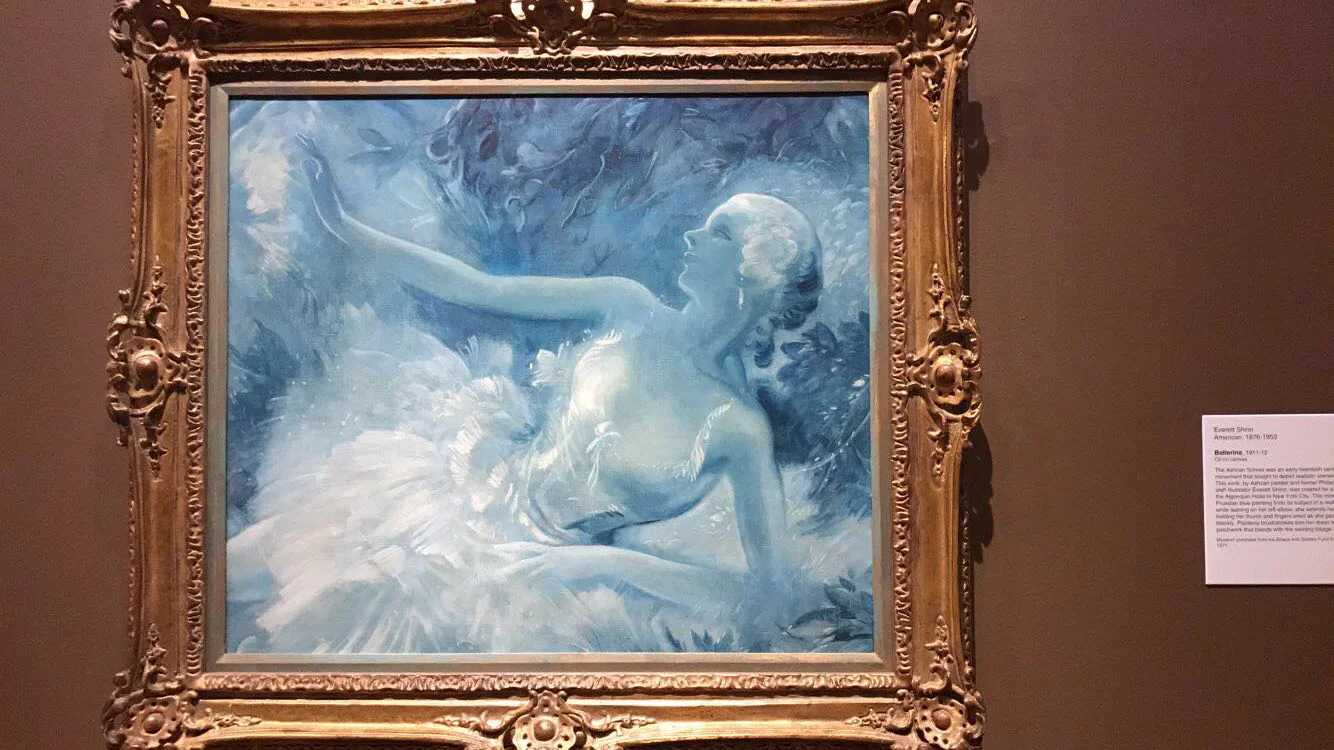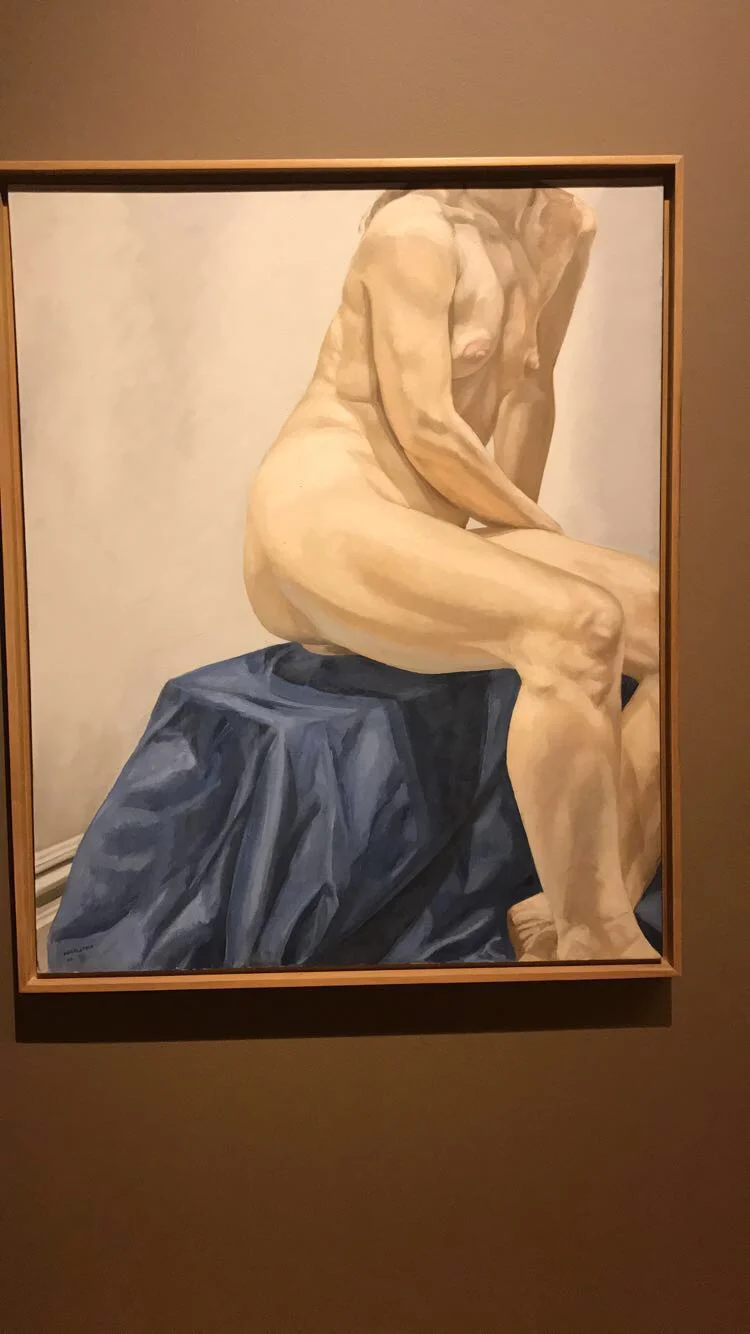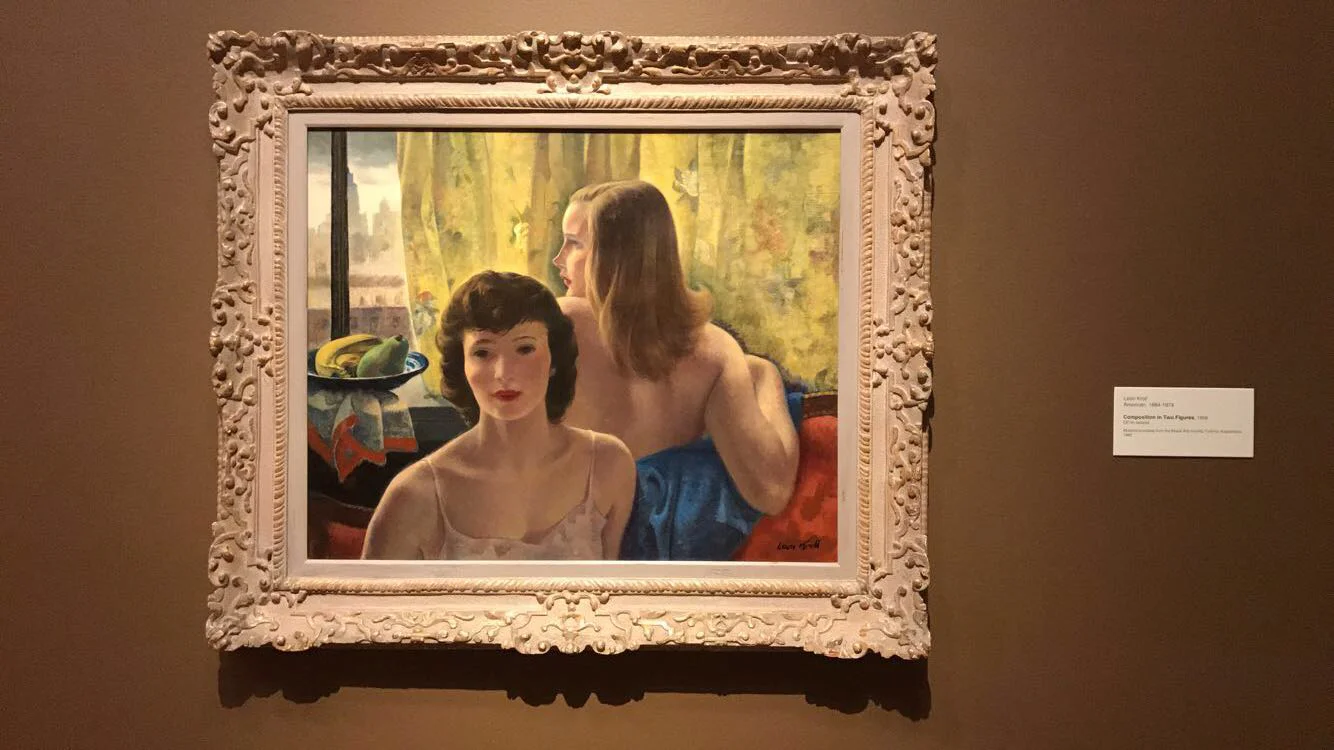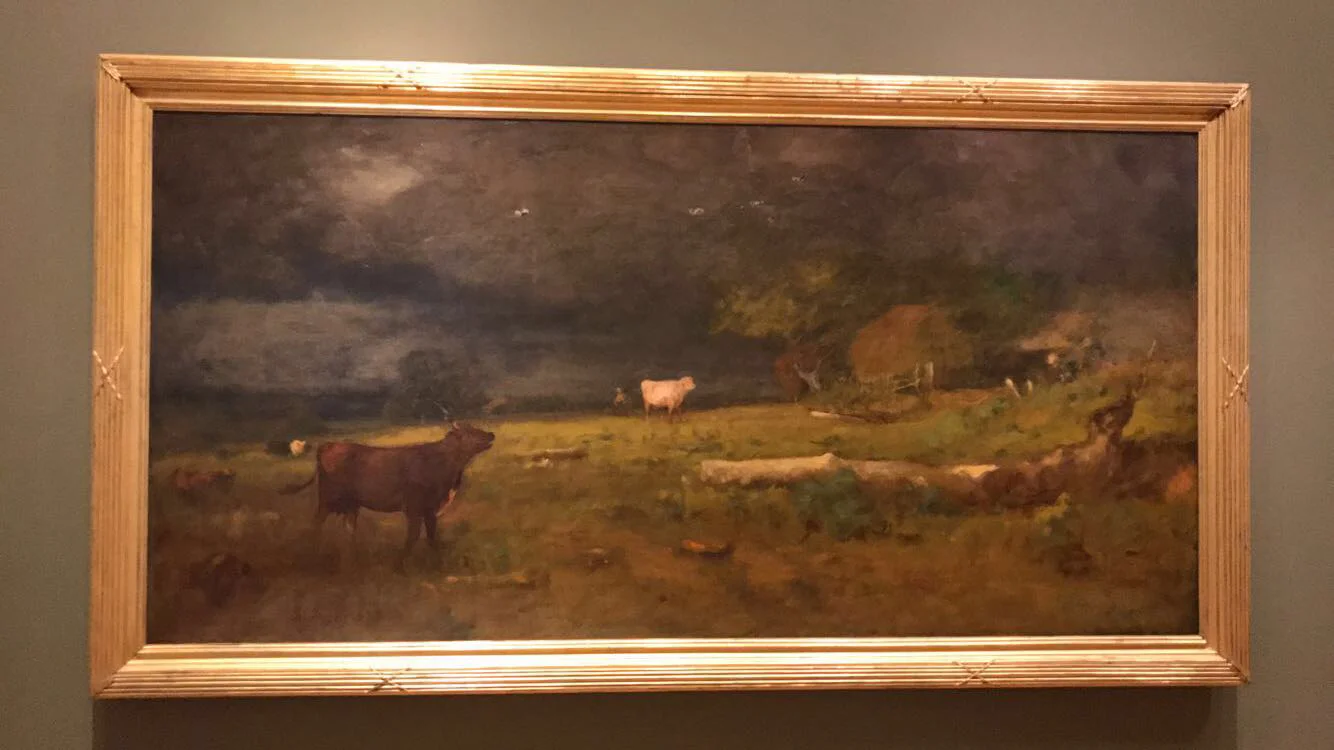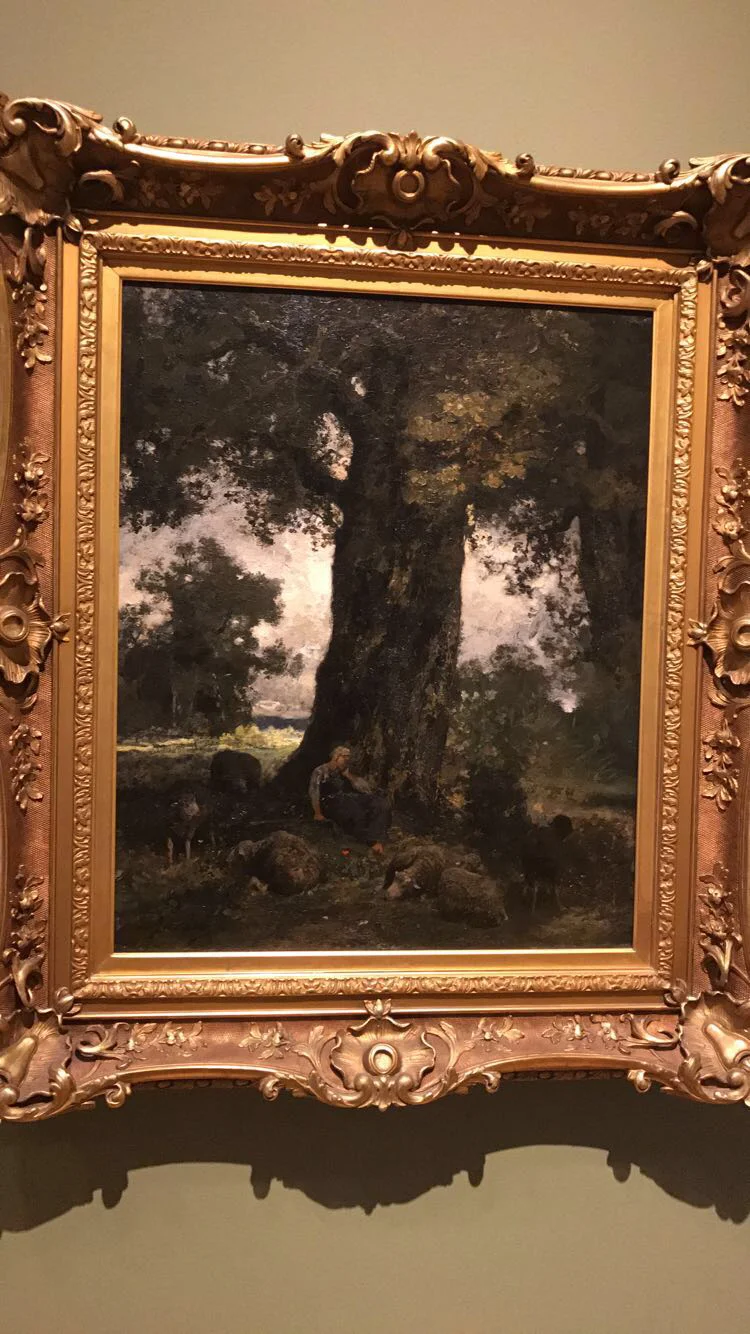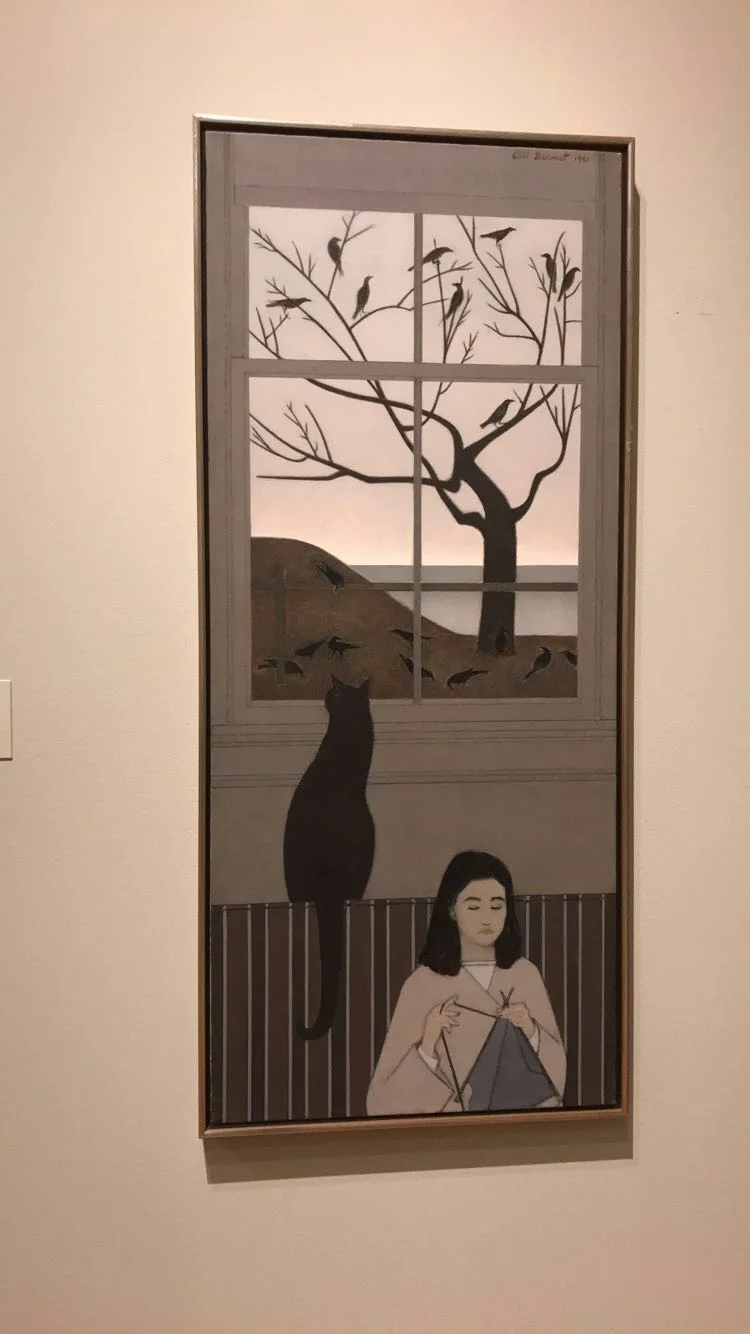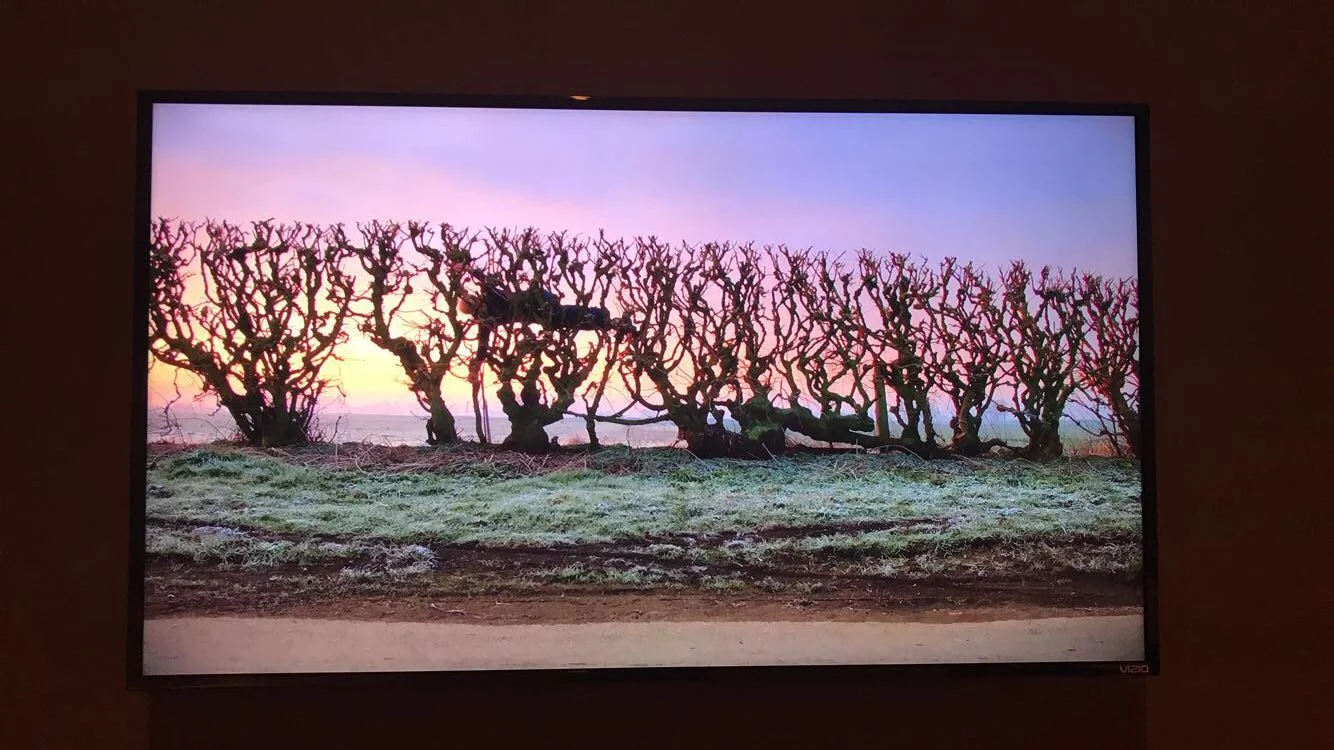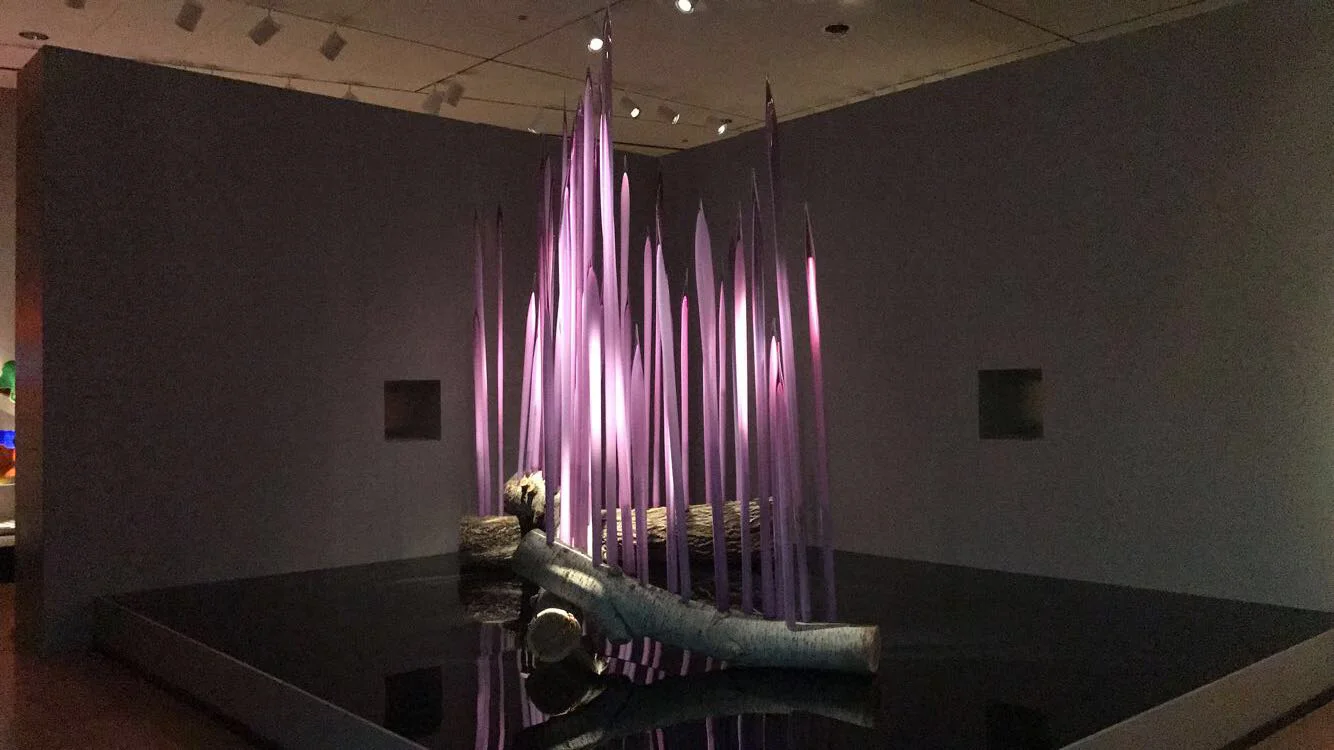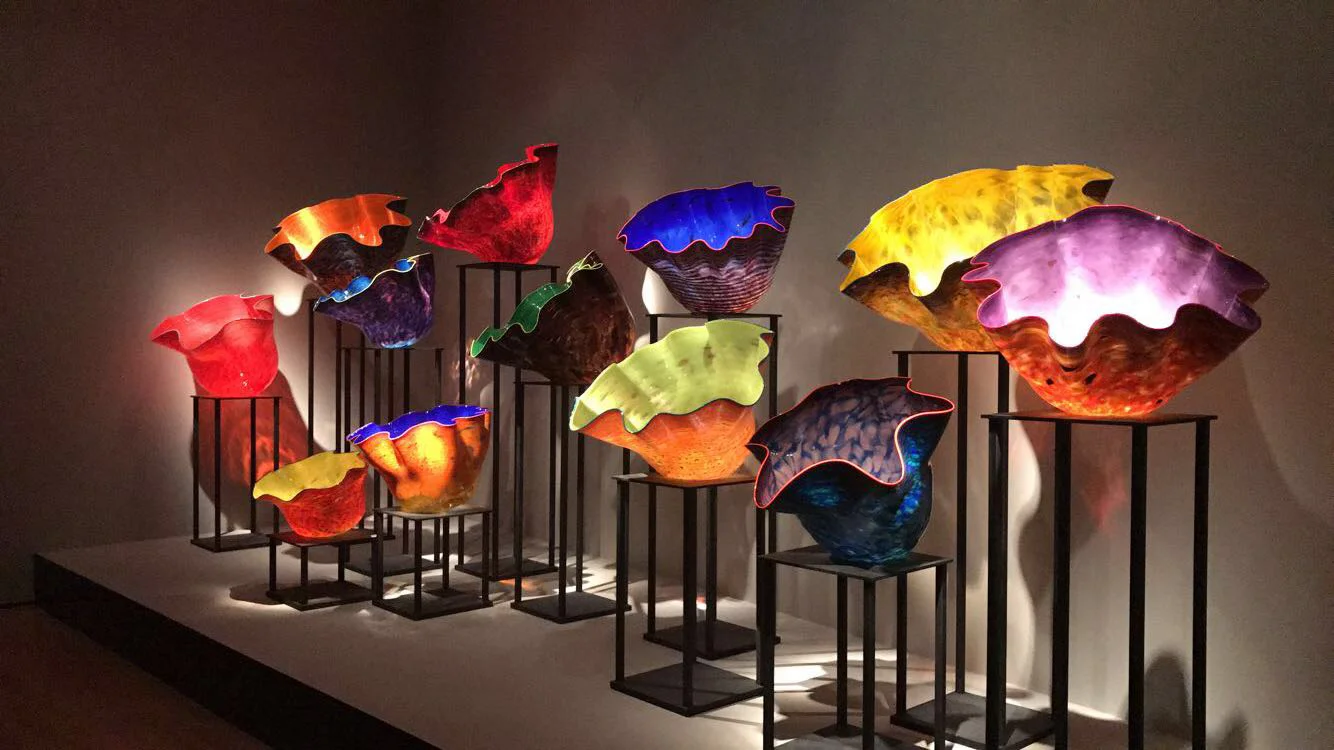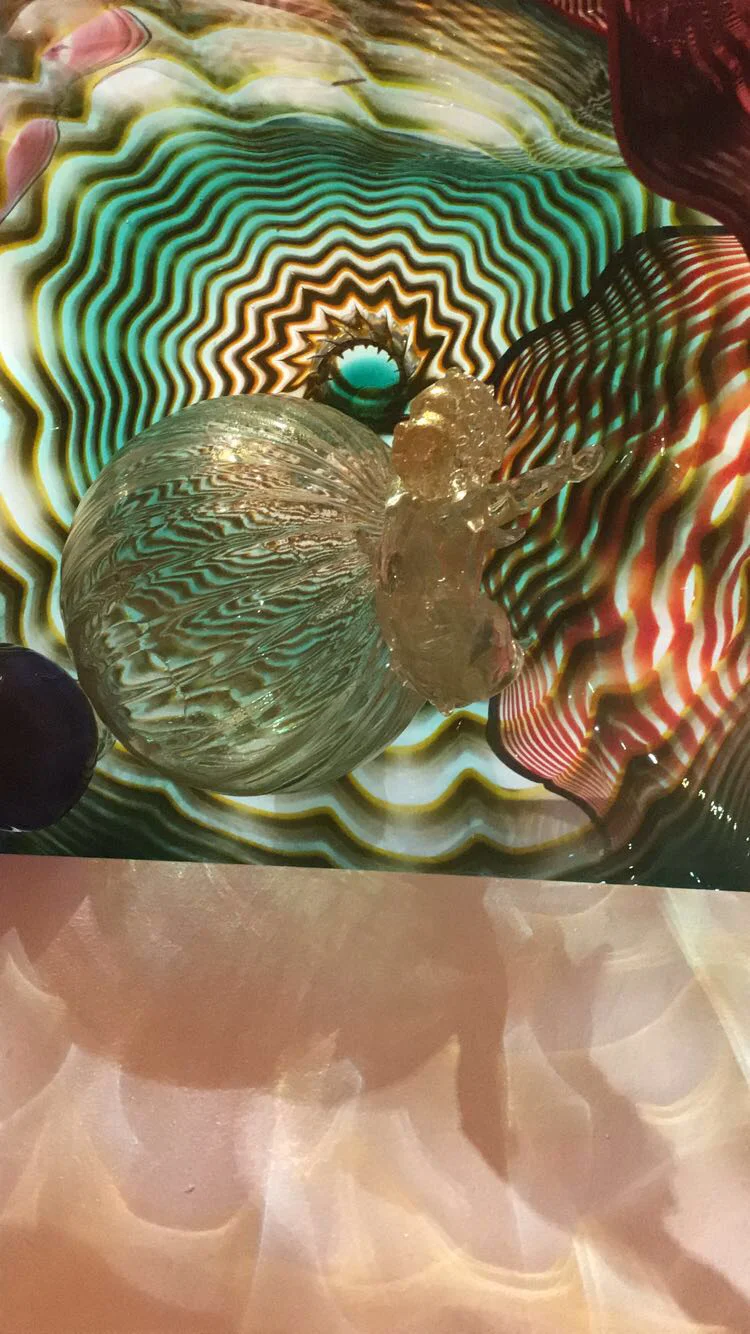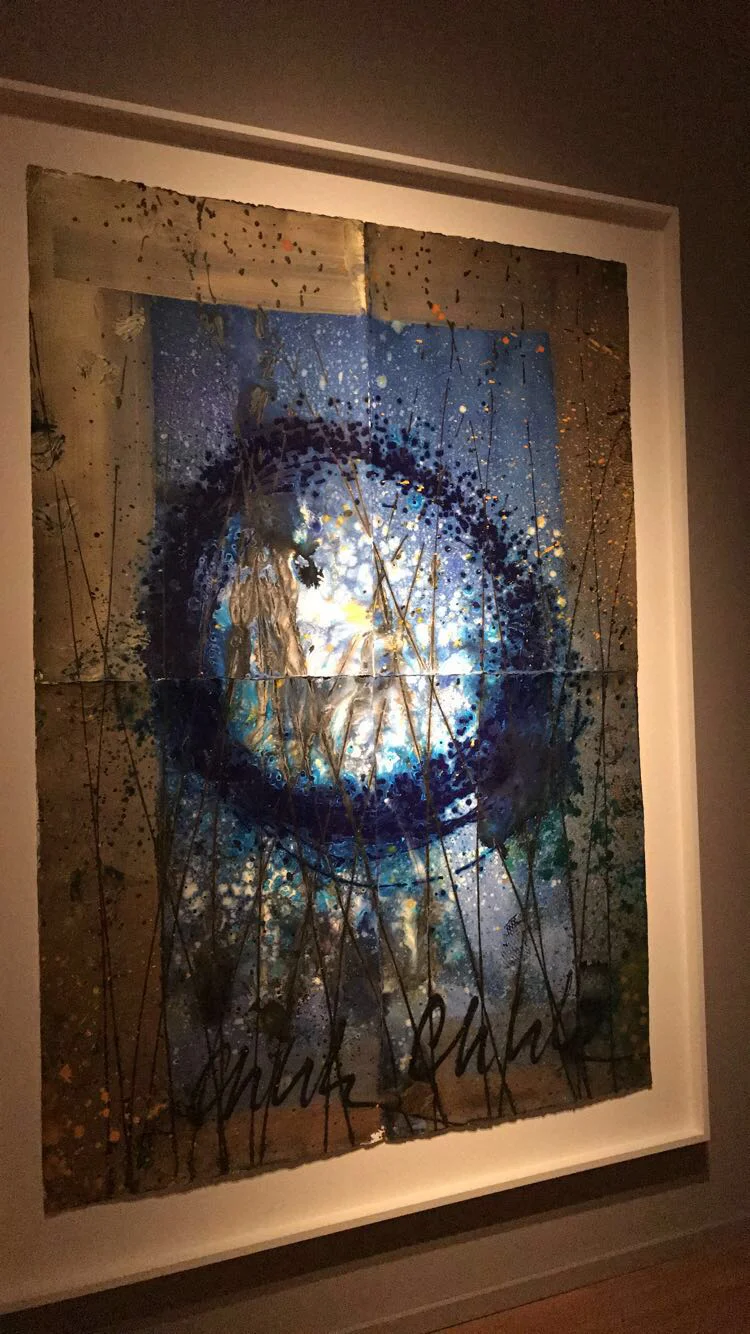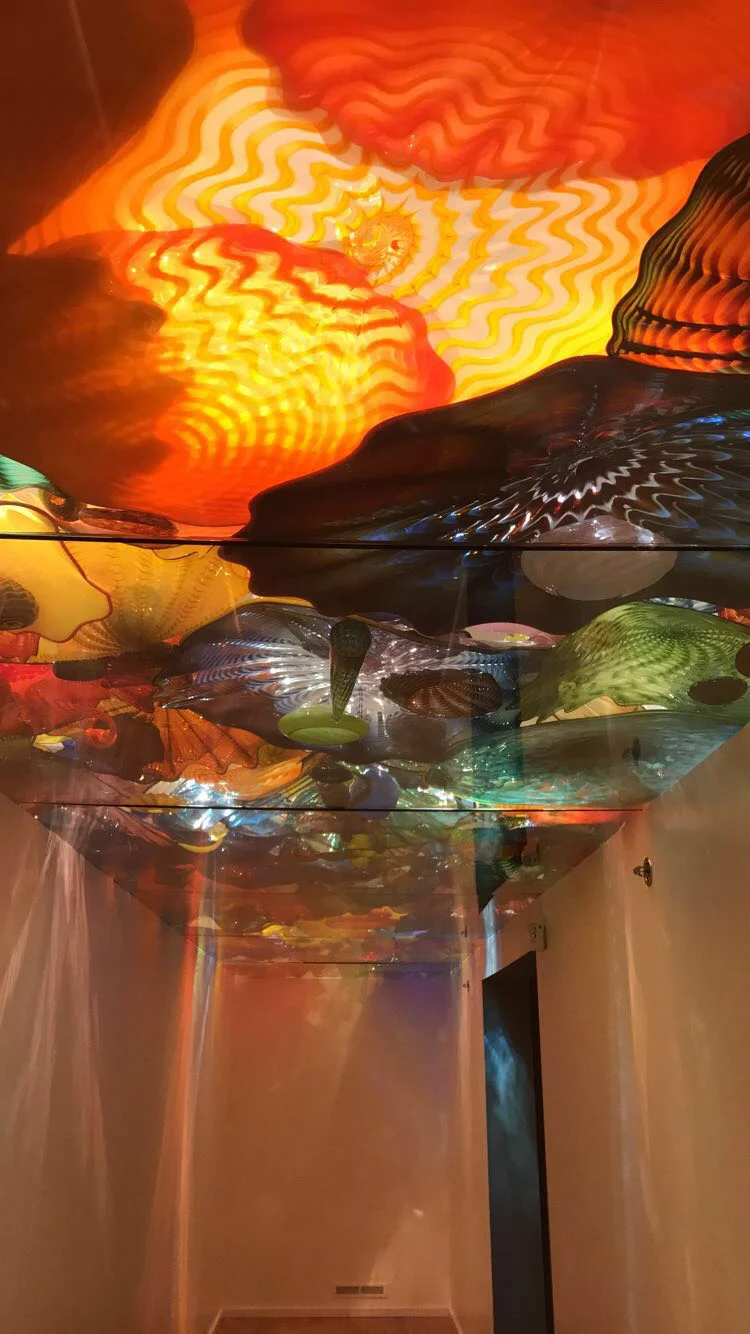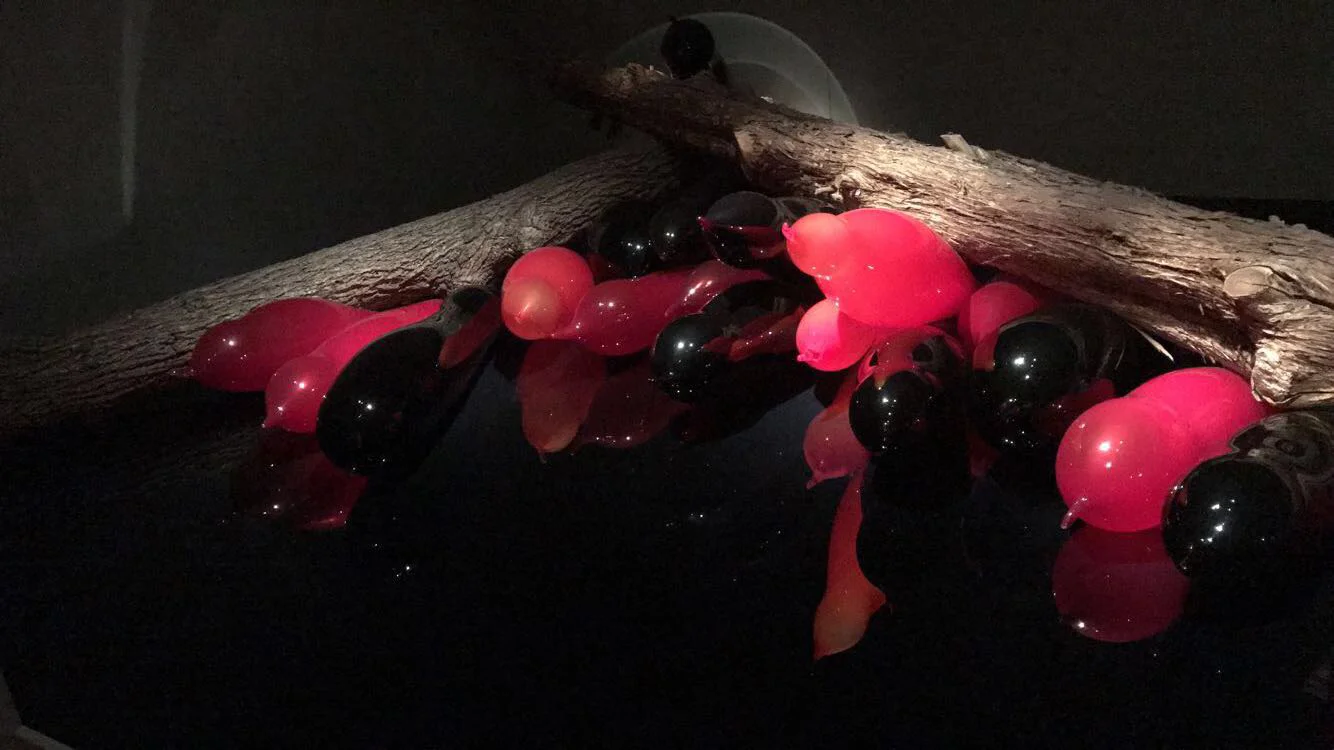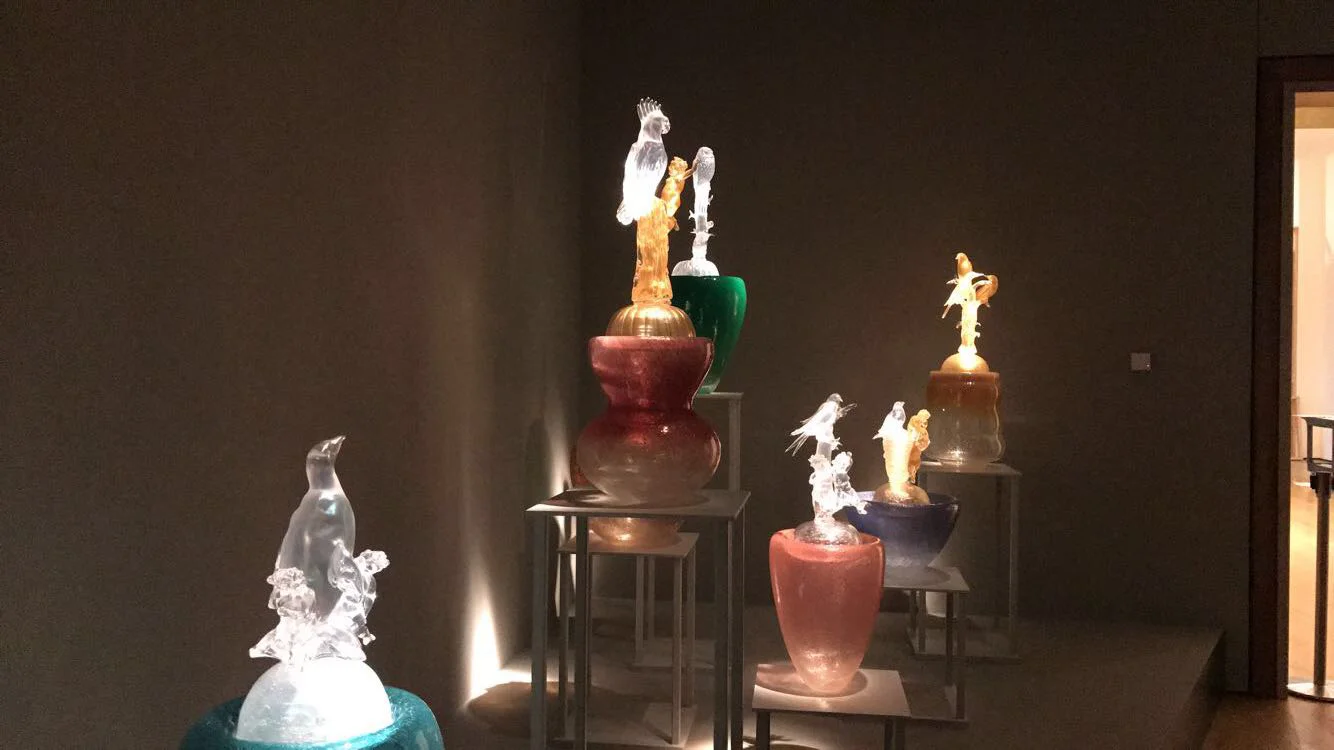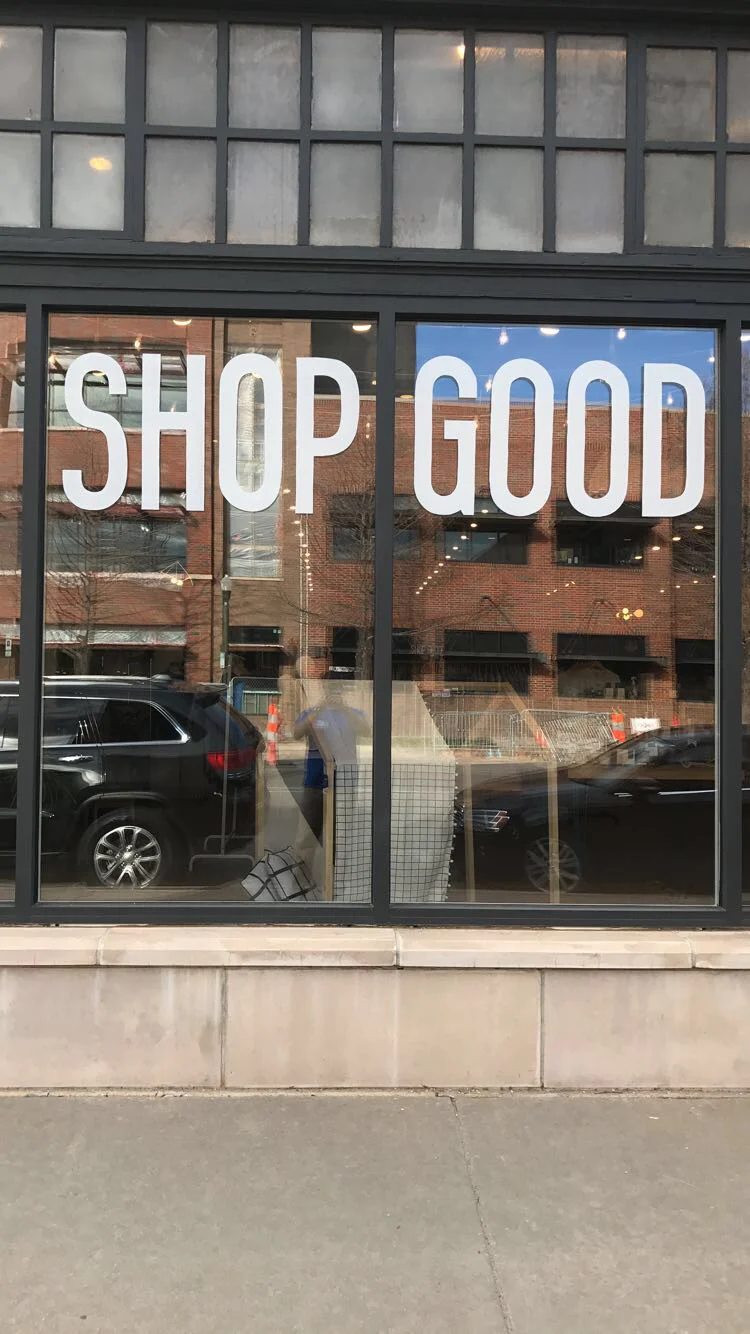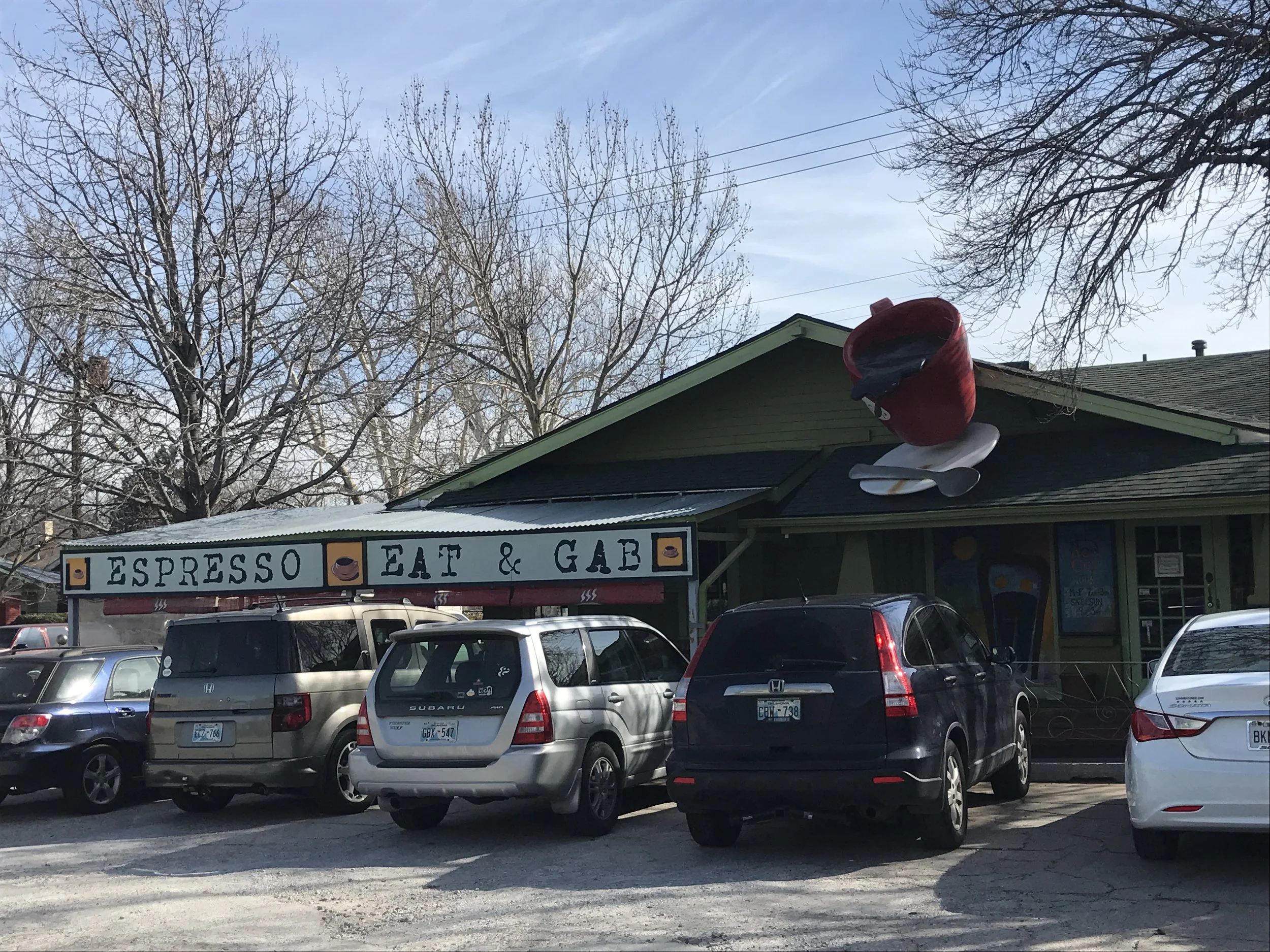OK Day 4- Cowboys, Coffee, and Colorful Glass
Today started with a trip to a really funky coffee shop called The Red Cup. The place was decorated all over with eccentric art so I knew I was going to like it there. The most impressive piece of art was a hanging coffee cup spilling out yarn coffee and cream into a mug on the table, with just a little bit splashing over the edge. It was a beautifully surreal thing to see right when you walked in.
The cafe didn't just have great art, but the food and coffee were also pretty exceptional. I got my classic iced coffee with a bagel and hummus. The coffee and bagel were both very good, but the hummus was the surprise star of the show taking the whole breakfast up a notch with a nice hint of red pepper and garlic.
Full of caffeine and hummus, my next stop was the National Cowboy and Western Heritage Museum. People kept recommending this museum to me, but I'll be honest from the name cowboy museum I was sort of expecting it to be touristy and kind of kitschy, like they would just have a small room filled with cowboy costumes. I was not prepared for the full impressive size and scope of the museum, a massive building trying to capture every aspect of the American west past and present through art, Native American artifacts, cowboy ephemera, and even a full size recreation of an old west town. It was an incredible place. The first sign that I was in for something bigger and better than I had been expecting was a massive beautiful bronze statue of a cowboy shielding his eyes from the sun called Welcome Sundown by Hollis Wiliford. It's quite a first impression.
The statue greeting visitors outside was really just a taste of things to come as the statue greeting visitors when they first walk in is truly awe-inspiring. The statue is the original 18 foot tall plaster sculpture of James Earle Fraser's iconic End of the Trail, a haunting image of Native American warrior slumped and riding toward death that pops up in various forms in other museums and throughout pop culture but rarely in this monumental size. The sculpture's journey to this spot is an interesting one too, as it was originally intended to be cast in Bronze but due to WWI there wasn't enough material available and it was displayed as is at the Panama-Pacific Expo. The sculpture proved to be immensely popular, but after the expo all the plaster sculptures were literally thrown into a mud pit into California. It was saved by concerned Californians and places in a park in Visalia. While it was better than a mud pit, years of being to exposed to the elements caused the statue to deteriorate, which, while fitting for the end of the trail metaphor, was a shame to the art world and the Cowboy museum purchased it from the park and fully restored it to its current glory. Bronze casts were eventually made once supplies were replenished, but there was something really mesmerizing about the stark plaster. I definitely let out an audible "wow" when I saw it.
The first gallery in the museum was a series of beautiful high resolution photographs of the different people who helped make the American West. Some of the figures were pretty big names like Teddy Roosevelt, the painter Thomas Moran, and noted stud/mustache aficionado Tom Selleck. The majority of the photos were just of the everyday people who helped make the west. I really loved that they chose a more inclusive and diverse portrayal of the West, celebrating all the men and women, white, black, Asian, hispanic, and Native American who helped shape the Western half of the country. It wasn't all Clint Eastwood and John Wayne.
Of course my favorite pictures were of the children who helped settle the west, because there's just something adorable about little kids dressed up in full cowboy regalia.
At the end of the hallway of photographs was another incredible sculpture called Canyon Princess by Gerald Balciar. The piece beautifully fully and stylistically captures the grace and danger of a female cougar ready to pounce.
The next gallery was a special changing exhibit intended to highlight different contemporary Western artists. The artist on display while I was there was named Theodore Waddell, whose works were a really incredible and imaginative blend of abstract expressionism and more traditional western landscapes. A lot of his works focused on the relationship between different animals and their landscapes, His animals ranged from really beautifully detailed to almost totally abstracted and he frequently used a very textural style of painting where he'd use thick globs of paint and then scrape the globs into the images he wanted. This gave everything a greater sense of motion and rawness, because you could see the real physical marks of the artist's gestures.
My favorite pieces were a massive three paneled painting of a bunch of sheep by some mountains for the sheer scope of it, and a painting of a horse drinking water because I thought it was really oddly captivating to see how Waddell adapted his abstract style in a way that made the horse and its reflection both distinct and sort of fluid.
The next gallery was intended as both a sort of introductory gallery as well as a showcase for the museum's more recent acquisitions, and it gave an idea of the breath of items that would be shown off in the museum. These ranged from pieces of art items associated with the west to more diverse items associated with people associated with the west. I liked these last ones the best (even if the multiple layers of association are a bit of a mouthful) because these were the most unpredictable and unexpected like Japanese wooden folding screens and Buddha statues that had belonged to John Wayne and cowboy boots with presidential seals that had been made for Ronald Reagan.
My favorite piece of this eclectic collection was an exceptionally tiny basket made by Navajo weavers. You can see both the teeny tiny basket, and a zoomed in picture of it that provides both scale so you know just how small this basket is and close up look at just how beautifully made the thing is. The kind of skill and dexterity to make something that small yet so detailed really blew me away. I guess it is true what they say that sometimes great things come in tiny baskets.
The next gallery was another showcase of a featured artist named Jerome Tiger. Tiger had a brief, tragic, and meteoric career. He began gaining fame as a teenager for his raw, virtuosic talent for capturing people and places after just a moment, and he soon developed a unique and influential style that combined his traditional Muscogee tribal art with modern Western art styles. He rapidly produced a number of paintings, drawings, and watercolors between 1962 and 1967, winning numerous awards. Unfortunately, he struggled with alcoholism during this time and died at the age of 26, due to an accident that occurred while drunkenly handling a handgun. Despite this short career, the works he produced were undeniably impressive, poignantly and humorously capturing fully realized Native characters both contemporary and historic usually over beautifully minimalist backdrops. The depths of personality he was able to convey through still images was really astounding.
Given his ability to really capture people, my favorite pieces were unsurprisingly mostly character studies: an old man staring longingly at his home in the distance, families bracing themselves while traversing the Trail of Tears, a drunk having just fallen off his horse into a puddle, a man just sittin' by himself eating beans. The last one in particular I have no idea what it is about that guy eating beans that I find so engrossing, but I am all in on that one being a genius work of art even if I can't fully explain why.
The next gallery started breaking into the museum's very diverse permanent collection of art starting with a really cool exhibit dedication to works of illustration, generally from pulp cowboy stories from the 40s and 50s. The thing that really blew me away about these was not just how fun and expressive they were in their pulpy way, but also how many incredible artists dabbled in commercial cowboy art to help pay the bills. There were some pretty big names throwing down Western scenes, like N.C. Wyeth, Charles Russell, Frederic Remington, William Leigh, and Frank Tenney Johnson. I got really excited picturing my dad reading the stories these illustration were from as a kid, because I knew that he loved Western stories growing up.
My favorites from this collection were an impressionistic painting of a cowboy and his horse in a rainstorm by James Reynolds; a highly dramatic illustration by Wilhelm Heinrich Detlev Körner of a cowgirl buying time for her cowman by fending off a gunslinger; a laidback scene by Frank Schoonover of two cowboys goofing off by blowing smoke rings and catching them on the barrel of their rifles; and an incredible Eastern scene by Frederic Remington of an Egyptian warrior riding on horseback into battle.
The next gallery took the art in a slightly different direction focusing on early cartoon work by a Western artist named Tom Ryan. While Ryan became acclaimed for photorealistic cowboy paintings, he had much humbler beginnings always doodling cartoons in notebooks and drawing little comic strips to amuse his buddies while he was in the Coast Guard. As a lifelong comic and cartoon nerd, I really liked the way this gallery suggested the way "high" and "low" art can bleed into and mutually influence one another. I also got a particular kick of the cheekiness Ryan had signing one of his comic strips as by Rembrandt van Rijn circa 1640.
After the brief respite in the funny pages, the next galleries continued with more classic Western art. Unfortunately a couple of these galleries had no photo policies, including a very cool collection of beautifully made Winchester rifles and a gallery showcasing the work of CM Russell and the students he inspired. While I couldn't take any photos of the Russell stuff, I did snag a photo of a very nice doodle of a dinosaur that he included with a letter to one of his proteges. Or at least I assume he sent an attached letter, but I almost like it more if he just mailed this with no context.
The last focused exclusively on art was a really impressive collection of landscape paintings by the likes of Albert Bierstadt, Maynard Dixon, and Thomas Moran to just name a few. For a frontier known for being vast and mostly flat, it's amazing how many beautiful vistas these artists were able to find and capture.
The rest of the galleries started moving away from art and more into culture of the West, starting with the first cultures to be there. I really liked that the gallery about Native American history and culture started with a big map sketching out roughly what tribes lived where. It was nice to be able to better place where the tribes I'd been reading about actually were in the world and where they fit in relative to other tribes.
I was really happy to see the care and depth that went into the curation of the Native American gallery and that Indians weren't just portrayed as the enemy of the cowboys. They had a pretty expansive collection of art and artifacts from southwestern tribes, They had everything from children's toys to incredible turquoise jewelry to musical instruments to decorative saddles and masks for horses. My favorite items were the more contemporary woven arts because they hit that sweet spot of being historically interesting as a way of preserving traditions while also being really aesthetically wonderful.
Up next was that full scale recreation of an Old West town called Prosperity Junction. This was probably the most tourist-y and kitschy part of the museum, but it was just so damn impressive that they had an entire town inside the museum, complete with old timey saloon, jail, photographers, church, and blacksmith shop, that I loved every minute of it. They sort of blended in authentic artifacts with reconstructions too which made every new room a real treat.
I think it goes without saying though that my favorite part of the whole town was a buffalo wearing a cowboy hat in the saloon. What's better than that!
The next gallery gave a historic overview of cowboys with sculptures and real old west artifacts. I really liked the way they broke down the different ways different groups contributed to ranching and wrangling culture. The old west really was a mess of contradictions emblematic of American history. In a lot of ways it was all the negative, violent, racist, and misogynist stereotypes, but in a lot of other ways it could also be a really progressive meritocracy. In a lot of towns just surviving in the old west was so difficult that if someone could provide a useful skill you tended to care a lot less about their race or gender so a lot of skilled women and people of color moved out west because, while it was a big gamble, when it payed off they actually could potentially have more agency, independence, and respect than in a lot of Northern cities at the time. Probably because of my own Northeastern biases, I had never really heard or thought about this more positive aspect of the wild west, but it was cool to see historic photos of Black, Hispanic, and Native American cowboys and cowgirls riding alongside everyone else. The thing I was absolutely most surprised to learn though was that Old West culture extended as far west as Hawaii. The paniolos were a group of Mexican and American cowboys who were taken to the Hawaiian islands in the 1830s to start raising cattle and horses, and they had some really cool clothes and artifacts from the Paniolos including an authentic cowboy ukulele.
And of course no cowboy exhibit could really call itself complete without an extensive and impressive collection of ten gallon cowboy hats. Luckily on this front the museum did not disappoint.
The next gallery featured props, clothes, and memorabilia from the history of Western films. They had stuff from Clint Eastwood, Ronald Reagan, Robert Redford, Slim Pickens Will Rogers, and many others. I've always had a soft spot for the streamlined storytelling and beautiful backdrops of old westerns, and it was always a fun thing I shared with my dad. The item I think I got the most excited about was Jimmy Stewart's prop gun from the Man Who Shot Liberty Valance, one of the greatest Westerns of all times and the movie where the famous quote "When the legend becomes fact, print the legend" came from.
Unsurprisingly the biggest collection of artifacts came from the biggest name in the West, John Wayne. They had a lot of his prop guns including the ones from his last movie (a fan favorite in the Palana household) The Shootist, his collection of Hopi Indian Kachina Dolls, outfits from movies, and a knife that had been given to him by Italian fashion designer Guccio Gucci.
The next gallery also focused on a continuing legacy of the Old West in popular culture: The Rodeo. They had a full recreation rodeo stables that was fun to walk around in, though I feel like it would be a whole lot more nerve wracking knowing that angry horses and bulls were behind those wooden doors. My favorite part was a collection of Rodeo clown figurines, because there's something so wildly absurd (but oddly noble) about a job where you have to put on full face makeup to potentially be gored by a bull.
The next gallery focused on the military history of the old west from the Indian Wars to the World Wars. While all the history and memorabilia was very interesting, this gallery lost me a little bit, because it struck me the wrong way to have a gallery outright celebrating the people who killed the Native Americans as war heroes right down the hall from a gallery celebrating their culture and history. I get that it's a real part of our history and it would be weird for the museum to not talk about it, but I think tonally they missed the mark here where elsewhere they had been doing really well. But as I said earlier the old west was a real mess of contradictions so sticking to a consistent tone would be a near impossible task for any museum.
After this exhibit, it was time for a breath of fresh air with the museum's sculpture garden out back, because you know how cowboys love a sculpture garden. The grounds were really beautiful and filled with water fixtures and sculptures of Western wildlife, making for a pretty nice place to take a stroll on a beautiful Oklahoma morning.
The last gallery inside did not allow photography, but it was a collection of this year's winners and runners up from the Prixe de West competition for contemporary western art. There were some really beautiful sculptures and paintings in there, letting you know the genre was still flourishing. The only ones I got pictures of were some former winners outside, a big Abe Lincoln and a noble Native American woman.
Because I wasn't expecting the museum to be so big, it was well past lunchtime by the time I got out and I was desperately hungry. I went to a highly recommended restaurant called Cheever's Cafe which continued my unintentional trend of getting lunch in really affordable places with very upscale aesthetics. I'm not sure if the server's felt bad for an underdressed guy eating by himself at a weird hour or if they were just genuinely incredibly nice, but the service their was some of the friendliest I've ever had and the food did not disappoint. Right from the get go, the complimentary rolls were so fresh and melt in your mouth good. I also don't usually butter my rolls, because I grew up on a very bland diet and I'm not used to it (I tease you for it, Mom, but I know you're gonna say it's healthier and you're right so also thank you) but the butter it came with had rose salt in it and it was too fancy not to try, which proved to be a very delicious step outside my comfort zone. For my main course, I got what was listed as "a true Oklahoma staple", the chicken fried steak with mashed potatoes. I had heard the term chicken fried steak before and while I enjoy every individual component of the name, I wasn't actually sure what they meant all together. For the uninitiated, it's all steak, but it's fried golden and crispy like a chicken. It was spectacular, perfectly fried and with out of this world cream gravy and garlic mashed potatoes to just put everything up to new heights of tastiness. I can see why Oklahomans would want to make that a staple.
After lunch, I replenished my caffeine levels by going to a hip little cafe called Coffee Slingers. They slang some mighty fine coffee, and from there I set out for the Oklahoma City Museum of Art where as soon as I walked in I was greeted by a nearly three story glass sculpture by Dale Chihuly. Not a bad first impression.
The giant sculpture was to commemorate their special exhibit they were having on Chihuly's work. The exhibit began on the second floor but the lobby had some cool smaller glass baskets to wet you artistic whistle. (Sidebar: why is that a phrase? Why do people want wet whistles?)
The special exhibit on the first floor was called the New Art and celebrated the 50th anniversary of the Oklahoma Art Center purchasing the 154-piece permanent collection of the Washington Gallery of Modern Art (WGMA), the first art museum in the nation’s capital dedicated to the collection of contemporary art. It was pretty awesome to see essentially the history of post-WWII art movements all collected in one gallery ranging from last remnants of Dada and surrealism to abstract expressionism up to pop art and optic printmaking popular of the 60s.
My favorite pieces were: pop art prints from Claes Oldenburg and George Segal of a flying pizza and a naked woman brushing her hair respectively; some abstract pieces that I'm not really sure why I liked more than any other abstract pieces; and more surrealist pieces by Elmer Bischoff, Jack Stuck, Marcel Duchamp, and Man Ray because that shit's just my jam.
After the special exhibit, it was on to the museum's permanent collection which started off by highlighting Oklahoma artists from the earliest days of the land rush up to more contemporary pieces.
While all the more straightforward portraits were very impressive my two favorites from this gallery were of a weirder variety. I really like a piece called Bedfellows by Jonathan Hils which was a large suspended sculpture of a mustang made out of aluminum and steel in a very intentionally lacey design to blend the hyper-masculine imagery with more feminine lingerie imagery. I'll be honest I didn't pick up on the probing of gender identity but I just was super impressed to see a car hanging from the ceiling. The other piece I liked more for how it was made than what it ultimately looked like, and it was called Narrows by Eugene Bevinger. Bevinger achieved really unique textures in this piece by applying acryclic paint directly to glass and then placing a canvas over the glass and removing it. What you're seeing is the canvas but somehow it still has a lot of the reflective appearance of the glass and it's really trippy to look at.
The rest of the permanent collection was arranged by themes as opposed to time frames or place so you'd get a cool mix of contemporary and modernist pieces with more traditional pieces side by side. The first gallery was all about different approaches to landscapes. The majority of the landscapes were rural scenes but a few cityscapes crept in there, and they ran the gamut from impressionistic European pieces to traditional Western scenes to more abstract stuff.
My favorite landscapes were a beautifully lush landscape by Gustave Courbet, an incredibly photo-realistic painting of a street in Venice by William Merritt Chase, and an incredible abstract landscape by Paul Jenkins made by pouring paint in large swaths. How Jenkins was able to create such a detailed landscape through such a haphazard method is beyond me.
The next section was on still lifes which I normally find sort of boring, but a few of the pieces took really interesting approaches. One painting by Janet Fish focused on trying to capture the distortions of light from using all glass pieces in an outdoor setting creating abstraction from accurate representation in a really cool way, another artist named Lowell Nesbitt did a hyper stylized close up of a tulip, and an artist named Donn Moulton decided to forgo traditional painting and make a giant three dimensional fiberglass apple. The museum staff definitely spent a good amount of time asking kids not to touch the apple.
The next gallery was all about seascapes. Maybe because it's been so long since I last saw the coast, but these ones really got to me.
I loved that in the middle of all the more traditional paintings was a big obelisk of an abstract sculpture by Anne Truitt called The Sea, The Sea which was a beautiful illustration of the expression still waters run deep.
And last there was a section on portraits which divided into all the usual categories. You had your group scenes:
Nudes:
Portraits with nature:
And the classic video self-portrait of yourself slowly crawling through a prickly hedge. You know just the usual stuff
Last but certainly not least came the Chihuly exhibit. I've seen his pieces pop up literally all over the country, and I still never get sick of them. There's something just so magical about what he and his workshop is able to do with glass. The colors and shapes he uses are so alien and natural at the same time and I get sucked in each time I see them. I also liked that the curators of the exhibit chose to use dark walls and low lighting to really let the glass pop.
My favorites here were the two series I'd never seen before with more intentionally representational designs then I'd seen Chihuly do. The piece on the left entitled Seal Pups was still pretty abstract more suggesting through simple angles and curves the idea of young seals, but the series on the right of all fully realized glass bird sculptures was incredibly detailed and realistic in a way I almost never see in his work. It was really astounding.
After all that arting around, it was about time for the open mic. Or so I thought, as it turns out I showed up at JJ's Alley, a fun not quite hipster-y not quite dive bar about an hour earlier than I needed to because I thought the posted sign-up time was the actual show time. To compensate, I promptly took a nap in my car and then went back to the bar to sample some of Oklahoma's finest beers. The bar had a really good selection and I tried a very good full bodied porter from COOP Ale works and I went back to a beer I had really liked in Tulsa called the Dead Armadillo Amber. I really liked that beer as a malty easy drinkin' beer, but I never got used to asking for a dead armadillo without sounding like a creep.
Once the mic did start getting underway it was a lot of a fun. The set up of the room was not super conducive to comedy as it was much longer than it was wide so the people in the back couldn't really hear the comics great and vice versa. I actually saw a lot of comics who thought they weren't doing great, even though they were getting laughs in the back, but if you can't hear the laughs it sure feels like you're not getting any on stage. That being said there was still a really good energy in the room because all the local comics knew going in what the room was shaped like so they came ready to have a good time and support one another even if they knew they wouldn't hear half the laughs. There was also a little smoker's patio out back at the end of the long room, where a lot of the comics would wait and smoke and shoot the shit, and I actually ended up spending a lot of time out there even though I don't smoke just because I kept getting into really great conversations. I got the feeling this was the mic in the week where half the fun came from just hanging out.
My favorite comic of the night was a guy named James Curtis who had some really good dark and absurdist one liners my favorite of which was "I ran into my high school bully the other day. He used to say to me "Hey four eyes!". Now he's a very aggressive optometrist. " I find with a lot of one liners I can see the punchline coming, but that's part of the fun of the construction, but with James each one was a total hilarious surprise.
Other Highlights:
A comic named Madison Allen handling some hecklers in the front row who started taking a phone call in the middle of his set by saying one of them looked like if Kathy Bates never got famous. He then immediately said that he felt that was too mean which was sweet, but it was an impressive simile to nail off the top of his head
Travis Orcutt: They say girls can tell how good you are in bed by how you dance. That's no good for me though, I've got two left dicks.
My own set actually went pretty decent from the laughs I could hear. I was mainly happy that I decided I wanted to try out a new joke I hadn't done before and the first part landed pretty well even if it could use some tightening in the wording. I always like to have a little goal for myself each time I go up that way I always feel like I'm making little baby steps of progress even I don't nail the entire set perfectly. I'm always hyper-concerned with growing complacent and lazy in my own writing and performing, which is weird to worry about before you have any actual success, but hopefully it makes me a little better at comedy each performance. I guess time will tell!
Favorite Random Sightings: A bakery called Whoops! Unmistakably delicious; a young kid asking his brother at the cowboy museum "What's your outlaw name?"; Signs everywhere saying in a grammatically confusing "Ken Boyer Bail Bonds is everywhere!"; Hair Rage Five
Regional Observations: Oklahoma has seperatate licenses for low point and high point beer, low point being anything less than <4% ABV, which is the strictest I've seen a state's alcohol laws get.
Albums Listened To: Popular Problems by Leonard Cohen; Porgy and Bess by Miles Davis (one of my favorite jazz albums)
People's Favorite Jokes:
Didn't get any today so here's one from the internet:
A violinist went to sleep. His dream was like this: An angel appeared from the skies and told him:"I have two news to tell you. One is good news and the other one is bad news . With which one should I start?" And the violinist replied: "With the good one". The angel continues: "After you die you will go to heaven. And in heaven you will be sitting besides Paganini, in the heaven´s Orchestra.". The violinist, stunned with this amazing news, asked about the bad news, and the angel replied: "The bad news is that your first rehearsal starts tomorrow".
Songs of the Day:
A sad and beautiful song about sex and religion? Classic Leonard
later miles, so you lose that Gil Evans orchestral magic but you do get some might funky bass from Marcus Miller

